Scott Jurek
Scot t represents everything an ultrarunner should be: kindness, selflessness, patience.
Heinz Mariacher
The history of one of the most important mountaineer and climber who contributed to the development of this sport.

Lise Billon
A mountaineer with an adventurous soul capable of completing extreme expeditions while having fun and enjoying climbing.
€7
VECTIV ™ Exploris 2

Stabilità e durata con tecnologia FUTURELIGHT™ traspirante e impermeabile integrata.

 BY ILARIA CHIAVACCI PHOTO LAYLA KERLEY
BY ILARIA CHIAVACCI PHOTO LAYLA KERLEY
give a new meaning to the term limit.
Let's
Most of the pages and stories of The Pill are dedicated to incredible adventures, great stories of exploration or unparalleled sporting feats. As a journalist it is extremely fascinating to deal with the tumultuous minds and souls of women and men who dedicate their lives to goals more or less judged to be achievable by the majority of the population. There are those who are moved by the need to do their part to defend what is left of this planet, there are those who care about social justice and those who simply have the need to explore in their DNA. There are places within us that it is only possible to access when we are faced with our limits, whether these are dictated by the
body, the mind, or external circumstances. I believe that a selfish component is inherent in everything we do and that the need to feel strong and capable of doing things out of the ordinary is something inherent in human beings, but there must be more. What drives us, as a species, to always go further? And above all, this fire that animates us and that has allowed us to evolve and build everything we have now, is also leading us towards the abyss? I've been wondering for a while if we've mythicized it too much, this story of always pushing yourself beyond your limits. Wouldn't it sometimes be better to sit down for a while in front of these limits, to look them in the face, take our measurements, and try to welcome the feeling of helples -
sness that they convey to us? Wouldn't that be just as important a lesson as the one imparted by a successful challenge? Some time ago I came across an article in The Vision in which the author reflects on the meaning of the word "progress" and how it is necessary to overcome the idea we attach to this term in order to have any chance of saving our skin. If pollution is running fast without brakes it is also because, as a species, we are unable to recognize our limits. Is it too expensive to produce something out of wool or metal? We just think about it for a second and here is a derivative of plastic ready to get around the obstacle. Since the 1990s, CO2 emissions have increased by 60 percent and it is clear to everyone that none of the goals set by the Paris

2
EDITO
RUN. LONGER.
Affronta ogni tipo di terreno, oltre il tempo, oltre la di stanza. Massima stabilità, ammortizzazione e ritorno di energia. Il trail è ai tuoi pie di . RUN. LONGER.




CONNESSO UN FIT PRECISO E MICRO-REGOLABILE AVVOLGENTE OFFRE UNA MAGGIORE VELOCITÀ E MIGLIORE STABILITÀ DELLE CAVIGLIE SICURO PENSATO PER OFFRIRE LE MIGLIORI PRESTAZIONI NELLE CONDIZIONI PIÙ DIFFICILI
climate agreements for 2025 will be respected. We must broaden our vision of progress and understand that technologies, knowledge, and the ability to overcome our limits from now on will have to serve us to decrease, and not to grow again. We've always been used to associating terms like productivity and performance with only positive meanings, but is that really the case? I honestly don't have an answer, but I think that, seeing where the world is going following a concept performance and progress, the answer is no. In his essay “Essere natura" anthropologist Andrea Staid argues that everything bad we have done to the planet we have done it because our anthropocentric vision causes us to consider nature as "other than us" while the
BY ILARIA CHIAVACCI PHOTO LAYLA KERLEY
natives of Hawaii, for example, they consider trees, rivers and mountains as subjects on a par with other men who populate the planet. But he also exposes another very interesting concept: the one of growth defectors, i.e. people like him, but also as architects who design green building, people who live on sailboats and navigate without ever using fossil fuels but knowing very well the winds, activists of Fridays For Future, in short, people who have chosen lives in open contrast to what is commonly considered desirable. In other words, always and constantly growing. In a nutshell, growth defectors have chosen not to exceed certain limits: they are giving this word a new meaning and we should all probably begin to look at this term with different eyes.
the 1990s, CO2 emissions have increased by 60 percent and
Paris
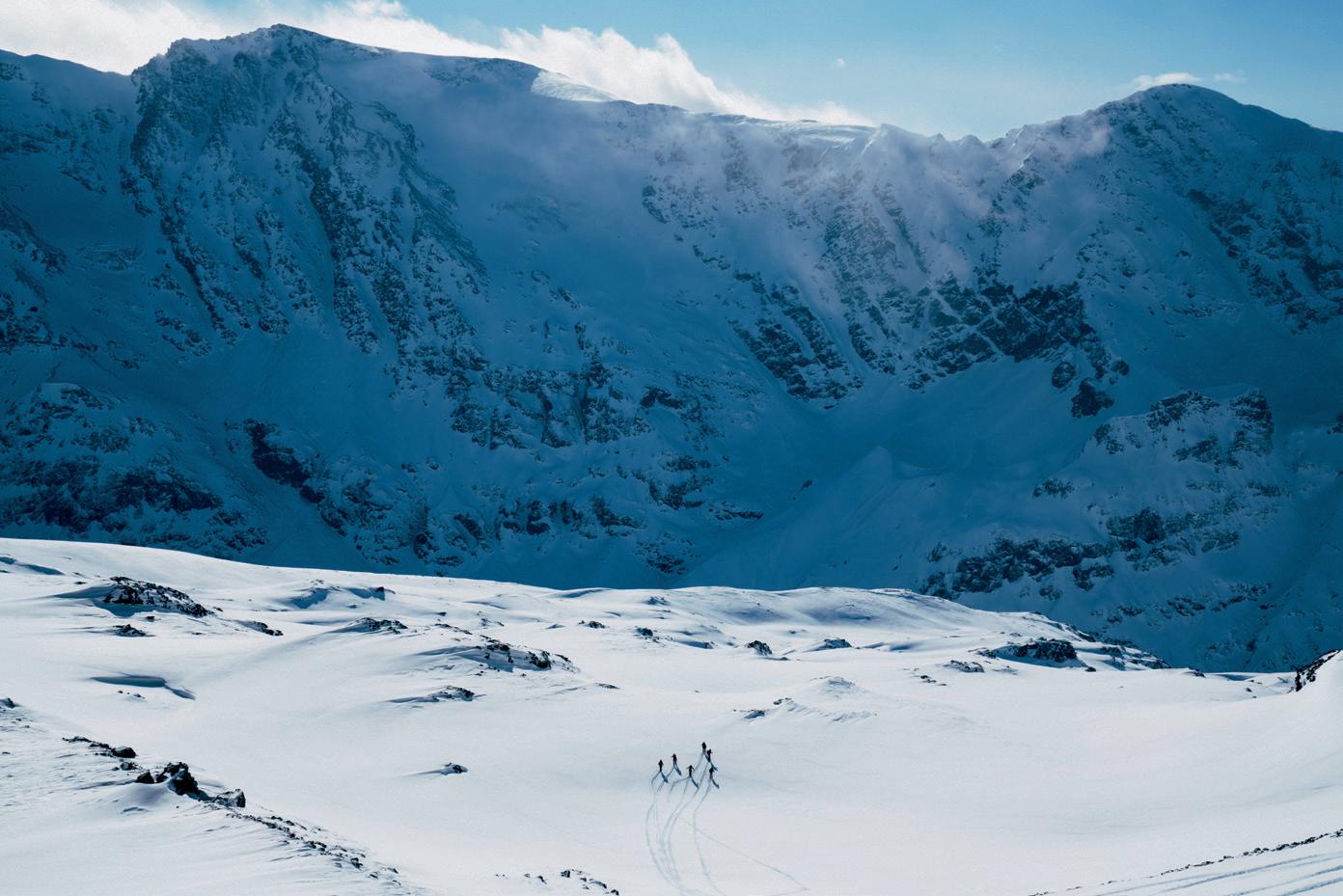
4
EDITO
Since
it is clear to everyone that none of the goals set by the
climate agreements for 2025 will be respected. We must broaden our vision of progress and understand that technologies, knowledge, and the ability to overcome our limits from now on will have to serve us to decrease, and not to grow again.


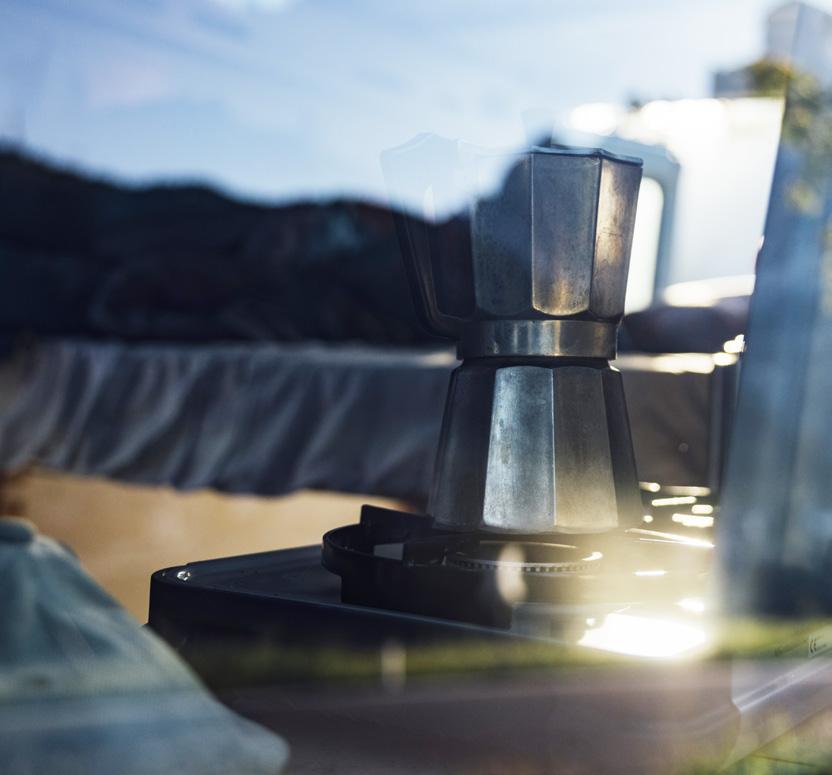


6:00|ALTABADIA DOLOMITES
THE CREW
PRODUCTION
The Pill Agency | www.thepillagency.com
EDITOR IN CHIEF
Denis Piccolo | denis@thepillagency.com
EDITORIAL COORDINATOR

Lisa Misconel | lisa@thepillagency.com
EDITING & TRANSLATIONS
Silvia Galliani
ART DIRECTION
George Boutall | Evergreen Design House Niccolò Galeotti, Francesca Pagliaro
THEPILLOUTDOOR.COM
Martina Beslagic | martina@thepillagency.com
PHOTOGRAPHERS & FILMERS
Matteo Pavana, Thomas Monsorno, Camilla Pizzini, Chiara Guglielmina, Silvia Galliani, Francesco Pierini, Elisa Bessega, Andrea Schilirò, Denis Piccolo, Achille Mauri, Simone Mondino, Alice Russolo, Patrick De Lorenzi, Giulia Bertolazzi, Tito Capovilla, Luigi Chiurchi, Isacco Emiliani, Pierre Lucianaz
COLLABORATORS
Filippo Caon, Chiara Guglielmina, Marta Manzoni, Sofia Parisi, Fabrizio Bertone, Eva Toschi, Luca Albrisi, Luca Schiera, Giulia Boccola, Valeria Margherita Mosca, Lisa Misconel
SHOP & SUBSCRIPTIONS
www.thepilloutdoorshop.com

SHOP MAGAZINE MAP www.thepilloutdoor.com/magazine-finder
COMPANY EDITOR
Hand Communication, Via Piave 30, Saluzzo CN 12037, Italy hello@thepillagency.com
COVER
Photo Maurizio Marassi
PRINT
L'artistica Savigliano, Savigliano - Cuneo - Italy, lartisavi.it
DISTRIBUTION
25.000 copies distribuited in 1100 shops in Italy, Switzerland, Austria, Germany, France, Belgium, Spain, England & The Netherlands
ADVERTISING
hello@thepillagency.com | +39 333.7741506
FOLLOW US www.thepilloutdoor.com www.facebook.com/thepilloutdoot Instagram.com/thepilloutdoor
The Pill rivista bimestrale registrata al tribunale di Milano il 29/02/2016 al numero 73
6
PHOTO LAYLA KERLEY
THE ECO EXPLORER.
Scarpa da trekking confortevole e affidabile, pensata per coloro che vogliono vivere la natura e fare scelte consapevoli. Il 45% della tomaia è composto da filato riciclato, la membrana Gore-Tex Bluesign contiene tessuti riciclati al 98% e il battistrada Vibram Ecostep Evo utilizza fino al 30% di gomma riciclata.



MESCALITO TRK PLANET GTX
SCARPA.COM
BARKLEY
SAVING

PROSECCO
LISE
8 P.10 P.14 P.18 P.22 P.26 P.28 P.30 P.32 P.34 P.38 P.40 P.42 P.44 P.46 P.48 P.52 P.56 P.62 P.66 P.72 P.76 P.80 P.88 P.94 P.106 P.112 P.120 P.130 P.138 P.148 THE DAILY PILL BEST MADE KILLER COLLABS ECO SEVEN ZAMBERLAN NEW BALANCE BODE MILLER ADAM ONDRA'S BACKPACK MARCO TOSI SALEWA SIX TO NINE OSPREY WOMEN'S FIT AKU CONERO GTX SULFUR BY TECNICA LAMUNT TAILOR IT YOURSELF SISTERHOOD & SNOWBOARDING
SKINS & CONCENTRATION
SUI BLOCCHI WILD LIFE
WINTER
JUREK
SUMMER RUN
WRIGHT
FRIENDS
MARIACHER
MASCHERONA CAROLINE & JAMES
BREAD,
BROCCHI
REIMAGINE
SCOTT
INDIAN
KRYSTLE
TEVERE'S
HEINZ
KATIA
MARATHONS
GLACIERS
DANS
WILD
LE
BILLON
Sky’s the limit
Go faster, together. Make speed your next challenge. With the right equipment and training, you can take on the unpredictable; with the right partner, you’ll come back home safe. Reach for your record knowing you’ve got protective and lightweight gear that’s always there to help you achieve your ultimate objectives, faster.

THE DAILY PILL
BY DAVIDE FIORASO
EUROPEAN OUTDOOR SUMMIT IN BERLIN ON SEPTEMBER 28 & 29, 2023

After the Annecy edition, defined by delegates and partners as a great success, the ninth European Outdoor Summit will be held at the Festaal Kreuzberg in Berlin, an eclectic place located in the Treptow-Köpenick district. The European Outdoor Group event, with its engaging and stimulating programme, is a key appointment for the sector. The 2023 claim will be "The New Era - Business and Beyond": times have changed and with it the ways in which success, business models, collaborations and sustainability are measured.
KICK-START YOUR DAY: THE SPEED HIKING CAMPAIGN BY SALEWA

A magical stretch of time, just before dawn, waiting for everyone to wake up. This is the concept of "Six to Nine: Kick-Start Your Day", the new Salewa campaign designed for the launch of the new speed hiking collection. The initiative will be supported by a video that will tell stories from every corner of the planet: from the Dolomites to Nice, from Tokyo to Boulder. Ordinary people and athletes, in full “Salewa People” style, giving voice to different cultures who share moments of life through sport, feeling part of a community.
THE PARTNERSHIP BETWEEN GARMONT AND THE EUROPEAN ASSOCIATION OF VIA FRANCIGENA WAYS HAS BEEN RECONFIRMED
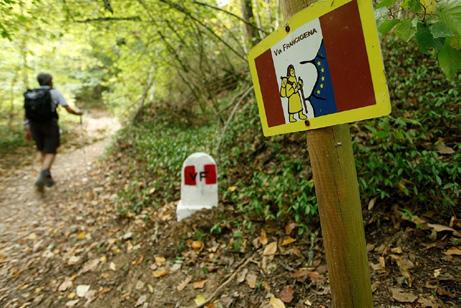
Also in 2023 Garmont confirms its support to the European Association of the Via Francigena Ways, promoter of a 3200km route that winds along the European continent touching more than 700 municipalities. A form of slow tourism, to experience the outdoors and reconnect with nature, in continuous growth, as evidenced by the data collected by the association at the end of the past year: more than 50.000 pilgrims traveled the Via Francigena in 2022, with an increase by 20% over the previous year.
MIZUNO ENGINE: RESEARCH & OPEN INNOVATION

Active since November 2022, Mizuno Engine is a place where measurement, prototyping and testing of new products integrate in order to reduce development time. The Innovation Center, a 6500m2 facility located at the Osaka headquarters, features a sewing room, a 3D laboratory, test areas, a gym, an athletics track and synthetic grass surfaces. In addition to co-working spaces, employees can meet and exchange knowledge and opinions, to share and transform ideas into innovations.
DYNAFIT MAIN SPONSOR OF GROSSGLOCKNER ULTRA TRAIL, L´ÉCHAPPEE BELLE AND TRANSALPINE RUN
Ready to experience a season of high performing trail running? Dynafit will be the main sponsor and partner of three prestigious events: Grossglockner Ultra Trail, which takes place around the highest mountain in Austria, L'Échappée Belle, nestled in the extraordinary Belledonne range, in France, and the Transalpine Run, a race in stages across the Alps, in teams of two or, starting from this year, also solo. Dynafit reconfirms its desire to provide athletes with harmonized systems, made up of intelligent, high performing and efficient products.

10

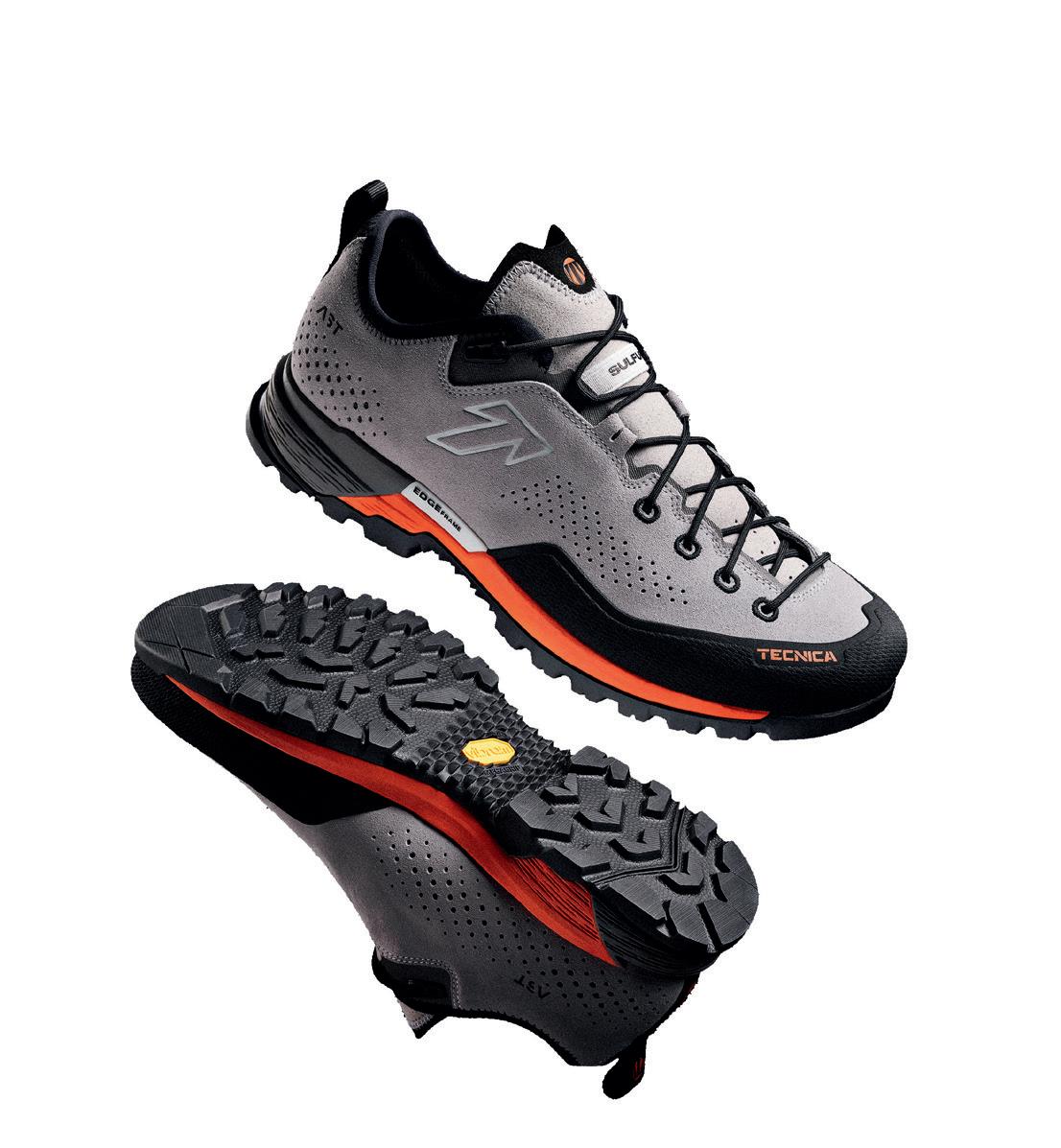
THE DAILY PILL
BY DAVIDE FIORASO
MAMMUT ATHLETES SUMMIT 2023
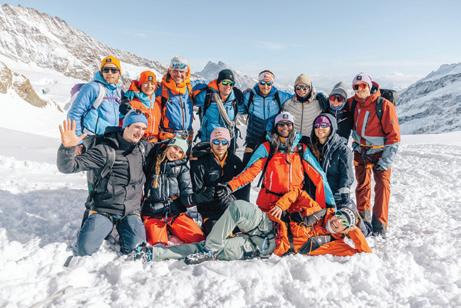
Three days of unforgettable moments and mountain adventures for the international team of Mammut athletes who gathered in the heart of Switzerland on the first weekend of March for the Athletes Summit. After visiting the Seon headquarters, the athletes had the opportunity to visit the Jungfraujoch, Top of Europe where a trek to Stollenjoch on the north face of the Eiger awaited them. It goes without saying that there were also many moments dedicated to climbing! It was a weekend dedicated to sharing the passion for the outdoors with some of the most important people in it.
WOMEN SPECIFIC FIT: THE NEW WILD COUNTRY HARNESSES DESIGNED FOR THE FEMALE ANATOMY
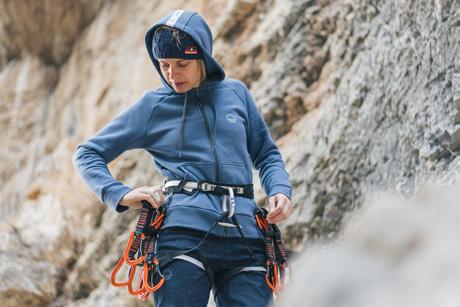
Realizing that re-proportioning (in some cases even just re-coloring) was the primary solution offered on the market, Wild Country went back to the drawing board to channel its experience into the climbing world and design a new collection of harnesses with a specific fit. Women Specific Fit is a new ergonomic construction specifically designed to fit the female anatomy, making the harnesses easier to put on and more comfortable during all activities.
SAUCONY BECOMES MAIN SPONSOR OF DOLOMITI EXTREME TRAIL

Saucony has signed a two-year sponsorship agreement with Dolomiti Extreme Trail, one of the Italian trail running events with the largest international reach, as well as the most fascinating. The event, scheduled for June 9-11, 2023, will take place in the amazing setting of the Zoldo Dolomites. The absolute winners of the 103km race will have a bib available to compete in the Saucony El Cruce, a true full immersion in the South American nature between Chile and Argentina.
OCCITAN EXPERIENCES BY ORTOVOX: SKI MOUNTAINEERING IN THE MAIRA VALLEY

A group of friends, an uncontaminated valley with ancient traditions, a film to tell this encounter. The filming of Occitan Experiences has just finished, a docufilm about the Maira Valley supported by Ortovox which tells the story of the relationship that has developed between four ski mountaineers and a territory that has welcomed them in the best possible way, giving them a dream snow in a winter lacking in rainfall. The documentary is now in the editing phase and will be presented to the public in autumn 2023.
SCARPA AND CHAMEX MOUNTAIN GUIDES: FROM ASOLO TO CHAMONIX LOOKING FOR EXCELLENCE
Starting from this season, the Chamonix Experience mountain guides will wear SCARPA. Like the brand from Asolo, Chamex is also at the forefront in the field, without losing its family attitude. In this group, SCARPA has rediscovered shared values of safety, solidarity and sustainability. Among the projects advanced by Chamex: the Arc'teryx Alpine Academy, one of the most famous events in the Alps, support for CAX, the El Chalten mountain rescue team, the commitment to show customers the effect of climate change, avoiding high impact activities.
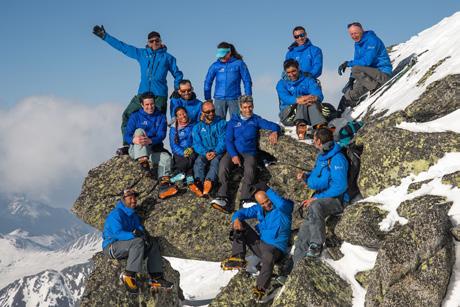
12
CURIOUS BY NATURE
We venture out into nature to reconnect with ourselves and change our perspective to look at things differently than before.

Contemporary outdoor since 1870
1.DOLOMITE
CRISTALLO HOODED 3L JACKET
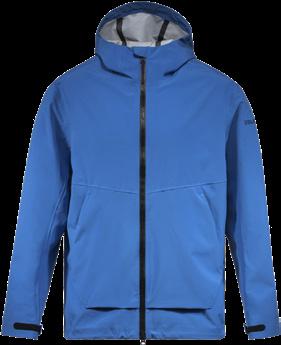
The gem of the new Dolomite Mountain Performance clothing collection. A 3-layer garment to face any bad weather and never be caught unprepared, thanks to its high waterproofing and heat-sealed seams. Made with 100% recycled polyester and waterproofed thanks to a PFC-free treatment.
4.BROOKS
H IGH POINT 3" 2-IN-1 SHORT WS
Trail running short from the new High Point collection by Brooks. Front section in ripstop fabric treated with waterproof technology, side slit to facilitate movement, internal anti-chafing slip to offer soft comfort. Four side pockets to easily store essential items.
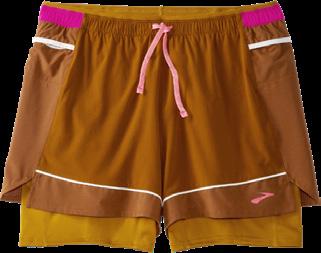
BEST MADE
BY DAVIDE FIORASO
2.MAMMUT
T RION NORDWAND 15
Developed together with top athletes
Nico Hojac and Stephan Siegrist, the Mammut Trion Nordwand 15 backpack offers great versatility in the alpine environment. Mesh pockets located on the shoulder strap provide immediate and easy access to small essentials on the move, while the carrying system is inspired by trail running light vests.

5.JAIL JAM
J A2151 BELT

New for the FW23/24 season by Jail Jam, an Italian brand specialized in the production and distribution of hats and accessories. Elastic belt with compact buckle, which facilitates opening even when wearing gloves. Colorful, resistant and adaptable to all sizes, ideal for winter outdoor activities.
3. ORTOVOX
W INDBREAKER JACKET
Perfect balance between weight and functionality. Merino Protect in the front, back and under arms offers the durability of a synthetic material with the comfort of Merino wool, while sleeves, side inserts and hood are made of ultralight Tec-Stretch to follow every movement. It can be easily packed inside the chest pocket.

6.SCARPA
MESCALITO TRK PLANET GTX
Designed for long hikes, it combines the technical features of an approach shoe with the stability, durability and comfort of a hiking shoe. The great news is the Perspair fabric, a single seamless upper with 45% recycled yarns, as well as the new Gore-Tex bluesign membrane and a Vibram Ecostep Evo sole.

14
1.
3.
4.
5.
6.

ROSANNA BUCHAUER READY FOR MORE DISTANCE ULTRA
BEST MADE
BY DAVIDE FIORASO
8.KAMMOK U RSA SLEEP SYSTEM

A n all-in-one, elevated, silky-soft system designed to ensure a restful sleep like never before on any adventure under the stars: self-inflating base, memory foam topper, insulated sleeping bag and oversized pillow with variable thickness. It is enclosed inside its travel case.
10.SALEWA PEDROC PRO
Lightweight, windproof and breathable speed hiking jacket, a versatile and functional solution to ensure thermal comfort during mountain activities. It combines a woven Tencel Nylon outer fabric with Polartec Alpha Direct insulation panels. At the center of the back there’s a perforated Durastretch to ensure greater breathability.

8.VICTORY
CHIMP OUT
THERE THERMAL REVERSIBLE GILET

From Irish cycling apparel brand Victory Chimp comes a practical compressible gilet to wear during your next gravel ride. Made with 100% recycled materials, it combines synthetic down insulation with a highly breathable shell. Two distinct looks in a fully reversible garment.
11.OSPREY
H IKELITE 18
Designed for both serious and casual day hikes, Osprey Hikelite series bridges the gap between everyday and outdoor backpacks, offering a perfected solution full of technical details: internal hydration pocket, Hydraclip, rain cover inserted in a zipped pocket.
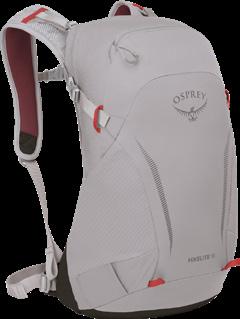
9.NIKE VAPORFLY 3
Designed for those who run fast. Nike has renewed the most desired shoe by road running lovers. A new ZoomX midsole and full length Flyplate carbon fiber aim to optimize transition and energy return. Upper in Flyknit yarn and curved shape of the midsole for better stability.

12.BMW
CE 04 VAGABUND MOTO CONCEPT
Austrian customiser Vagabund has teamed up with BMW to create a multifunctional electric scooter based on the CE 04 model for urban use. A particularly attractive combination of colours, can addition to functional elements, creates a modern style for a young target. It integrates a surfboard carrying system.
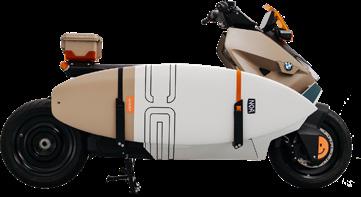
16
7. 8.
9.
10.
11.
12.
POLARTEC ALPHA JACKET WS
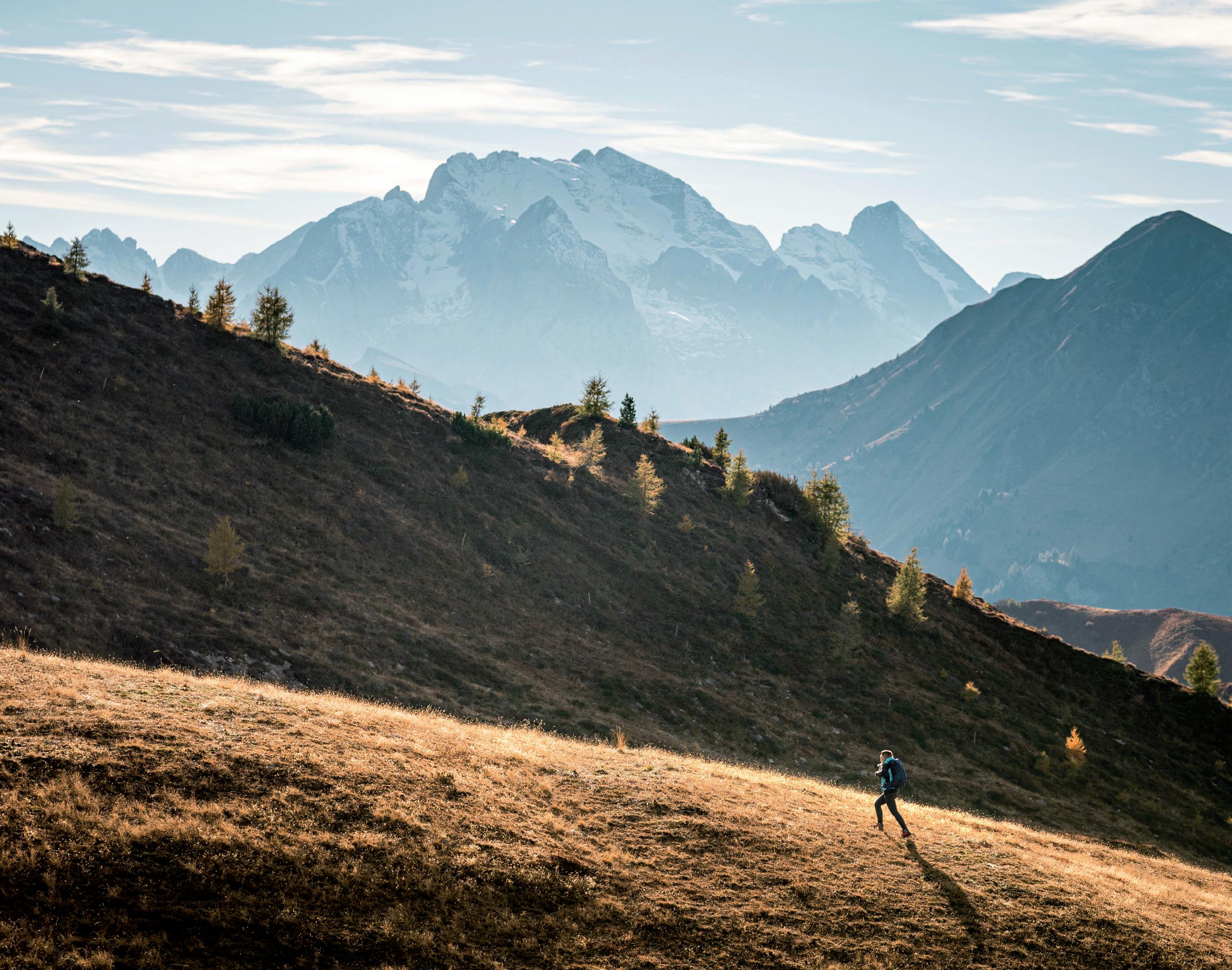
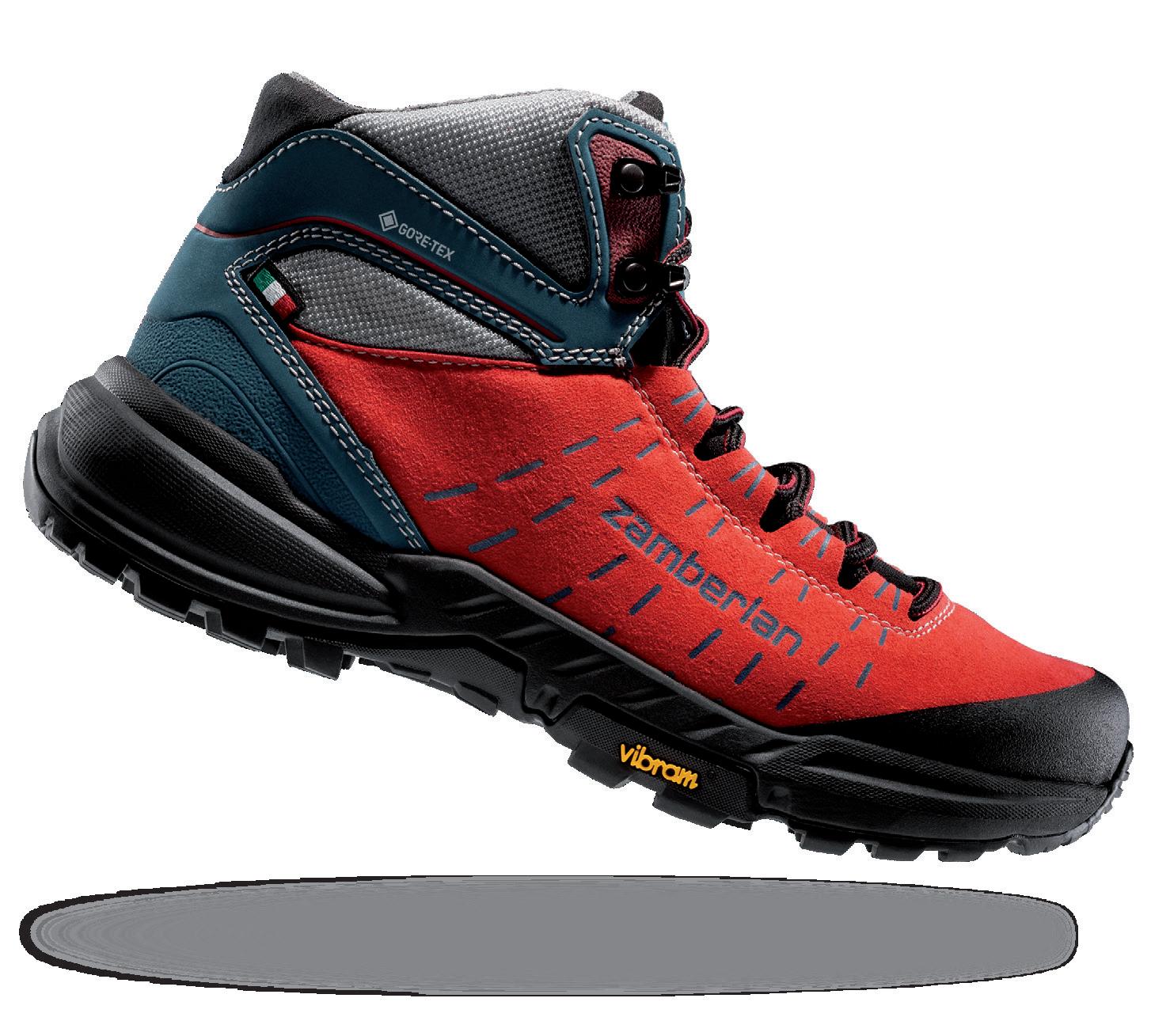

1.FUTUR X HELLY HANSEN NORTH SHELL JACKET
After Mizuno, Casio and Mountain Research, multifaceted Parisian brand Futur presents the second capsule in collar with Helly Hansen. A joint project, dedicated exclusively to the Japanese market and conveyed through Goldwin, which sees this Gore-Tex jacket in the exclusive two-tone combination also recalled in the matching pants.

4.BODEGA X HOKA
TOR ULTRA LOW
Thanks to the collaboration with designer Jean-Luc Ambridge, Hoka and Bodega, a famous retailer based in Los Angeles and Boston, have ventured into a reinterpretation of the Tor Ultra models for next autumn/winter season. The Low version features a suede upper with vibrant purple and mint green accents.

KILLER COLLABS
BY DAVIDE FIORASO
2.PAS NORMAL STUDIOS X SALOMON ACTIVE SKIN 8 BAG
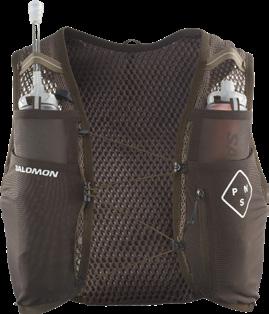
Mixing aesthetics and performance, at the intersection between city and nature, performance and functionality. From the first meeting between Salomon and Pas, a cycling clothing brand based in Copenhagen, comes this customization of the famous trail running vest. Dedicated to adventure racing on 2 wheels, it integrates flasks with XA filter.
5.FILSON X TEN THOUSAND TACTICAL SHORT
Following the success of the first drop, which sold out in less than 24 hours, Filson is once again collaborating with the sportswear label for a new collection of essentials. The Tactical Short is a lined training short made from a 4-way stretch ripstop fabric. In Filson's signature Marsh Olive colorway.
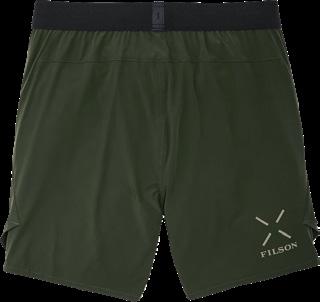
3.MAMMUT X ADAM ONDRA SILENCE MICRO - COLLECTION
Silence is the name of the micro collection in collaboration with Adam Ondra that honors the first 9c route he closed in 2017 in Flatanger, Norway. Just the way climbers like it, it's a soft sweater perfect for days at the crag with graphics that make us dream about those moves that no one else has yet been able to repeat.
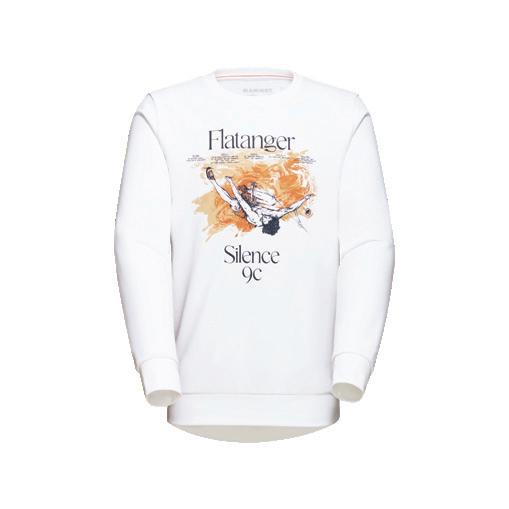
6.SMITH X VSSL BACKCOUNTRY SUPPLIES KIT
VSSL and Smith collaborated for creating this fantastic backcountry set, an aluminum case loaded with 11 essential tools to face the unexpected: 15" ski straps, sewing accessories, tape, zip ties, whistle, wire saw, fire starter and first aid kit . It is completed with the 4-mode LED lantern and the exclusive cap with carabiner.

18 1. 2.
5.
4.
6.
Soften your impact.
Fresh Foam X More Trail
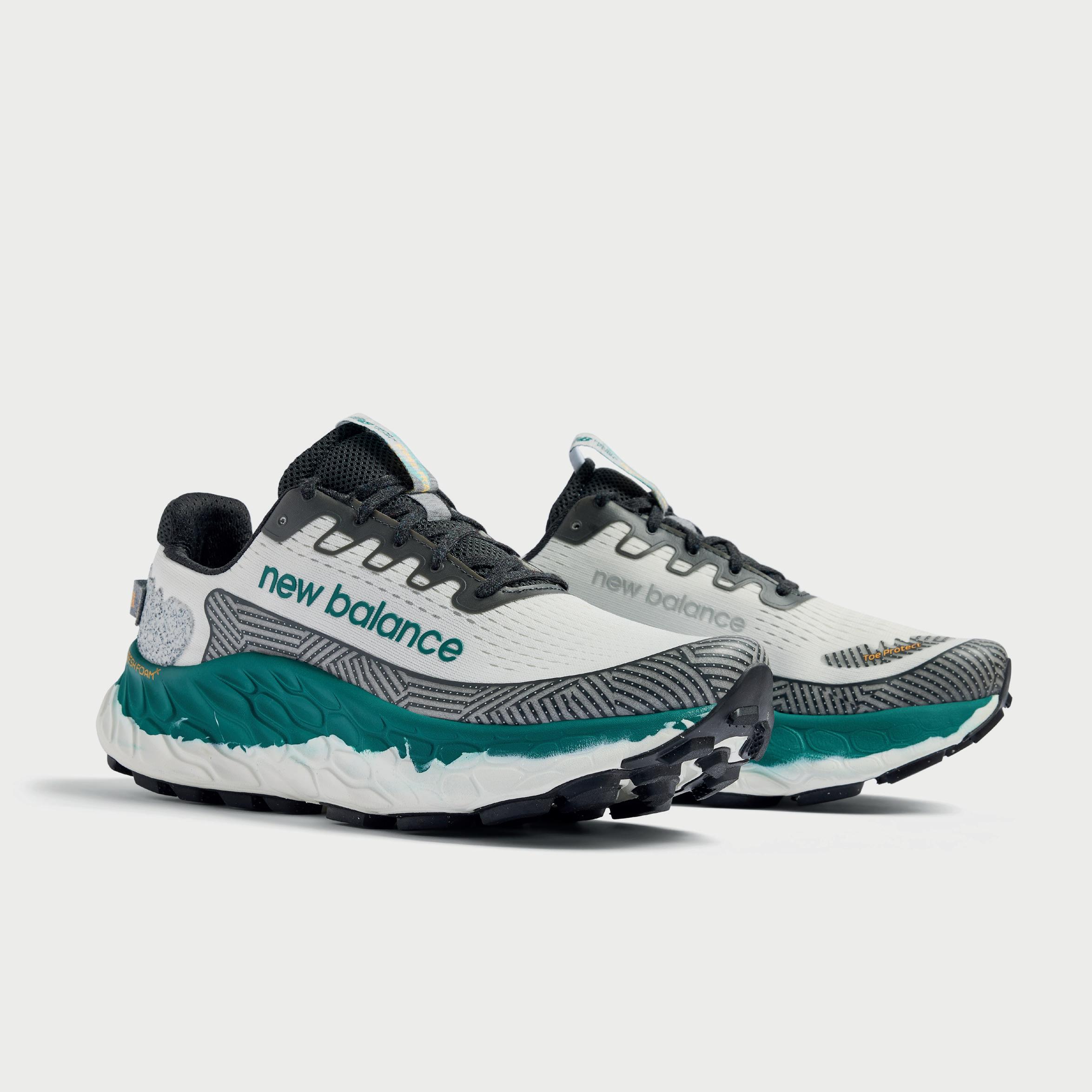
7.ADIDAS
From 1888 National Geographic inspires people to explore the world we live in and it is almost natural to think of a collection for outdoor enthusiasts. Made from 100% recycled water resistant fabric, it features an ethereal image of White Sand National Park. The logo on the shoulder changes depending on where you’re looking at it from.
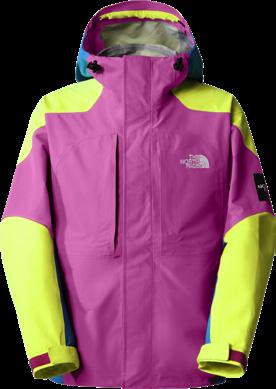
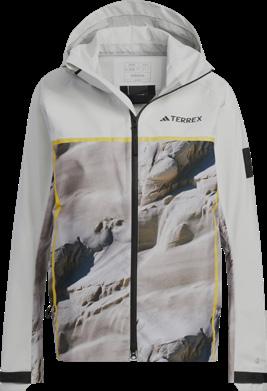
10.ASICS X MITA
ASICS Sportstyle released a new version of the Gel-Lyte III developed with Tokyo-based sneaker shop Mita and premium casual fashion brand Bal. Extensively revised and designed to face any weather condition, it features a zippered tongue, a quick lacing system, Gore-Tex upper and reflective details.
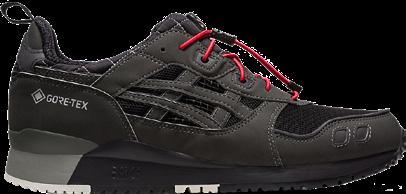
KILLER COLLABS
BY DAVIDE FIORASO
For the 10th anniversary of UltrAspire, it’s a limited edition that pays homage to Grand Teton and to the places where Bryce Thatcher discovered his passion for outdoor life. Passion that led him to sign an FKT that lasted for 29 years. Lauren Lomprey's unique style captures the beauty and essence of this part of Wyoming.
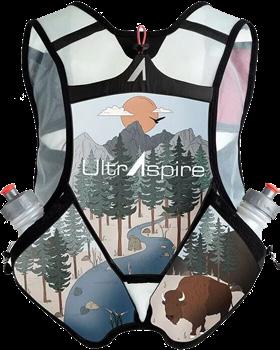
11.NEW
What started as a simple goodie bag quickly evolved into a statement of excellence. It is the exclusive backpack for the athletes who participated in the 2023 edition of the Indoor Nationals held at The Track, the brand new facility located in front New Balance headquarters in Boston Landing.

The technicality and reliability of Mizuno products, represented here by one of the most iconic and recognizable models, meets Roxy's authenticity for the first time in a style inspired by women's surf culture. The collaboration was further strengthened by the two brands' shared commitment to the environment.
TNF launches the first NSE drop of the season inspired by the nocturnal hedonism of the early 2000s and celebrating the rebellious sounds reproduced by London-based artist and activist KamBU. New and lively colorways declined on iconic garments, among which stands out the 3L Carduelis jacket with Dryvent breathable and waterproof technology.

20 7. 8. 9.
10. 12.
BALANCE X NATIONALS INDOOR SWAG BAG
GEL-LYTE III OG GTX
8.LAUREN LOMPREY X ULTRASPIRE MOMENTUM 2.0 GRAND TETON RACE VEST
X NATIONAL GEOGRAPHIC RAIN DRY JACKET
12.KAM-BU X THE NORTH FACE DRYVENT CARDUELIS JACKET
9.ROXY X MIZUNO WAVE RIDER 26
11.
KESTREL | KYTE



















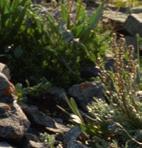

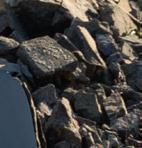
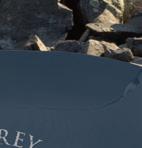




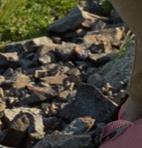

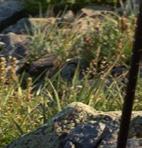

















































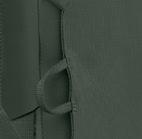

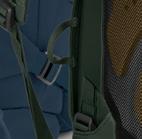



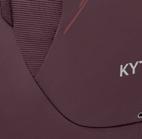





































































and built as durable workhorses, the Kestrel and Kyte are true rucksacks that eagerly carry gear off the beaten path into rugged, unpredictable backcountry terrain.
Designed
INTRODUCING ospreyeurope.com | @ospreyeurope
THE BACKCOUNTRY
FOR
ECO SEVEN
 BY DAVIDE FIORASO
BY DAVIDE FIORASO
O RTOVOX PROTACT LAB T O PROTECT WHAT WE LOVE
Living the mountain and loving it is an issue that goes hand in hand with the impact each of us unintentionally has on it due to the society we live in and the production of material goods. Awareness becomes crucial here, and with the Protact Academy, Ortovox has fully dedicated itself to protecting mountains and outdoor enthusiasts with various projects. In the different Labs, tips and tools are provided, but also stories are told that can inspire and educate to live the mountains with awareness and therefore protect them.
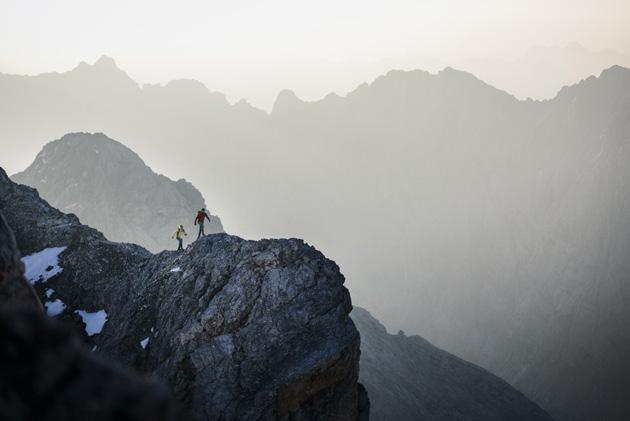
L A SPORTIVA: THE ICONIC S KWAMA SLIPPER GOES VEGAN
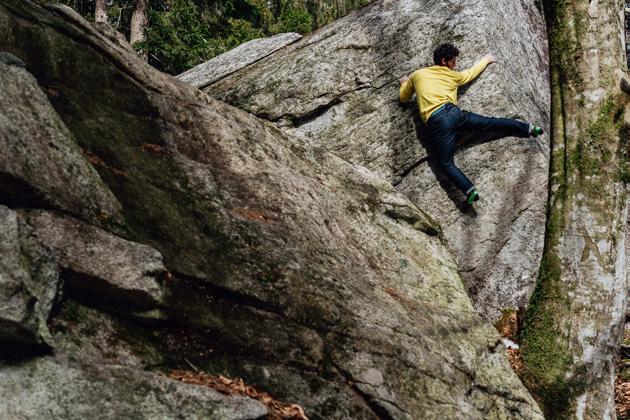
Same sensations, same DNA. Designed to guarantee maximum performance on the wall, Skwama is renewed without the use of animal-derived materials. It is an evolution of the iconic model capable of returning the same sensations and the same quality, the ideal companion to explore the vertical world with extreme precision and without compromise. The microfiber upper with SkinLike insole, made with bluesign and Oeko-Tek certified materials, ensures breathability, enveloping and adaptability properties.

S CARPA DEBUTS WITH MOJITO WRAP BIO
A fter Mojito Bio and Mojito Planet, SCARPA introduces a new biodegradable version of its iconic model, giving continuity to the project to reduce environmental impact. Wrap Bio is a responsible sneaker made following the principle of circularity, without sacrificing technical performance and lifestyle look. Upper in Bio Knit, biodegradable knit fabric and internal lining in Bio Stretch, a breathable elasticized texture. Simplified design and a choice of materials that contributes to reducing production waste.
22
LET‘S protACT WHAT WE LOVE




Le montagne sono la nostra casa. A chi, se non a noi, spetta il compito di proteggerle? La nostra nuova protACT academy è una fonte di informazioni e d’ispirazione. Per proteggere ciò che amiamo.






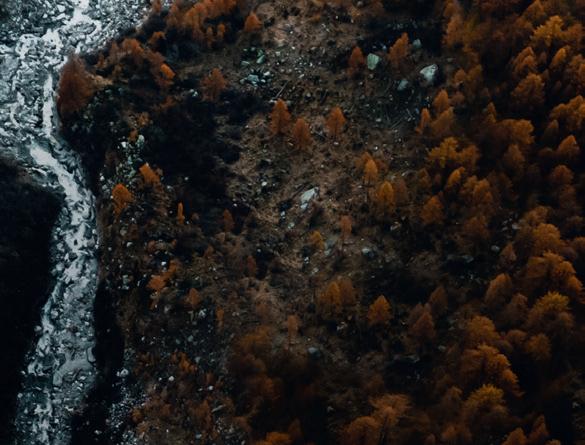
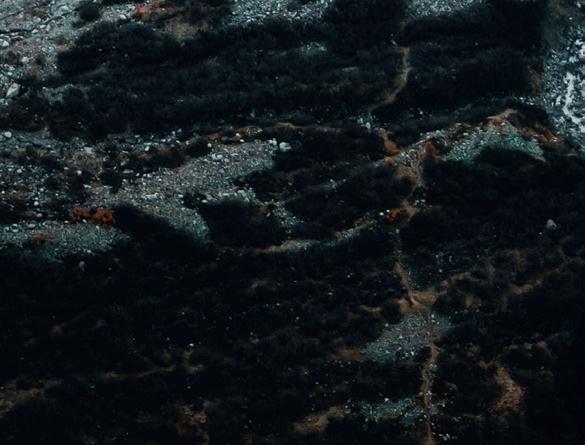
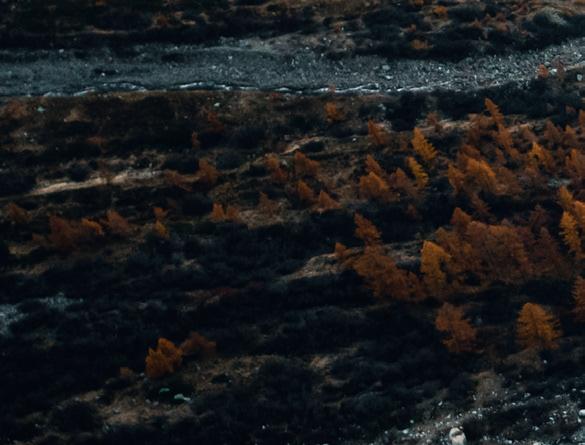
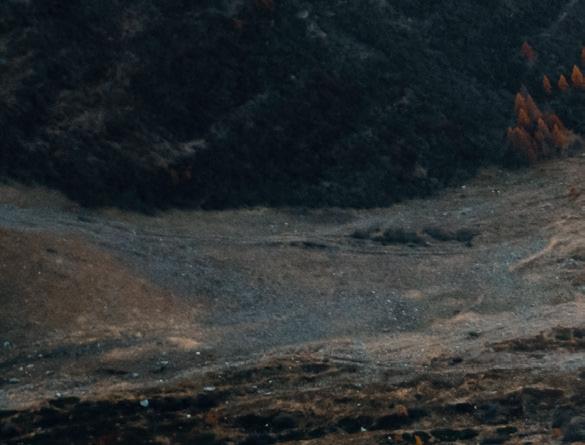
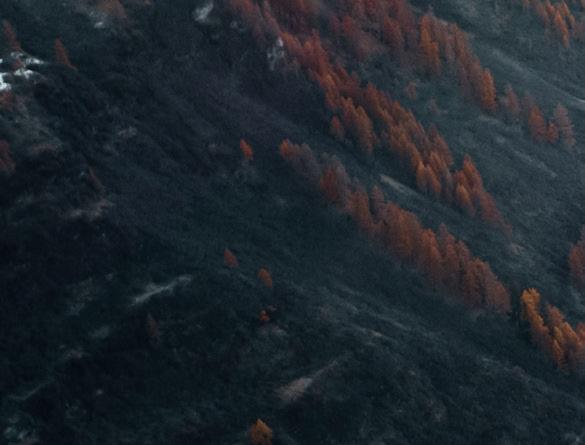

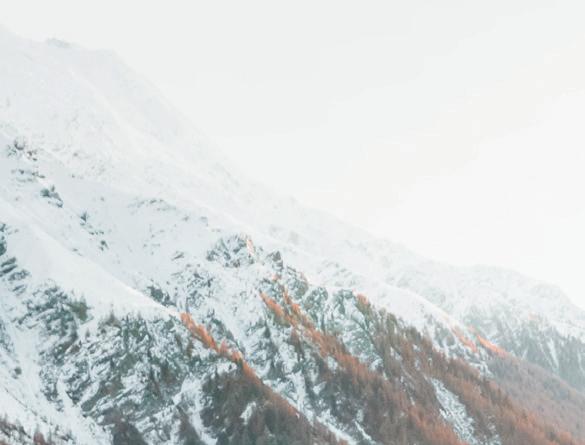
Aiutaci a proteggere le montagne. ortovox.com

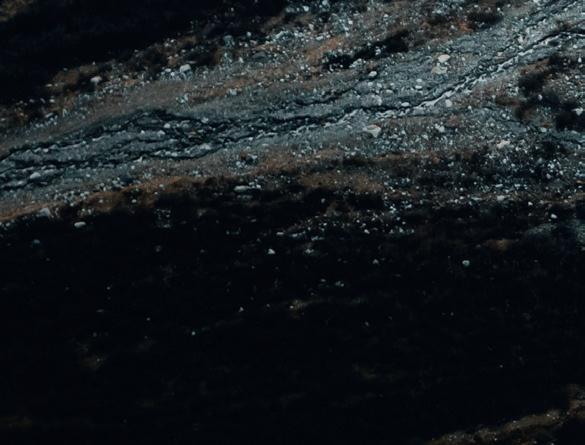

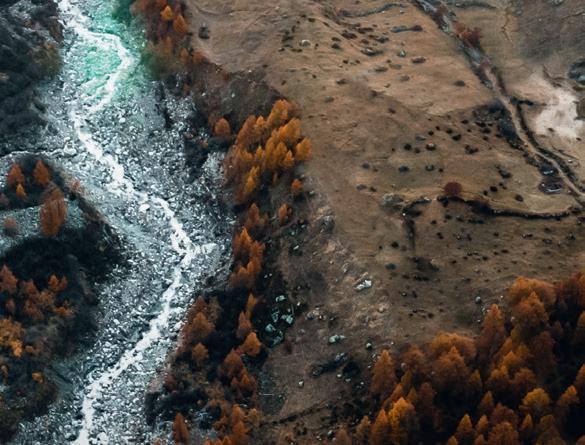
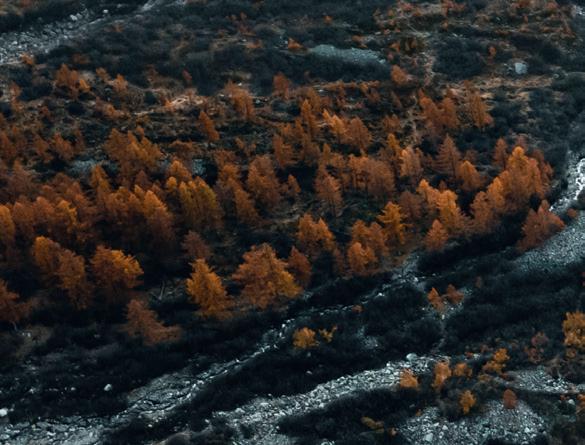
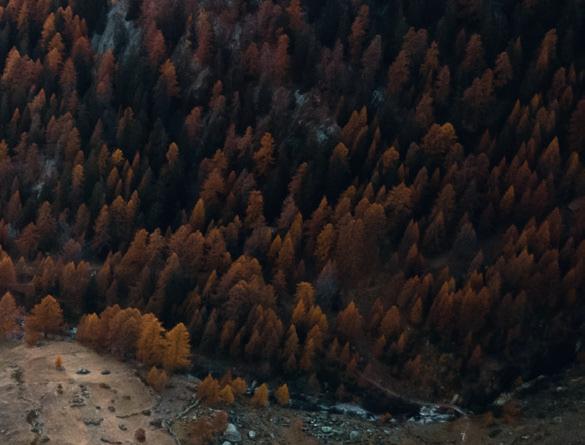



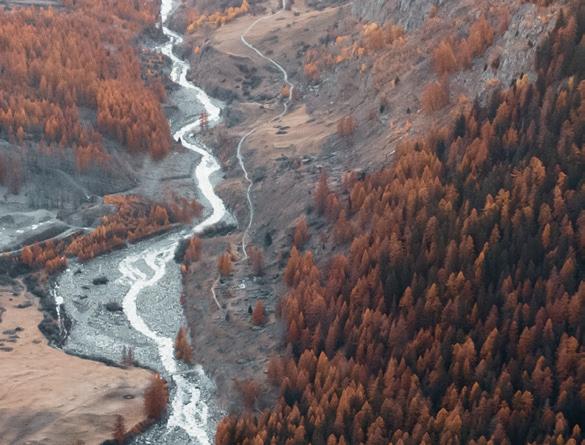


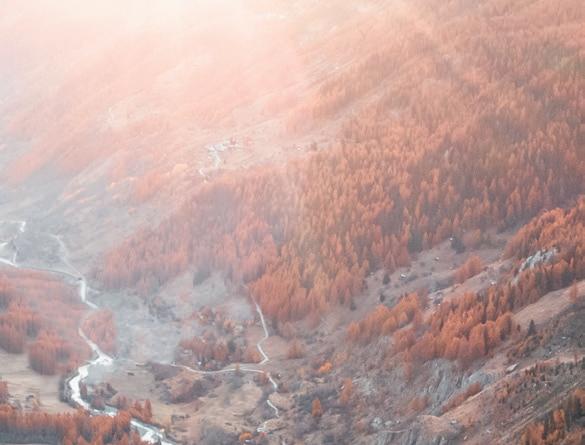
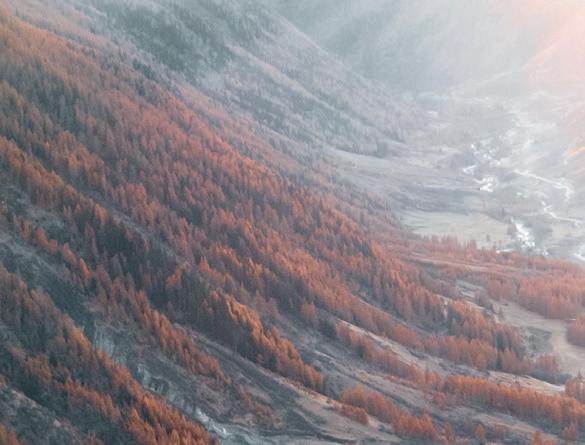

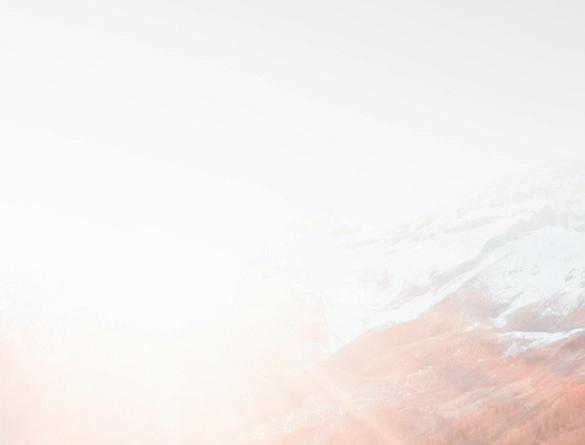
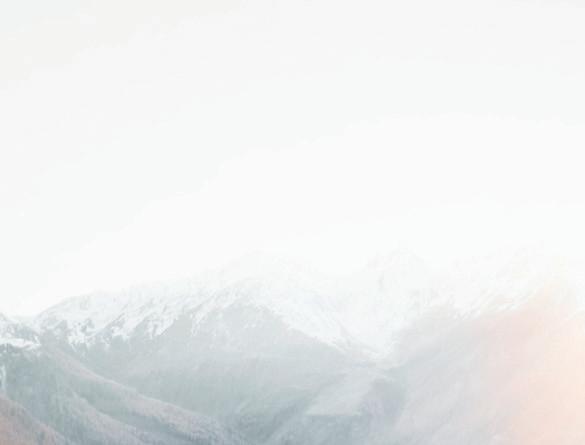
ECO SEVEN
BY DAVIDE FIORASO
D YNAFIT: MORE THAN 40.000 EUROS RAISED TO HELP THE SNOW LEOPARD

Living the passion for ski mountaineering and at the same time committing yourself to a good cause: this is the concept behind the International Snow Leopard Day which was held in the first weeks of March. Once again Dynafit has appealed to ski mountaineers from all over the world to accumulate as many vertical meters as possible to raise funds for the snow leopard, the brand's endangered animal symbol. On or off the ski slopes, around 2308 athletes took part in this edition, accumulating 2.932.965 meters in altitude.
F JÄLLRÄVEN PRESENTS THE NEW SAMLAREN COLLECTION (ELECTED MOST SUSTAINABLE BRAND IN SWEDEN)
Fjällräven presented the new collection of the Samlaren project, born with the aim of giving new life to excess fabric. All the pieces of the new capsule are in fact made with recycled materials, skilfully combined with exclusive color combinations. The project debuted in 2021, with a limited collection that met with immediate success. Meanwhile, for the fourth year in a row, Swedish consumers have voted Fjällräven as the country's most sustainable brand in the “clothing and fashion” category of the Sustainable Brand Index 2023.
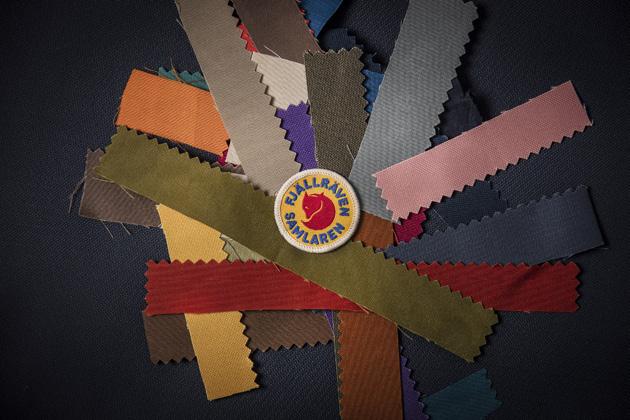
S ALEWA OPENS S ECOND LIFE I N BOLZANO
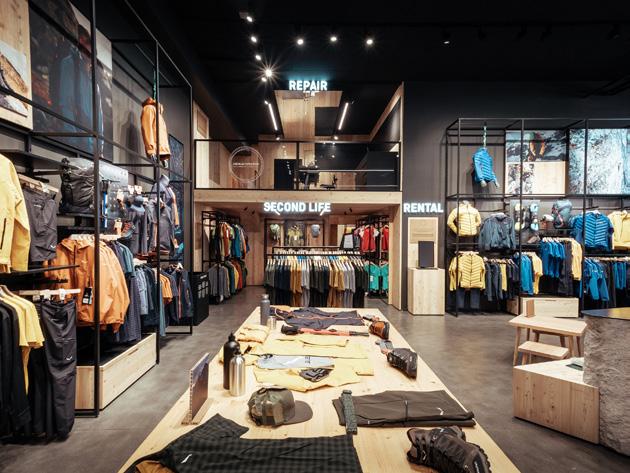
O n the occasion of the reopening of the Bolzano store, renovated by the famous gpstudio, Salewa presented its Circular Experience for the first time. An innovative format which, inside the store, allows you to take advantage of three new services: Second Life, which allows you to purchase used, reconditioned and repaired quality clothing, footwear and equipment, Repair Service, a repair service with components and original materials, and Rental Service, where you can rent the equipment you need without necessarily having to buy it.
M
S MALL HANGTAGS WITH BIG VALUES
The Swiss company’s products hangtags are getting smaller and smaller in oder to reduce paper use. From now on, all sustainability attributes will be visible at a glance! With this small but important initiative, Mammut wants to bring maximum transparency at the point of sale and in all that concerns logistic challenges. Taking also responsibility for the fact that numbers do not always look good at the start of a journey but that even the smallest step can slowly lead to change.
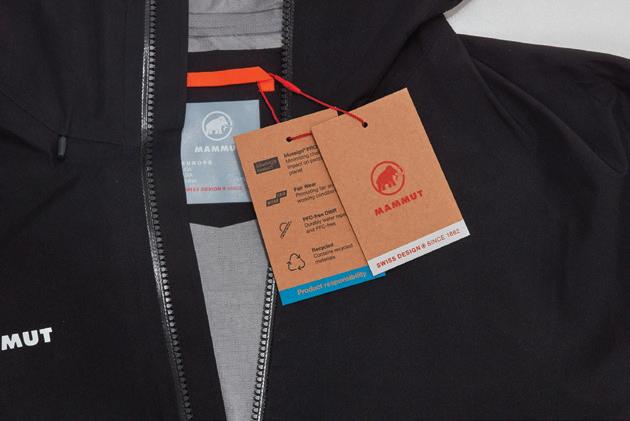
24

LEI È MONTAGNA Abbigliamento da montagna premium per il tuo #MountainMeTime LaMunt.com
Zamberlan Salathé Trek GTX RR

It's a sunny late winter morning, the air is crisp and the days are starting to get longer. Today we are on the Giau Pass, an alpine pass in the Dolomites, located at an altitude of 2236m in the province of Belluno between the Boite and the Cordevole valley. From here you can reach the Nuvolao Group, our final destination, via the easy Ra Gusela via ferrata. Backpacks ready and water bottles full, at our feet we have the new Salathé Trek.
The great news is that this special model was born from the encounter between the experience of the historic Italian brand Zamberlan and the Swedish RECCO system. Thanks to the RECCO reflector, in the event of loss or emergency, the user is able to be immediately traced by rescue organizations equipped with the appropriate detector.
The result is a technically advanced shoe, which proves to be an attentive and faithful companion especially in the most adverse conditions. Named after one of the most iconic places in climbing, a famous route in Yosemite Valley, it was created for light trekking and hiking, but its extreme comfort and versatility make it perfect for via ferratas and technical approaches.
The particular cut, called "up-cut", combines the freedom of a low shoe with the protection of a mid cut model. The fit is enveloping and precise thanks to the use of elastic materials and a construction with lacing up to the toe. The new X-Active Fit shape enhances comfort, while the Megagrip compound of the Vibram Pepe sole, combined with the dual density EVA
THE PILL PRODUCTS
BY SILVIA GALLIANI
midsole, offers excellent cushioning and maximum grip. Equipped with a RECCO reflector, in the event of loss or emergency, the user is able to be immediately traced by rescue organizations equipped with the appropriate detector.
It's time to put Salathé Trek to the test. Having parked the car at Passo Giau, after having paused to admire the basin of Cortina d'Ampezzo and the most beautiful and renowned peaks of the surrounding Dolomites, we take the route no.443 which starts from the back of the refuge that bears the same name and shortly after we crosses the CAI route n.438 left heading north. Once you have taken the latter, you enter a steep gully where the aided route (via ferrata Ra Gusela) begins. We then come to the south-eastern flank of the Gusela, the peak of which can be easily reached with a short detour to the north on easy rocks. Retracing our steps, we continue along the ridge route between Gusela and Nuvolau. After another short equipped stretch, we reach an
iron staircase that takes us in front of the panoramic terrace of the characteristic Nuvolau refuge set on the rock, like an eagle's nest. The panorama that can be admired is truly a postcard: you can see Tofane, Cinque Torri and Lagazuoi, then Marmolada, Civetta, Pale di San Martino, Catinaccio, Sassolungo, Pelmo, Sorapis and Cristallo, a truly complete 360-degree view.
Salathé Trek has proved to be an excellent ally in our daily adventure, a shoe that can easily be worn starting from driving the car, and then following a route, arriving at a via ferrata or at a climbing route and spend one or more days outdoors doing different activities. We take the usual photos and it's time to get back on the road. We take the route n.439 of the Alta Via n.1 which quickly leads to the fork of the same name. From here the simple route n.452 which descends to the left, south-east, crosses the detrital gullies of the west face of the Nuvolau and takes us back, tired but happy, to the Giau pass.
26
THE PILL PRODUCTS
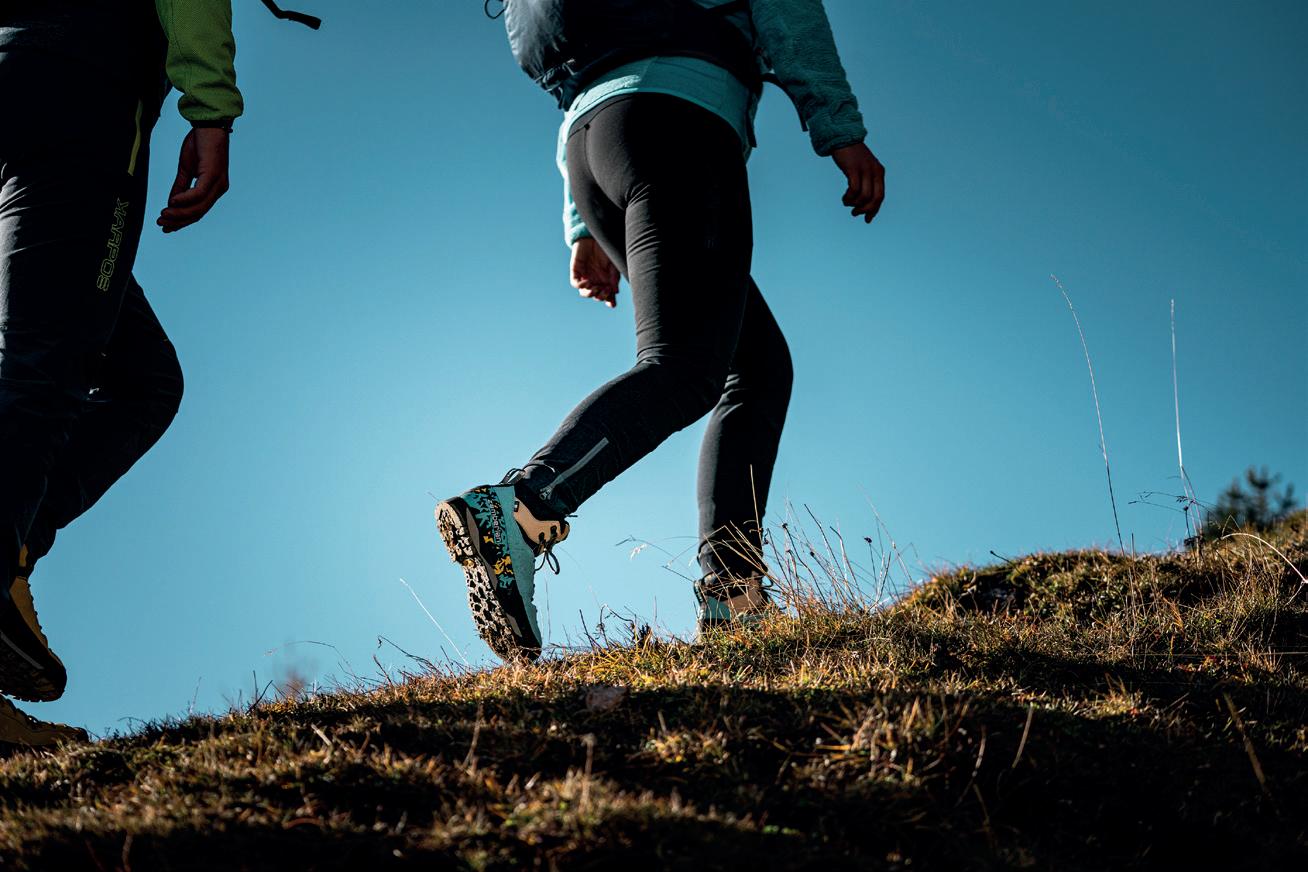 BY SILVIA GALLIANI
BY SILVIA GALLIANI
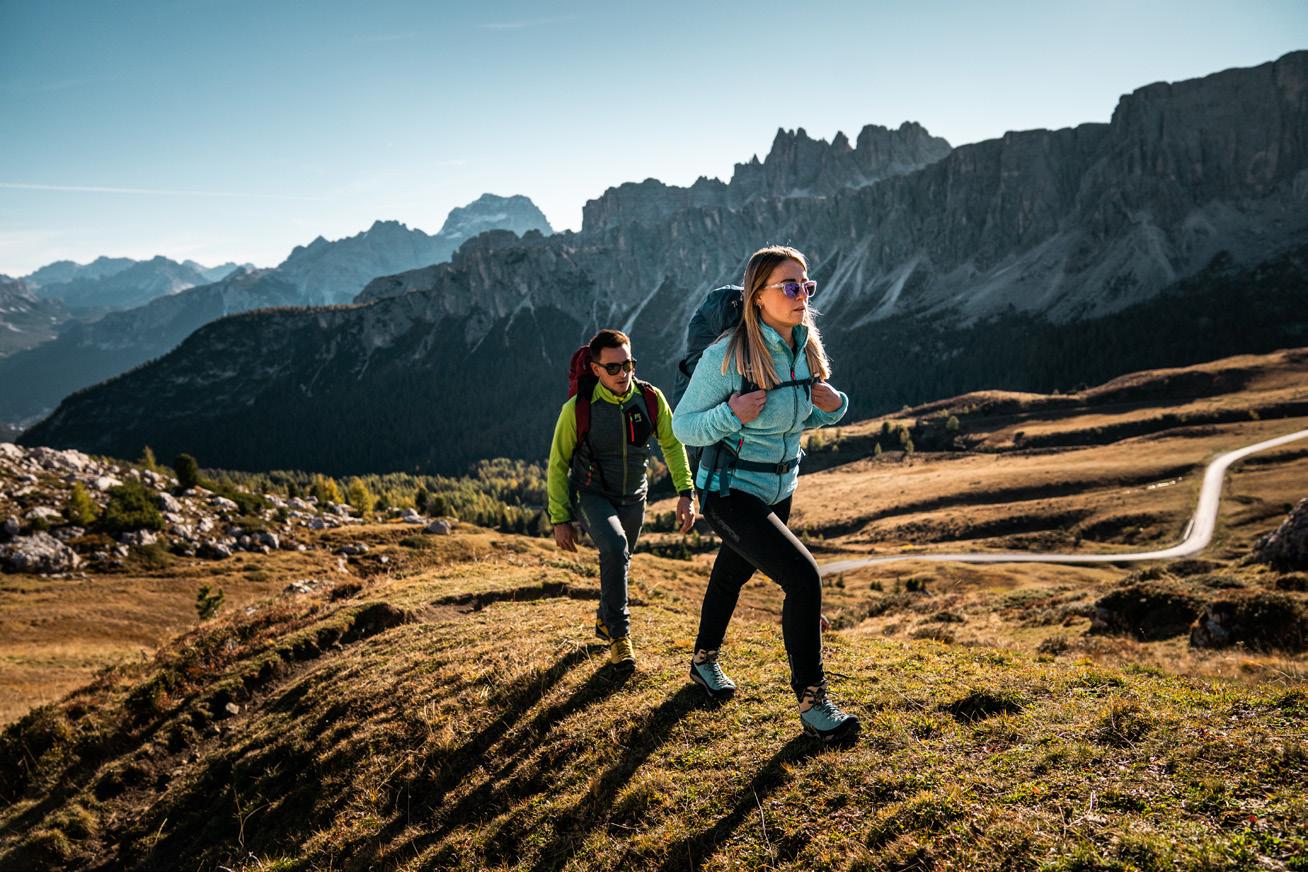
27
New Balance Fresh Foam More Trail v3
This March we tried the new New Balance Fresh Foam now in their third version. A maximalist shoe dedicated to the mountains and to long distances. It weighs 315 grams in size 43 and has a 45mm offset in the heel and 40 in the forefoot, for a 5mm drop.

The upper is made with an engineered mesh and it is reinforced on the toe and on the entire lower part of the shoe by a plastic material application that protects the fingers. Traditional lacing, padded tongue, very comfortable and easily adjustable laces, with the only flaw that they tend to create lint when abraded. The rear part (collar, shell,
heel) is stable but does not have a rigid internal structure, still allowing the shoe to flex and support the movement of the foot. The fit is snug over the entire plant, even on the forefoot. Overall, the upper has everything you'd expect from a neutral, stable shoe: comfort, protection, and support.
The midsole is the most feature part of the FF. The compound uses the typical New Balance Fresh Foam, but introduces an important novelty: in fact, it uses a foam with two different densities for the upper part and the lower part, but without using glues. This means that the midsole is a single piece of foam, without cuts, but with different density points, soft above and more stable below, emphasized by the double colouring. The idea is interesting because according to New Balance this should make the transition smoother and improve stability. As far as we can tell, the sensation in the run is of a compound that is certainly cushioned, but which does not compress too much, especially compared to other foams on the market, which on the one hand it makes them
lose reactivity, but on the other it makes them gain support.
The tread uses a five-piece Vibram XT Trek EVO sole, the main feature is that the lugs are very pronounced, the lugs are so deep and have a very large surface area giving it good traction even in the mountains and on technical terrains. To lighten it in weight and reduce the rigidity of the shoe, the sole leaves a lot of midsole uncovered, but still less than the previous version and protecting the central part more. This design adjustment will extend the life of the shoe and decrease wear on the underside.
Who is it suitable for? For neutral runners looking for protection and who want a shoe to run anywhere. We don't feel like considering it suitable for particular terrains: the sole has a lot of grip but the height of the shoe reduces the sensitivity with the terrain, on the other hand it works on the runnable. In short, we believe that runners who like to have substance under their feet can wear it quite on all terrains.
See you on the routes.
28
THE PILL TEST
THE PILL TEST

PHOTOS ELISA BESSEGA
Bode takes Cortina: SCARPA 4-Quattro
It's a Wednesday in February like any other in Cortina, skiers are drawing graceful curves on the untouched slo pes in the early morning hours, the Dolomites are glittering in the timid winter sun and... Bode Miller has just arrived at the Cortina 360 Gym. Okay, so maybe not just a Wednesday like any other.
Italy's leading mountain and outdo or footwear company has once again managed to bring one of the greatest athletes of all time to its home moun tains, and not only that, together with him they recently developed a revolu tionary boot: 4-Quattro. Not that this is Bode's first time on those slopes, of course, he knows and loves the slopes as well as the cuisine and the Dolo mites. In this new year, however, the purpose of his visit wasn't only about skiing, but after two years of working via video calls he was finally able to shake the hands of those who, together with him, have completed an important journey of innovation and research in the backcountry.
Among the multitude of dreamy eyes of young and older skiers, it was company president Sandro Parisotto who welcomed him to the 4-Quattro themed conference room. Parisotto, proud to carry on this important collaboration, spoke of Miller's role as a figurehead for the international dimension, but not only: his experience and engineering notions proved to be
BY LISA MISCONEL PHOTOS LUCA MORANDINI
an important asset for the developing of this and future boots.
What’s your relationship with SCARPA? From my point of view the evolution of a sport goes hand in hand with the development of the equipment used. The collaboration with SCARPA was a natural choice for me. SCARPA boasts a long experience in the development of new products and I share its approach based on research and innovation, with great attention to sustainability and performance.
What was and is it like to contribute to the developing and improving of 4-Quattro? SCARPA is an international reality, world leader in the ski
mountaineering sector, I am honored to have been chosen as the testimonial of the first hybrid boot. The collaboration for the launch of 4-Quattro is just the beginning: together we can make a truly significant journey from now on. I tested the new shoe "on the track" and gave the company useful indications for the creation of the next models.
Future projects? I’m looking forward to working with SCARPA on projects around the ski touring and backcountry space, it is a growing market and it is exciting to work with a partner that is experienced and professional as SCARPA.
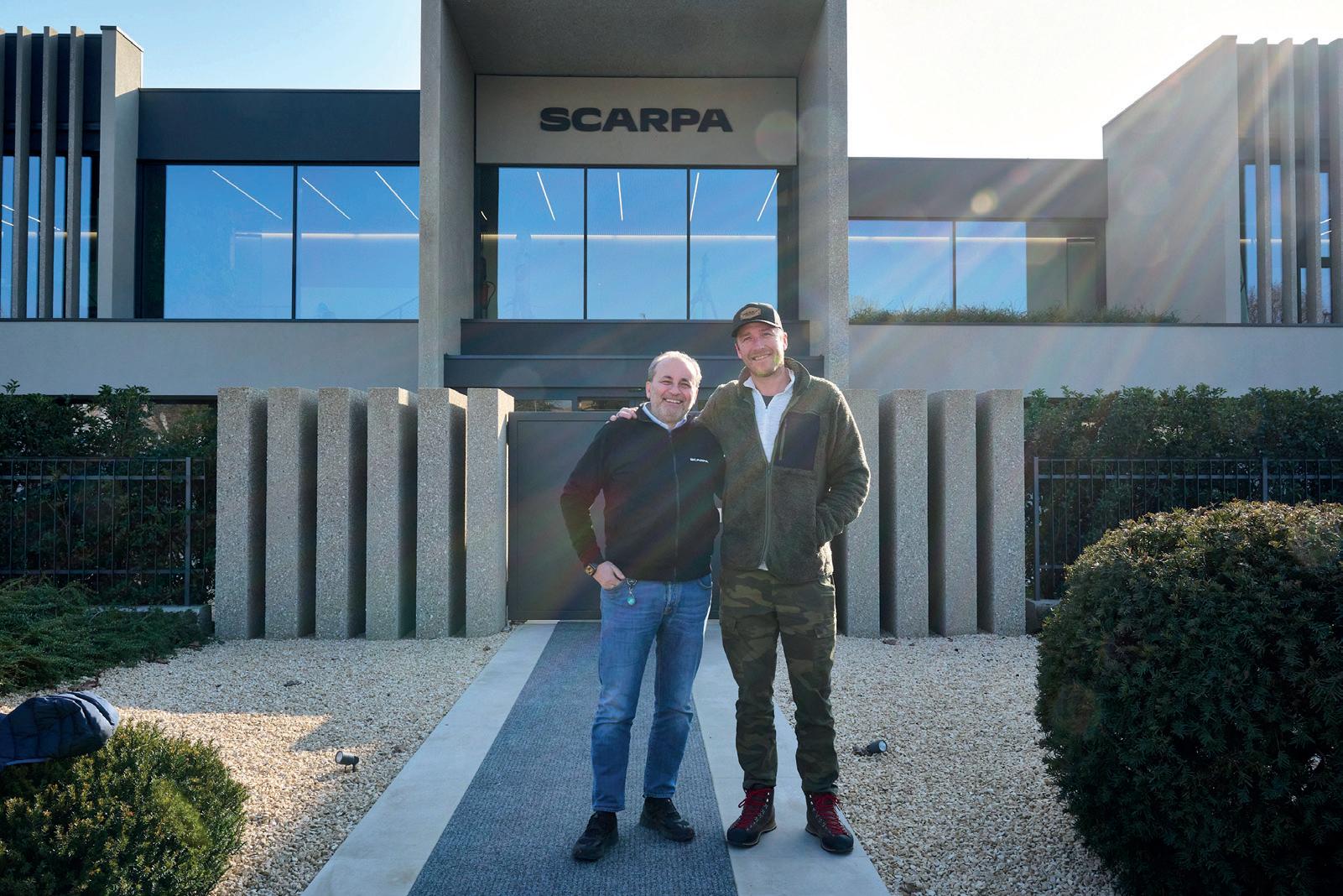
30
THE PILL LEGEND
THE PILL LEGEND
 BY LISA MISCONEL PHOTOS LUCA MORANDINI
BY LISA MISCONEL PHOTOS LUCA MORANDINI
31
I pack into my backpack
Adam Ondra certainly needs no introduction. For over a decade, the prodigy from Brno has been proving to be one of the strongest climbers in the world. In his palmares the first 9c in history (Silence in Flatanger in 2017) and the first ever flash-style 9a+ (Super Crackinette in Saint Léger du Ventoux in 2018). He has climbed various boulder routes up to 8c+ and completed, in just 7 days, the first repeat of Dawn Wall, the hardest multipitch route in the world. In recent months he redponited Zverinec, 9b+, in his native Czech Republic, and onsighted Water World, the king line of the huge Ospo cave, climbed by Klemen Becan in 2014. In a curious interview, Mammut reveals the "packing list" of the gear used in his days at the crag.
1.Backpack: Mammut's Neon Gear 45 is very comfortable and has enough pockets to store everything you need. Equipped with an integrated rope bag.
2. Brush: Mammut’s Crimper Brush. I often climb on virgin rock and consequently I have to do a lot of cleaning.
3. Chalk: I use Mammut’s Chalk Powder, 100% chalk in small pieces.
4. Crash pad: Mammut’s Slam Pad is a 10cm small crash pad that I carry with me when the approach is short.
5. Workhorse Keylock 12cm quickdraws: I always carry with me around ten Mammut Workhorse Keylocks. Durable, ergonomic and very comfortable to use, my number one choice for both hard ascents and redpoint ascents.
6. Workhorse Keylock 17cm quick-
THE PILL CURIOSITY
BY DAVIDE FIORASO
draws: sometimes wide slings are needed to reduce rope friction.
7. Sender Keylock 12cm quickdraws: I use Mammut’s Sender Keylocks for onsighted ascents in those sections where clipping is very easy. Also, they are my choice for trad climbing where weight is essential.
8. Belay device: Mammut’s Smart 2.0 is an all round belay device.
9. HMS carabiner with safety mechanism: a comfortable combo to ensure the partner who has to work on the movements for a long time. Mammut’s Smart HMS is Great because the Safety Gate secures the carabiner in the correct position.
10. Harness: Mammut Sender climbing harness offers the perfect balance between lightweight and comfort.
11. Chalk Bag: I use Mammut’s Crag Chalk Bag because it’s large enough and has a comfortable shape.
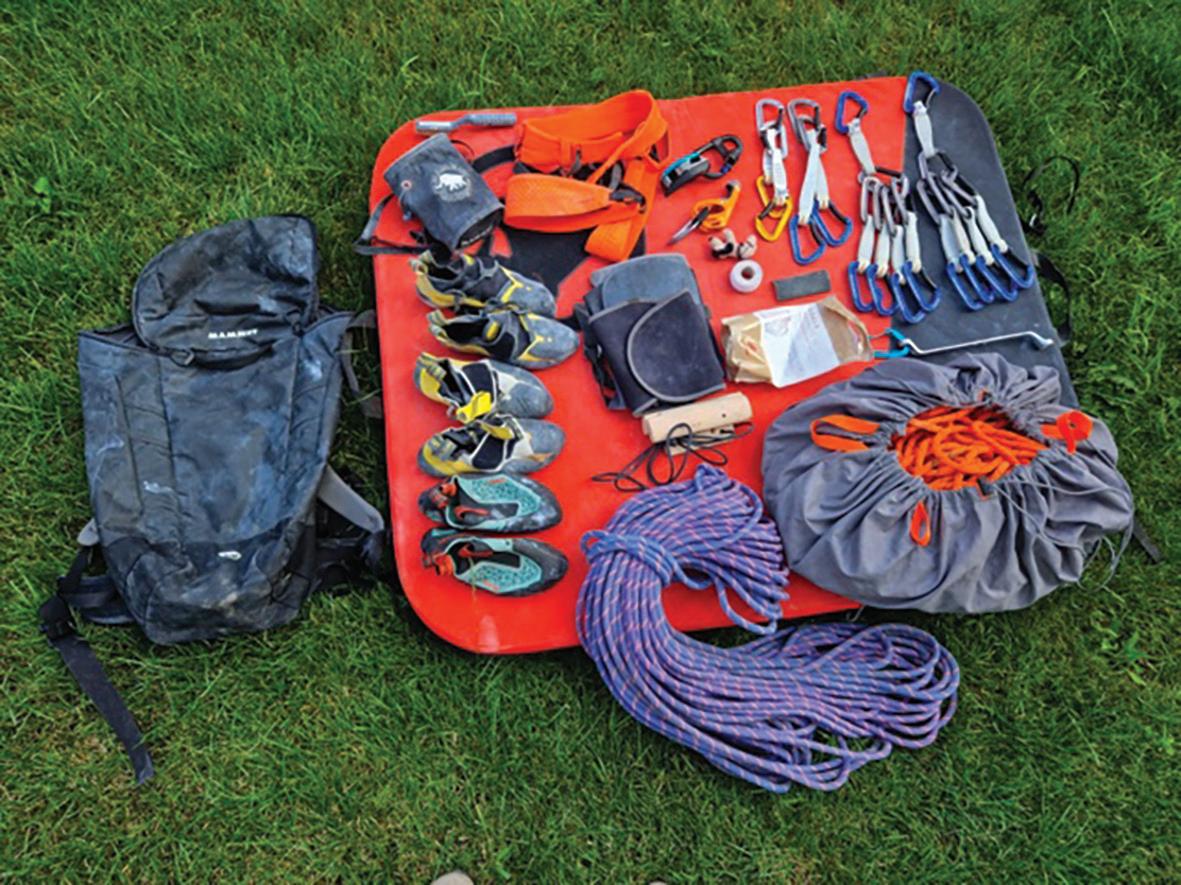
12. Tape: I always prefer to have some with me just in case.
13. Sand paper: useful when I'm about to rip a callus off my fingertip and I don't want to use duct tape.
14. Lucky charm: the little dog is a lucky charm from my childhood that I always carry with me.
15. Climbing shoes Solution Comp: La Sportiva’s Solution Comp is a slightly stiffer climbing shoe, designed for maximum performance.
16. Climbing shoes La Sportiva Solution: soft and precise, especially developed for bouldering.
17. Climbing shoes La Sportiva Mantra: a great shoe for warm-ups or when I want to enjoy climbing to the fullest.
18. Kneepad: I always have two kneepads with me.
19. Climbing rope: the 9.0 Mammut’s Crag Sender Dry is an 80 meters single rope I take with me for trad climbing.
20. Climbing rope: the 8.7 Mammut’s Alpine Sender Dry Rope is my choice when I want to climb a light and fast route.
21. Hangboard: Il Domani by Puc Training is portable hangboard I use to warm up in preparation for a route.
22. Wrench:It is always good to have a wrench with you to tighten spit bolts.
32
A sneak peek into Adam Ondra’s backpack

Being an example, spreading culture Marco Tosi
Marco Tosi has been a mountain gui de for almost thirty years and in all these years of guiding he has always tried to convey his fundamental love and respect for the mountains and for nature in general. Marco does this in all possible ways: first of all by wor king on himself and making a life in line with his ethics attentive to the human footprint on the environment, then by transmitting his vision to others. As an Ortovox guide and am bassador, Marco deals with mountain safety through the Ortovox Safety Academy, considered the biggest ava lanche prevention training initiati ve in the world. We asked him a few questions about his work and vision.
Tell us who you are and what you do. I’ve been a mountain guide since 1996, but I also practice another pro fession as a food technologist and nutritionist. I find that there are many points of contact between one discipline and another and for this reason I am passionate about it. In my years as a guide I have always paid great attention to new generations, with multi-sport camps oriented towards mountain activities. My passions have varied over the years: before I was very focused on waterfalls and the hardest climbs, now more on ski mountaineering and training. I like not only to teach the technical part but also to respect for the mountain across the board. I think that the summit is an excuse to have an experience that starts from the car, indeed, better if it starts from
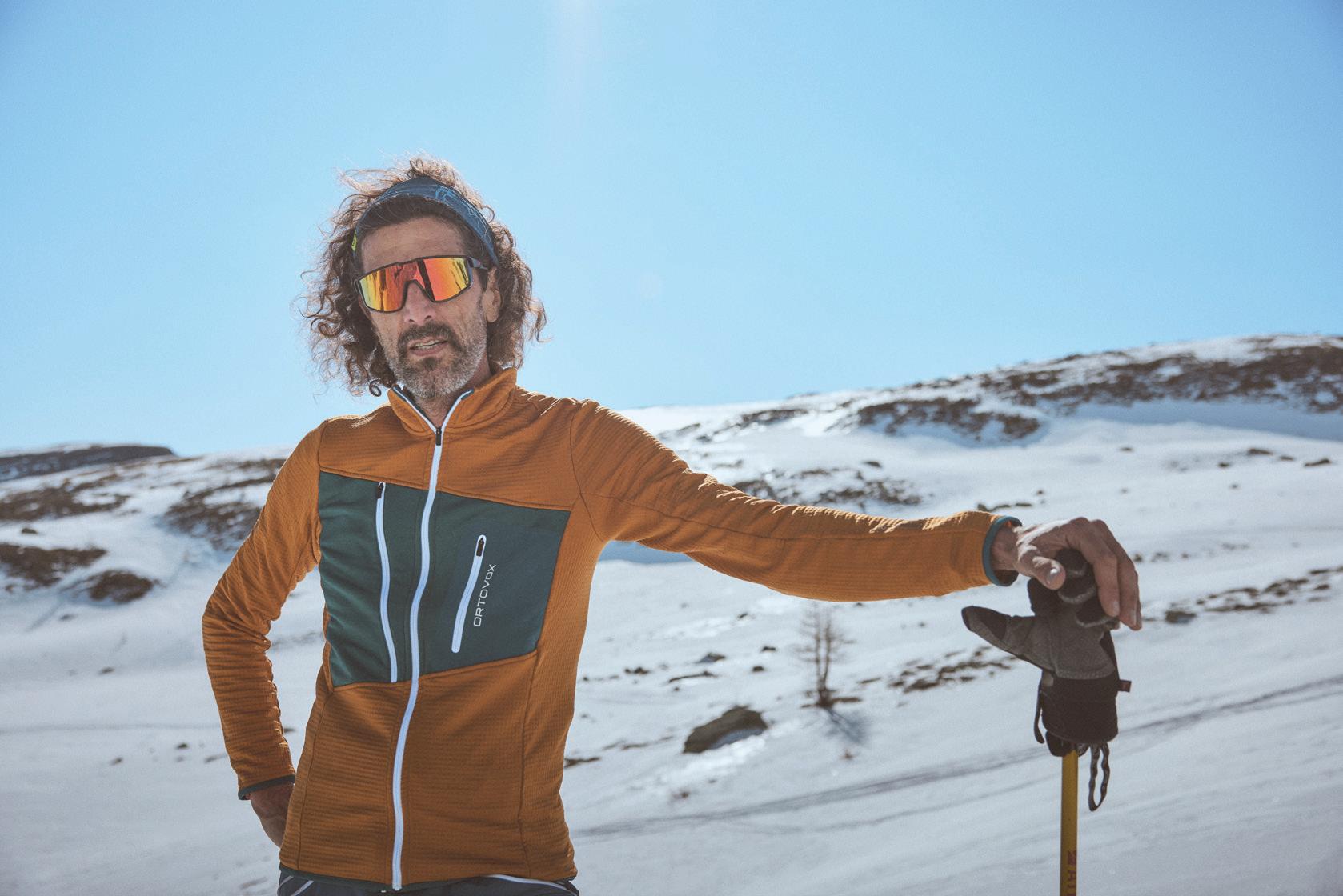 BY EVA TOSCHI PHOTOS PAOLO SARTORI
BY EVA TOSCHI PHOTOS PAOLO SARTORI
home. My philosophy is to reduce traveling by car with other means, on foot or by bike. I'm from Varese and after traveling around the Alps for many years now the mountains with which I have the most empathy and affinity are those of the Val d'Ossola. Here Giovanni Pagnoncelli founded the Ossola Outdoor School, with which I actively collaborate. As a mountain guide I like to involve clients not only in decisions but also in the emotions they feel during a mountain tour.
Starting from what you just said, tell us what the role of the mountain guide is for you and what you do try
to convey to your clients? First of all, I like to convey to those I accompany that you don't go to the mountains to "conquer a peak", and that you need to go beyond this concept and try to live the experience by accepting your own frailties. I take you on a playful and if possible educational experience, to get out of the problematic everyday life. This is why I don't think it makes sense to make customers suffer. I prefer to let you have a joyful experience: with the right balance between engagement and fun. I suggested to a lot of people that they stop climbing because they weren't having a good time. I like to teach the client to become indepen-
34
THE PILL INTERVIEW
THE PILL INTERVIEW
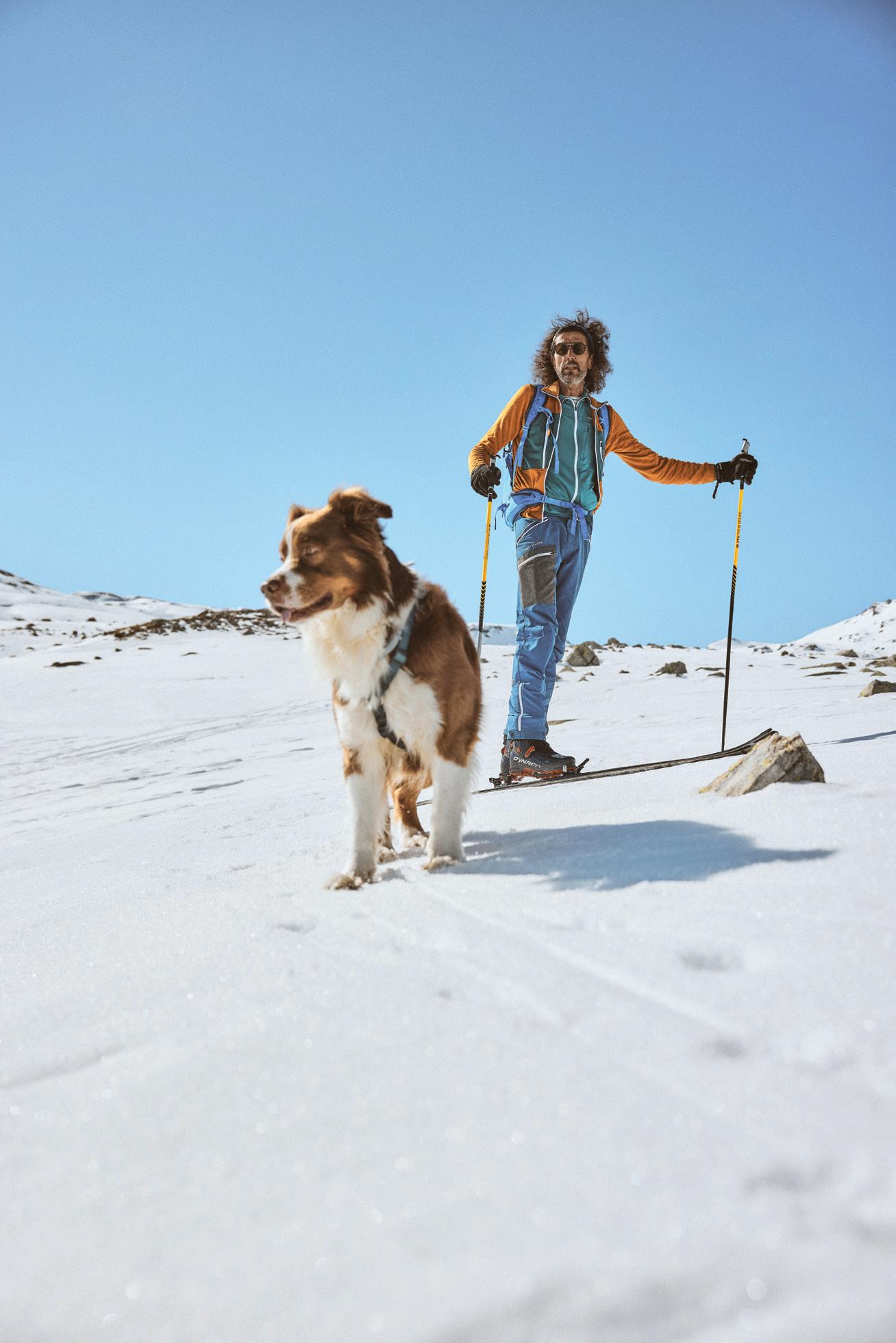 BY EVA TOSCHI PHOTOS PAOLO SARTORI
BY EVA TOSCHI PHOTOS PAOLO SARTORI
dent and to focus on the experience itself and not on the summit. When you live a full experience, it is also easier to give up. As guides we must be bearers of knowledge, create culture. You no longer drag people up, like on a leash. Guiding now also has a social role. Before, the idea was that the less you taught the customer, the more you worked. For me it's quite the opposite: the greatest satisfactions are former clients who are now even better guides than me. There will always be a lot of people to guide. Of course, if I lose a customer because he goes with another guide, I feel bad, but if I lose him because he goes alone, I'm happy because I've achieved my goal.
Tell us something about the Or-
THE PILL INTERVIEW
BY EVA TOSCHI PHOTOS PAOLO SARTORI
mission. We have a huge responsibility because by guiding people we can influence them. We can do it by how we dress, how we eat, how we move in the mountains: everything is transmission. Sometimes I go overboard with the message. On a practical level, I always propose itineraries with alternative mobility or in places that I can reach with my electric car that I charge with photovoltaics. It is the concept of "removing mountains" that fascinates me a lot, because if you lengthen the journey you have a full experience to live. We need to be an example, but at the same time be flexible, not fundamentalist. It's a fine line but I try to balance it as much as possible.

36
We have a huge responsibility because by guiding people we can influence them. We can do it by how we dress, how we eat, how we move in the mountains: everything is transmission.
ANYWHERE IS WITHIN WALKING DISTANCE

OGNI META È NEI TUOI PASSI
ISPIRATA ALLE DOLOMITI, CREATA DAI PIONIERI E INDOSSATA DAGLI AVVENTURIERI, DAL 1897.
CRAFTED TO PERFORM
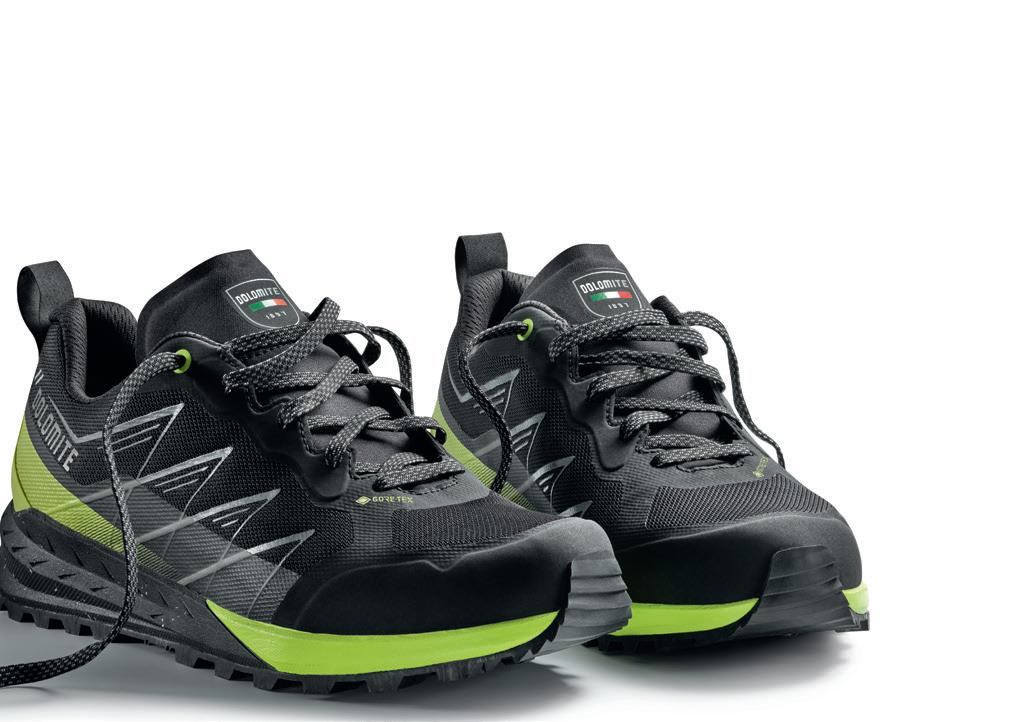
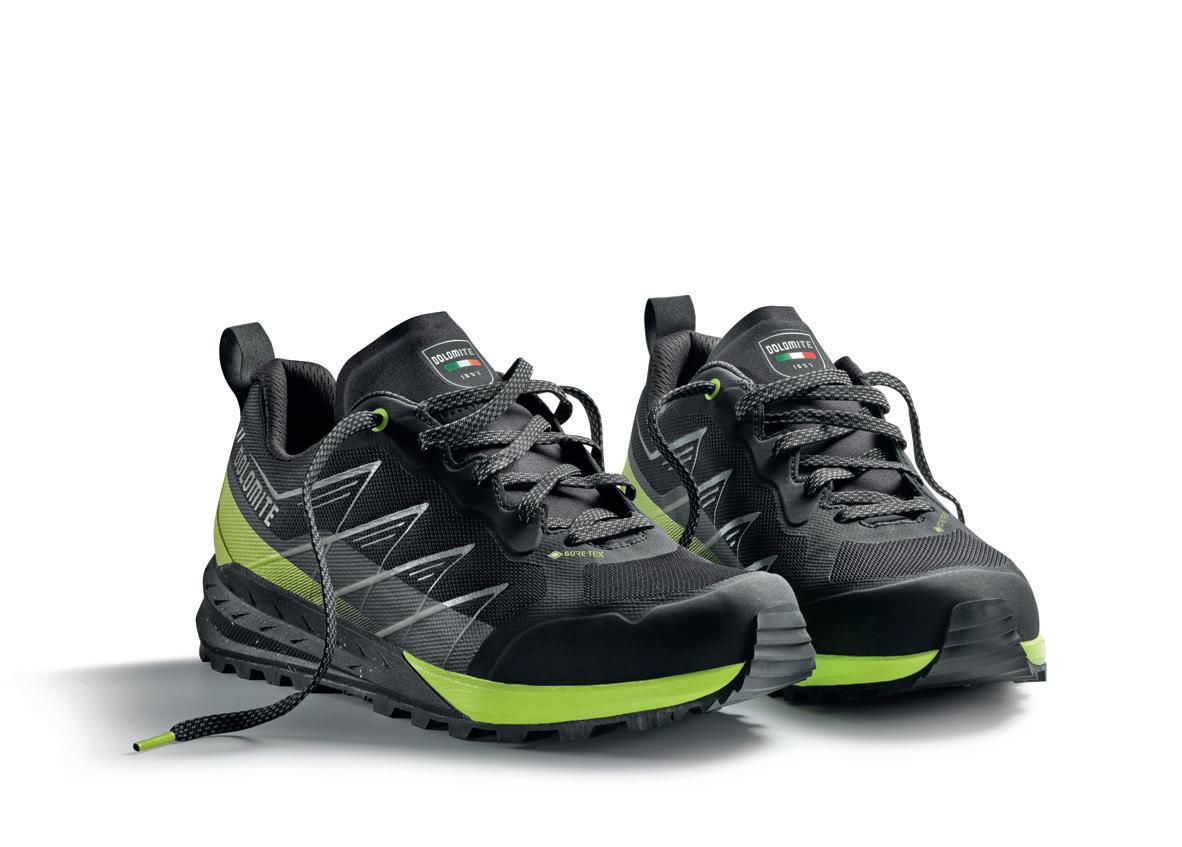
37 DOLOMITE.IT
CRODA NERA TECH GTX
BY SILVIA GALLIANI
Salewa Six to Nine Kick-start your day
continued to change, as has its very de finition. Salewa has set itself the goal of evolving and growing hand in hand with mountain sports, offering the best possible technical solutions for each discipline. That's why we're so excited to introduce our new speed hiking range for 2023” says Marco Busa, Salewa’s General Manager.
So for Summer season 2023, Salewa is launching Pedroc, a speed hiking collection that combines tradition with innovative fabrics and technical solutions and a fresh and current design. The new Pedroc collection is made up of light, breathable and qui-
ck drying garments, plus two models of shoes and a backpack in men's and women's versions. The line therefore combines the properties of technical mountain garments with the need for light and fitness-oriented products, creating an ideal concept for speed hiking clothing, a practice that offers various benefits on both a physical and mental level. The motto of the new Salewa collection, "Six to Nine - Kick-start your day", fits into this context. An invitation to get up early, even during the week, and start the day on the right foot,
speed hiking wherever you are: parks, hills, coasts, mountains. In short, any natural environment that offers a little ascent and a beautiful view, whether it is the one of a valley or the one of a sea, a lake or a city.
The cornerstones of the line are the Pedroc Pro Polartec Alpha jacket , an insulating garment weighing only 160g, ideal for intensive speed hiking in alpine environment but also suitable for shorter trainings close to home. Excellent thermoregulation, especially in situations of tempera-
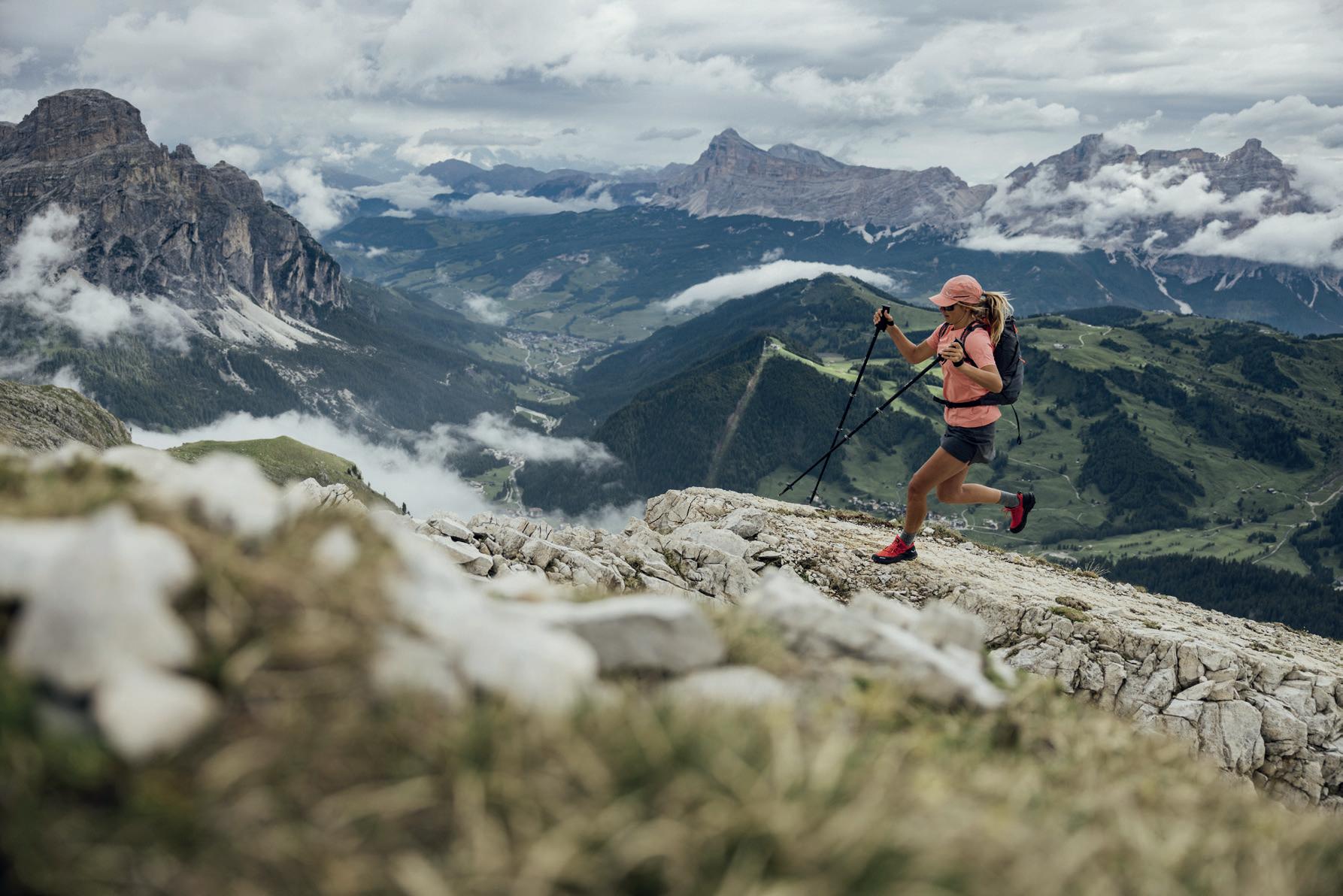
38 THE PILL PRODUCTS
This is the motto with which the South Tyrolean brand Salewa presents Pedroc, the new speed hiking collection created to experience nature in its most magical hours.
ture range and variable weather conditions thanks to the Polartec Alpha Direct fabric which ensures comfort and well-being even during prolonged activity. This technical material, made from recycled PET bottles, boasts active insulation technology that regulates body temperature in both static and dynamic conditions.
With the new Pedroc 2.5L Powertex Light jacket, on the other hand, even the most ambitious goal becomes reachable and within reach of the speed hiker. This model was created to have a minimum weight (190g), small folded dimensions and a perfect balance between breathability and weather protection. On the footwear side we have the Pedroc Pro Mid PTX model that combines versatility, style and durability in a single model that adapts as much to sports training in the mountains as to everyday life. Thanks to the Speed Hiker Pro sole by Pomoca and the reinforcement at the ankle, it looks like an agile technical shoe but capable of giving safety and protection in the environment. The raised edge in TPU, the PFC-free Powertex membrane and the Powertex padding protect the foot by keeping it dry during any activity. Last but not least, the Pedroc Pro 22L M/W backpack, which thanks to its close-fitting structure hugs the back without hindering movement. It is made with the new Duralite double ripstop nylon fabric, which promises considerable resistance to tears and abrasions while being very light. This has allowed Salewa to develop a backpack full of details but weighing only 570g. So light you forget you're wearing it even when speed hiking at speed.
To promote the launch of the collection, on sale starting from spring 2023, a short film was shot in different locations, such as the Dolomites, Nice, Singapore and Boulder (Colora-
THE PILL PRODUCTS
BY SILVIA GALLIANI
do), which will be published on YouTube in early April.
For the occasion, Elisa Deutschmann, Salewa athlete and speed hiking enthusiast answered some interesting questions.
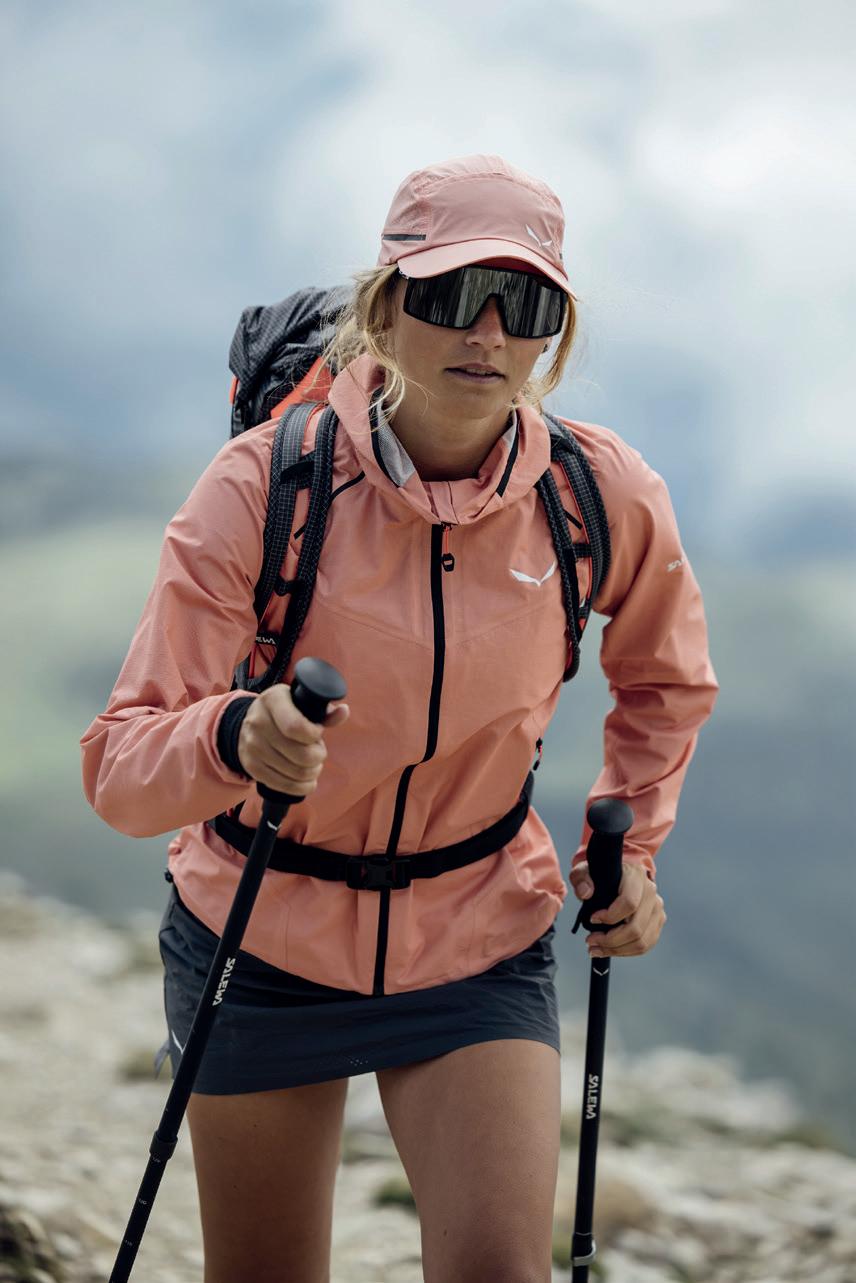
Elisa, what is speed hiking and how can you start practicing it? Speed hiking means walking quickly, but at your own pace and in your own time, to see how far you can go in a short amount of time. It's not just a question of fitness: in reality, the most important aspects are, on the one hand, the health benefits, and on the other, the possibility of
you don't need to take long car journeys or plan trips for several days. Just immerse yourself in the authentic and unspoiled beauty of nature, without necessarily going far.
When can you practice it? The best time is just before sunrise. There is something magical about the moment the sun rises and the world starts to wake up, and everything is still immersed in silence and tranquility. With less traffic and less noise, it's easier to notice the sounds of nature, such as birds chirping or even just our breathing, and see small details that inspire us. Early in the morning we are fresher, curious
OspreyWomen’s Fit: always supporting women
For more than thirty years, Osprey has been tailoring backpacks to fit different body types. In fact, the first model designed exclusively for the female physiognomy dates back to 1993.
“A crucial step in providing excellent fit is accounting for different body shapes and sizes” says Amy Schlosser, Osprey’s Senior Product Designer. “At Osprey we continue to improve our women’s fit through countless hours of field research and testing. We are relentless in our efforts because we know that better fit leads to greater comfort, which means more time enjoyed outdoors.”
But why is it important to take the correct fit into account when designing models dedicated to women?
As Osprey Ambassador and mountaineer Kristin Harila explains, a woman's body has different needs: “equipping women with the fit and features they need means everyone has the opportunity to explore the outdoors, and that means creating a world where women and men can enjoy the outdoors equally.”

However, the backpack design doesn't just provide the functionality you need in the great outdoors, but also understands the needs of different bodies and ensures that everyone can experience their favorite activities without compromise. Wearing a backpack that doesn't fit properly, for example if your torso is too long or too short for your back, if the shoulder straps are too loose or too tight for your shoulders and chest, or if
there isn't enough padding where it's needed, then the weight will not sit comfortably on your hips and shoulders, making movement and progress over difficult terrain harder than it should be. Headaches and hip pains are just some of the problems that can arise from wearing a model of the wrong size. A fitting backpack that remains comfortable is therefore an absolute necessity to be able to reach a high level, over a long period of time.
40 THE PILL PRODUCTS
THE PILL PRODUCTS
BY SILVIA GALLIANI
That’s why Osprey's women's backpacks feature a back system that has been custom designed to provide an optimal fit for a female body, offering high levels of comfort and support. This is achieved with a shorter torso length and a tighter, shorter harness as women generally have narrower shoulders than men. It is also necessary for these models to have a hip belt that naturally wraps around the female curves, offering better load stabilization and greater support in order to take some weight off the back.
Norwegian mountaineer Kristin Harila is an example of how women can compete with men in the world of mountaineering, and having a backpack with the right fit for your body is an important factor for the success of an undertaking. “A body-specific fit backpack is important for all women, but the more challenging the conditions, and the things you're going to do, the more crucial a body-specific fit becomes” she says.
“Osprey has been leading the way and taking the pack fit needs of women into account for the last thirty years and it’s fantastic to see how many women’s specific backpacks they now offer, helping to ensure equality for women in the outdoors.”

Whether you're an everyday adventurer or planning to tackle longer distances, the fit of your pack can mean the difference between a rewarding adventure and an uncomfortable experience. Feeling comfortable in your environment is an important factor that instills security. By choosing the right fit we will be able to face everything that the great outdoors has to offer.
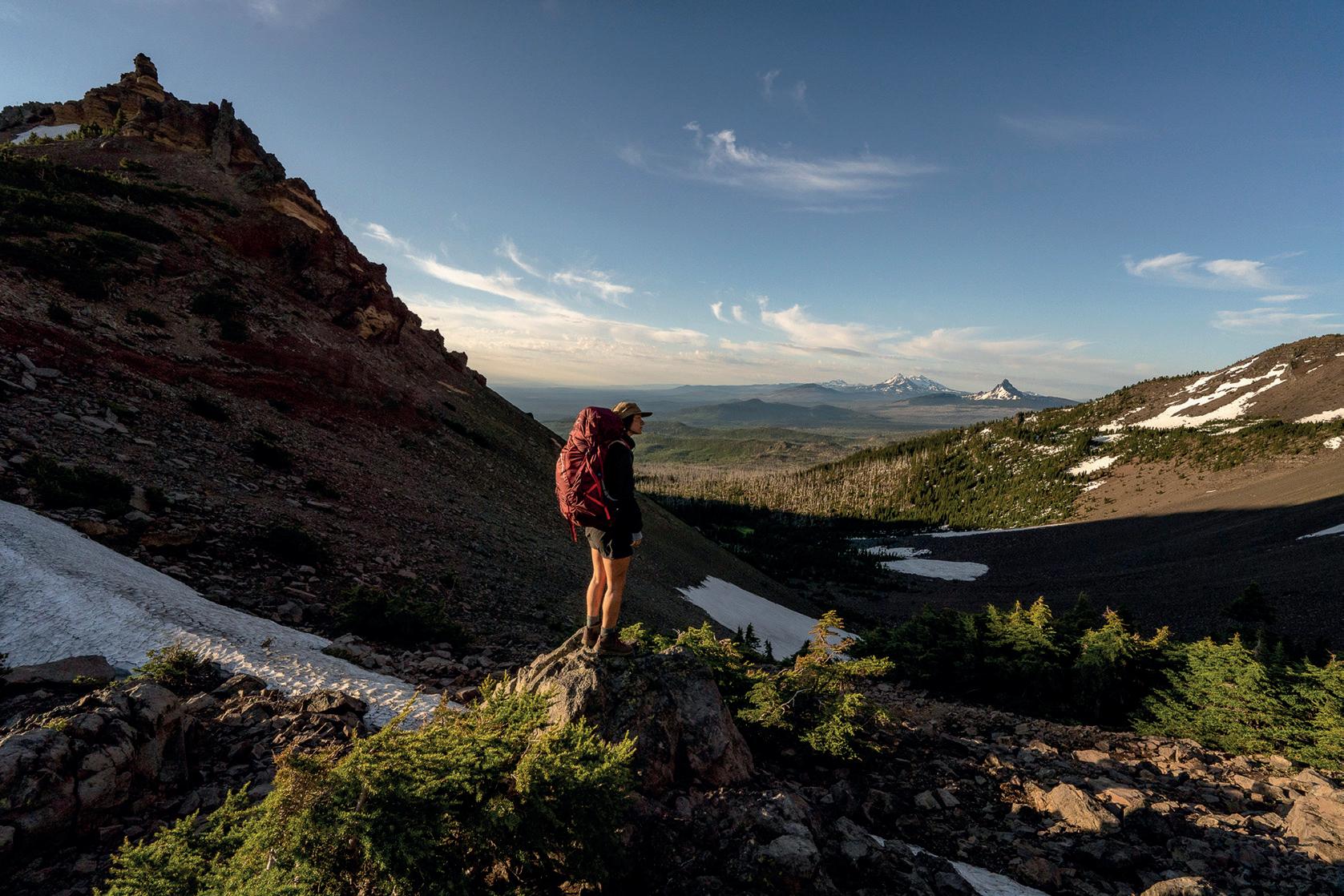
41
Happy birthday Aku Conero GTX
AKU's best-known and most loved trekking shoe turns thirty and, to celebrate that, it triples itself. Here are the three new and limited edition colorways with which the brand celebrated its iconic shoe.
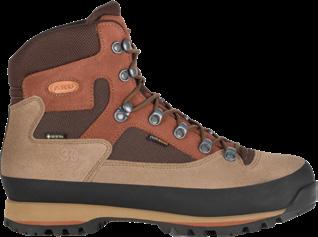
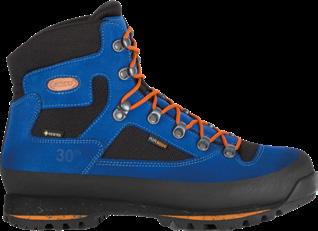
In the middle of the room on the first floor of the Vibram Connection Lab there is a yellow block with a boot on it, also yellow, with the sole cut into layers. The shoe displayed is legendary for trekking lovers and, in this colorway, in reality, it did not exist and will not exist: AKU's Conero GTX has been in fact reworked specifically for its thirtieth anniversary. The full yellow model is one of the three realized for this limited edition to celebrate the first three decades of Conero model and, specifically, it is the result of a collaboration with Vibram which, with the Fuorà sole, has been AKU's partner since the birth of this shoe. Yellow is the color of Vibram logo and this monochromatic model is a recognition of the thirty-year partnership between the two companies. Alongside the full yellow model, two other color variants have also been created in limited editions: one in burnt brown and beige and the other one in blue and orange, the latter symbolizing respect for the environment and the company's commitment towards sustainability and the other one safeguarding the manufacturing tradition that has always characterized AKU.
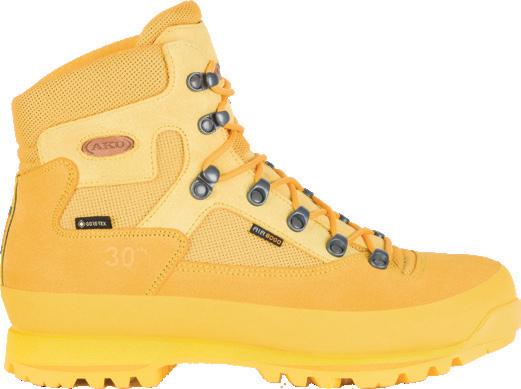
In fact, the history of the brand began in the 1990s, when the founder, Galliano Bordin, met the young and talented
THE PILL PRODUCTS
BY ILARIA CHIAVACCI
designer Pier Callegarini. Those were years of great experimentation and AKU was putting down the pieces of what would become a very solid reputation as a manufacturer of high quality mountain footwear. The attitude towards innovation, understood both as attention to style and as a search for technical solutions for the functionality of the product, has been the keystone that has allowed the company from Montebelluna, in the province of Treviso, to establish itself on the international panorama. The history of AKU can be compared to many of the names that are today the leading brands in the outdoor sector and which basically all have a very similar origin: artisan families with enormous expertise and a great passion for the mountains and outdoor life. Galliano Bordin is in fact the son of shoemakers and learned the secrets of shoe repair and construction as a child, the meeting with Callegarini then leads him to move the expe-
rimentation bar a little further: this is how was born the Conero model, as well as many other models that over the years have led AKU to be known and esteemed all around the world. Each of the three models has a reference in the history and values of AKU: the full yellow represents and celebrates the partnership with Vibram, the brown and beige one the company's history and manufacturing expertise, while the blue and orange one translates into tread and upper the brand's philosophy regarding the commitment to reduce its environmental impact. In fact, one of the fundamental assets of AKU products is their durability, both in terms of the essentiality of the design, based on the Designed to Reduce principle, i.e. removing where it is not necessary, and in terms of product resistance, a fundamental element for extending the life of an object like an hiking shoe.
42
THE PILL PRODUCTS
BY ILARIA CHIAVACCI
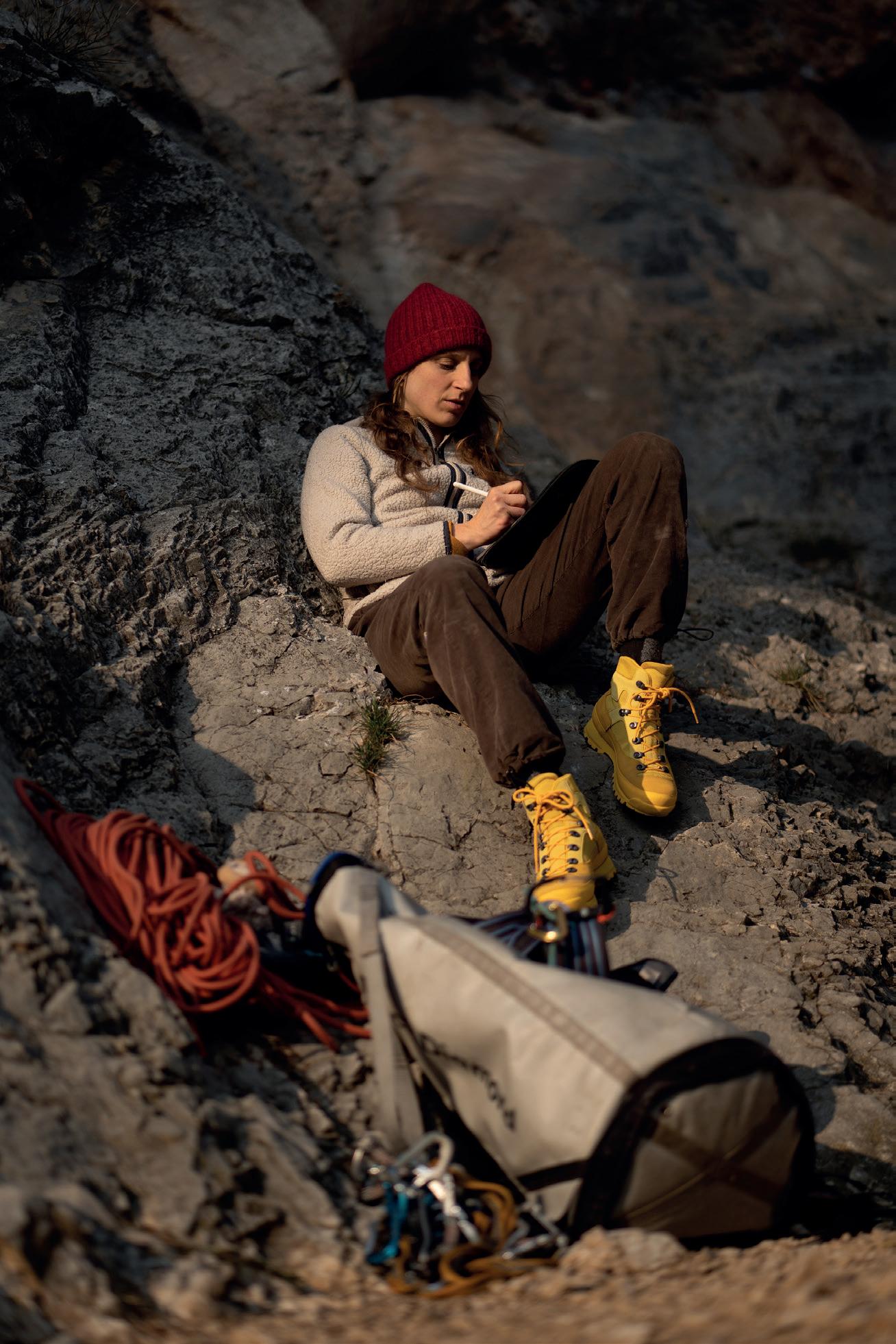
Comfort and precision with the new Sulfur by Tecnica
New for the SS23 season, Sulfur is the fast approach shoe designed for mountain professionals and experts with adaptive shape technology.
Tech approach shoes have always been the go-to models for professionals, mountaineers and expert hikers. They are designed to offer the precision and grip necessary for climbing on normal routes, via ferratas and to accompany them even in the most impervious approaches. This is why it is essential that agility is accompanied by great comfort, essential for long days at high altitude.
The development of approach shoes has always been based on achieving a compromise between these opposite features: speed and comfort and finally, thanks to the use of new technologies such as the Adaptive Shape Technology (AST), Tecnica has developed an uncompromising solution: the new Sulfur. The upper has been designed to wrap the foot like a glove and guarantee excellent forefoot and heel support, even on the most technical terrains, while AST technology was used for the shape, as Adriano Rossato, outdoor footwear manager of Tecnica, told us about.
AST, Adapative Shape Technolo gy: can you explain what this new acronym means? shoes should adapt to the shape of the foot, and not vice versa. Starting from the 2023 summer season, we are introducing the new AST technology, which means Adaptive Shape Technology, precisely to meet the fundamental need of those who walk in the mountains, that is, a shoe capable of adapting to the shape of the foot, ready to use right out of the box. This goal takes the form of products that make no compromises between performance and comfort. What is it exactly? AST technology

concerns aspects of both design and production, i.e. the way our shoes are designed and manufactured, as well as innovative materials and solutions. Our shoes are built around shapes that represent the foot in a realistic way, as can be seen very well, for example, in the heel and malleolus area. Unlike traditional shoe shapes, which are quicker and cheaper, our anatomical shapes allow us to keep the promise of a superior fit, which you feel from the first step on. In terms of materials, AST technology provides different solutions for our different models according to the specific needs of each activity, such as adapti-
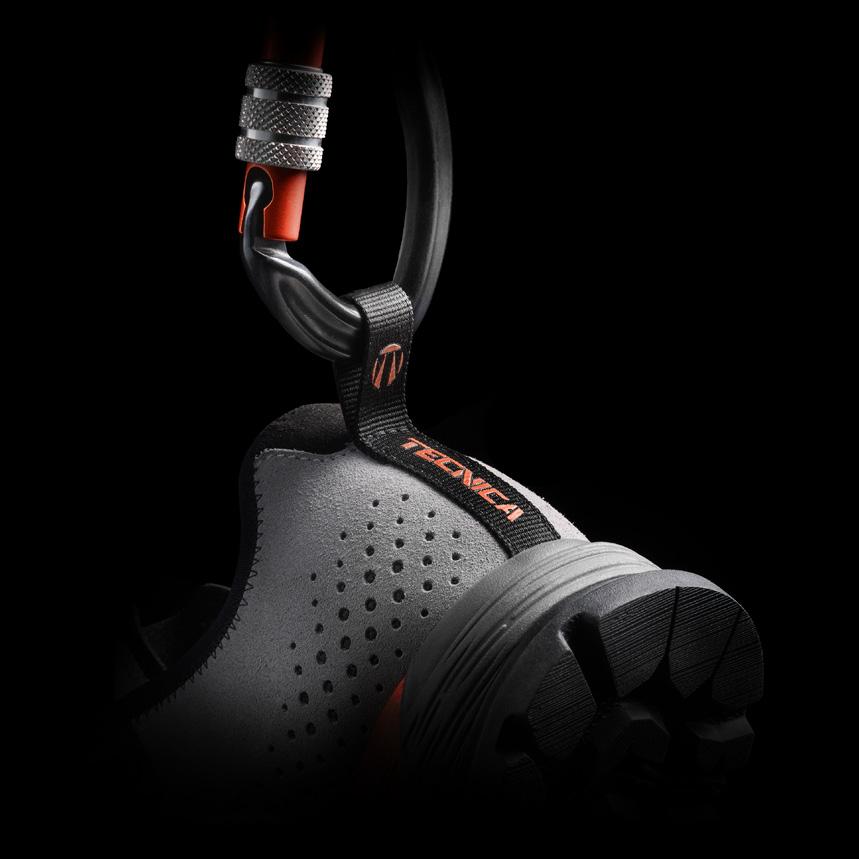
44 THE PILL PRODUCTS
ve memory foams in EVA of different densities, preformed thermoplastic inserts, Ortholite insole.
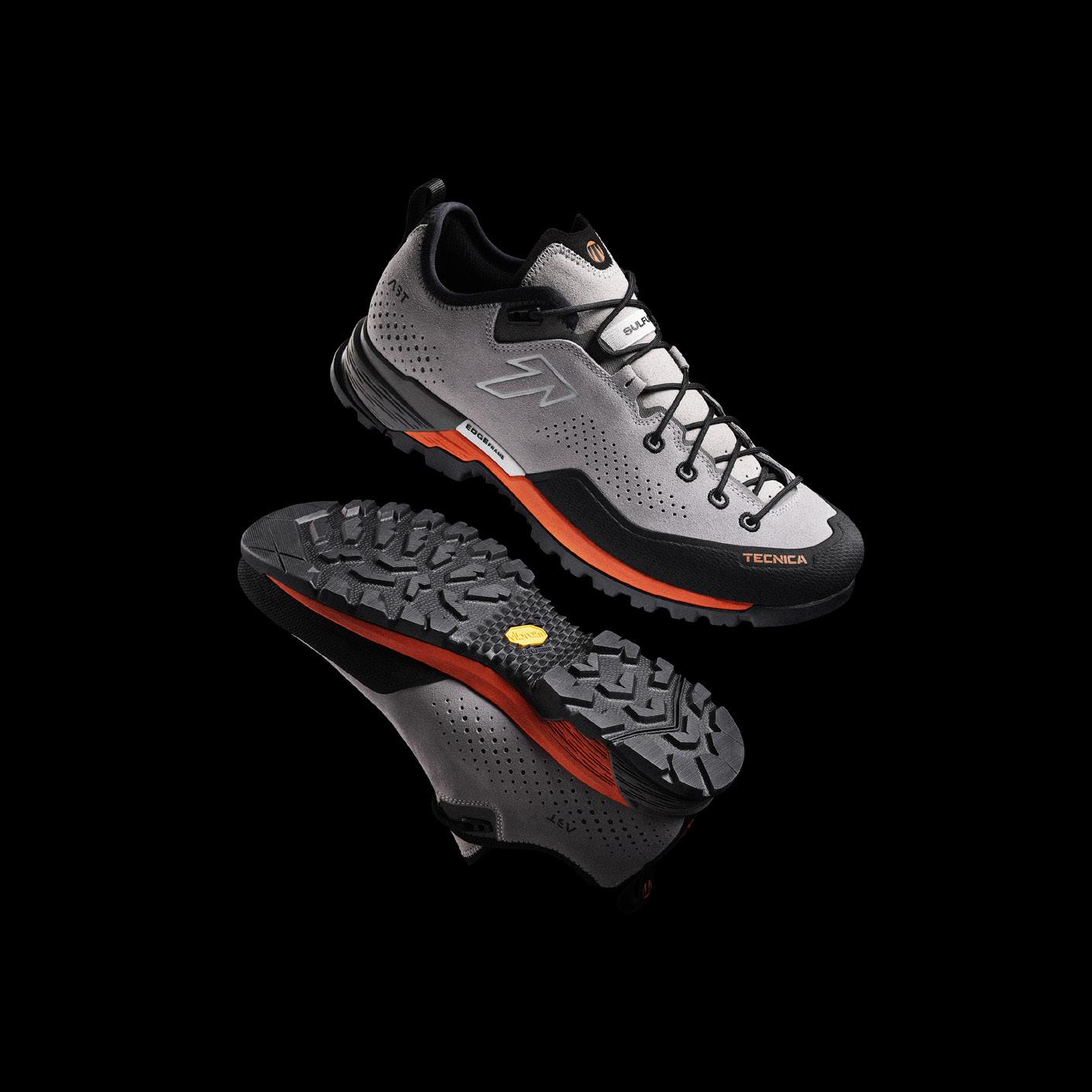
What changes and what new benefits does it bring compared to the previous CAS technology? AST is the evolution of CAS - Custom Adaptive Shape technology. With AST we take a big step forward, somewhat anticipated by the evolution that CAS itself underwent in the seasons following the first launch. With AST, our shoes offer unparalleled foot wrapping, with excellent heel and forefoot containment, without the need for customization. So now it's enough to put on the shoes as they come out of the
box and go walking. Customization is still possible but recommended only for users who have specific anatomical or shoe usage needs.
Edge Frame and revolution. The innovative Edge Frame plate in TPU positioned in contact with the midsole is the real secret of this phenomenal shoe. Positioned in contact with the midsole, it works in synergy with it to provide the Sulfur with rigidity and support for climbing, and flexibility for hiking. The sole is made of Vibram Megagrip compound, which offers unrivaled grip on dry and wet surfaces and effective traction on mixed terrains and in variable con-
ditions. The toe of the Vibram sole features a flat area typical of climbing shoes to offer precise support and effective hold at the toe and on the edge while climbing. Available in two upper solutions, 1.5mm suede or ballistic fabric, both available in GTX version with Gore-Tex lining to keep feet dry and comfortable all day long. The new Sulfur will be available in specific versions and colorways for both men and women, for a total of eighteen variants.
45 THE PILL PRODUCTS
THE PILL PRODUCTS
BY SILVIA GALLIANI
LaMunt Tailor it Yourself
LaMunt, high-quality mountain apparel brand "by women for women," a year ago unveiled to retailers and media the spring/ summer 2023 collection characterized once again by the foundational values of this brand: attention to women's needs, sustainability, and research on materials and style with a focus on the fitting.
By pursuing the values that set it apart, LaMunt further expands its range of Smart Fit Solutions to tailor each garment to meet individual needs. The Ali Shape concept, which has been around since the first collection, can also be found in the brand's new proposal through a soft and "round" design that recalls the sinuous forms of the female body, completed by alternating ventilated areas and reinforcements in the areas that need more protection. The leitmotif of the collection remains the extreme versatility of the garments, adaptable to the multiple needs of the wearer thanks to the new "tailor-it-yourself" concept with which LaMunt not only finds the right fit for each type of fit, but also creates garments capable of literally adapting to the different silhouettes of each woman.
"For us at LaMunt, it's all about inspiration," claims Ruth Oberrauch, founder of LaMunt. "We want to inspire women to spend their time in the mountains, savoring every single moment in nature. Fun-
ctionality and aesthetics are the essential ingredients of our collections, which prove, season after season, how the combination of these two elements can best express women's multiple individualities."
All this without forgetting the fundamental theme of sustainability. In fact, LaMunt is a member of the Fair Wear Foundation and has been awarded Leader Status since its first year of operation. Each garment is produced in controlled companies, with a careful selection of the materials used, recycled and latest generation, ranging from post-industrial recycled cashmere to synthetic materials. Even for outerwear, the choice was clear: only DWR (Durable Weather Repellent) coatings made without the use of PFCs are used in LaMunt's collections so as not to harm the environment.
"Energy" Capsule Collection
With these values, LaMunt launches the exclusive "Energy" Capsule Collection, consisting of a crop top, leggings, shorts and a shrug. The
special feature of this collection is that the garments are customizable with a simple do-it-yourself cut. All products are made of a recycled, stretchy and tight-fitting fabric that once cut leaves no threads, ensuring a "clean" cut.
Eliana Hybrid Wind Jacket & Eliana Wind Vest
A hybrid wind jacket with a double-zip closure system, allows you to adjust the layering according to the weather conditions and your specific comfort. On the front and shoulders, the jacket is made of a three-layer, windproof, 100% recycled stretch fabric, while for the inserts under the arms and on the back, a highly breathable and stretchy material is used for maximum freedom of movement, once again, 100% recycled. Urban attitude and casual style, on the other hand, are the features of the vest designed for outdoor activities that retains the same technical and performance characteristics as the jacket.

46
THE PILL PRODUCTS
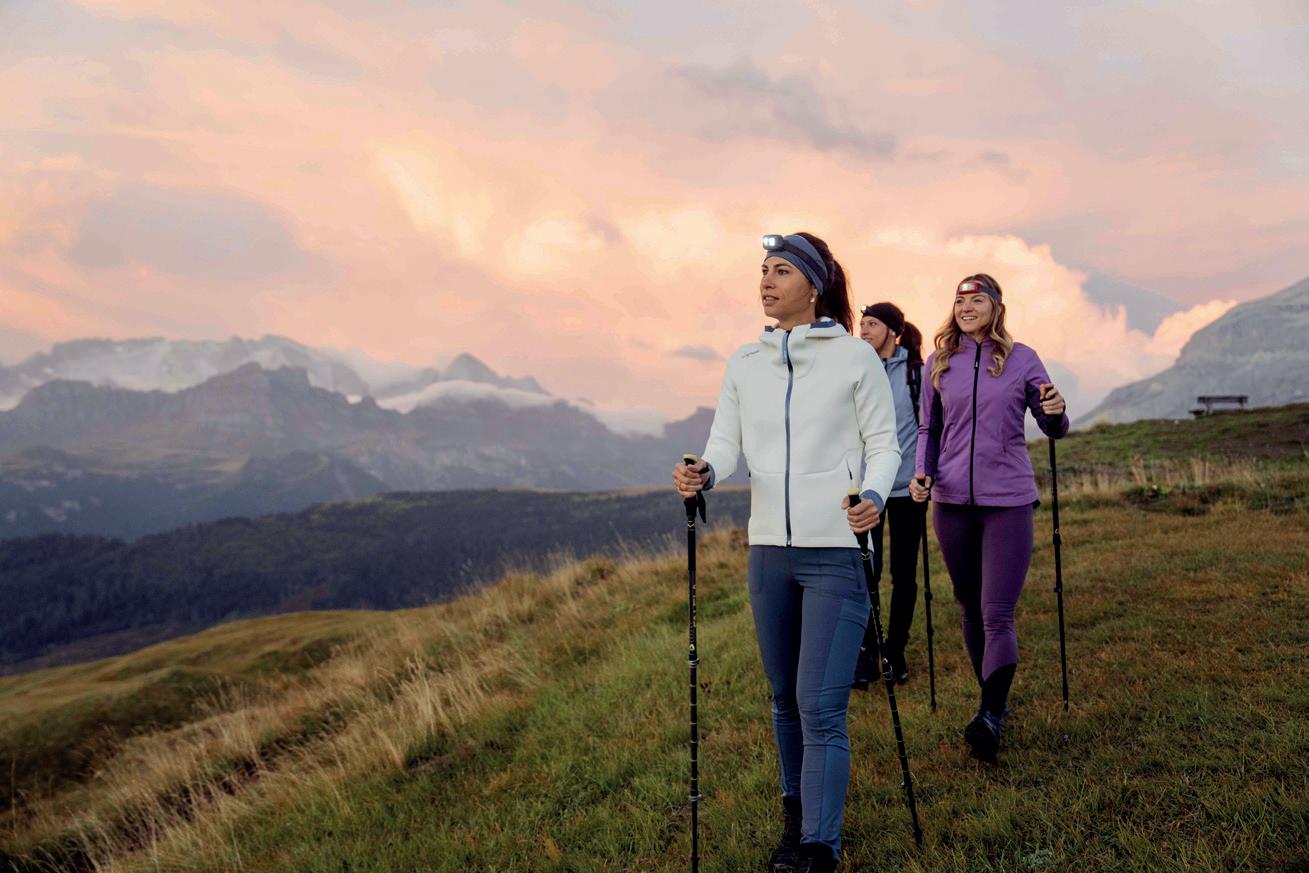
 BY SILVIA GALLIANI
BY SILVIA GALLIANI
47
Sisterhood & snowboarding at 6000 meters high
BY ILARIA CHIAVACCI PHOTOS MATHIS DUMAS
What do you do after winning the Freeride World Tour four times?
Simple, if you're Marion Haerty pack your bags and leave for Nepal where you set up an all-female video production.
“Didi” in Nepali means elder sister and that is what Dawa Yangzum Sherpa (IUAGM's first and only Nepalese guide), Fura (Everest and Ama Dablam climber), Mingma, Maia and Phurba, Nepalese guides and porters, were for Marion Haerty, the most awarded snowboarder ever, in her ascent to Lobuche Peak, a Himalayan peak at an altitude of 6000 metres. Marion, who has won the world title in the Freeride World Tour four times, has more or less nothing to prove in snowboarding, but her curiosity and desire to always push herself a little beyond her comfort zone has led her, with the support of The North Face, of whose team of athletes she is part, leaving for Nepal to make a documentary on the ascent of Lobuche and on the descent but, above all, on her travel companions, the “Didis” who made the whole project. The team, made up entirely of women and girls, is in fact the pretext for bringing attention to the stories and challenges that they have to overcome every day in a still strongly patriarchal system. Among them there is also
Dawa Yangzum Sherpa, the Queen of the Himalayas, as she is called, an expert and respected guide: like all of them, she has paved the way for herself, because the girls are not encouraged to do this type of work, which is dangerous, away from home and purely regarded as masculine. Today there are more and more women who are porters: this leads them not only to earn, but to meet people from all over the world and become more and more independent, but it is still an uphill road, on which Marion wanted to turn the spotlight on. How did you come up with the idea of this expedition with an all-female team? Well the answer to this question could also be why not? Why turn the spotlight always on men and never on us? However, I would not say that I was driven by a purely feminist intention, but rather I wanted to try to understand what was happening on the other side of the world: too often we are focused on our little universe in Europe while I firmly believe that, if only we knew each other little better, we could help create
a better world. For me this project was not only the opportunity to make a crazy descent, but also to create something to share, a beautiful story that for once involved only women: I wish it could be an inspiration for future generations, especially in countries like Nepal.
Didi talks about a sporting feat, but also about sisterhood on the other side of the world and at an altitude of 6000 meters… It was great to be able to have this experience with them, and it was something I never expected when I started thinking about the project, I think we will be friends forever. All the girls have been an incredible source of teaching: they are always so kind and happy, they are very poor and yet they always smile, much more than us Europeans. It's something that made me think deeply: what's the problem with us, with all our things and comforts, to always be so stressed and angry? Having had the opportunity to spend a lot of time with Nepalese girls has been an incredible experience for me, probably one of the best in my life, I consider myself
48

very very lucky. The great thing is that they told me that it was the best expedition ever for them too: I exploded with joy. I have so much respect for them, it was an honor to learn so much about them and their lives. It was palpable how genuinely happy they were with my interest, often the people who work with these girls are not much careful, they leave their bags and barely speak to them, say hello, maybe talk a little when they reach the top and that's it.
How do women live in Nepal?
The Sherpa village is different from places like Kathmandu: in the mountains they have more respect for women, but when you move away from the more rural areas the situation changes radically, and it is very difficult for girls even to go to school, let alone find the job they want. But it was not easy to go deeper into this kind of topic: I myself am not a sociologist, but it is not difficult to understand that the situation is not simple for them. The same work as a porter is very hard: Maya, for example, is 50 years old, she will continue to move forward as long as her body supports her. They don't have a social security or a retirement system, so they have to try to accumulate as much as possible while they can.
Did you face any difficult moments? Obviously, as always in the high mountains, but the most difficult thing was accepting the fact of seeing them carry my bags: Yaks did most of the work, but there was one girl in particular who was for me heartbreaking to watch. The others told me I shouldn't be sorry, because thanks to that job she was earning a lot and she was happy, because she could have
bought things in Kathmandu and at least in those days she didn't have to work in the potato fields. In addition to this she was clearly also very strong physically: I hadn't eaten enough and reaching the top was an almost mystical experience.
Exciting too, but I guess… For me it was crazy just to stand there for a while and contemplate the view from the peak, because it was something I had never done before and to be honest, I had this inner conflict: somewhere inside me I doubted that I would succeed. No matter how many Freeride World Tours you've won, it's always hard to find the confidence within. Standing there looking at Everest with this collective of women and knowing that they were there to make a film production with everything that it meant, from putting the production together to finding sponsors, was incredible.
About sponsors... Are they more difficult to find for a female athlete? That was the case ten years ago, but now the attention of brands is very different and, in some ways, you’re lucky to be a female athlete today, because all brands want to include us in their roasters. I think this is an interesting moment for the girls: a project like Didi would not have been possible in the snowboard industry even 10 years ago. After the me too movement there is a general trend, but not only in sport, also in politics or in fashion: today you have to talk about us and with us while we have the opportunity to make ourselves seen and heard. Would you say snowboarding is a sexist environment? Not per se, but I think that to push their limits, guys prefer to ride or race with other guys. I've never felt unwan-
ted or not accepted, and if I'm here today it's also because I've always been around guys. Episodes of machismo, however, are everywhere, so clearly also in snowboarding.
Accidentally you were the first woman to descend Lobuche Peak, I personally hate headlines that read “the first woman to do this and that”, how do you feel about it? The goal has never been to become "the first woman to descend Lobuche Peak", also because I discovered that while I was already going there. I know that for the media it is something very appealing to write, but it was my first expedition and what I really wanted to do was something that would leave a mark but, above all, direct me towards something that I would like to do more and more in the future.
Are you saying you're leaving the races? Not at the moment, but I was just a little bored with it. Snowboarding for me has never been about collecting medals and good results, so I thought it was time to start doing something different. In this sense, this expedition to Nepal was a kind of test: I tested myself not only from the point of view of the altitude, but also by the fact that I came very deeply into contact with another community and another culture. Thanks to this, I'll face the next races with a different spirit: it's as if, having won FWT 4 times, I've done what I had to and now it's more something I do for fun. I think growing up means this too, seeing things from another point of view. At Extreme in Verbier my goal will therefore be to have fun with my friends and celebrate this sport, let myself be inspired by others and find the best line for me at that moment.
50
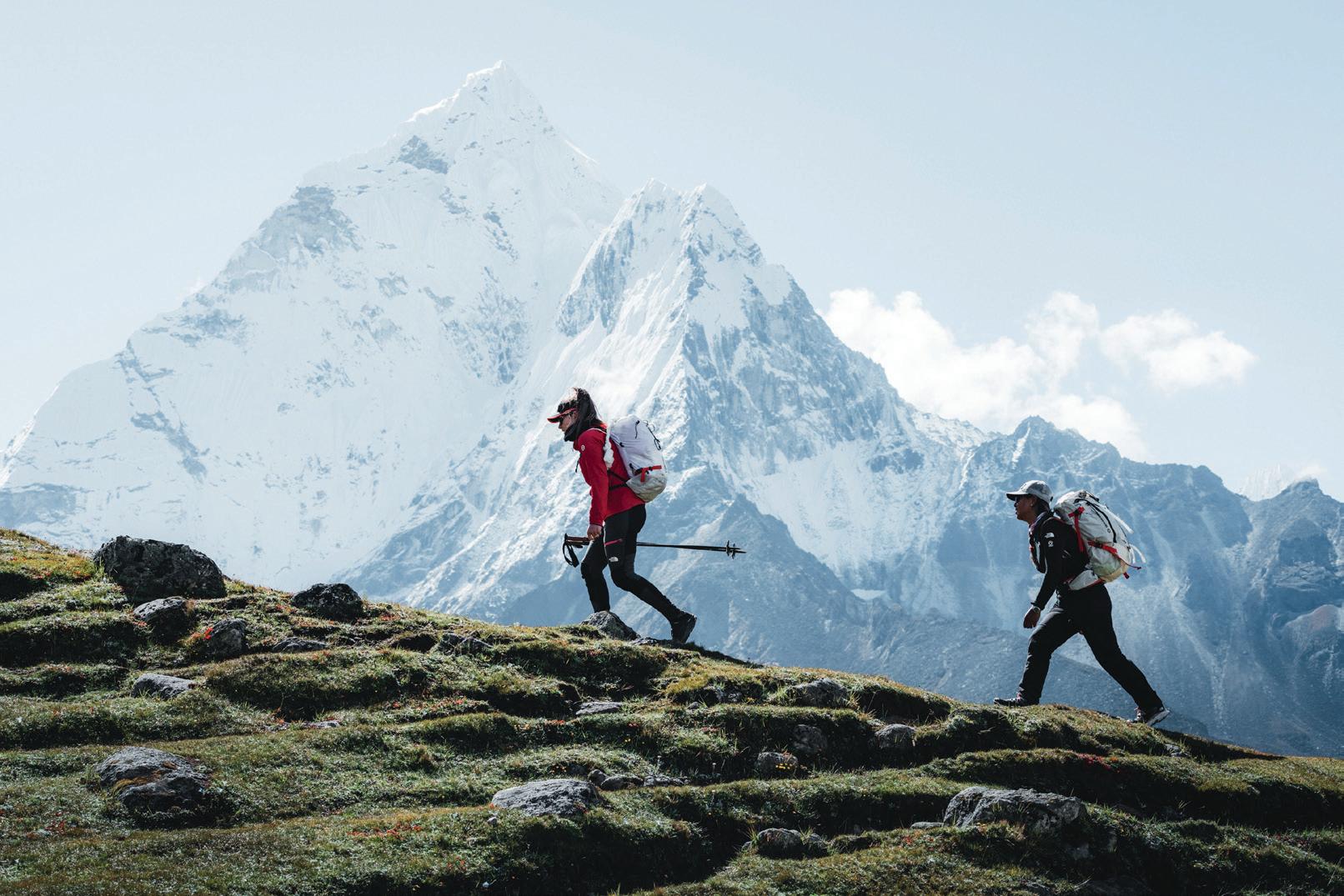

It's all about skins and concentration
BY FRANCESCA JOANNAS PHOTOS PHILIPP REITER
Giulia Murada, born in ’98, and Axelle Mollaret, born in ’92, have both worn ski touring skis at a very young age, only from two different sides of the Alps. From the first races to the last podiums in the World Cup, the two champions certainly did not hesitate to leave their traces. They told us about the current season, between hardships and satisfactions.
Hi Giulia and Axelle. Let’s start from the basis: How did you approach ski mountaineering?
GM I actually started with the classic alpine skiing course, but immediately, thanks to my dad (Ivan Murada, ski mountaineering world champion in 2002, ed), I realized that my future was uphill. I've always followed him, even when I was too little to understand what was going on. As soon as I was able to appreciate off-piste skiing, I started ski mountaineering at the age of twelve. The first races came shortly after. Since then, he has never stopped being my coach, but I have always called him by name, especially during training. This allowed the establishment of a double complicity, a duality that I really like in our relationship. Sometimes this two aspects stay separate, but not always: he knows me so well that his feedback is extremely effective and hits the mark.
AM I started ski mountaineering when I was eleven, with my parents, or rather to please my dad. We used to climb the mountains of Arêches-Beaufort, the stage of the Grande Course where the Pierra Menta is held: this is my absolute favorite place, where I was born, where I live and still train every day. I entered my first competitions a few years later, in 2008, when I was fourteen. Since then, I've never stopped. I joined the French ski mountaineering team at the age of 20, I was the youngest athlete on the team.
You just got back from Boí Taüll. Can you tell us something about the race?
GM I went home satisfied, even though I was initially disappointed with the first few races. Throughout the season I achieved results above my expectations and I arrived at the -
se World Championships hoping to maintain this trend. I set off a little bold, let's say, with the idea of flying all five races thinking it would be a piece of cake. When I finished fifth in the sprint category, not that I wasn't happy about it, but I couldn't help feeling a bit of disappointment and a bitter taste in my mouth. I really believed I could make a podium finish at the world championships after all the podiums in the season. The next day I wanted to make up for the missed medal with the vertical, and it was the worst race of the season, I finished eighth. I wasn't disappointed, that's how it went. It helped me realize that maybe I was tired and needed to calm down for the next races. Then came the pairs competition with Alba De Silvestro. It's the longest race in the world championship: you have to race with someone else and you're also
52
responsible for her result. Knowing that winning was impossible, we tried to do no worse than score secondand we succeeded. The sensations were definitely better for me than the day before. Finally, after a day of rest, I resumed. The third place in the individual race gave me back my motivation and in the relay race we managed to finish in a good place thanks to my teammate.
AM The Boí Taüll World Championships were definitely my main focus of the season. I have established all my season preparation for this week. I dreamed of all five races, all five gold medals: I come home with four golds (vertical, team, individual and relay race) and a bronze one. I am aware it is an exceptional result and I am very proud of it. Of course, I was the favorite for these disciplines, especially in individual and team competitions which are
my specialties, but not that this makes the race any easier. I then raced Adamello with Emily Harrop. She is a teammate with whom I have competed several times and was looking forward to this race. We were a bit worried about the length of the race, but we managed it well.
What have been the most exciting moments of this World Cup so far?
GM I would say the medley relay race. It was the strangest race: given the ones we've had this season, Nicolò Canclini and I started slowly. Plus, as I mentioned, I arrived tired and disappointed from the week and seeing many teams ahead we didn't expect to finish second. We were very happy with this result. AM I think the World Cup started to be really interesting starting from Morgins stage, our first individual
race. It's my absolute favorite format. I also really liked the individual race in Val Martello in Trentino.
How did you live the more important moments of this season? What keeps you focused and motivated?
GM I’ve realized, especially after the sprint race, that if your mind isn’t focused, you won't go anywhere. I had some concentration problems: the spring temperatures of this World Cup and the general après ski climate distracted me. I didn't realize it, I wasn't totally focused on working hard and this affected the results. I'm working a lot about this. Sometimes I succeed and that’s good, other times I have more difficulty. Although they are one of my specialties, I find it particularly difficult the sprint races: it's a constant repetition and waiting. There

53
are many suspended times that I don't always face in the best way. It helped me to know that even though I arrived at this stage of the season tired, I was also on a good level. I worked a lot on that.
AM I think I arrived fit and focused right away, at the first individual and first vertical races. In fact, I managed to chain the victories together: this undoubtedly helped me to stay motivated for all the races. With one exception, Schladming's vertical. Proof that really no one is infallible! This year I tried to redo some sprints to get as many points as possible for the overall classification. I needed them especially with this calendar which is extremely unbalanced. This made everything much more difficult. Now I am mo -
tivated because other vertical and individual races are waiting for me, in which I am very comfortable. Everything will remain in play until the final in Tromsø.
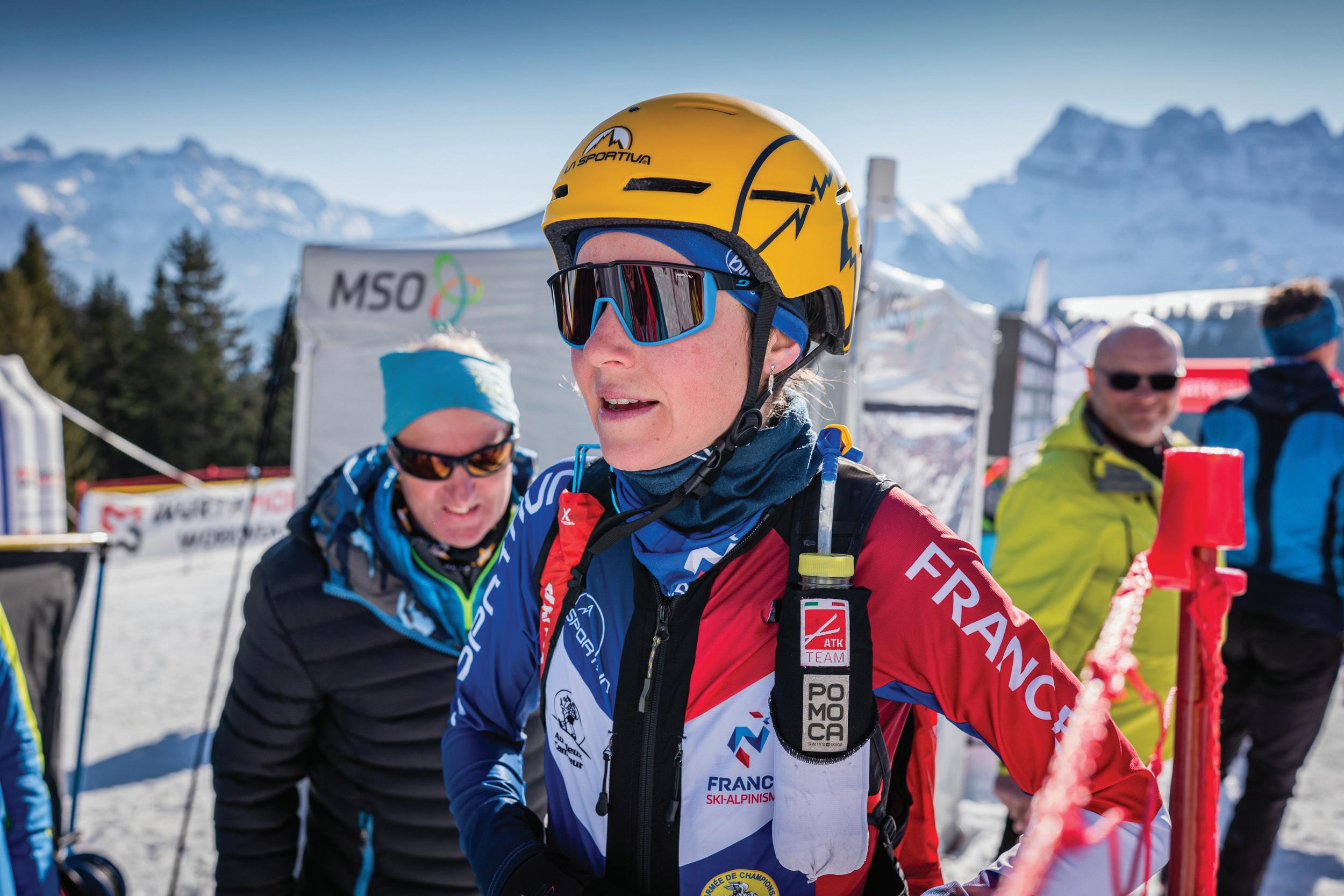
How much does concentration affect these races?
GM I would say in percentage for sprint races a good 95% is the mind and 5% the legs. It's about suffering for those four minutes, accepting to do it. If the mind isn't there and you don't accept this idea, neither are the legs. For the individual race, within an hour and a half it is not difficult to maintain concentration for continuous effort. Let’s take the Adamello race, for example: it's about remembering to put one foot in front of the other, in short, it's as simple
as it is very complicated. Over the long distances of the World Cup it is very difficult. There, the mind is essential.
AM I would say that it is essential to stay focused until the end of each race. I was always told that “until you cross the finish line, anything can still happen”. And this is true, whether you are in front or behind. This reminds me of my first junior world champion title, in 2011. I got it thanks to the comeback on the last descent, even though I was never a good downhiller! But I was very focused and stayed focused, while my opponent made a small mistake. On other occasions, however, I found myself leading the race alone and I "let go myself" a bit at too slow a pace and the other competitors caught me up.
54
Talking about opponents: how is your relationship with them? Are they a source of inspiration?
GM During the races I don't want to think about who is next to me. It's counterproductive. I try to see the opponents not for who they are, what is their name and surname, but rather to see them as who is there with me in that moment trying to win. We are all there for that, with the same goal. It's different before and after the race, we all get along. It's not always easy to interact a lot, even for language issues, but there is always great respect for everyone. I know how I work and therefore I understand how they work: I really respect the effort of the others.
AM I like the competition and of course I like being able to give my best. I'm not afraid of confrontation. I would say quite the opposite! Precisely because I competed for years alongside very strong athletes, I was able to reach the level I have today. I could say that without them I'm not sure I would be here. It's the others that pushed me to go a little further every day, overcoming my limits. So yes, they are definitely an inspiration!
What is it like to be part of the La Sportiva team?
GM It's nice to be part of such a team. They always travel with us and they always give us the best in terms of materials. I also really like the relationship we have off season. When my foot was inflamed, for example, they took great care of me. I am very happy with the boot and in general with the conditions in which the team puts me. I'm also glad to have the material for the few vertical races I do.
AM I’m lucky to have been part of the La Sportiva family for several years now. And I'm very proud of it! In addition to being a very performing brand, they have also a very present team. They come to all the races to

encourage us but they are also present at all the events that are most important to us. Even if needed, the team is always available, whatever the problem is. They’re really super!
Can you describe us your pre-competition routine?
GM There are no big secrets, it's all very simple! Three hours in advance, I have a big breakfast. It's my favorite thing, although during the season I can't always eat what I want, of course. An hour before the race we move on to warming up. Then the race: ready, steady, go. The post-race is the best moment. We all go back to the hotel, console those who have lost, celebrate those who have won.
AM The morning before any race I am very methodical. My backpack is well packed, ready to go. After a good breakfast (which is what I like best too!) I get dressed, fill up my water bottles and leave for the warm up. At the beginning I dedicate myself to testing my skins, to choose the ones that glide best. Then, I begin the actual warm up exercises. At the end of those,I’m ready to go.
What are your goals for the coming weeks?
GM I would say obviously the season finale of the World Cup. I unexpectedly found myself in the lead, at the beginning of the season I never thought I'd end up in this situation. I have a handful of points and we are very close in the top four. This means that anything can happen. I feel a lot of pressure because I really want to achieve this. I'd be sorry to throw away the race but it's not just up to me. I will try to stay as motivated and focused as possible.
AM For the end of this season, I really hope to do two more good races in Norway, especially the vertical and the individual ones. And after that, I'd say it will be the time for a well-deserved rest.
55
During the races I don't want to think about who is next to me. It's counterproductive. I try to see the opponents not for who they are, what is their name and surname, but rather to see them as who is there with me in that moment trying to win. We are all there for that, with the same goal. It's different before and after the race, we all get along. It's not always easy to interact a lot, even for language issues, but there is always great respect for everyone.

Brocchi Sui Blocchi presents Preferisco Ghisarmi
BY MARTA MANZONI PHOTOS ROBERTO MOR
A new podcast about climbing
Brocchi Sui Blocchi (in English Washouts On Rocks) is the biggest climbing community in Italy, with 25.600 followers on Instagram, 12.000 on Facebook and 11.000 on TikTok. A communication project founded by Amedeo Cavalleri that in different ways – events, podcasts, social networks – tells the ascent of the least, of the underprivileged, elevating them to people worthy of having a story to tell. The group has created a new podcast, Preferisco Ghisarmi (an untranslatable play on words that means: I prefer to struggle), available on Spotify, Apple Podcast and Amazon Music. The four speakers – Amedeo Cavalleri, Dario Cressoni, Davide Borgogno, Roberto Mor - discuss the evolution of climbing and what surrounds it. The first season of Preferisco Ghisarmi (7 episodes, published between January and March 2023) deals with topics such as activism, environmentalism, sexism, training, communication. There is also a good dose of entertainment and the irony that distinguishes Brocchi Sui Blocchi. The format of Preferisco Ghisarmi starts from the stories of mountain greats (from
Tommy Caldwell to Jacopo Larcher and many others), to then express the point of view of any climber. The graphics of the podcast were created by Michela Cavalleri, the theme song by Lorenzo Badioli, aka Pupetti Tutti Matti. Production and editing by Brocchi Sui Blocchi, under the direction of Roberto Mor. The Brocchi Sui Blocchi project and the podcast Preferisco Ghisarmi are supported by La Sportiva.
Amedeo the podcast is doing great, are you satisfied? Yes a lot! Charts and ratings say the podcast is doing really well, I didn't expect this success! To date, we are around 17.000 listeners (data updated to March 19, 2023) for the seven episodes and every day we have around 400 listeners. Also since it came out until today the podcast has always been in Spotify's top 200 podcasts. Not bad for a climbing podcast! We wanted to do something new, a little different from the most (serious) podcasts out there, a format also oriented towards entertainment, which would allow you to learn something but while having a laugh.

57
“Climbing is freedom, a place where everyone can express themselves”.
-BROCCHI SUI BLOCCHI
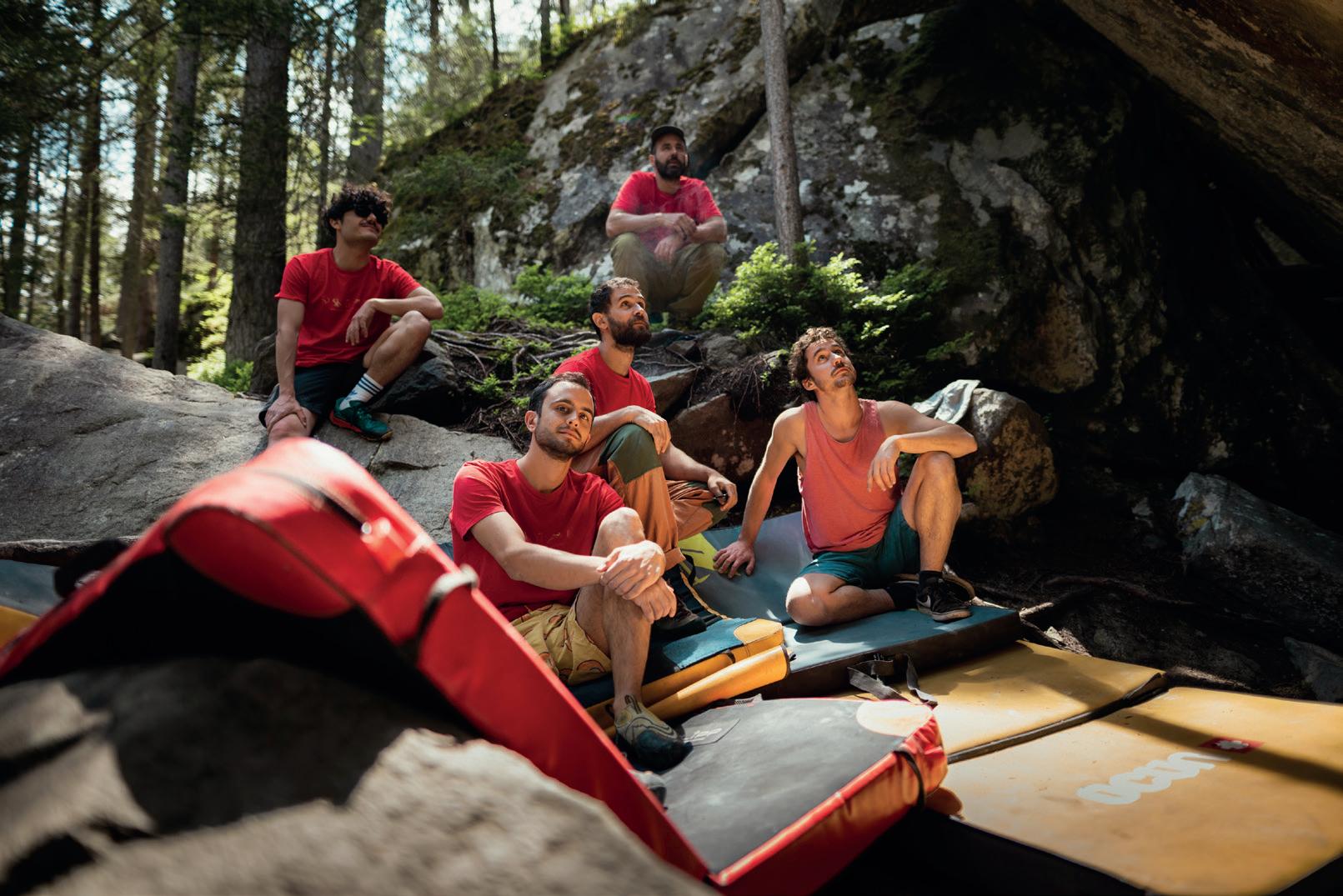
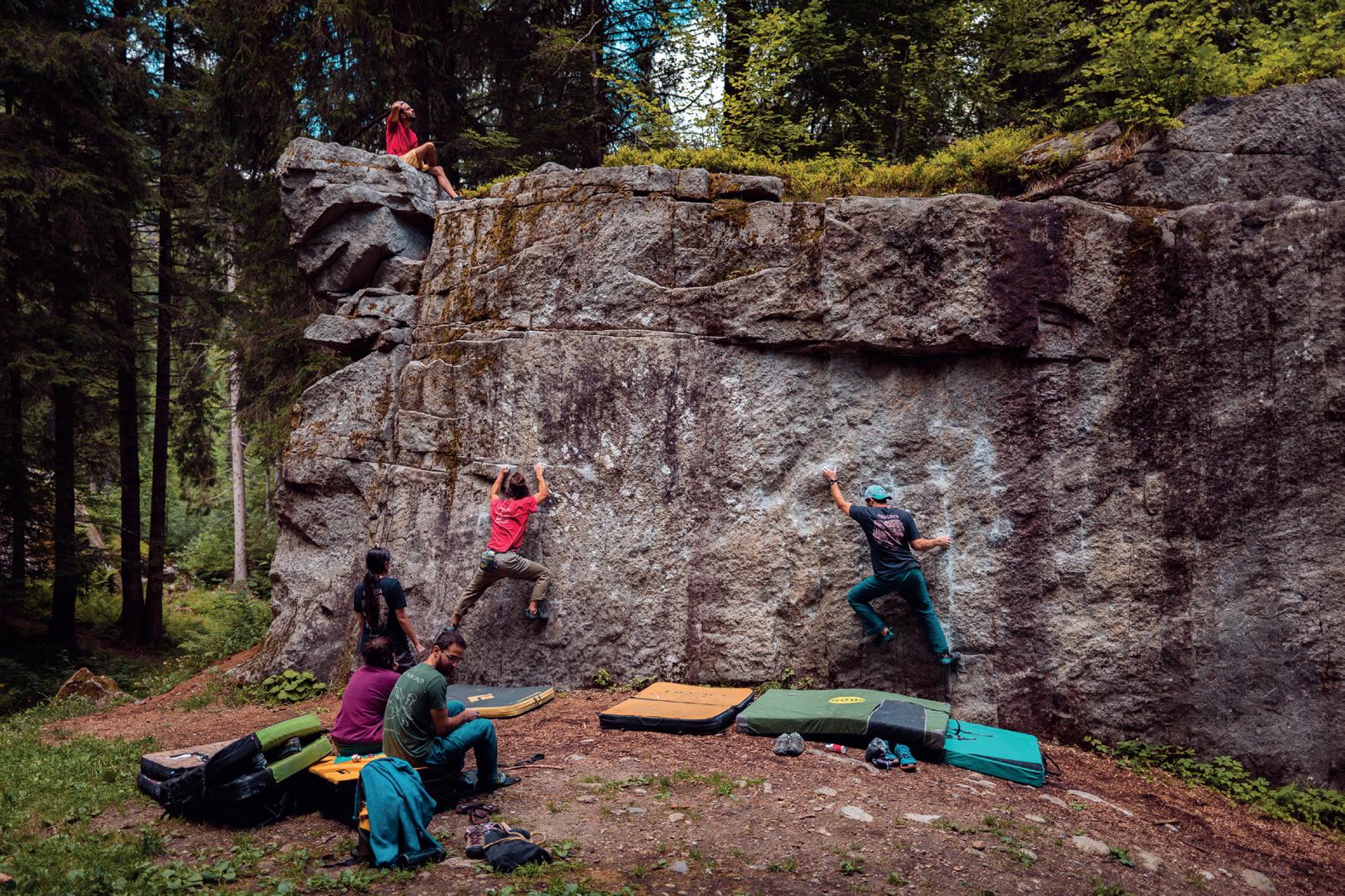
Every episode deals with a special issue… We immediately started with the idea of doing more seasons, and therefore we wanted the first season to focus on the themes we question ourselves the most and that we consider focal points. The first episode is dedicated to what for us is the basis, namely activism. We also face the contrast between the need to go to the mountains and isolate yourself and on the other hand the desire to give something back to society. In fact, the guys who make up the Brocchi group also have a propensity to help others in their working life: Davide is a doctor, Dario a physiotherapist, I deal with the environment. We also cover topics like grades, training, equipment, shoes. Then there is an episode that deals with the environment, another on the history of climbing. In each episode we start from a book or a movie about climbing that has taught us something, to then develop a broader discourse.
Why create a climbing podcast? In recent years, especially because I deal with communication, I have always had the desire to experiment and innovate. I think climbing is quite fertile ground, it's a new discipline, and the best thing to do when there's a space so prone to innovation is to experiment and jump into it. For this reason we decided to try to communicate with the podcast. Social networks allow you to reach fewer and fewer people and we wanted to do something more, we felt the need for a new tool to reach the community. Many have told us that before Brocchi Sui Blocchi they could not find their way of experiencing climbing, while thanks to us they have understood that there are many nuances. In recent years we have met many people and have had wonderful experiences, such as joining the La Sportiva family. We want to share what we have learned with others because we think it can be a boost for everyone.
What kind of tool is the podcast? Compared to videos it is an easier tool. Compared to social media, which are based on short and fast communication, the podcast allows you to deepen and above all it remains: anyone can listen to it when they prefer. In Preferisco Ghisarmi each episode starts from a book or a movie so a little research had to be done and this led us to create a basis from which to think of a flow of points that we would like to touch. Everything else was improvised so it was very authentic. We hardly ever recorded a part twice. It would have been a counter-sense to communicate: "it's ok to fail!", "it's ok
to suck!" and then try to create a perfect content. The approach must be maintained consistently: mistakes must also be accepted in life. Everything doesn't have to be perfect, the important thing is to have fun!
Beyond the ratings data, what feedback are you receiving from the climbing community? The feeling is that there was a great desire for a podcast like this, something that would talk about climbing in a different way. A lot of people share it, there's a lot of buzz, many people tag us in their stories. It is very appreciated and we're glad we got the mode right.
The podcast, as well as the Brocchi activity, is all about volunteering. Who makes you do it? It is certainly a commitment: you have to put your mind, time and desire into it. But it's a passion: we like it and enjoy doing it, otherwise we wouldn’t do it. It's always nice to get involved and discover new ways of communicating. We are also lucky enough to have the support of La Sportiva who helped us buy some gear and some microphones to get a good audio quality.
Let’s take a step back, how was born the Brocchi Sui Blocchi project? It gas Born in December 2016, a bit for fun: we were a group of friends and we decided to start sharing a different kind of climbing on Instagram in a fun way, done by ordinary climbers, normal people like us, we weren't interested in the world of top climbers. From the outset, the project was characterized by a strong self-irony, we always made fun of each other. From the beginning we had a good response, the numbers were still low but by now we had a bit of a following and therefore we started asking ourselves what we wanted to broadcast on these channels, we didn't want to just joke anymore, we felt we had to give something in return to the community. We have grown over the years, but we have always remained a group of friends who carry out a communication project.

What are the values of Brocchi? What messages do you want to convey? Our goal is to create an inclusive, committed and participatory community of climbers, where you can experience climbing with enthusiasm. We want to put people and experiences at the center of the story, climbing comes later. To self-irony we added little bit of more serious speeches: the refusal of competition at all costs and of the

59

idea of "conquering" the mountain, the fight against sexism and machismo in climbing (according to which you must always be stronger), environmentalism, eating disorders in climbing and much more. We also believe that the grade isn't central, it's the attitude that makes a climber: respect for the environment and in relationships with others, how you relate to the community. For us, inclusiveness means that anyone can practice this sport and has equal dignity, regardless of how strong they are. Environmentalism takes the form of saying that we have a responsibility towards nature: like many outdoor sports, in fact, climbing involves the use and sometimes even the consumption, for example, of rock. The environment is a finite resource for everyone, so we must not have a consumerist approach. You have to be careful not to leave trash and take home everything you use on the crag, be careful how you use the rock, clean your holds, be careful not to break the rock. Loving the places where we practice this sport means leaving no trace of one's passage, leaving them the same or better than how we found them. There are small gestures, such as sticking a cigarette into a hole on a route, which will have a great impact for those who come after us.
When I first met you, you all had nail polish on… Yes, it is a self-deprecating signal that falls within the rejection of the idea of machismo: mountaineering in Italy has always been male-dominated, centered on the idea of patriarchal derivation of the conquest of man over something, of dominance, of competing to demonstrate to others that you are strong. We experienced all of this first-hand: competitiveness, feeling diminished, simply because we were less strong or experienced the mountains differently. Feminism also clearly falls into this discourse: climbing has always been a male-dominated world and it happened to us that some of our friends did not feel at ease in certain contexts because there was a lot of testosterone linked to performance and a lot of mansplaining.
Do you feel a sense of responsibility towards the community that follows you? Yes, we know that they look at us, and when people become attached to you and take you as a point of reference, you have to give positive and inclusive messages to bring good practices. We feel this a little, even if we know we are the last of the last. Respect for others is fundamental
for us: every climber is all equal, classification based on grade sometimes leads to imbalances, whoever is stronger feels more important in this world and we want to undermine this concept. Climbers are first and foremost people.
What’s next? When we recorded the last episode of the podcast we were very sorry that this experience was over. We thought the new season would be in a few months, but I think we'll start thinking about it soon. The podcast has been our most important communication project since we were born and I think it will continue to be like that in the future. Now that the season begins we will often be at events around Italy, together with La Sportiva but not only. It is our way of "going down among men and fighting with them", to use the words of mountaineer Guido Rossa, because a digital communication project is beautiful but then we really like being among people, discussing together, sharing a idea of climbing and bring the ideas we talk about into real life. When we started, there wasn't much discussion around the topics we were talking about, now there is much more hype on issues such as inclusiveness and the environment, even in the climbing community. I also see that while at the beginning we were alone, now more and more initiatives, profiles and pages are born that share themselves in a way similar to ours and tell us that they were inspired by us. It seems that in our own small way we have helped create a movement and a subculture that is making a real impact on the climbing world.
61
I think climbing is quite fertile ground, it's a new discipline, and the best thing to do when there's a space so prone to innovation is to experiment and jump into it. For this reason we decided to try to communicate with the podcast.
Wild Life
At the Trento Film Festival the documentary about Kris and Douglas Tompkins, directed and produced by Oscar winners Elizabeth Chai Vasarhelyi and Jimmy Chin.
BY DAVIDE FIORASO PHOTOS JIMMY CHIN
From 1952 up to now, the history of the Trento Film Festival has been intertwined with the one of mountains and mountaineering, making it a real laboratory on the cultures of the highlands, always ready to explore changes. The festival, which will be held from April 28th to May 7th, returns with a program of 120 movies, the result of an important selection, research and scouting work that lasts throughout the year and which allows the competition (the most prestigious section) to maintain that quality that distinguishes it and that ability to reveal great titles. Every year the Trento Film Festival presents the best documentaries, movies and short films set in the mountains and in the extreme regions of the world, deepening the ties with peoples and cultures, celebrating the large and small adventures of mountain sports, narrating the fascinating and complex relationship between man and nature, promoting knowledge and defense of territories.
And it is precisely about this last theme that Wild Life finds space, the documentary directed and produced by Elizabeth Chai Vasarhelyi and Jimmy Chin, winners, with Free Solo, of the Academy Award for best documentary in 2019 and among the nominees in 2016 with Meru. Wild Life chronicles the close relationship between conservationist Kris Tompkins and her late husband
Douglas, an epic love story spanning decades, as wild as the landscapes to which they dedicated their lives.
Kristine McDivitt Tompkins, former CEO of Patagonia, is co-founder and president of Tompkins Conservation. For more than 30 years she has been committed to protecting and restoring the beauty and biodiversity of wilderness areas, inspiring activism and promoting economic viability as a result of conservation. She was a key figure behind the establishment of Monte León National Park and Patagonia National Park. Today, she holds global leadership positions, including chair of the Last Wild Places campaign by National Geographic Society. She was awarded the Carnegie Medal of Philanthropy in 2017 and in 2018 she was named as the United Nations Environment Patron of Protected Areas.
Douglas R. Tompkins (1943–2015) was a wilderness advocate, mountaineer, organic farmer, philanthropist, and conservationist. As founder of The North Face and co-founder of clothing company Esprit, he has devoted his formidable energies to the business. As a mountaineer and kayaker he has completed first ascents and river descents on multiple continents. Along with his great friend Yvon Chouinard, founder of Patagonia, he shared a dispassionate love for nature and a willin
62
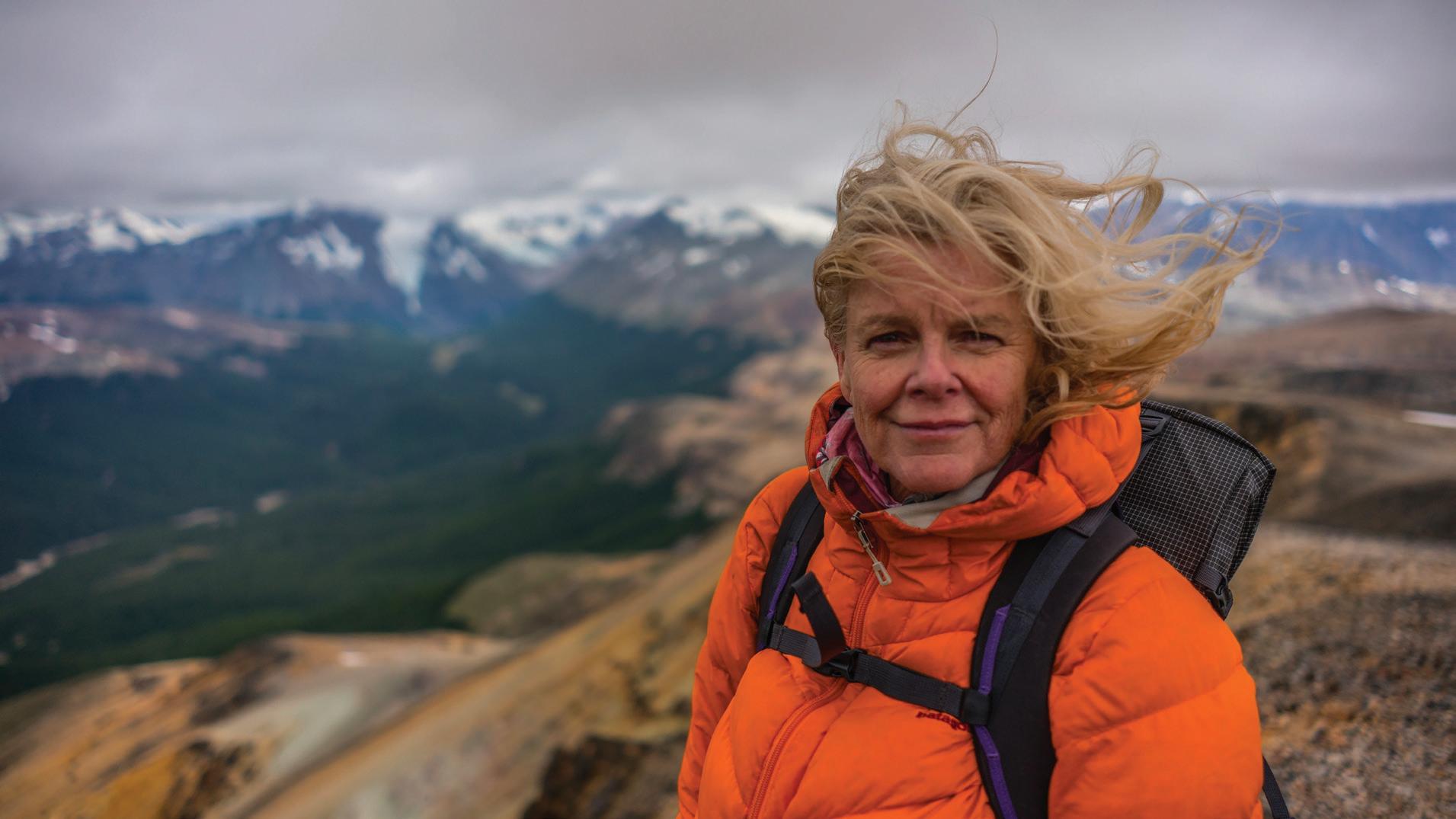
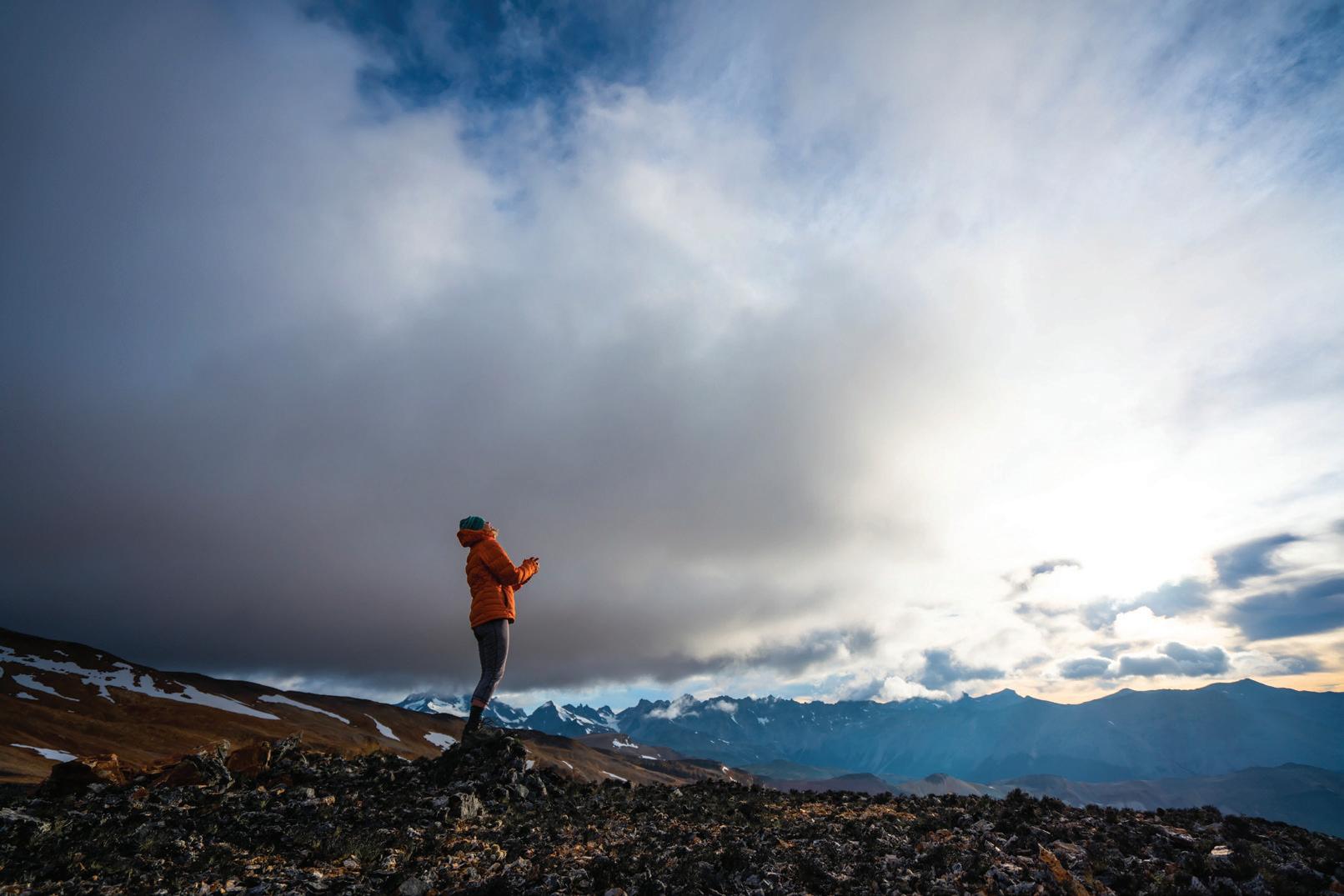
Every year the Trento Film Festival presents the best documentaries, movies and short films set in the mountains and in the extreme regions of the world, deepening the ties with peoples and cultures, celebrating the large and small adventures of mountain sports, narrating the fascinating and complex relationship between man and nature, promoting knowledge and defense of territories.
gness to do more and more to protect it. After leaving the business and funding a group of foundations, he became one of the most important philanthropists in history, using his wealth to acquire, aggregate and donate private land to the national park systems of Chile and Argentina. Deeply devoted to biocentric activism, Doug has been a seminal thinker behind numerous campaigns. He died in 2015 in a kayaking accident in Patagonia.
For decades Kris and Doug have worked side by side to shape new agroecological thinking, restoring degraded farms and managing organic farms in South America. After falling in love during their adult age, they left behind the world of the great outdoor brands that had contributed to create by turning their attention to a visionary endeavor: creating a system of national parks in one of the last wild places on earth. Wild Life chronicles the ups and downs of that long journey that led them to make the largest private land donation in history.
Together they have helped protect an estimated 14.8 million acres between Chile and Argentina, making them among the most successful philanthropists in history. Through Tompkins Conservation and its daughter organizations, Rewilding Argentina and Rewilding Chile, they have been able to create and expand 15 national parks, including two marine national parks. From Hornopiren to Corcovado, from Cerro Castillo to Cape Froward. A key player in regeneration and conservation projects, reintroducing ecosystem services to areas degraded by human presence, Tompkins Conservation has been
working since 2005 to safeguard and restore key species such as jaguars in Argentina's wetlands and the highly endangered south Andean deer in Chile. A proven conservation and reintroduction strategy that regenerates complete, fully functional ecosystems so that they can become self-sustaining with minimal human intervention.
These are the words of Sergio Fant, head of the film program of the Trento Film Festival: “The opportunity to have the Italian premiere of Wild Life at the Trento Film Festival stems from the direct relationship with the National Geographic headquarters. A relationship that has developed over the years and which was crowned in 2022 with the Italian premiere of Fire of Love by Sara Dawson, winner of the audience award. It is sometimes surprising, as well as very satisfying, to discover their enthusiastic interest in collaborating. This makes it clear that 70 years of history, in certain contexts, have great weight and are appreciated. When Wild Life was launched, we immediately decided to bring it to Italy and the response from Hollywood was immediate and positive. It's a story that combines so many elements of absolute interest, from the two directors to mythical people like the Tompkins and Yvon Chouinard. The incredible story of Kristine and her love story with Doug, their projects aimed at national parks established in Chile and Patagonia, lead to the mystical root of environmental sensitivity. We believe that it is a film that recounts a journey we have also made, as a festival. All the elements were there for what we hope will be an unforgettable screening here in Trento.”
64
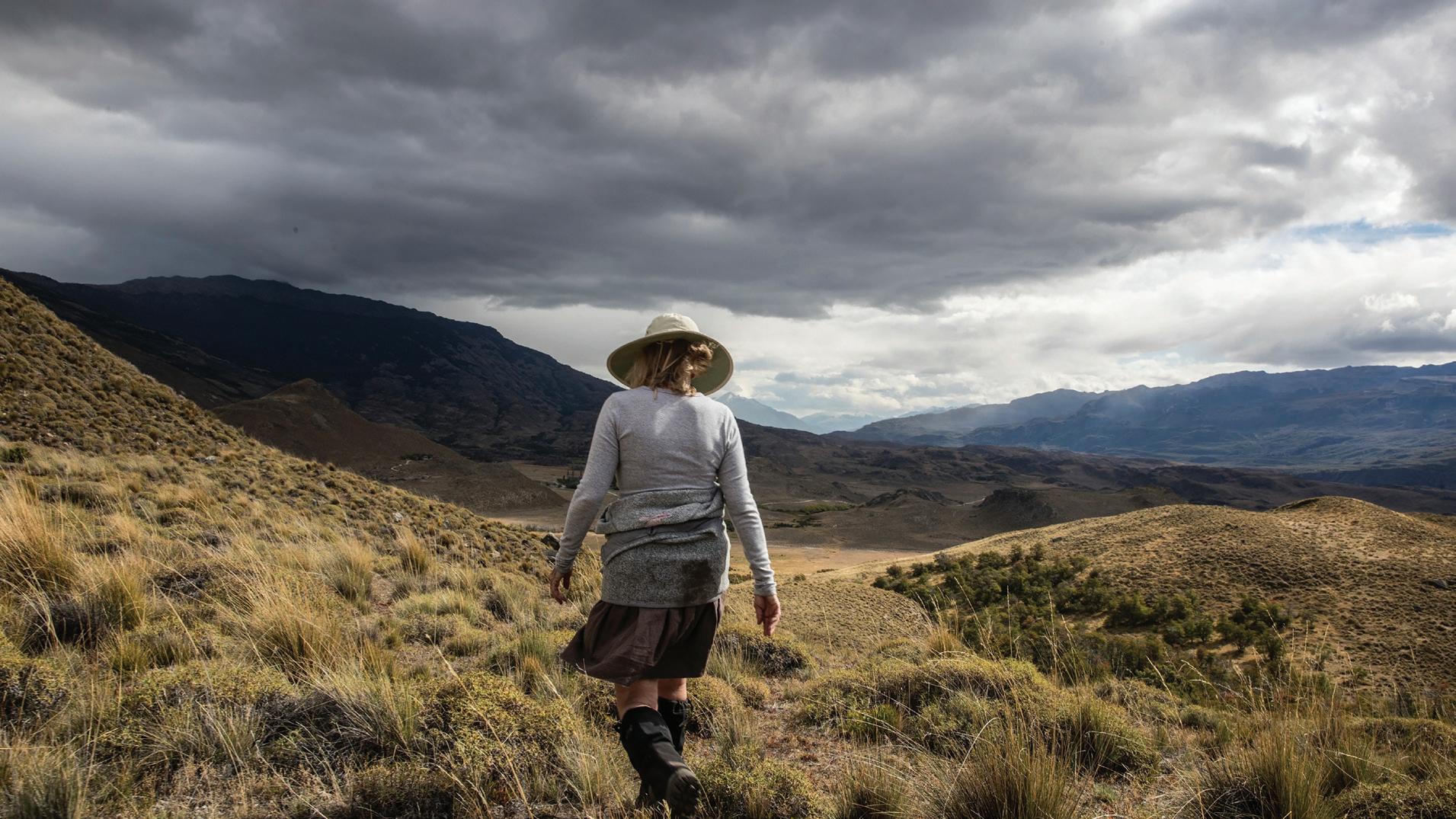
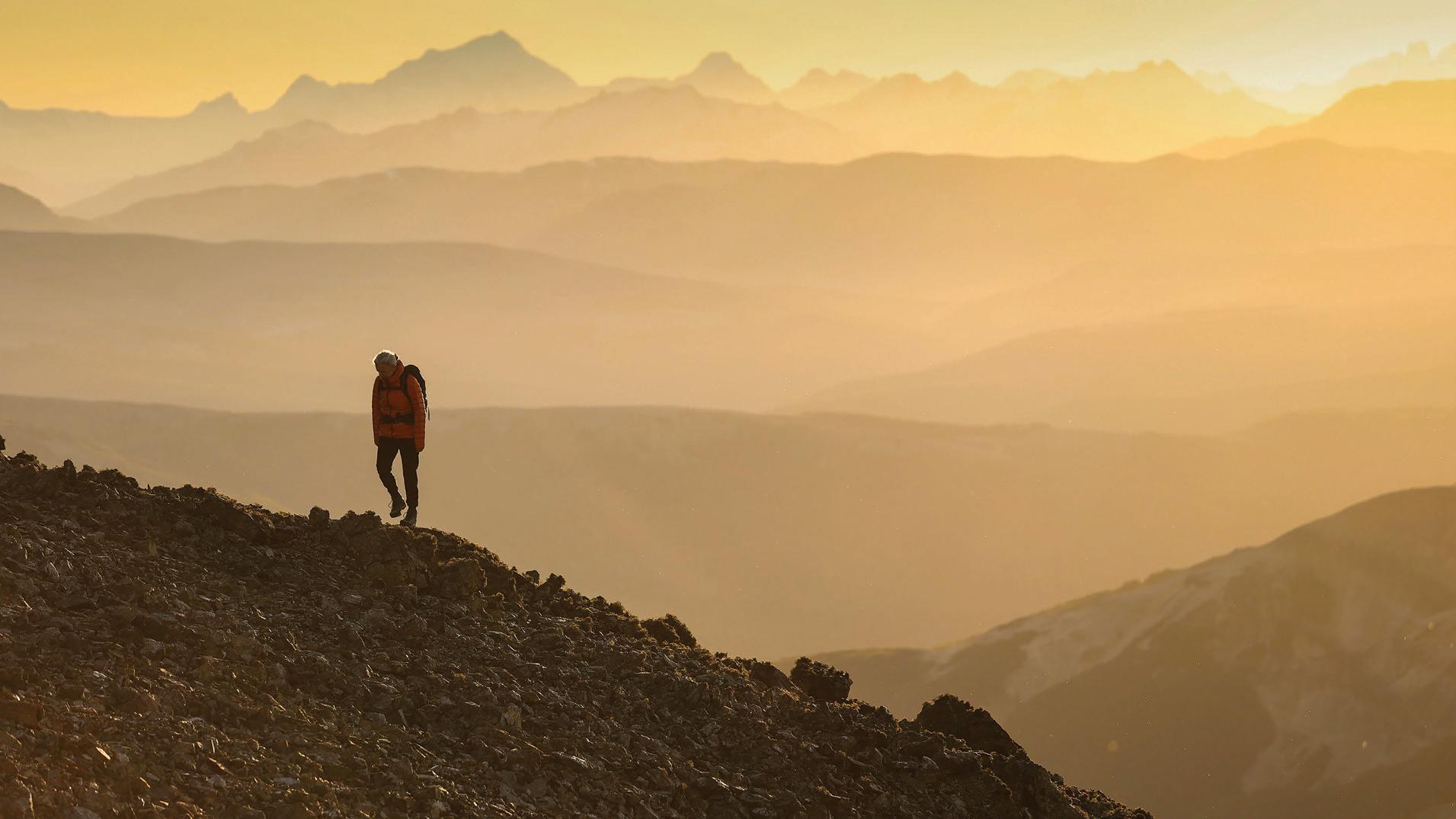
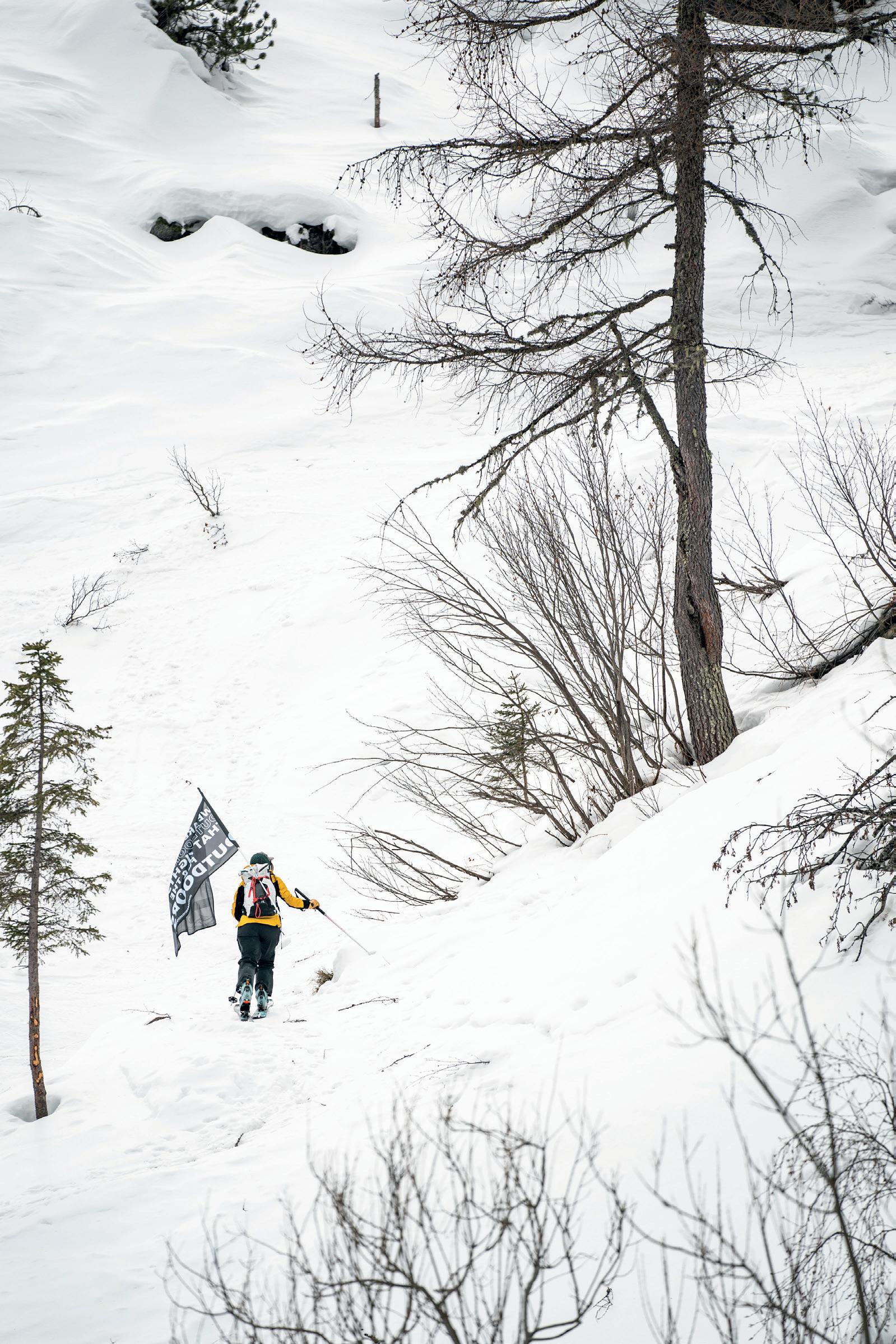
Reimagine Winter
 BY MARTA MANZONI PHOTOS CAMILLA PIZZINI
BY MARTA MANZONI PHOTOS CAMILLA PIZZINI
“We are all that is outdoors. We are – all – driven by the same passions. We are those who have tried to find themselves within natural environments and who recognize this process as fundamental for the growth of human culture.”
67
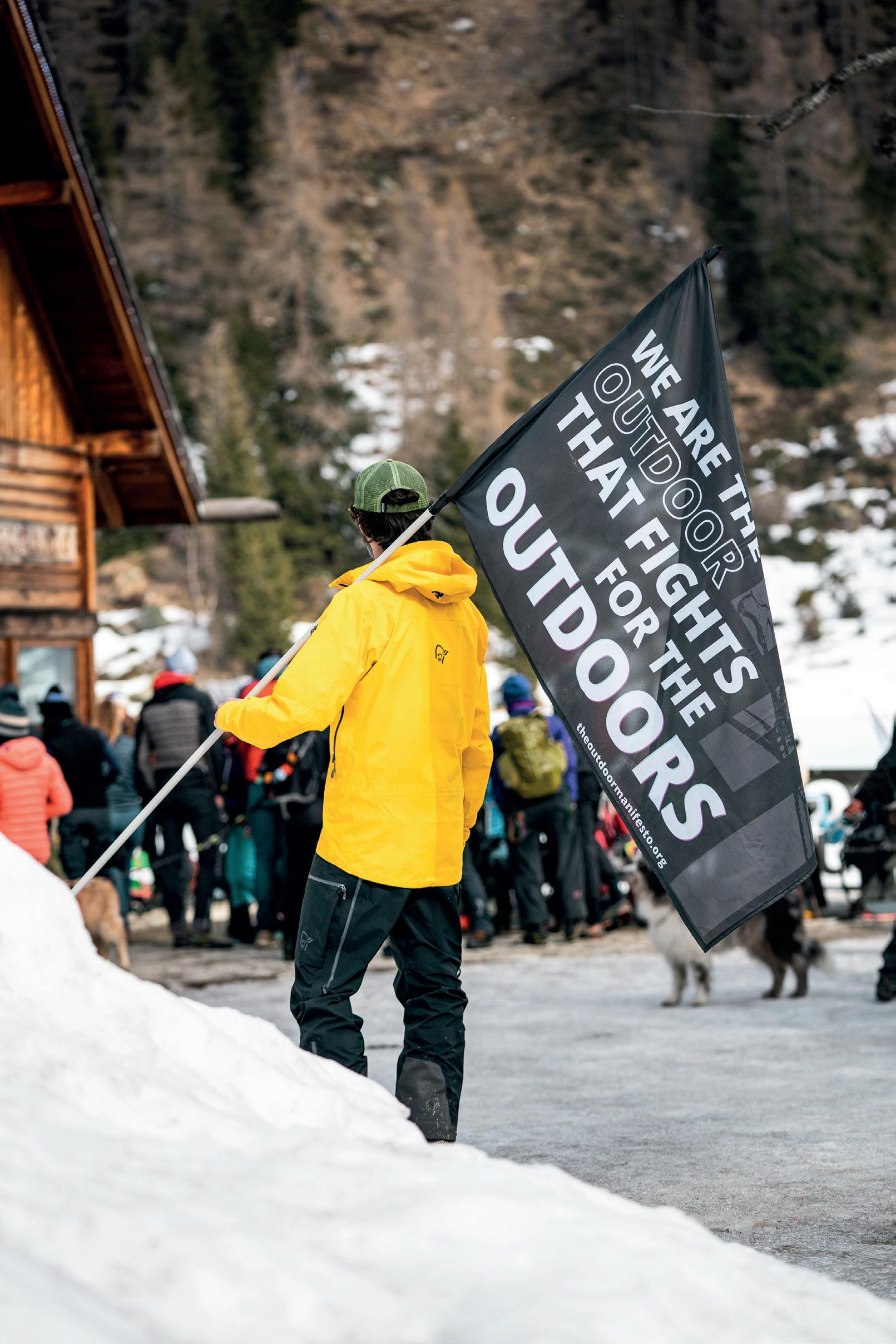

From this idea, by Luca Albrisi and 11 other signatories, The Outdoor Manifesto was founded: an open collective, based on volunteering, which for years has been trying to give a boost of ecological awareness to the outdoor world. A Manifesto that starts from the bottom, which can be shared, signed and "contested" by anyone who wants to contribute to the environmental awareness of our community and who is ready to take the necessary actions to defend natural environments. "Reimagine Winter" was the latest initiative proposed by The Outdoor Manifesto, welcomed by 40 different realities: on Sunday 12th March, in 12 locations in 8 Italian regions, over a thousand people demonstrated, between the Alps and the Apennines, moved by the urgency to imagine a new winter and to promote an idea of more sustainable tourism development detached from the anachronistic ski monoculture and, above all, from the construction of new ski lifts.
Luca, Reimagine Winter was one of the most participatory mobilizations in defense of the future of the high lands, can you tell us how it went? Great! Both the word of mouth and the sharing that took place before the demonstration, as well as the participation has been surprising: a thousand people in the high lands are many, it is an important number considering the places where the mobilizations took place, very different from the city squares that can be reached comfortably. There was really great enthusiasm. A feeling of loneliness experienced by those who do activism in the high lands has emerged: in fact, it is often difficult to have physical closeness with other people who work on certain issues. Furthermore, by doing activism, it is more often than not that one gets lost and struggles to achieve tangible results, and every now and then it seems to be waging war against windmills: the psychological implications are not indifferent. According to many, the beauty of such widespread partici-
pation was precisely seeing so many people sharing an idea. Being able to say “finally together we managed to push this problem up to a national level”. We are very satisfied with this historic event, not only for how it has focused attention on the need to “reimagine winter” but above all because it represents the first, fundamental, step towards a collaborative activism of the high lands made up of new strategies, relationships and important actions.
How did the idea come about? We had been thinking about creating a widespread initiative linked to winter for some time. In the meantime, the issue of resorts has become mainstream and we had more and more contacts with different realities. So we thought of a mobilization that would make it clear how widespread the problem is, acting in a coordinated manner throughout Italy, from the Alps to the Apennines. It was an interesting idea also to demonstrate that there are already many groups, committees, sports, cultural and environmental associations that deal with these issues independently: we have only proposed the idea, without ‘“dropping” anything from above. It is clear that a process that involves confrontation like this is more complicated, and times are getting longer, but it was important for us to launch a political message together, to stand together. For this reason it was never presented as an action of The Outdoor Manifesto, it wanted to be something shared. It was also a parameter of judgment to have the perception of the network we are creating.
What was the goal of the demonstration? It didn't want to be an action only against something but to offer a collective point of view, the need to think of something different and change our mental scheme, which does not mean discrediting and demolishing what exists, but accepting the challenges of our time. we want to imagine a sustainable system from an
environmental point of view but also from a social, human and economic point of view. The claim Reimagine Winter has rewarded a lot, it has really been felt by people: it is an innovative and creative way of thinking about the political battle without just colliding. We wanted to underline the need for a concrete paradigm shift for the development of the mountains of the peninsula, capable of imagining winter through new models that detach themselves from the single-culture plant and downhill skiing. A different future with respect to anachronistic socio-economic logics is not only possible but has become absolutely necessary. In our opinion, the new plants make no sense, from any point of view. We accept and use what is available, but investing in new areas means falling back into a past pattern and not imagining a new winter.
What are the places involved in the mobilization? We wanted to show how the problem is deeply widespread throughout the peninsula. How can building a new resort in San Primo, at an altitude of 1500 metres, be thought to be economically, environmentally and socially sustainable? Localities that have become symbols of a problem now present in all the Italian mountains have been involved: Monte San Primo (Lombardy), Monte Campione (Lombardy), Piani Di Artavaggio (Lombardy), Alpe Devero (Piedmont) Serodoli (Trentino), Panarotta (Trentino ), Arabba (Veneto), Sella Nevea (Friuli Venezia-Giulia), Corno Alle Scale (Emilia Romagna), Terminillo (Lazio), Roccamorice (Abruzzo).
What subscriptions have you received? It was important to give people points of reference in the area, realities close to them that are mobilizing on these issues. I also believe that this event has served the local associations to create networks among themselves. At the beginning we met with about ten groups (including associations, committees and spontaneous groups),
69

while in the end more than forty realities participated: the condition for being included in the list was to be physically present at the event. In particular, the following have joined Reimagine Winter: The Outdoor Manifesto, Mountain Wilderness Italia, Io non ho paura del lupo, Italia Nostra Trentino, Dolomiti Open, Basta Impianti, Giovani Club Alpino Italiano, Salviamo l’orso, Coexistence.life, XR Trento, TAM - Commissione Tutela Ambiente
Montano SAT, SAT - Società Alpinisti
Tridentini, Comitato Permanente per la Difesa delle Acque del Trentino, GAS Trento, RAM, GEL Ledro, WWF
Trentino, Coordinamento “Salviamo il Monte San Primo”, Circolo Ambiente
Ilaria Alpi, Ape Milano, POW Italia, Comitato Tutela Devero, Comitato MTO2694, Ape Brescia, Un Altro Appennino è Possibile, Appennino Splitboard, Ape Bologna, NO TSM, Balia dal collare, Legambiente Treviso, Per altre strade, CAI FVG, Legambiente
Carnia - Val Canale, FFF Trieste, Lost in Prealps, T.A.M. FVG, Ambientalmente Lecco, Legambiente circolo Lecco, Legambiente circolo Lario sponda orientale, Soci banca etica Lecco.
For those who don't know you, how was born The Outdoor Manifesto? Talking with Davide “Zeo” Branca, a great outdoor enthusiast who already had a background in political activism, we realized how in this world there was a lack of a grassroots process that would create ecological awareness, and so we put our vision on paper, what we believe the outdoors should be as an experience, a philosophy, but also on a commercial level. We immediately wanted to share it with other people, who belonged to all the different sub-communities of the outdoor world, in a transversal way, who have become co-signatories of the Manifesto. After this passage it was shared and has always been loved: from the very beginning many have identified with those words. It seems relevant now because these speeches have become mainstream, but when you read it back in the days
it was quite out of the box, just think that it was written before the Fridays for Future movement.
What has the Manifesto become over the years? The first period we traveled and participated in various events created especially for the Manifesto and in initiatives promoted by other realities. The first step was to say, “Here's what we think. If you like the idea and agree with these values, sign the Manifesto (which can still be done on the website) and put your face on it.” Then there was the pandemic and we worked remotely in terms of communication. In fact, one of the most important points of the Manifesto is to create an outdoor culture that has certain principles: even if this aspect is not interpreted by some people as a practical action, in reality I believe it is. The fact of developing concepts, giving insight into certain situations, raising awareness, training people, discussing certain issues, maybe it's not like picking up plastic on the ground but somehow it's more difficult, and what's more, hopefully it will help create something that in the future let people decide for themselves what actions to take. Making culture is a practical act. After Covid we have taken various actions, such as demonstrations, evenings, participation in other events, always very popular. Gradually we have also gained our credibility at an institutional level and over time we have created many beautiful relationships with people and other realities, leaving our ego aside: the important thing is to do something together for this enormous challenge we have before us, aiming for something bigger.
You said “if you want to be an activist you have to get active", what do you mean? I know it may seem a paradox, but we often receive messages from people who expect us to give them tasks, while grassroots activism means that everyone tries to assume their responsibility, taking charge of a part of that problem. We are not a clo-
sed group but a widespread one, we try to coordinate ourselves, but we are relatively independent cells.
Do you collaborate with outdoor companies? We have received various proposals but we have always set a condition for collaborating with us: a financial donation is not enough for us.
What kind of activism is needed now? We need people who want to fight, to mobilize, to question the system in which we live, of which we all are part. Enough of the paranoia that we can't criticize the society we live in, otherwise we won't change it anymore. You can't think that either a person is totally sustainable or he can't say anything, which is what the system imposes so you don't express yourself. It's okay to use the car and lifts every now and then, take a plane sometimes: it clearly takes balance and thinking about alternatives, without however being put on your head by those who say that if you're not perfect you can't speak. Of course it is important to have a sense of personal responsibility, avoiding being just a "green poser" who reposts content on social media. Slowly the messages will arrive, even if they start from the bottom and in a weaker way than the communication potential of the system.
Next steps? I hope that this mobilization has been useful not only to us but also to many other realities to understand that this way of acting is very useful for working on extra-territorial issues, such as the speech of the Milan-Cortina 2026 Olympics, which certainly we will face, or that of the water emergency in the valleys. We need to move at a territorial level but at the same time have a global vision and be ready to collaborate with other realities as well: I believe this is the fundamental approach for activism in the coming years. I don't know if we will save the planet or the lawn close to our homes, but I feel the need to try and I think it is right to go down this road.
71
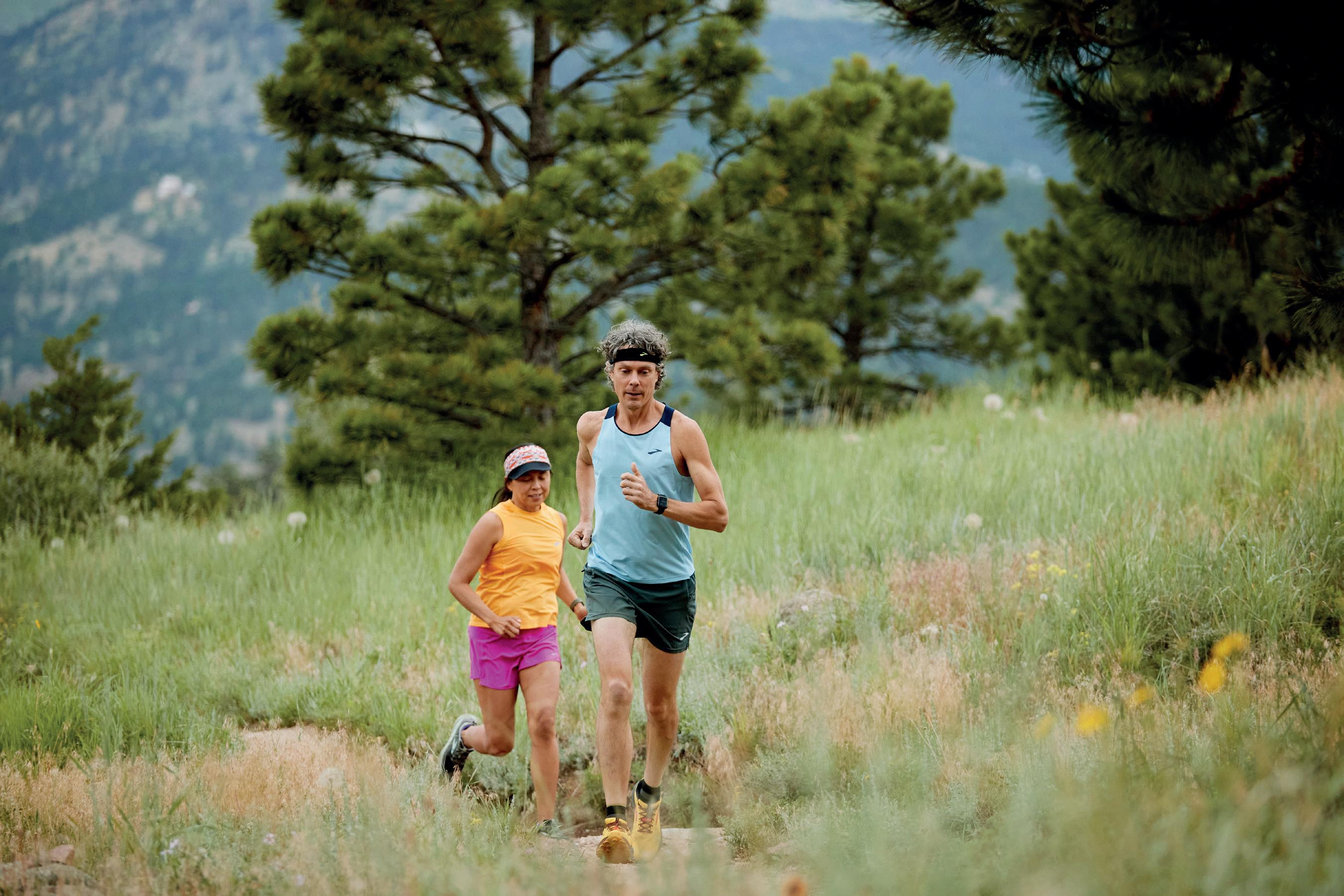
72
Family, Boulder & Life Scott Jurek
BY FILIPPO CAON PHOTOS DENIS PICCOLO
One evening in late February, I come back from a run and see a message that says: "Scott is here, I know he is your idol, if you want to write down some questions today we will interview him." Not only is Denis in Gran Canaria with Brooks for the Trail Meeting while I'm in Trento with -35 degrees, but he's also in the company of Scott Jurek. Anyway, I send the questions and a few days later I receive a video to unwind: you see Scott sitting on a rock answering some of my questions, yes, mine! It's all very funny and a little surreal. God, it's Scott Jurek.
We all grow up with myths, and if it's too late to grow up with them, we grow old. For someone who runs the 100 miles that myth is Scott. I don't think there has ever been anyone as great in the sport as he is. They say he was the strongest, but I don’t know: all his records have been broken and the times with which he won races twenty years ago today would barely be enough to get on the podium. But he was the greatest. Because he represents everything an ultrarunner should be: kindness, selflessness,
patience. He needs patience to wait for all competitors to finish after running 160 kilometers. And also because no one will ever win seven Western States in a row again. If you don't know who Scott Jurek is, go browse the blogs, read his books and listen to his interviews, perhaps starting from this one.
Hi Scott, how are Jenny and the kids? I would have love to bring them with me here in Gran Canaria, but it's still winter season in the US. My family and I ski a lot and spend a lot of time in the mountains. At this point in my life my focus is on family but also on spending a lot of time outside and doing outdoor activities. Having a family and managing it is almost an ultramarathon.
One of the things I love about ultrarunning is its history. Any sport has a history, but due to its nature, history easily becomes a legend in ultrarunning. Do you ever think about the fact that you were a key part of probably one of the most fascinating mo-
73
We all grow up with myths, and if it's too late to grow up with them, we grow old. For someone who runs the 100 miles that myth is Scott. I don't think there has ever been anyone as great in the sport as he is.
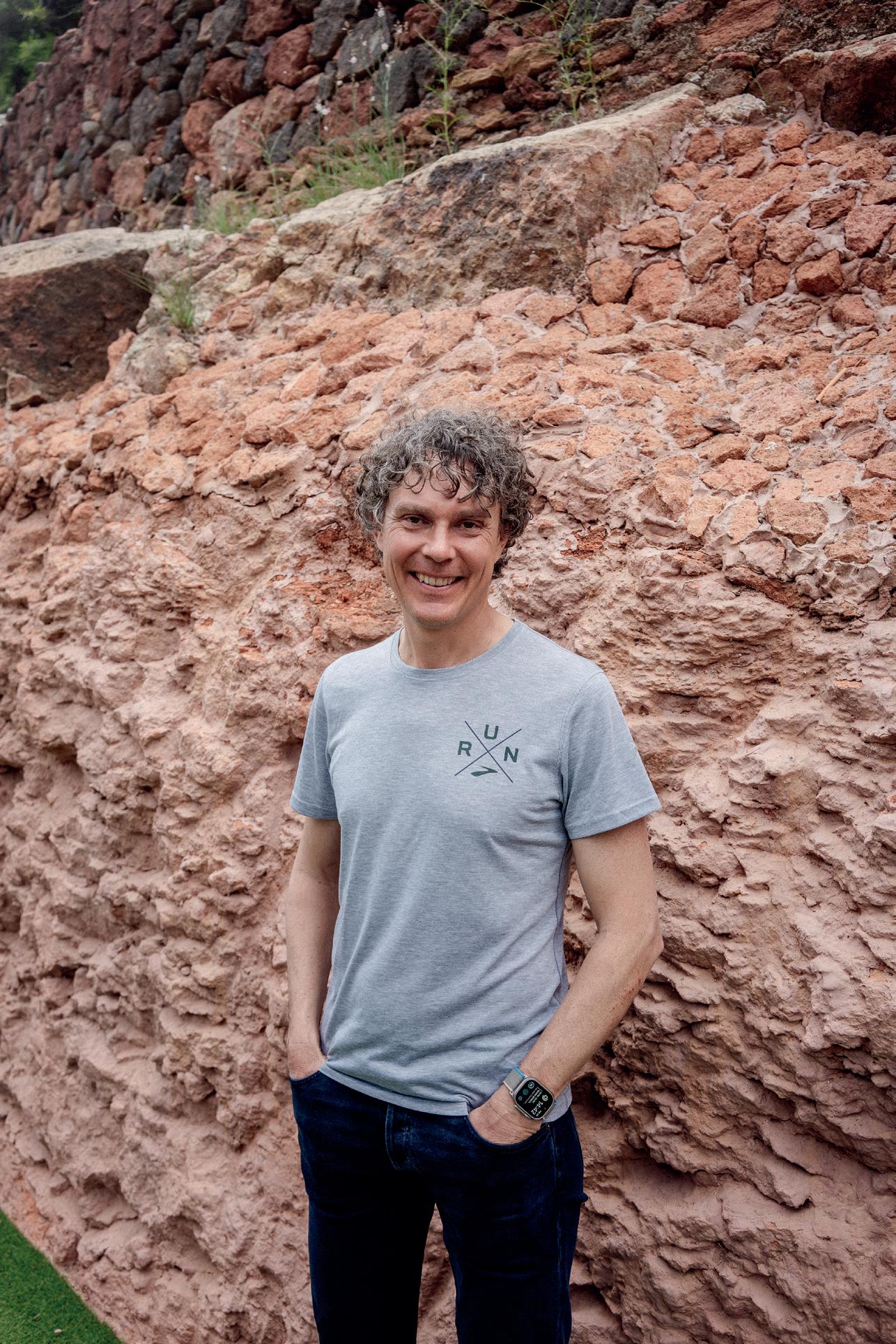
74
ments of this sport? Do you ever think about the fact that certain stories about you are an integral part of the history of this sport? Ultrarunning has been my life for thirty years. And I think it was very special to experience the moments of change: when I arrived it was a small environment, I saw it grow and I saw the directions it took. Sure, I miss some things back then: it was easier to enter the races, in general there are things whose change is perhaps more difficult to see, but basically the heart of sport is the same, and what makes it special, like the community or bringing together people from such different backgrounds to do something so challenging. It's a sport that has taught me a lot, and I continue to learn in my own way. But seeing more and more people out there is a good thing.
Do you think the spirit of ultrarunning is changing? I don't think the spirit of ultrarunning is changing. It is still alive and well, and the number of people coming to the events is growing more and more. The family is getting bigger but the spirit is the same.
Would you ever give away a Cougar for a first place in Chamonix? Haha, that’s a good question. Cougars and my victories in Western States are all very important to me. But if I had to trade a win at Western States I think I could do it for UTMB. It's one of those races that I've never won, and now I've accepted that, but probably winning five or six Western States instead of seven wouldn't have changed that much. It would be nice to have won everything but I can't go back in time.
What is your favorite book about running?
Um, I'm a big fan of George Sheehan, and in particular of a book that I don't think has been translated into Italian, it's called "Running & Being: The Total Experience", which talks about the deep, spiritual and philosophical way of reading and interpret the run. If you get the chance, read it.
What is your favorite movie about running? A movie that inspired me as a child was the story of Billy Mills, a Native American athlete who won gold medal over the 10.000m dash at the Tokyo Olympics in 1964. There is
a very good film about him that still hangs around, titled “The Billy Mills Story”. It's a very fascinating story.
If you could win one more race, what would it be? As I said before, UTMB is a race that I miss and it would have been the icing on the cake for my career.
Have you ever had all your toenails black at the same time? No! I don't know if it's thanks to Brooks or because I take good care of my feet. Sometimes I have three or four black at the same time, but never all together.
In your book “North” you wrote that before the record on the Appalachian Trail you were having a difficult time: you had stopped competing but you wanted to continue doing it, you felt less competitive and you were redefining your new life and your family. What would the Scott of today say to the Scott of back then? I think today's Scott would tell him to enjoy and save every moment. I would have learned many things along the way, especially in the moments in which the passion for the sport would have failed: to adapt to these moments and to remember why I was running. And that's what the Appalachian Trail would teach me. Back then I was very focused on winning and racing, and it's good to have that motivation, but that's not all.
It's great to follow you and Jenny on Instagram, to see the kids growing up and learning to ski. How is life in Boulder? Denis and I were there in November, it's really a nice place. It’s very funny. Having children is like a race: you have ups and downs and it's not all easy. We decided to have kids late, but they keep reminding me what's important. When we are in the mountains I notice that they see things through different eyes, and sharing climbing, skiing and the time spent in the mountains is very nice and it helps me to get to know them. On Instagram everything seems very easy but even we have the classic moments like: I don't want to do this! I don't want to ski! I don't want to climb! But it's nice to find out what they like to do and what they love.
Thanks Scott, I hope I meet you sometime too.
75
Indian Summer Run Running as a way to explore
BY DAVIDE FIORASO PHOTOS MANUEL GATTO
In the harsh winter of 335, as he rode out of one of the gates of Amiens on horseback, Martin of Tours saw a suffering man, half-naked and cold beggar. The soldier took pity, cut his cloak in two, the white chlamys of the imperial guard, and shared it with the poor man. At that precise moment the sky cleared, a warm sun came out and the temperature became milder. Since then, on November 11st, the date of his burial, legend has it that the grip of the cold will stop for 3 days to commemorate the noble gesture. This is the so-called Summer of San Martino, a specific period of the year characterized by the systematic return of the anticyclone. And although this phase of high pressure has its own scientific explanation, we prefer to pursue the mystical and spiritual vision that accompanies it.
Over the centuries this date has become an occasion for celebration throughout the West, symbolically associated with the earth and its fruits, where new wine, good food and the abundance of the countryside are honored. In Anglo-Saxon countries it is known as Indian Summer.
It is in this figurative and metaphorical context that in 2020 we unknowingly gave life to what would become “an emblematic ride that connects Valdobbiadene to Revine, along a ridge that runs for 45km between the Venetian plain and Valbelluna.” An indigestion of Pre-Alps, in its moment of maximum splendour, an adventure among places that, for some people, still represent the unknown. Nothing to win and nothing to prove here. This is where running in nature finds its purest expression, self-management, a sense of community. An ancient tool at the service of exploration.
For this reason we have decided to meet again in that middle ground where no one would ever come looking for us, in that watershed that separates the Dolomites from the great productive plain of the north-east. To offer everyone a way to rediscover themselves, to fight against their daily lives. Because we are like this. We need to behave like a rubber band, get away from the threat of uniformity, escape from comfort and routine, feel the thrill of exposing ourselves to that constant game that aims to trick the mind to overcome fatigue. And only then, satiated and satisfied, can we rejoin the real world. But to do this everyone must descend, at least once, into their own hell. Descend where nature becomes overwhelming, the routes become a stage, where darkness releases dreams and dawn, like peace, is silent and quiet.
“We do all this to rekindle the enthusiasm of something primordial, which is born deep in our bellies.” Out of a
76
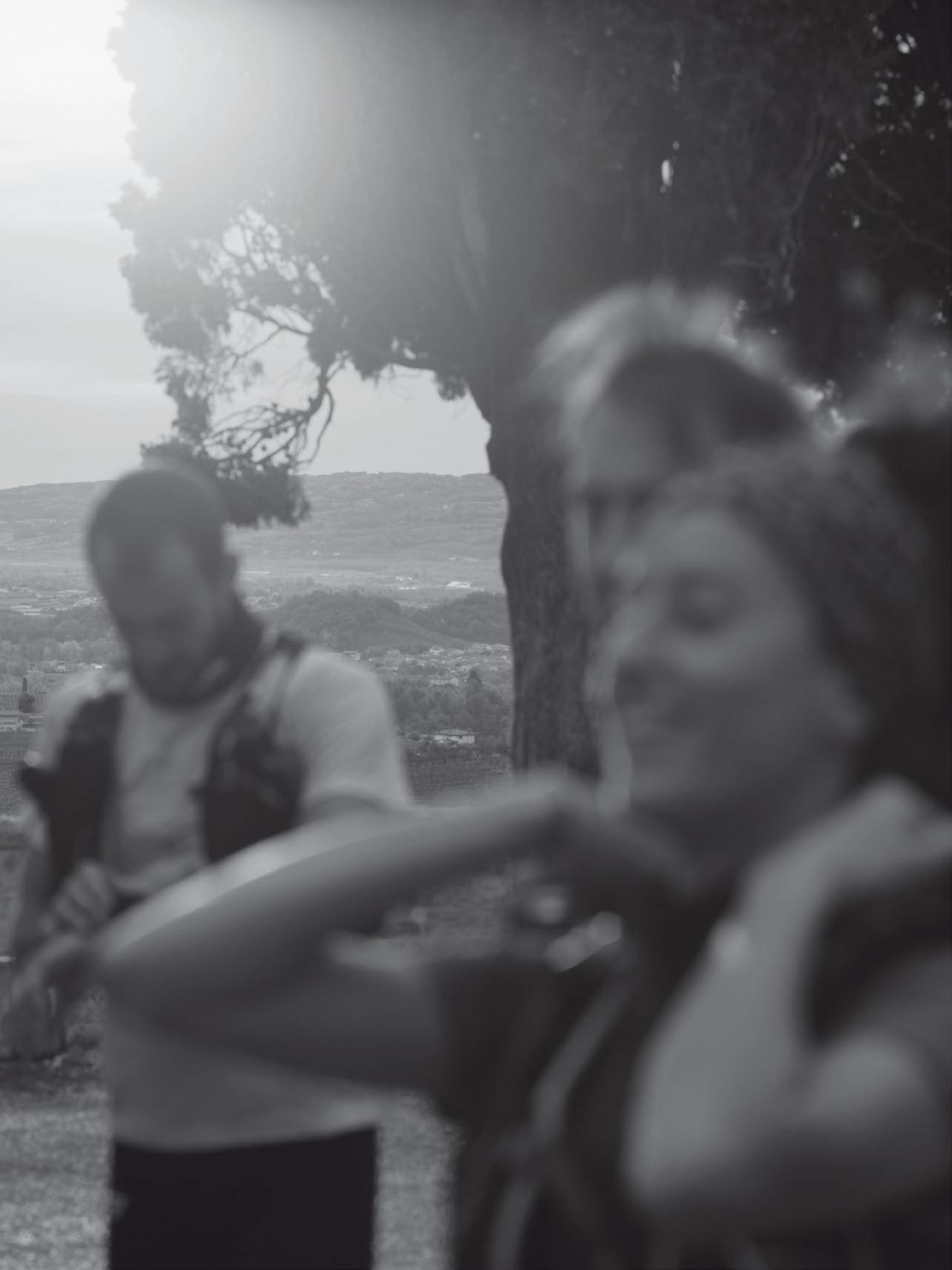
77
selfish need, to feel human, to go beyond the multitude of roles and responsibilities that society has placed upon us, under the business cards with the company name, or the labels of father, husband and son. To rediscover the true being in its purest level.
As wolves we bow to the laws of the pack, but when there is no more room we embrace the solitary life in search of new spaces. Here, this is what we are, a complex of instincts that we are unable to completely dominate. The anxieties of a world in transition have focused on them. We condemned the wolf for what we deliberately and wrongly perceived it to be: actually, the mirror image of ourselves. Like the animal, we have learned to govern the main functions of our life cycle, adapting to environments, climates, altitudes; we have learned to optimize energy and defend a specific territory. For what? Certainly not for survival, but to run away form a lifestyle increasingly dependent on technological supports that mediate the relationship with reality and make one lose contact with the wild. And here the wolf becomes the embodiment of traumatic social and economic changes, such as the abandonment of the countryside or the mountains in between.
Yes, precisely that mountain in the middle that is our heart, that is Treviso’s Pre-Alps.. “Apparently losing places that today have returned to the center of resistance movements, such as ours.” Resistance to dominant models of standardization and intensification, on the design of modernity brought to fruition during the twentieth century, but which have decreed the crisis of the contemporary mountain (or its ephemeral fortunes). Widespread abandonment and marginalization on the one hand, tourist entertainment on the other, have dug deep territorial gaps that very often require to be rethought.
Today Indian Summer Run traces the borders of a new idea of territory, different from the one still dominant in the media and in public opinion. It aims to give life and value to those places between celebrated peaks and congested valley floors, a stone's throw from the much-noted Prosecco Hills, a World Heritage Site. A recognition of widespread dominance, a promotional label of dubious utility, rather than a cultural policy instrument, which in the nearby Dolomites has not been able to respond to the needs of protection of the territories concerned and not even those of truly sustainable development.
“Middle mountains are not just an altimetric reality, but places that hold the past and the future together, relaunching a recreational idea that reconciles new ways of living and respecting the mountains.” A place of mediation in terms of mobility and travel. An imaginary that sees nature as an exclusively positive element, even more so if it is uncontaminated, a key concept that assumes that man is always and only a contaminating agent. Indian Summer Run was born here, from a personal experience, and comes from the desire to share the passion for running and for exploring the highlands on the sidelines of tourist flows, in search of new living spaces. Sometimes it is even a pretext, to tell the Pre-Alps through its identity traits. Running in a new environment, discovering unknown places and routes, absorbing its sounds, smells, landscapes is a special pleasure that traces indelible memories.
As a spin off of the Lost in Prealps project, we are social animals looking for a pack that protects each of its members, in a sort of nucleus where everyone assumes dignity precisely because they belong to it. Be part of a strategy based on self-preservation. Indian Summer Run puts everyone on the same level, everyone is part of a large family that uses the simplest and most basic form of movement in the mountains as an excuse to escape, stay in company, have fun and experience the outdoors. Rekindle the instinct for exploration and contemplation by rediscovering the meaning of the term "landscape". This is what we want, by carrying on our little revolution slowly.
As wolves we bow to the laws of the pack, but when there is no more room we embrace the solitary life in search of new spaces. Here, this is what we are, a complex of instincts that we are unable to completely dominate. The anxieties of a world in transition have focused on them. We condemned the wolf for what we deliberately and wrongly perceived it to be: actually, the mirror image of ourselves.
78
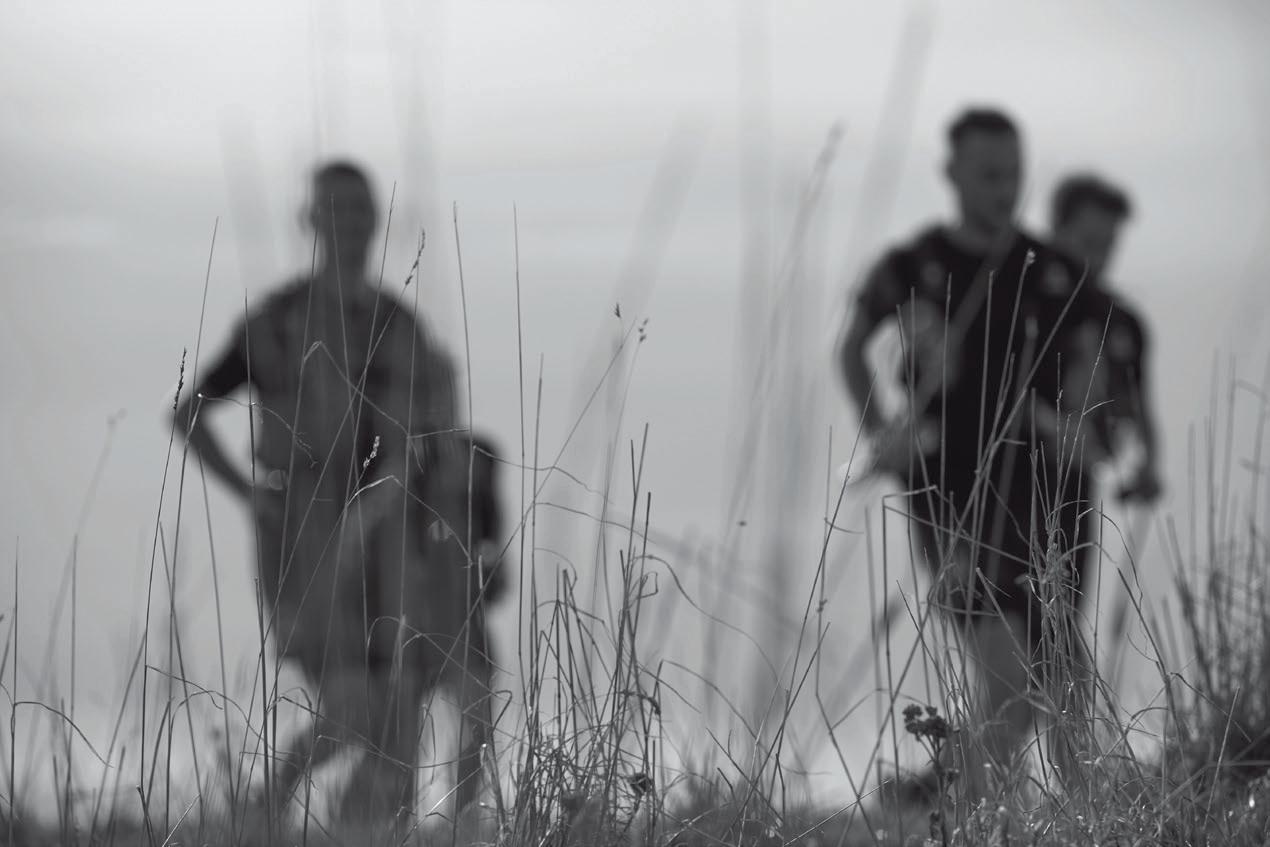
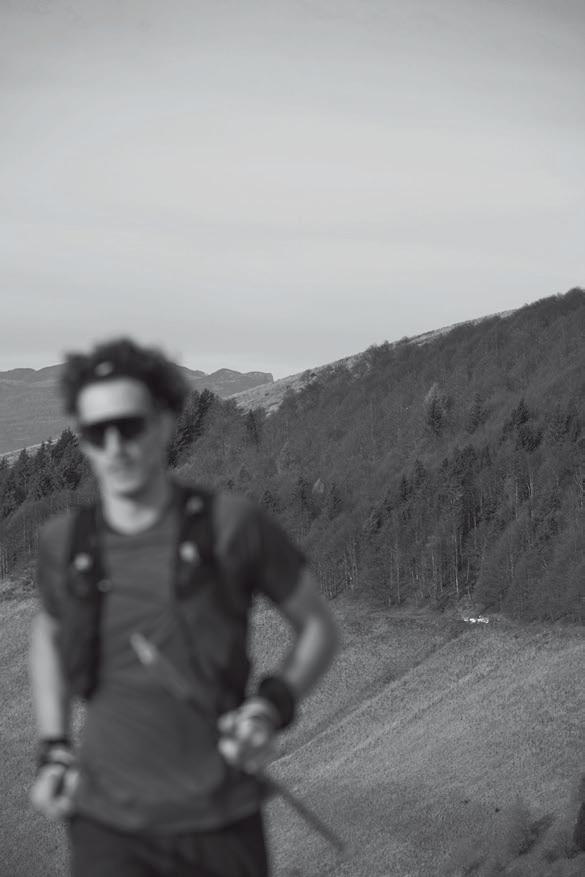
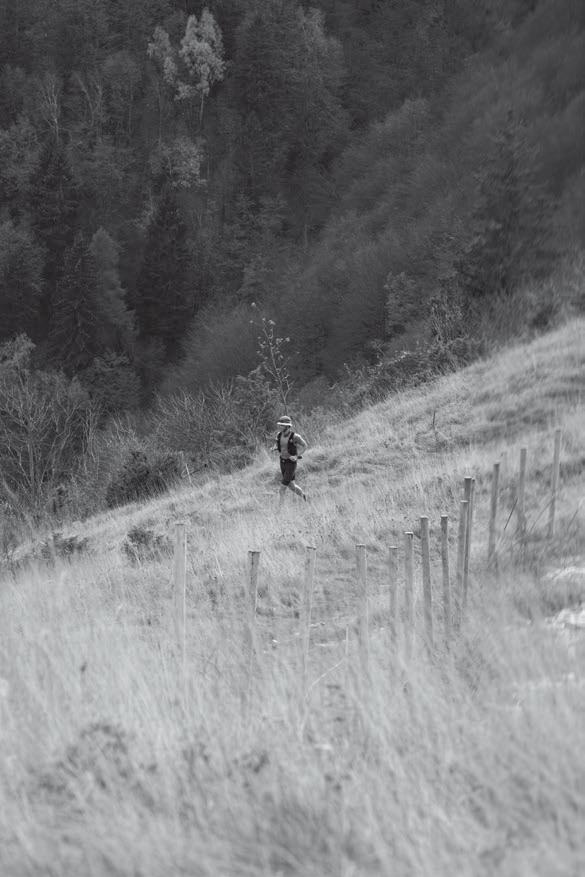
79
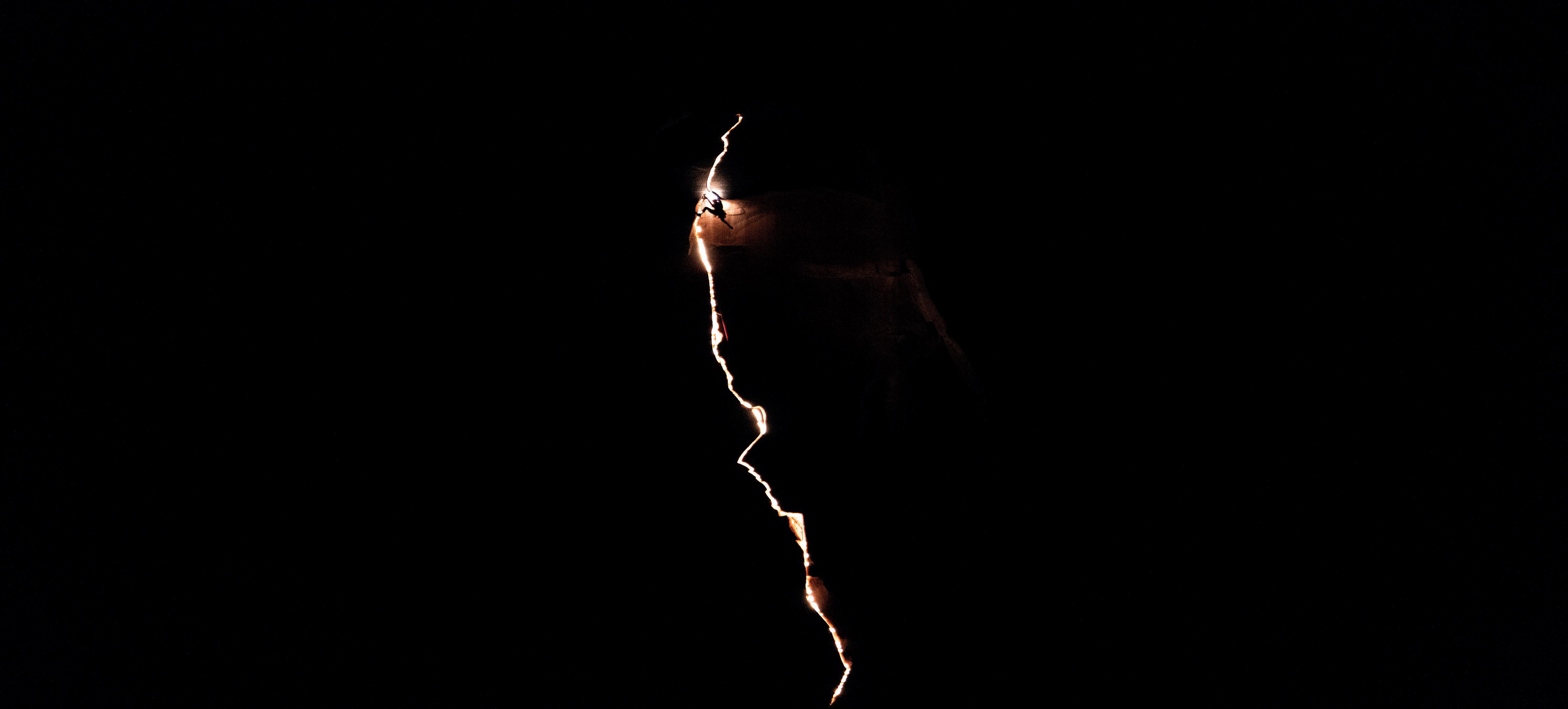

Guiding Light Krystle Wright

ILARIA CHIAVACCI PHOTOS KRYSTLE WRIGHT
DI
It sometimes happens that those who have had a busy life and have been in frequent and willing contact with extreme situations develop a sort of ancestral wisdom, an inner calm that allows you to see things with lucidity and detachment, which opens your mind to creativity and predisposes the spirit to make it happen. Krystle Wright is one of these people: barely forty years old she has already lived many lives and today she reaps the fruits of all this density, giving life to artistic projects that combine vision and sport, friendship and nature, like the one that brought her in Utah together with her friend and climber Angela Van Wie Meersch to illuminate from the inside the crack of Seventh Serpent, a 5.11+ route which cuts through the rock in a rather suggestive way. When you think about it, the best strokes of genius are sometimes also the simplest: illuminating the rock from within, in fact, marking a route with light so that its shape emerges in the dark. An idea so clear as to be perfect that came to the Australian photographer from an incredible life and inexhaustible creativity. Krystle lives in Queensland, an hour away from Brisbane, we get stuck with the time zone, she has nine more hours on her shoulders when we talk on Zoom: here the day has just begun while hers is about to end. Krystle has a very strong impulse towards nomadism, but since the pandemic she has had to take root, choose a more or less fixed home and place. “Over the last ten years I have traveled the world sleeping on my friends' sofas, looking for all sorts of
adventures that would inspire. Then the pandemic arrived and now I have a house, which is not bad, because it is often in moments of emptiness and boredom that the best ideas come to you.” Krystle has always had little time to get bored because before she was sent as a photographer to cover all the major sporting events, from the Olympics to the world cups up to the most bizarre and extreme competitions. “After four years as a sports photographer for the newspapers I was extremely tired I realized it wasn't for me."
What made you change your mind?
When I was free from work I always organized expeditions and adventures on my own and explored different sports. My first major expedition that can be defined as such was on Baffin Island, halfway between Canada and Greenland, it was the first turning point because, from the moment I had that experience, I immediately understood that this it was my life. I was still living in Sydney at the time and working as a newspaper photographer to support myself: I remember this moment when I was sitting in my car in front of the editorial building and I couldn't get in because sitting there I realized more and more how much I hated that job. I had already decided to quit my job, but I had one last assignment to complete: a skydiving expedition in Pakistan. I was very focused on work, because it was my big break with National Geographic, and then one day we missed the right take-off window and I found myself going downhill. It was tough, but some
82
A photographer with an extreme past has created an incredible visual project where light and climbing merge: here is the Seventh Serpent as you've never seen it before.
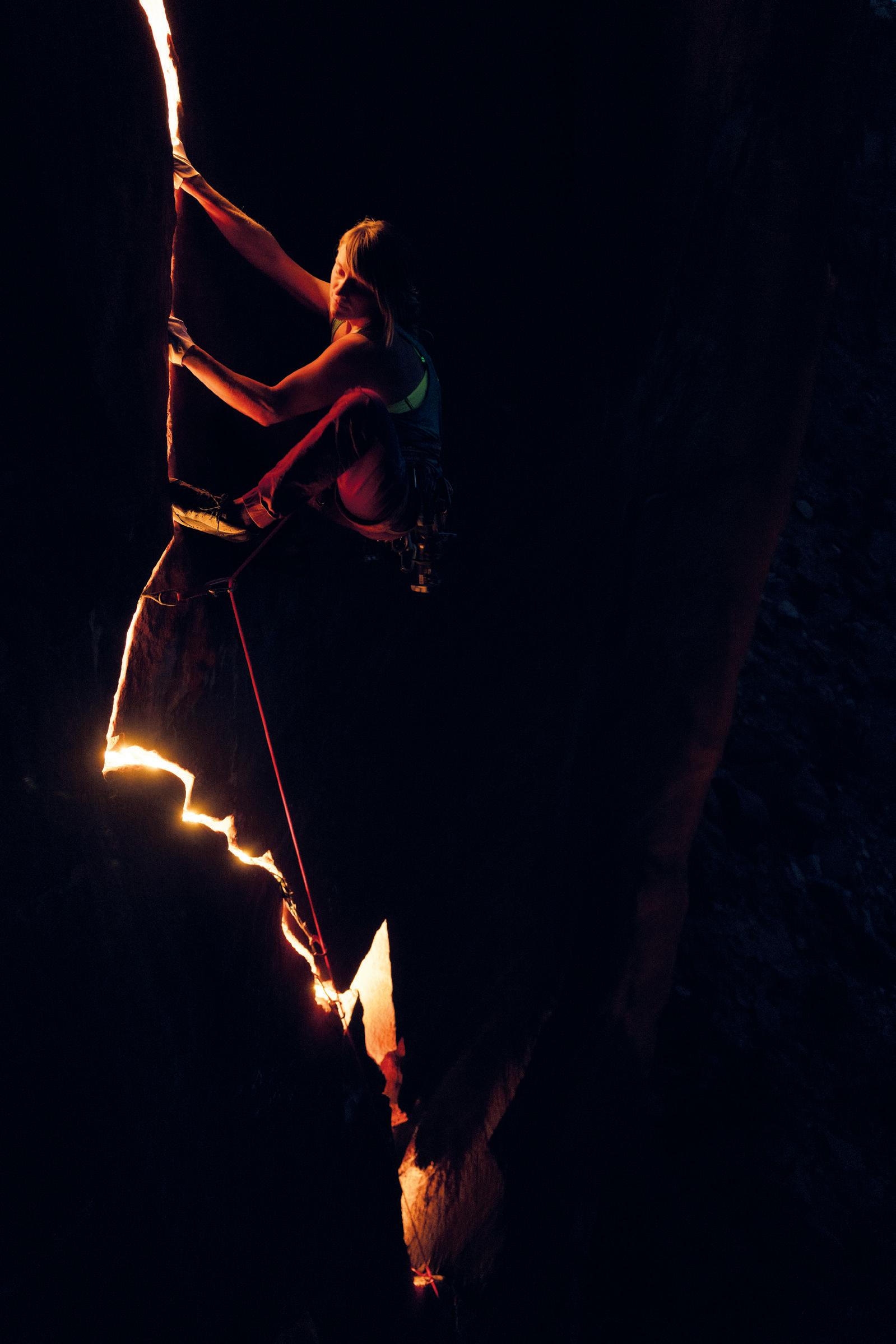
times the worst things that happen to us are the best watersheds in life. When I came back I definitely realized how much I hated my job and so I quit immediately, I was in a toxic relationship, and with a little more time I got out of that too, I was living in Sydney but I'm not a person who loves live in the city, and so I left.
Now you are somehow grounded again though… Constantly living on the road can be extremely romantic, but what most people don't realize is that it involves a huge sacrifice in terms of privacy, because you're always in someone else's space. I was starting to feel the need for my own space when the pandemic forced me to create my own. In doing this I realized that the best thing about being grounded is having time to be bored, which is a great thing because that's what drives you to dream. Before with all the travel and all the people I was constantly surrounded by I had stopped dreaming because my mind was constantly stimulated. Here instead it happened that I started to come up with ideas again and, one day, while I was driving to go to the spot where I usually climb, I had the idea of trying to see what would come out of lighting a route with artificial lighting. In fact, my work moves along two distinct directions: on the one hand, I document what happens without prior direction, I like to be there, live in the moment and tell about it, but on the other, I like to fantasize about creative concepts in which to involve athletes who have a certain vision.
And so you decided to light up the Seventh Serpent in Utah… Last year I had the opportunity to go to Utah with my friend Angela Van Wie Meersch, I was thinking about it for a while and there I found the perfect crack to light. Originally the idea was to shoot on a full moon night in order to have more brightness
overall, but in these situations no matter what perfect design you have orchestrated in your mind, nature can always play tricks on you along the way and you have to adapt. Even scouting for the crack wasn't immediate, but when we found Seventh Serpent in front of us we understood that it was it because we were looking for one that had a nice shape, that wasn't entirely straight, but not even interrupted, so it wasn't easy and when we saw it we knew that was it.
Operationally it must not have been easy either to set up the set or shoot… Not at all: Angela climbed first, and once at the top, I followed in her footsteps to insert the lights along the crack. Which wasn't easy because I had to secure them well with some tape: the last thing I wanted was for one of them to fall out at some point. However, this operation lasted two days because we were there in a period in which the temperatures were extremely high and we could not climb during the day, but had to wait for the sun to go down in the late afternoon. In the meantime, however, we experimented, for example on the first day, after arranging the set, we did some close-ups and the next day I went down and up from the opposite canyon to shoot from a different perspective.
What did
this
project mean
to you?
The coolest thing I could experience is that people recognized that it was a unique idea: this was a nice feeling. I've built my career on following my passions and
84
I realized that the best thing about being grounded is having time to be bored, which is a great thing because that's what drives you to dream.
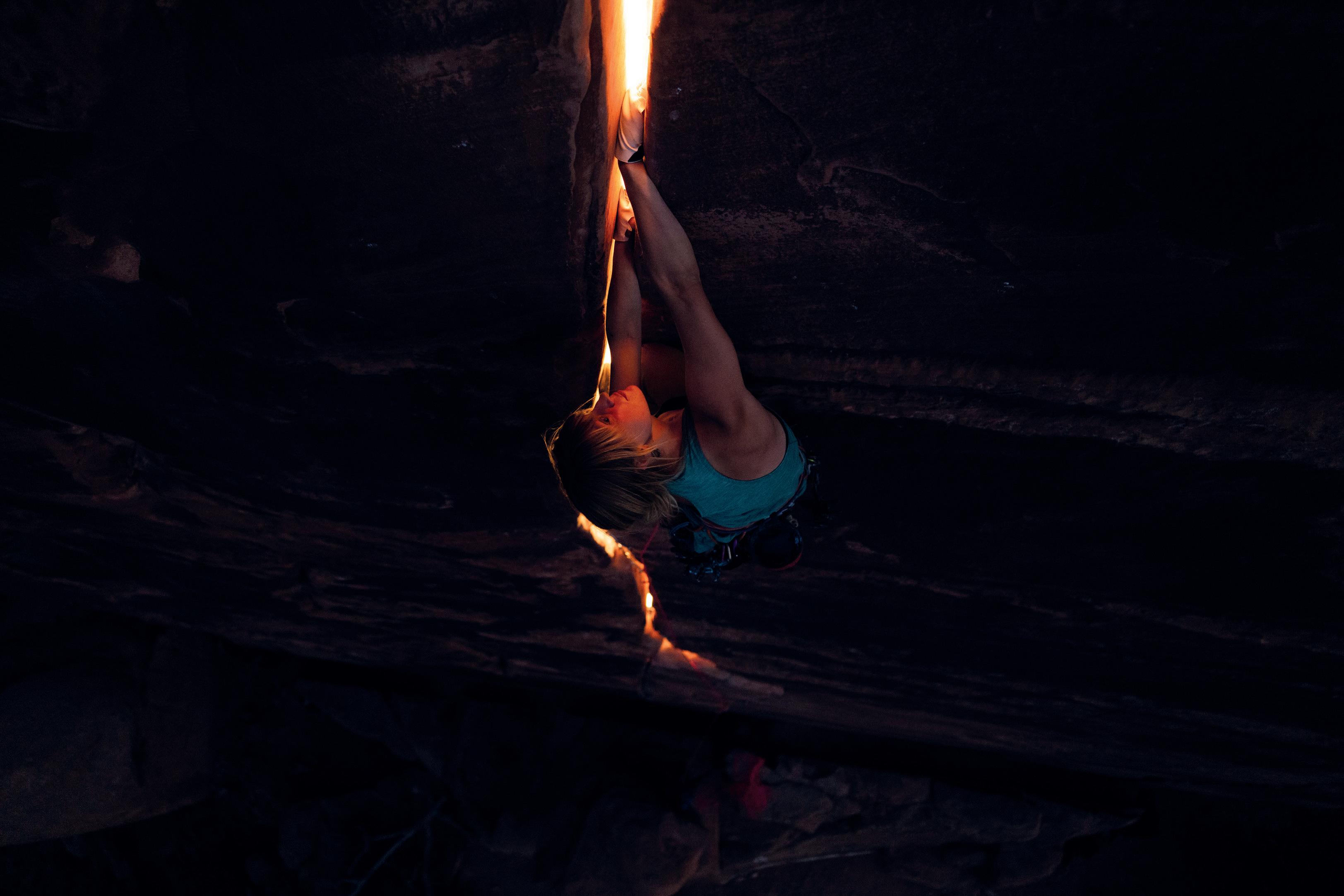
projects related to those and successes like this make me realize how much I'm on the right track. You will never be able to know what others really want, so it makes no sense to create projects based on what someone might like: if instead you convey what you believe in, people will spontaneously connect with that work, because they will see what you see and they will recognize the ambition that led you to make it happen. Ultimately it's not even about making money, because I'm not even close to getting back what I invested, but that's not the point. What I wanted was to realize a vision I had, to satisfy that curiosity: now I know that I will come back to shoot variations of that idea and I can say to myself “Good, you had a great idea!”
How important is the relationship with the athlete in this type of project? Most of the time I work with athletes and they often become very close friends, some of those I've worked with more closely now are kind of extended family to me. I've known Angela for a really long time, even though we hadn't worked together but, when I told her about the project, she was 100% involved right away. There is a small group of athletes that I contact when it comes to projects like this, because it requires a lot of patience on their part: it is not just about getting in, climbing and leaving, but instead it is a project that takes several days, in which you have to work out to solve problems and understand how things can work. I think Angela was happy just to participate in something extremely creative.
What do you see in your future as a photographer? I don't want to sound too nostalgic, but I didn't grow up surrounded by social media and I spent mornings and mornings doing nothing, just lying with my cat in the sun: I miss those moments. Our society always leads you to look at what's next and not to consider the moments of tiredness, not taking into account the fact that it is not possible for each of us to always give everything 100% every day, every hour. We need moments of down and accept the moments when we are bored, because it's healthy: it's those moments that are precious for fueling dreams and creativity. I think what I really want for my career is to keep cultivating ideas, because it gives me incredible satisfaction as an artist, but I don't feel the pressure of having to do it constantly. I'll try, I'll pick a couple of the ones I've had and I'll try to make them the best I can and I'll probably fail here and there, which is something to accept anyway, but that's what an artist does: try and then try again.
Ultimately it's not even about making money, because I'm not even close to getting back what I invested, but that's not the point. What I wanted was to realize a vision I had, to satisfy that curiosity: now I know that I will come back to shoot variations of that idea and I can say to myself “Good, you had a great idea!”
86

Marco & Roby, Io, Tevere
 BY ILARIA CHIAVACCI
PHOTOS DANIELE CUOGHI
BY ILARIA CHIAVACCI
PHOTOS DANIELE CUOGHI

A documentarist with a passion for sharks, one of the strongest Italian surfers, 406 kilometres, 12 days, a van and two sup boards, dozens of hours of footage, lots of waste collected and one vomit: the journey of Marco Spinelli and Roberto D'amico (who from now on will be Roby in the text, as everyone ultimately calls him) from the mouth of the river Tiber to Rome has given rise to a documentary that causes laughter, anger and emotion that alternate incessantly during all its 34 minutes. “Io, Tevere – Le radici del mare” is a short film produced by FACE and financed by the co-participation of Flowe, Breitling and Cotopaxi and is part of the “Progetto Tevere", an initiative born with the aim of bringing events and workshops to schools for the promotion of environmentalist culture. Marco and Roby have in common a very deep love and an ancestral bond with the sea and this is probably what led them to unite, to elect themselves as travel companions even before they really know each other well and to embark on an adventure as dense as it is tiring. Both in their intense life of frequenting the sea they come across an incredible amount of waste every day: Marco is an underwater documentary maker, among his works “Missione Euridice”, a documentary available on Amazon Prime Video where he tells how he freed, together with his brother Andrea, one of the most important shoals in Sicily from a ton of ghost nets while Roby, in addition to being a very strong surfer and spending 90 percent of his time
among the waves, is the founder of the Roby Cleanup movement, with which he periodically cleans up waste from beaches and beyond together with the volunteers who want to join him. “Anyone who lives by the sea is well aware of the problem with waste and what it origin is” says Roby. “That's why the documentary is called La radici del mare that means The Roots of the Sea.”
Marco: We imagined the rivers as if they were the roots that lead to the sea: and, if you think about it, even from a visual point of view, the rivers are the roots. Only those who experience certain realities truly touch the damage caused by pollution. Roby is in close contact with it on the surface, while I deal with it underwater. However, what happens at the sea often originates in the city: how does a polystyrene package that is used on plantations or a soccer ball end up in the river? We need to act on awareness and on how the river is managed outside. If we all acted more sensibly we would solve half of the problems, but sometimes people behave wrongly simply because they haven't been educated about the consequences of those actions.
Roby: In fact, the most important grounding of the project was to bring our experience to schools: we did a first round in which we told our journey, but without showing the documentary, which was not yet completed, and now we will leave for a second tour during which there will be a screening. We are sure that speaking to 2000 - 3000 students can really make a big contribution to changing things.
Roby, in addition to being a very strong surfer and spending 90 percent of his time among the waves, is the founder of the Roby Cleanup movement, with which he periodically cleans up waste from beaches and beyond together with the volunteers who want to join him. “Anyone who lives by the sea is well aware of the problem with waste and what it origin is” says Roby. “That's why the documentary is called La radici del mare that means The Roots of the Sea.”
90
“Io, Tevere - Le radici del mare” is a bittersweet documentary, which tells both the beauty of this mythical river and the terrible conditions of degradation in which it finds itself, especially on the outskirts of Rome. Are you ready to join a van adventure with Marco Spinelli and Roby D’Amico?
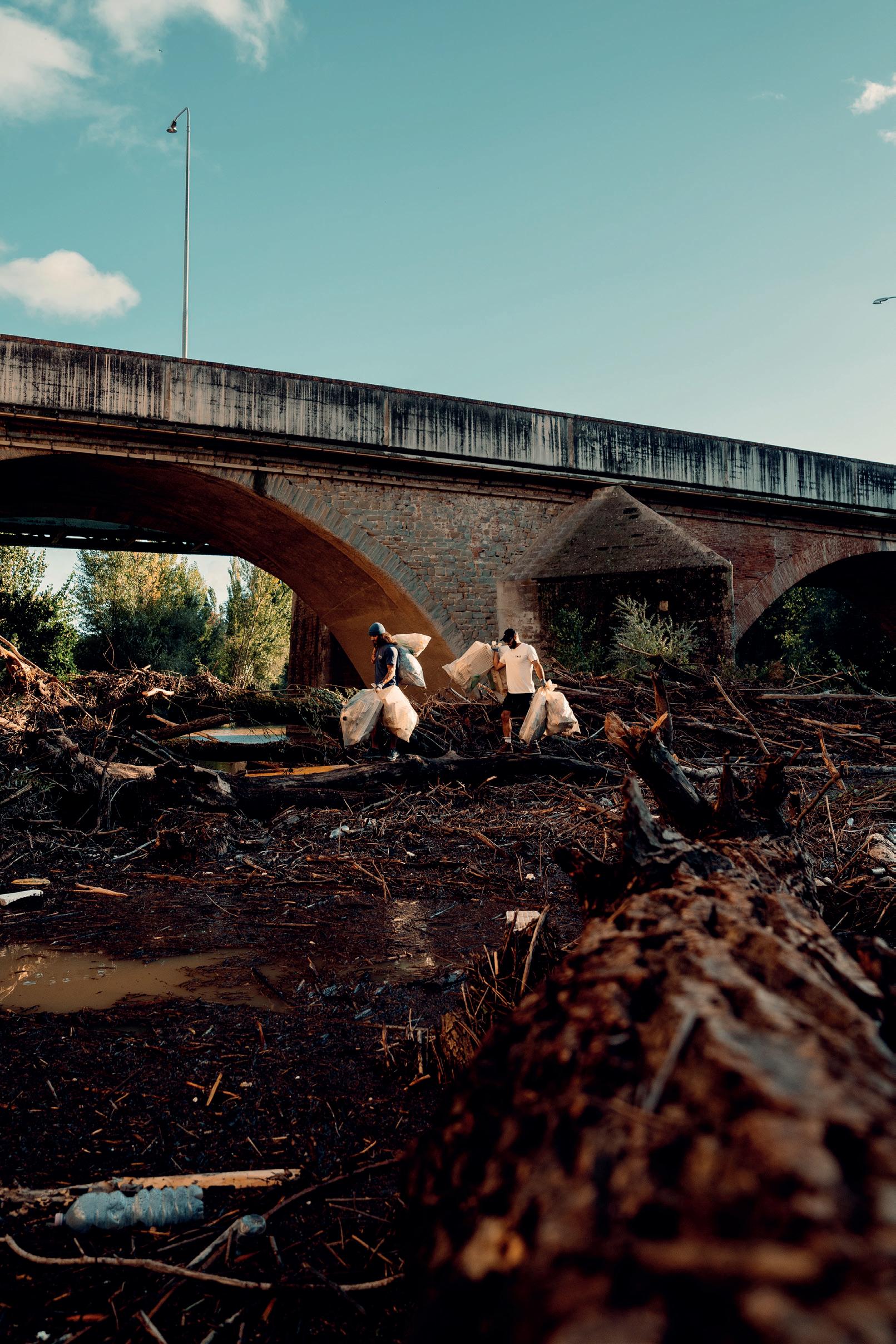
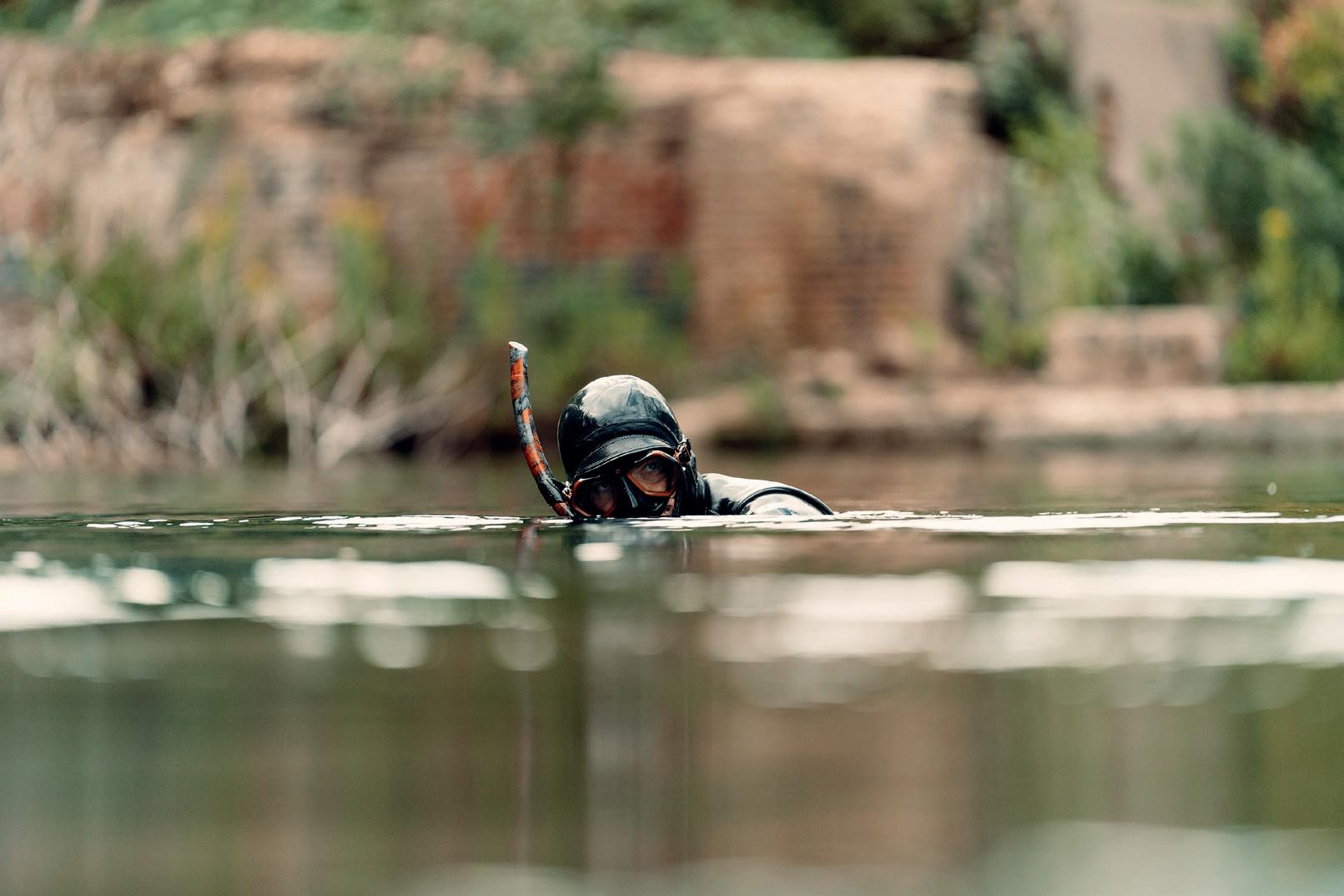
Marco is a filmmaker, but the world of video productions is not new for Roby either and he has shot short movies related to surfing.
R: In everything you do, when sport is involved, a little envy, some competition always arises, you always want your part to be the best, the one with the most beautiful performance. Instead, in this project it was natural for us to bring out the best in each other. We have been good in managing situations that are not easy to handle.
Watching the documentary it actually seems that they have been friends for a lifetime.
M: We didn't have a big production behind us, with many years of experience, so the nice thing is that we all helped each other a lot. On the last day in Ostia we were all very tired, plus, getting around there at the seaplane base isn't easy at all: on opposite there's a slum and it's a situation where arriving with video cameras isn't the best. The operators were a little hesitant, but in the end we teamed up and brought home the scene.
R: Passing through Ostia was important, however, also in the context of the documentary itself, there is a very marked situation of degradation there, with the landfill a few meters from the slum: we wanted to emphasize precisely this, on how these people are forced to live.
In the documentary Roby and Marco reflect on the fact that people feel like guests of nature, and not part of a whole: as they move away from the estuary towards the city, the difference in behavior between the people they met along the path is evident. The communities that live more immersed in nature are the ones that are more integrated with it, that pro -
tect it more, while the closer the two protagonists got to Rome the more this aspect was lost, up to the entrance into the city, accompanied by the majesty of the capital, but also from an incredible amount of waste.
M: In the city, the river is there for all to see, but it's as if people don't really see it. We, too, realized the real amount of waste only by navigating the river. It's not a normal situation and you can barely perceive it from above, but it's from inside, from the perspective of the Tiber, that it's scary.
R: We cannot understand how such a thing is there for all to see and nobody does anything. And we are not talking about plastic bottles, but mattresses, bicycles and all kinds of waste.
*I recommend skipping this part if you have sensitive stomachs or if you are reading The Pill over a nice breakfast*
In a scene of “Io, Tevere” Roby in picking up a bike thrown in the river is hit by a very strong smell, he collapses on the board and starts vomiting.
R: In the documentary it is relatively short scene, because it was cut, in reality it went on. I didn't want to put it, but Marco treacherously inserted it.
M: Just think about that to FACE, who produced the documentary, and to the financiers, I had promised that I would have shortened it further, I never did. If it has to be a documentary then someone who retrieves a bicycle from the river and starts vomiting is quite comprehensive with respect to the situation.
R: If you say Tiber, the first thing that generally comes to mind is disgust, a river full of waste, which stinks, the journey instead has turned into a discovery of many beautiful realities, both
from the landscape point of view and from the communities that populate the banks of the river and that do not have the resonance that they should have. It is a 400km long coast that could be exploited more, in some places it could become suitable for bathing again. Our goal was to raise awareness about the bad things we are doing in the Tiber, but also to show people how beautiful this waterway is.
M: Along the way we have also come into contact with hidden and very serious dynamics, such as countries that illegally discharge into the river without purification. But we also had the opportunity to get to know beautiful realities, oasis and associations, such as Tevere Explora in Torrita Tiberina, which is a crazy place where the intention is to involve young people thanks to the organization of activities in contact with water. In fact, the theme is also that if people stop experiencing the river, then they become disaffected and, consequently, disinterested. Pollution is certainly a problem, but there is a lack of a narrative aimed at enhancing the positive aspects and beauties of the Tiber.
Roby and Marco are accompanied, throughout the journey, by an epic narrative voice, which guides the spectators through the bends of the river, but also through its sufferings.
M: Giving a voice to the river was the best choice because the voice over, the river that speaks, signifies our desire to give a voice to nature, which we never hear. We wanted to represent this dichotomy between the river, old and pissed off with young people, and them who instead work to give it a hand and in the end earn its affection. In fact, the documentary closes with the request of the Tiber "Dear friends, please do something."
92
*I recommend skipping this part if you have sensitive stomachs or if you are reading The Pill over a nice breakfast*
In a scene of “Io, Tevere” Roby in picking up a bike thrown in the river is hit by a very strong smell, he collapses on the board and starts vomiting.
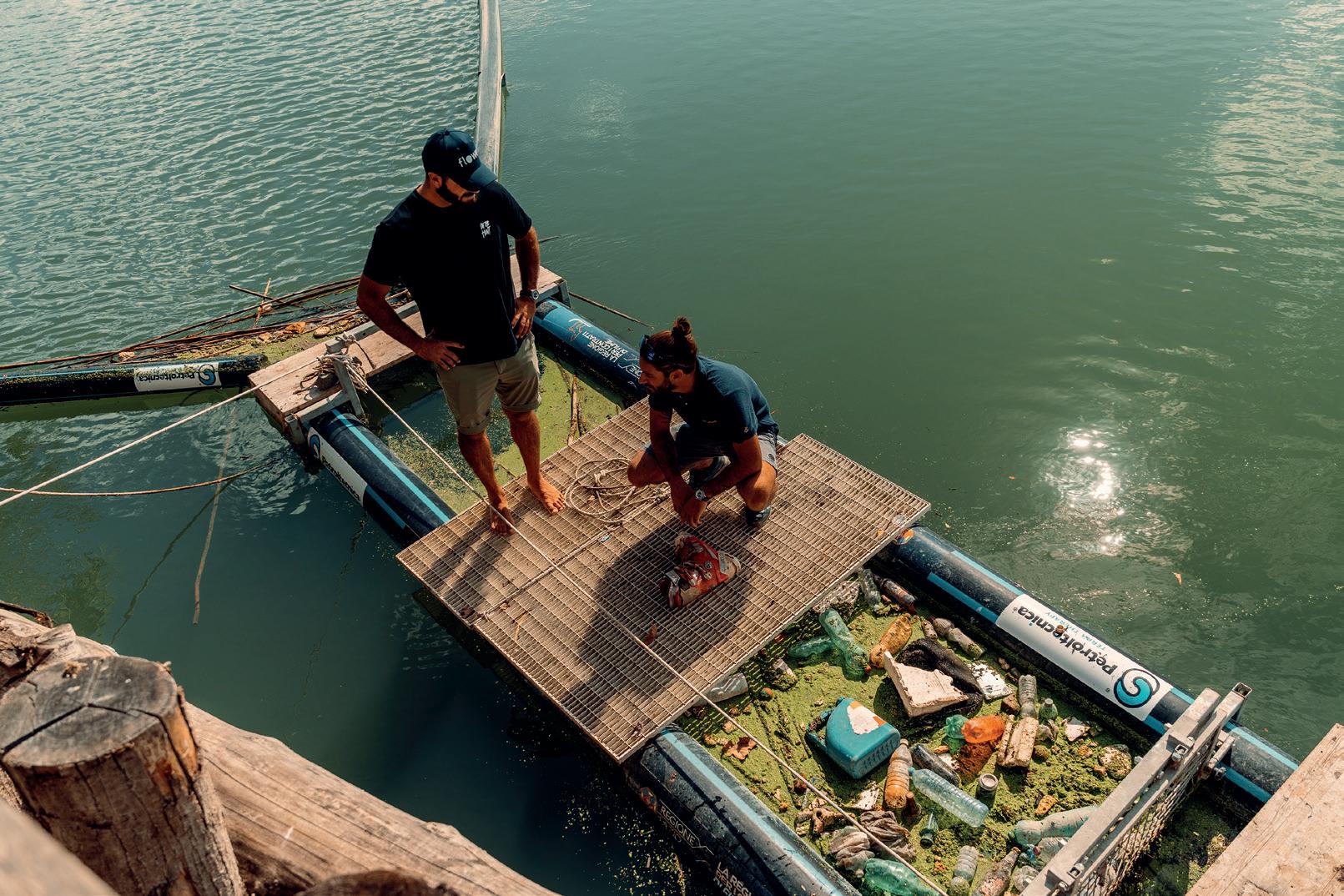


Heinz Mariacher The Innovator
BY TRISTAN HOBSON

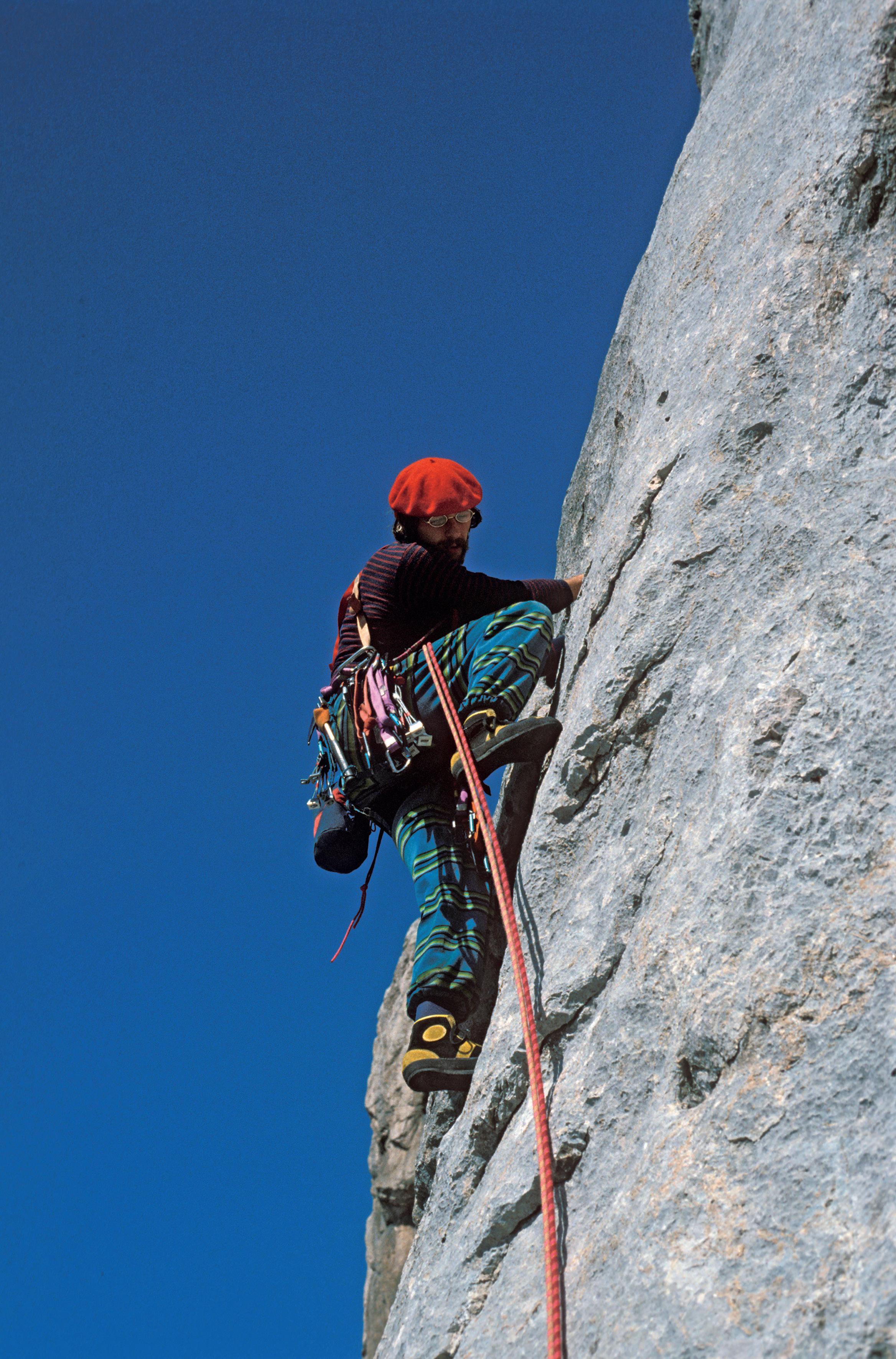
Heinz Mariacher sits at the kitchen table on Karerpass in the South Tyrol province in Italy. The drizzly snow of an early-fall storm blankets the Dolomites, preventing the 66-year-old from climbing at a secluded crag in an alpine valley 20 minutes from his house. The climbing area is home to some of Italy's original top sport routes, yet has stayed out of the climbing media, just how Mariacher prefers it. "Climbing has always been about having fun and personal challenges," he says, "not fame or a high profile." In this quiet valley, Mariacher owns land where he has restored an old farmers hut to relax, climb, test shoes, and develop routes, away, ironically, from the masses drawn to the very sport he's helped elevate.
Just out the window, the clouds transform the sea of red Dolomite peaks into a dreary grey that spreads east toward Marmolada and Sass dla Crus, mountains where Mariacher helped shape free climbing, starting in the 1970s. An hour's drive in the other direction lies Arco, where his fire for free-flowing movement helped ignite sport climbing in the early 1980s.
As we chat over an espresso, Mariacher disappears upstairs, returning with a black slip-on gymnast's shoe. "This slipper is from 1970," he says. “I discovered it in a shop in Innsbruck and immediately fell in love with it!" When he began designing rock shoes for the Italian shoemaker La Sportiva
in 1982, he couldn't wait to design a climbing slipper based on it, though his first task was to design a stiff, high-topped boot. After the Mariacher (the high-topped shoe) came out in 1982, he continued to create some of the sport's most iconic rock shoes, including many for SCARPA, where he now works.
The jovial animation in which Mariacher explains his love for this slipper and the sport balances the meticulousness of his orderly mind. He has a generally reserved personality that is often seen as obstinate, especially on social media or on his website, where he is unrestrained in his opinions about how modern-day climbers have become too obsessed with image and media presence, versus the bygone times "of total unconditioned freedom because nobody gave a shit about climbing."
A few days later, after the weather clears, I see this ethos firsthand at his secret crag, a place he and his wife are happy to share with friends but have asked guidebook authors to pass over in hopes of protecting their quiet sanctuary. Here, at this limestone cliff high in the Dolomites, deer still roam and wildflowers line the rock.
Given his resistance to change, it might be easy to paint Mariacher as an old hippie, one of those wizened locals who's been quietly climbing hard forever and has a bottomless well of crusty opinions. But he's a much more
complex, quirky character, one who also embraces technology, modern luxury, and new ideas, especially when they fuel his desire for fun and play. And while his calm, quiet, and directto-the-point way might feel closed off, he is always eager to listen, laugh, and share a story with others that hold a similar view of personal enjoyment, not self-promotion.
Born in Wörgl, Austria, in 1955, Mariacher began climbing when stiff-soled mountaineering boots were the norm. As a child, he and his brother, Rudi, 12 years his senior, were raised in a traditional keep-your-head-down and work-hard manner But, as he recalls, "I had total freedom as a kid. After school, I would just leave with my bicycle and go to the woods and play trapper, or explore canyons from the riverbed to the top, disappearing until dark."
By the time Heinz was 16, climbing had become a significant focus, and to no avail, he tried to find partners through the Austrian Alpine Club. But the traditional mentality of climbing in heavy boots with aid-ladders did not suit the young man's free-ranging style. Instead, he continued to explore climbing by himself, soloing, or with the occasional partner. By age 17, Mariacher had soloed the most challenging routes in the Kaisergebirge, his home mountains.
A year later, Mariacher began to adapt this spirit, of moving as quickly and freely as possible, to the intrica
97
Heinz Mariacher has spent four decades creating rock shoes. A cutting-edge climber of the 1970s and 1980s, he's used both his experience and his eye as an artist to catapult footwear from clunkers to the precision tools we use today.

te faces of the Dolomites. In 1974, at age 18, Mariacher linked the Cassin (VII- 500 meters) and Comici (VII 500 meters) on the Tre Cime in under four hours. He went on to solo Lacedelli (VI+ 500 meters) on Cima Scotoni, self-belaying on the first pitch, and then soloed the Vinatzer (VI+ 800 meters) on the Marmolada, in 1975 at 19, using a rope on only the sixth pitch for a self-belay by fixing a loop of rope through two pitons.
"To me, climbing has always been about moving light and fast and enjoying the physical experience, not just conquering a face or mountain at all costs" says Mariacher. His less-ismore approach marked a major break from the traditional, heavy-handed way of Dolomite climbing, and shook the scene to its core. His friend Hoette finds Mariacher's ethos especially remarkable given the notorious rock in the range. "The rock is complete brittle crap, a hold could break off in your hand at any moment" Hoette says. "Honestly, it's lucky he didn't die in those early years of soloing. He wasn't pre-inspecting routes or reading topos and books, he would just walk up to the wall and start climbing."
In his early 20s, scaling back his job as a land surveyor, Mariacher took up summer residence in his car and moved to the Dolomites. His style of climbing and way of living were an affront to the local ethics, his noto -
riously late starts and casual approach shook their entire foundation. Mariacher wore brightly colored homemade clothes, feathered hats, and John Lennon glasses, "a rebellion against the tradition of the boring brown and grey worn in the mountains in those times" he says. Within his rebellion, however, were also strict rules: No bolts, no resting or pulling on gear (a development after his early days), and only climbing ground-up, even if it meant bailing to come back another day, all rooted in a desire to "test my limits, not the limits of gear."
Following this ethos, Mariacher put up numerous routes in the Dolomites throughout the 1970s and 80s. Due to the lack of bolts, sparse natural protection, and runout cruxes, these routes are difficult to translate into today’s modern grading system of technical moves, but many have stood the test of time as masterpieces. He is most associated with the Marmolada and its 900-meter south face, where he opened 12 new routes between 1977 and 1982. His collection here includes still rarely repeated lines such as Abrakadabra, the first VII on the wall, in 1981, and Tempi Moderni (VII+ 900 meters), a masterpiece that as he explains is "a line I viewed as the last hope for the classic idea of free climbing, where a route was put up ground up without pre-inspection, all gear was placed on lead, and although pins could be used for protecting a
hard move hanging on them was not acceptable." This was an accomplishment undertaken with Luisa Iovane, whom he met while climbing in 1978 at Passo Sella, in 1982. Iovane in her own regard, was an excellent alpine rock climber and went on to become one of the best sport and competition climbers of the era, with 8 Italian Championship titles, international podium finishes, and ranking second in the 1989 Worldcup behind Lynn Hill.
"I was 17" recalls Iovane. "I had already had very outstanding partners, but he was by far the best climber and the fastest. And he didn't mind me climbing in shoes with smooth soles and without a helmet, because he did too. I could happily fill pages and pages of my climbing diary with our ascents. After the first summer, though, I also had to accept the fact that sometimes we kind of wasted a perfect-weather day with an unsuccessful attempt on a new route, just because of his strict ethics." Referring to the couple bailing from routes, forced to return another day, when a move or sequence could not yet be unlocked free, or without bolts.
Yet by 1980, after a trip to Yosemite with Iovane to climb Half Dome, the Nose, and Salathé Wall, Mariacher reconsidered the use of bolts. He says "In Yosemite, I saw climbing as a sport, and in a whole new way for the first time. I came back to the Dolomites and did Abrakadabra and Tempi Moderni. After that, I decided to dedicate myself to sport climbing, because it was clear to me this was key for climbing harder in the mountains, so I went to Arco and started developing routes."
In Arco, Mariacher was drawn to the sea of untouched limestone slabs. In 1982, he established the area's first real top-down sport route, Specchio delle mie brame (6b), telling himself "Fuck it, this is down in the valley, it's not alpine, and should be considered training." Bolting these otherwise
99
Given his resistance to change, it might be easy to paint Mariacher as an old hippie, one of those wizened locals who's been quietly climbing hard forever and has a bottomless well of crusty opinions. But he's a much more complex, quirky character, one who also embraces technology, modern luxury, and new ideas, especially when they fuel his desire for fun and play.
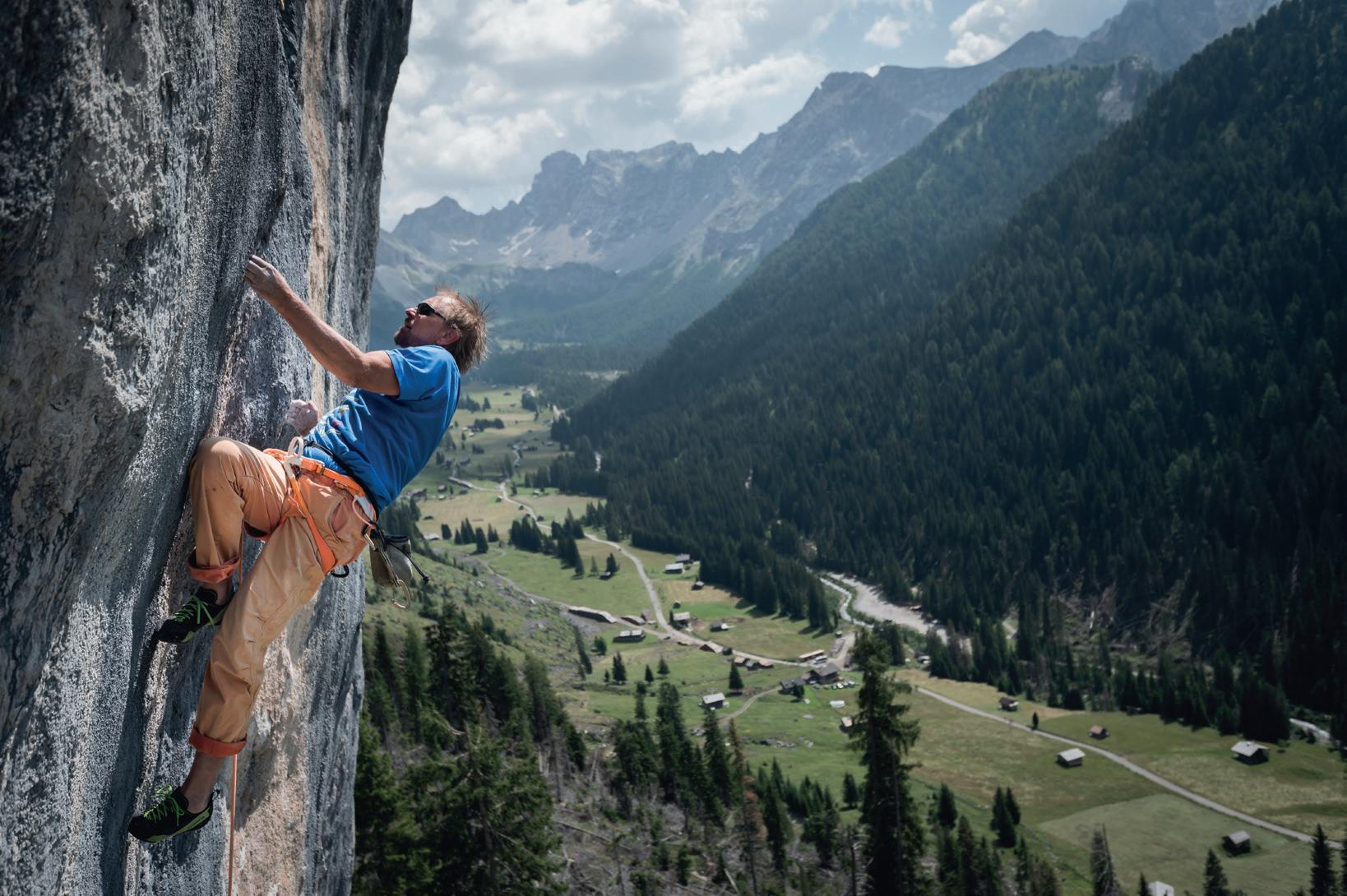
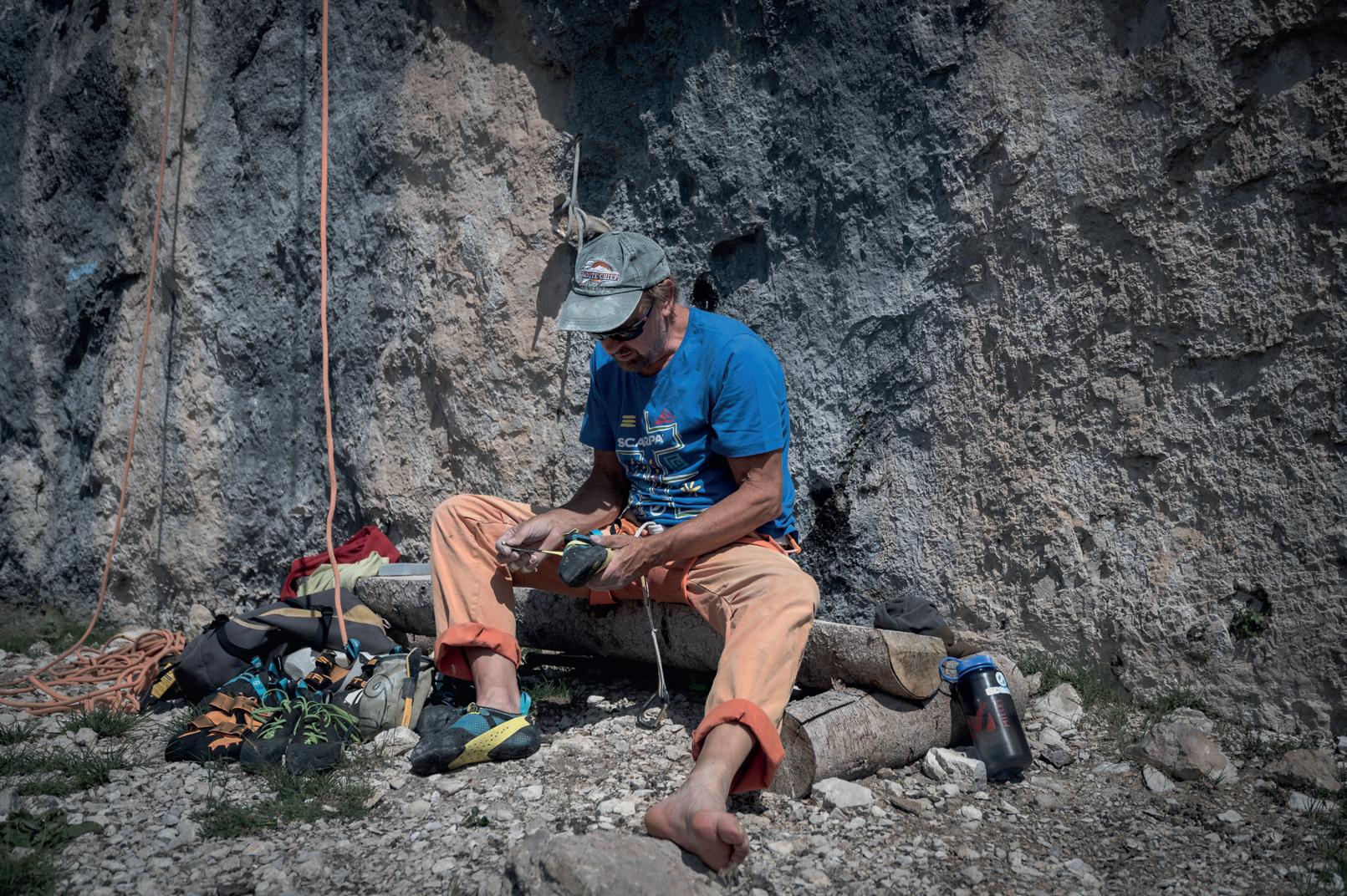
unprotectable faces let Mariacher as he explains,"reinvent climbing for myself" focusing solely on the movement, though by modern standards the climbs are sporty, with widely spaced bolts.
From 1982 through 1984, Mariacher put up some of Arco's most challenging climbs, routes like Super Swing (7b+) and Tom and Jerry (7c) that require precise footwork and hip-bursting flexibility. Both ascend nearly vertical walls, the rock so close to featureless that climbers must delicately transition from foot-to-foot on tiny smears and with minuscule crimps.
The Norwegian pro climber Magnus Mitbø, who climbed both routes in 2019, says "The holds are terrible, and you feel like you will be spit off the wall the whole way up. The routes also feel way harder than the grades. People were really good in this style back then, and maybe humbler too."
During this renaissance, Mariacher held, as usual, to certain principles. "Routes could only be bolted topdown by assuming the best place to clip, and moves could never be tried off-lead" he says. Even with the added safety of bolts, the climbing, done properly, still required continuous movement, and he did not believe in dissecting, practicing, and memorizing micro-movements on top rope. When the area gathered public attention and routes started to see top rope inspection and practice, Mariacher
moved on in dismay. First to Lumignano, making the first redpoints of open projects like Atomic Cafe (8a) and El Somaro (8a), showing his mastery of the day's hardest climbing. Then, in 1986, to Val de San Nicolo, where he established Kendo, one of the world's first 8b+ routes. And then bolted ground up Tempi Modernissimi an 8 pitch 7c+ on the Marmolada.
In 1981, La Sportiva approached Mariacher about becoming a sponsored athlete and to help them develop a new rock shoe, both rare opportunities at the time. Although La Sportiva had made a name for itself with its lumberjack and mountaineering boots, the then-53-year-old company had not yet been able to break into rock climbing.
Up to this point, climbers primarily used mountaineering boots or Edmond Bourdonneau's smooth-soled Super Gratton rock shoes (aka "EBs"), sometimes sized so small that a plastic bag was required to slip your foot in. However, Mariacher had always had a passion for testing different, random, non-climbing footwear on the rock, including models like the gummy-soled Italian Superga street shoe, which he admits he wore "simply because they looked cool on Dolomite big walls."
Through him, La Sportiva released its second rock shoe, the Mariacher, in 1982. The purple-and-yellow high-tops took the European market
by storm. Mariacher had chosen the midsole and worked on the last shape and rubber, which he figured out by testing different ideas on rock. "I would then come back, and we fine-tuned the stiffness, tension, and volume" he recalls. By 1984, the shoe had reached North America and officially garnered a global cult following, going head-to-head with the Boreal Firé, released in the States in 1983, and the first rock shoe to incorporate a sticky-rubber outsole. Mariacher got to release his long-awaited slipper, the Ballerina, in 1984. Although perhaps too far ahead of its time in terms of softness, this model marked the first slip-on climbing shoe, as well as La Sportiva's first slip-lasted design. In contrast to the traditional board lasting, in which a shoe's upper is stretched over the last–a 3D footlike shape and then fixed to a stiffer material (the board), which is then attached to the midsole and outsole, slip lasting utilizes a sock-like upper. This stretches around the last, with the midsole and outsole attaching directly to the upper. While both techniques are still used today, the introduction of slip lasting allowed for softer, more sensitive rock shoes, and more dexterous footwork.
In 1991, Mariacher spent eight months developing the Mythos, a shoe that 30 years later remains a go-to for edging and technical face. Alex Huber, the pioneering German free climber, is a diehard fan. "I climbed almost entirely with the Mythos even though you would see me on many occasions with other shoes, this was mostly because these were then the new designs which should get promoted" Huber says.
In 1993, at 38 years old, Mariacher transformed from athlete and designer to the vice president of R&D and a shareholder in La Sportiva NA. He felt "too old to keep up with the athletic evolution of sport climbing, and I wasn't interested in playing the mountain hero to extend my athlete status for another decade."
101
In Yosemite, I saw climbing as a sport, and in a whole new way for the first time. I came back to the Dolomites and did Abrakadabra and Tempi Moderni. After that, I decided to dedicate myself to sport climbing, because it was clear to me this was key for climbing harder in the mountains, so I went to Arco and started developing routes.
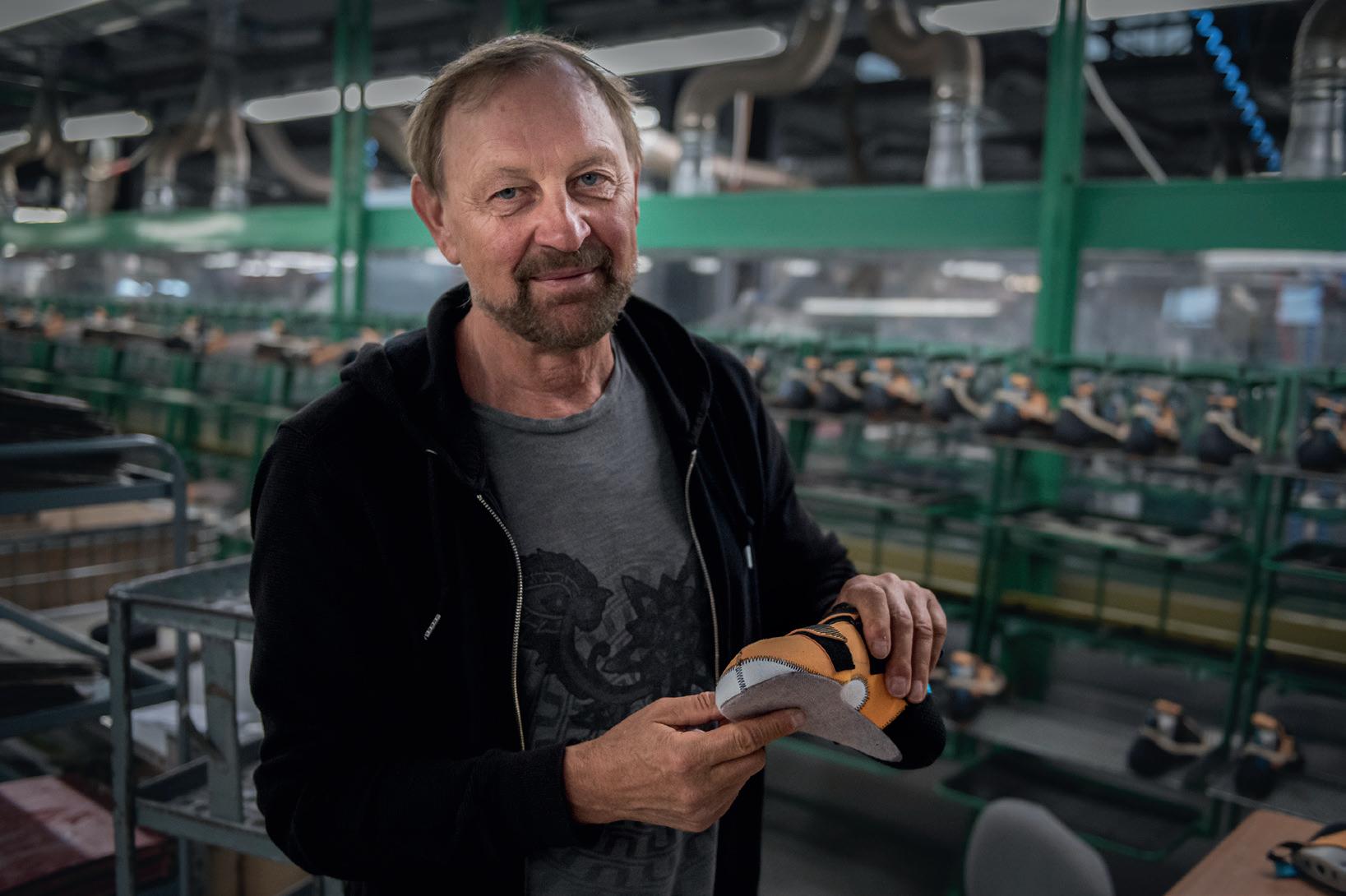

In 2005, Mariacher parted ways with La Sportiva with the idea of dedicating more time to climbing and hiking in the Dolomites. He was soon offered a position at SCARPA though, a then 67-year-old footwear company known for its mountain boots and telemark and ski-touring boots. Lured by the shoe factory in Asolo, Italy, and the chance to revamp the brand's climbing shoes, Mariacher joined up as Rock Shoe Category Manager. He says "Designing and testing shoes is fun, I still had a lot of ideas, and I knew rock shoes had not yet met their full potential." In what he describes as "the natural progression of knowledge and future wants in shoe construction" SCARPA in 2006 released the Mago, an asymmetrical, semi-stiff steep-rock shoe. Mariacher then began playing, developing entire shoe families (with matching lasts) that offer varying degrees of smearing, hooking, and edging fluency e.g., the Instinct line. Nina Williams, a SCARPA athlete using the Instinct LV to project the radically overhanging Simply Read (8b) in Rifle, Colorado, says "There is something special about the toebox. I can see a small foothold, and all I have to do is aim and the big toe then guides the point of the shoe right onto the hold."
Mariacher still works much as he originally did in 1981: he comes up with a concept of materials, shapes, and lasts, has a prototype assembled at the factory, and then climbs and adjusts. Testing is typically at his secret crag, where he can utilize specific routes and footholds as gauges. While Mariacher is known for his fluid, natural
climbing style, when he is testing, he says "My mind is not turned off as it normally would be. I am instead climbing with more awareness on how each hold feels, and I'm fully aware of what I am doing with my feet to get feedback." With this feedback logged mentally, Mariacher returns to SCARPA to work with the pattern makers, dissecting the minute details and fine-tuning. As he puts it "This is a process I could continue forever because there is always something to make a shoe a little better,” though, at a certain point the shoes need to go to market.
The Heinz Mariacher Ticklist
"As long as I can keep testing my designs and through my own knowledge understand what needs to be changed and adapted in the future, I will keep working on climbing-shoe projects" Mariacher tells me. As we watch the weather clear outside his kitchen, we make plans to climb at his secret crag/testing grounds as soon as the rock dries. There, he'll slip on a pair of unmarked prototypes and float up a sparsely bolted 7c, returning to the ground to examine the shoes in his hand, quietly making a mental note for some future change.
Mariacher has been setting standards in both sport and alpine climbing since the 1970s. "In the mountains, I refused to use bolts and cultivated a less-is-more-philosophy following an ethic of minimalistic protection, so that risk became part of the grade" he says. "V+ (with bad or no protection) in the Dolomites can be challenging, translated in French grading it's a 5a, which sounds ridiculously easy and means no challenge at all! In the old times we used to move a lot on extremely loose rock, on scrambling approaches, routes, and descents." The 800m+ routes on the Marmolada south face highlight the unique challenge of Mariacher's routes, where first ascents were done free, without bolts, and in a single day.
Regarding his attraction to this now infamous wall he exclaims “before the days of sport climbing, I discovered the Marmolada south face as an almost forgotten wall with only a few routes and a lot of free space for new ascents. For me and not even a handful of friends, it was the perfect playground to establish a new first ascent style in the Dolomites: climb light, fast and free and follow a less is more philosophy. Unfortunately, this ideal world lasted only a few years, because as soon as our new ascents attracted the attention of traditionally oriented alpinists, the wall was invaded by conquest alpinism. Several projects that I had attempted with purist style were lost to climbers who used a mixed style and solved the difficult passages with the help of pitons and bolts. Disappointed by this unfair competition and the missed opportunity to launch a new era on alpine walls, I gave up mountain climbing and joyfully turned to the emerging sport climbing.”
103
Up to this point, climbers primarily used mountaineering boots or Edmond Bourdonneau's smooth-soled Super Gratton rock shoes (aka "EBs"), sometimes sized so small that a plastic bag was required to slip your foot in.
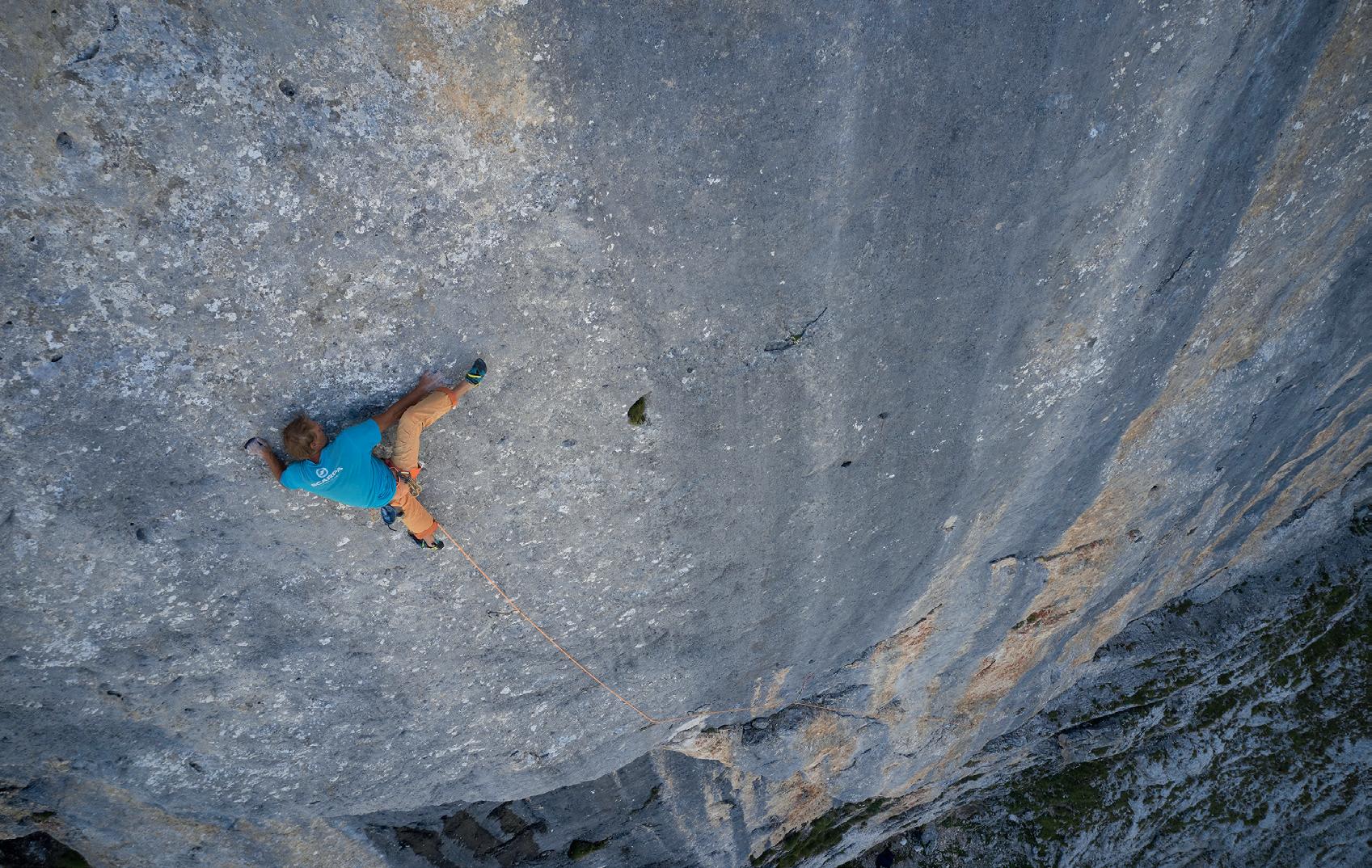
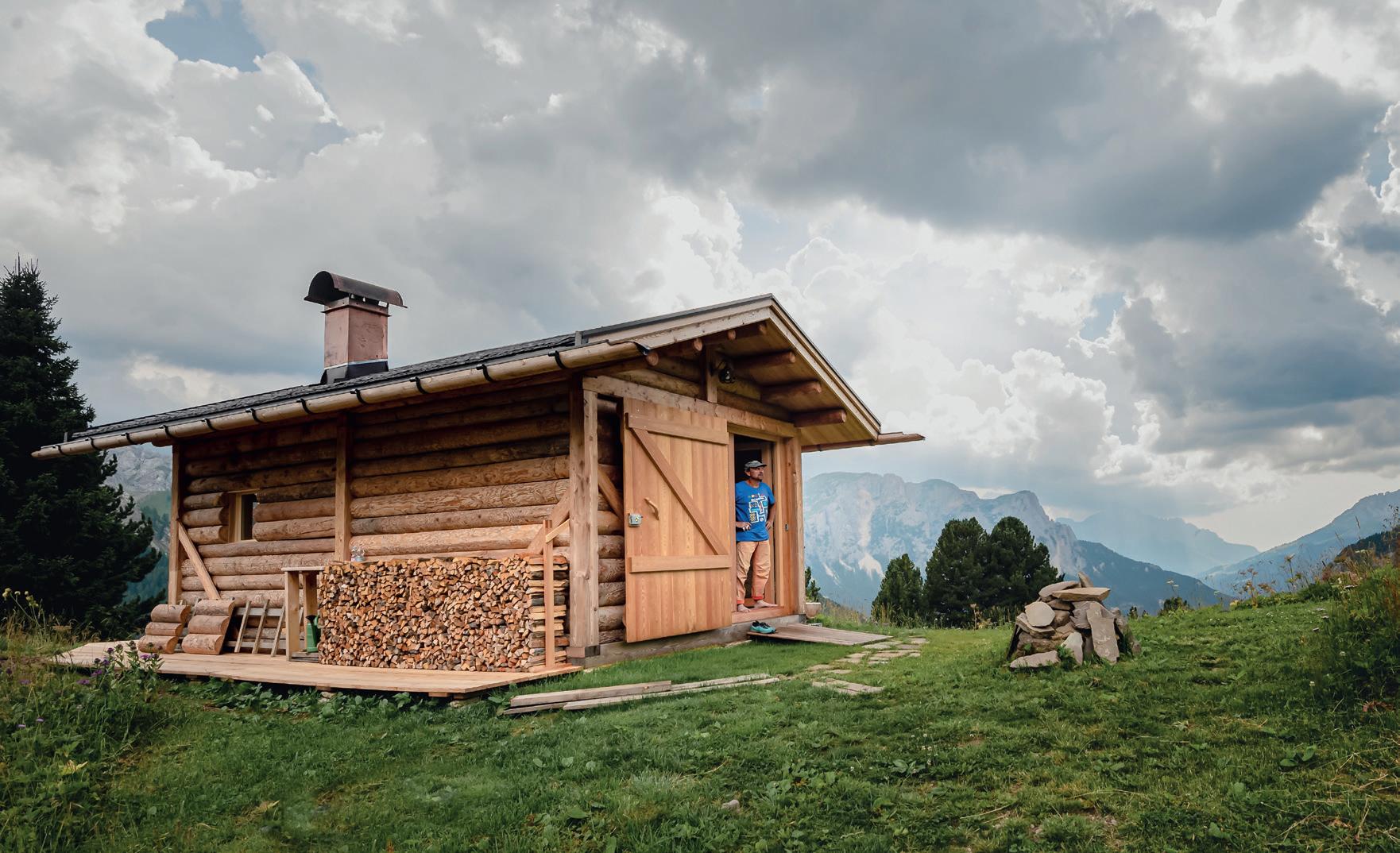
SOLO CLIMBS:
• 1973 Fleischbankpfeiler "Rebitsch" (VI+ 300m) Schmuck - Fleischbank, Wilder Kaiser (VI+ 400m)
• 1974 Cassin (VII-, A0, 500m) and Comici (VII 500m), Tre Cime di Lavaredo (3:30 hours total time for both routes)
• Lacedelli, Cima Scotoni (VI+, A0, 500m)
• 1975 Vinatzer - Marmolada (VI+ 800m)
• 1979 Conforto - Marmolada (VI+ 900m free solo)
• 1985 Don Quixote - Marmolada (VI 800m free solo, 1:20)
MARMOLADA FIRST ASCENTS
• 1977 Harlekin (VI+) on Punta Rocca. First ascent with Reinhard Schiestl
• 1978 Hatschi Bratschi (VI+) on Punta Ombretta. FA with Luggi Rieser “Darshano” and Reinhard Schiestl
• 1979 Vogelwild (VI+) on Punta Ombretta. FA with Luggi Rieser “Darshano” and Luisa Iovane
• 1979 Zulum Babalù (VI+) on Punta Ombretta. FA with Egon Wurm
• 1979 Don Quixote (VI+) on Punta Ombretta. FA with Reinhard Schiestl
• 1980 Abrakadabra (VII) on Punta Ombretta. FA with Luisa Iovane
• 1980 Sancho Pansa (VI-) on Punta Ombretta. FA with Luisa Iovane
• 1981 La Mancha (VI+) on Punta Ombretta. FA with Luisa Iovane
• 1982 Umbrella (VII-) on Punta Penia. FA with Luggi Rieser “Darshano”
• 1982 Tempi Moderni (VII+) on Punta Rocca. FA with Luisa Iovane
• 1986 Tempi Modernissimi (7c+) on Sasso delle Undici. FA with Luisa Iovane
• 1987 Via Attraversa Il Pesce (IX-) on Punta Ombretta. FFA with Bruno Pederiva, with alternate pitches
INITIAL SPORT ROUTES BOLTED IN ARCO
• 1982 Specchio delle mie brame (6b)
• 1983 Super Swing (7b+)
• 1983 Pipistrello (7b)
• 1984 Tom Tom Club (7b)
• 1984 Tom & Jerry (7c)
• 1984 007 (7c)
FIRST 8B ROUTES IN ITALY
• 1986 First redpoint of Kendo (8b+), San Nicolò
• 1988 First ascent of Looping (8b), San Nicolò
SIGNIFICANT SHOE DESIGNS
• 1982 La Sportiva Mariacher: smooth rubber, cottonlined upper, better fit than current rock shoes
• 1983 La Sportiva Ballerina: first slip-on climbing shoe, first slip-lasted shoe
• 1986 La Sportiva Kendo: first slingshot-rand climbing shoe
• 1991 La Sportiva Mythos: refined precision on a flat/ neutral last
• 1997 La Sportiva Miura: combined all-around performance with a relaxed shape
• 2003 La Sportiva Testarossa: precision, downturned shoe that balanced softness with active support
• 2006 SCARPA Mago: utilized an X-Tension rand to wrap the foot for 3D precision while adding edging support
• 2010 SCARPA Instinct: a family of shoes with different closures (slipper, Velcro, lace) and degrees of stiffness to impart various performance characteristics
• 2012 SCARPA Boostic: precision micro-edging shoe built for long leads and technical multi-pitch, updated in 2020
• 2016 SCARPA Drago: balanced ultra-softness with a natural and supportive feeling, and introduced the SRT-system (surround rubber tension)
• 2020 SCARPA Veloce: introduced extra-wide fit for gym climbing and long-session comfort
• 2020 SCARPA Furia Air: lightest and softest climbing shoe on the market, and which also introduced the PAF Heel System (a split heel rand) to deliver a powerabsorbing fit
105
Here, are some career highlights:

Katia Mascherona Goldilocks and the snow leopard
 BY LISA MISCONEL PHOTOS GIACOMO MENEGHELLO
BY LISA MISCONEL PHOTOS GIACOMO MENEGHELLO
It's not easy to paint the portrait of an athlete. You would like to tell what is not obvious, not times, results or training routine. It's easy to write and reflect on well-known figures who talk a lot about themselves and it almost seems like you really know them only thanks to all the material available on the web. This time instead we're talking about a very young athlete who talks about herself with control, precision and a touch of shyness, that same shyness that however vanishes once in the race. We’re talking about Katia Mascherona, born in 2001, with blond curls that make her unmistakable even when she is wearing a helmet. She was born and raised in Bormio, in Valtellina, as she says, the ideal place for those who love mountains and outdoor sports. In the last two years she has made herself known from Spain to Austria,
climbing not only the altitude differences but also the rankings until she earned the under 23 gold medal in the Vertical category at the Boí Taüll world championships.
How did you approach the mountains and ski mountaineering in particular? Has anyone passed on this passion to you? I used to practice alpine skiing in my childhood school days, but six years ago when my friends took me on a trip to the mountains with ski mountaineering equipment, I fell in love immediately. So, supported by my dad, I decided to throw myself into this adventure.
In this season you got on the podium quite a few times… How did it go? In the last two years I have achieved various results that are very important to me; last year I won
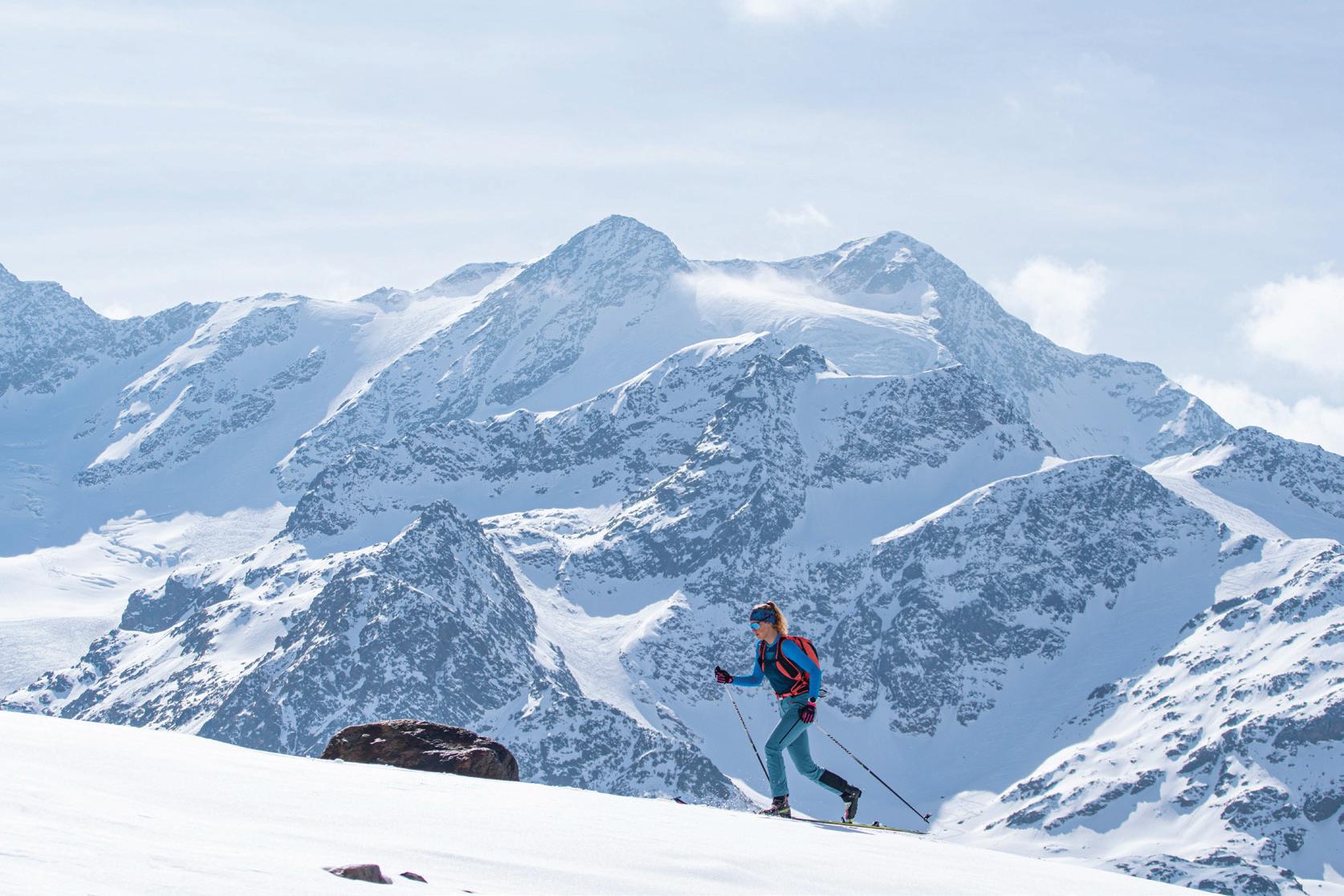
108
I used to practice alpine skiing in my childhood school days, but six years ago when my friends took me on a trip to the mountains with ski mountaineering equipment, I fell in love immediately.
the overall u23 world championships ranking, while this year I won three beautiful u23 medals at the world championships in Spain: gold in the Vertical category and two silvers in Sprint and Individual. This season started with some ups and downs, but fortunately thanks to Fiamme Gialle who support me and to my coach Davide Canclini (Toio) I managed to get to the world championships in top form.
What result made you most proud? Definitely the first place in the u23 in the Vertical category at the world championships: a really unexpected result, not being my favorite specialty. The other result was ninth place in the World Cup Sprint in Val Martello. It had never happened to me to finish in the top ten in such a high level race.
What's your favorite race? And is there one you dream to take part in one day? I don't have a real favorite race, this year it was certainly the Individual race on the Presena glacier, where I found all the conditions in my favour: starting from the cold climate (because I suffer terribly from the heat) up to powdery snow
on the descents. In the future, however, I would very much like to have the opportunity to take part in Pierra Menta: it has always been described to me as the most beautiful race of the Grande Course.
How is a typical race day for you? How do you prepare the body, but above all the mind? First of all I have to set the alarm clock to a multiple of 5, I'm very superstitious! I could never wake up at an inaccurate time. To better prepare my body for the race, I always eat the same things right from breakfast. Afterwards I need to take some time to concentrate, but above all to relax. Before the race I always try to meet "dad" Robert (Antonioli ed.) for encouragement. As far as possible, I try to prepare my mind first, when I'm at home and where I can count on the fundamental support of my family and my boyfriend.
What is the best part of your sport? Surely at a competitive level, ski mountaineering is hard work and you don't have the opportunity to fully appreciate it, but a day of tranquility in the mountains with friends is enough to enhance all its merits:
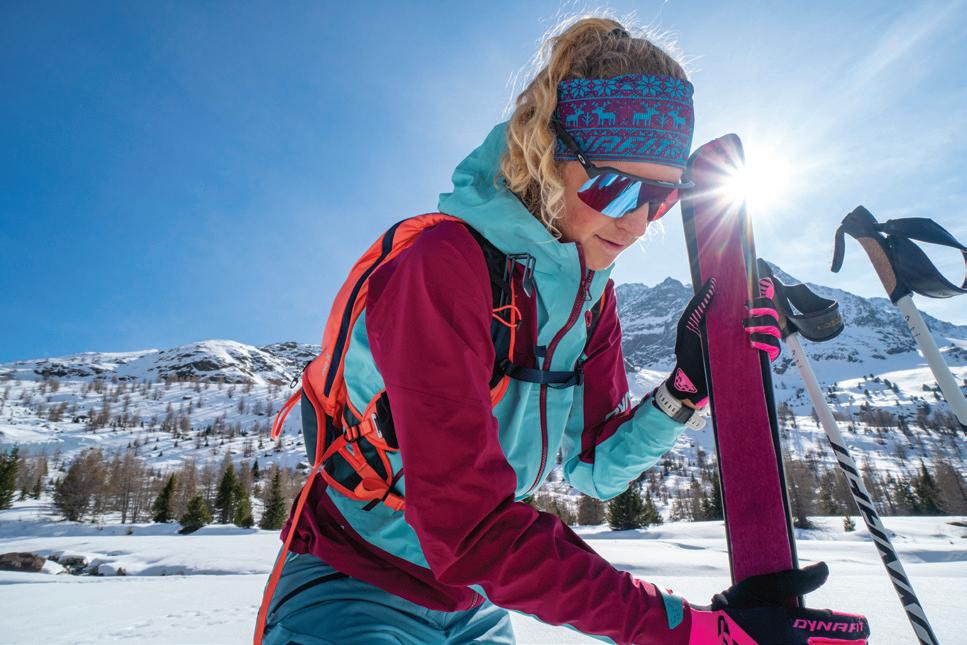

the tranquillity, the breathtaking views and the adrenaline looking for the most beautiful couloirs where you can have fun downhill.
Are you more comfortable going uphill or downhill? Given my background in alpine skiing, it is certainly the descent where I feel safest and I can give my best on slopes of different heights.
What do you do when you don't ski? When I'm not busy with competitions or trainings I really like going to the mountains with my dad and my friends without pressure, just to have fun. Lately I've discovered the road bike, also thanks to the place where I live because there are several Alpine passes such as Stelvio, Gavia and Mortirolo where I can train.
How do you live the competition?
At first it was pure anxiety, now the situation has improved a little, maybe because I'm starting to get to know the environment and the people around me, now I can better bear the pre-race stress. However, I'm a bit of a superstitious person, no one can take away the matching socks/underpants of the same color for each competition specialty.
109
Surely at a competitive level, ski mountaineering is hard work and you don't have the opportunity to fully appreciate it, but a day of tranquility in the mountains with friends is enough to enhance all its merits.

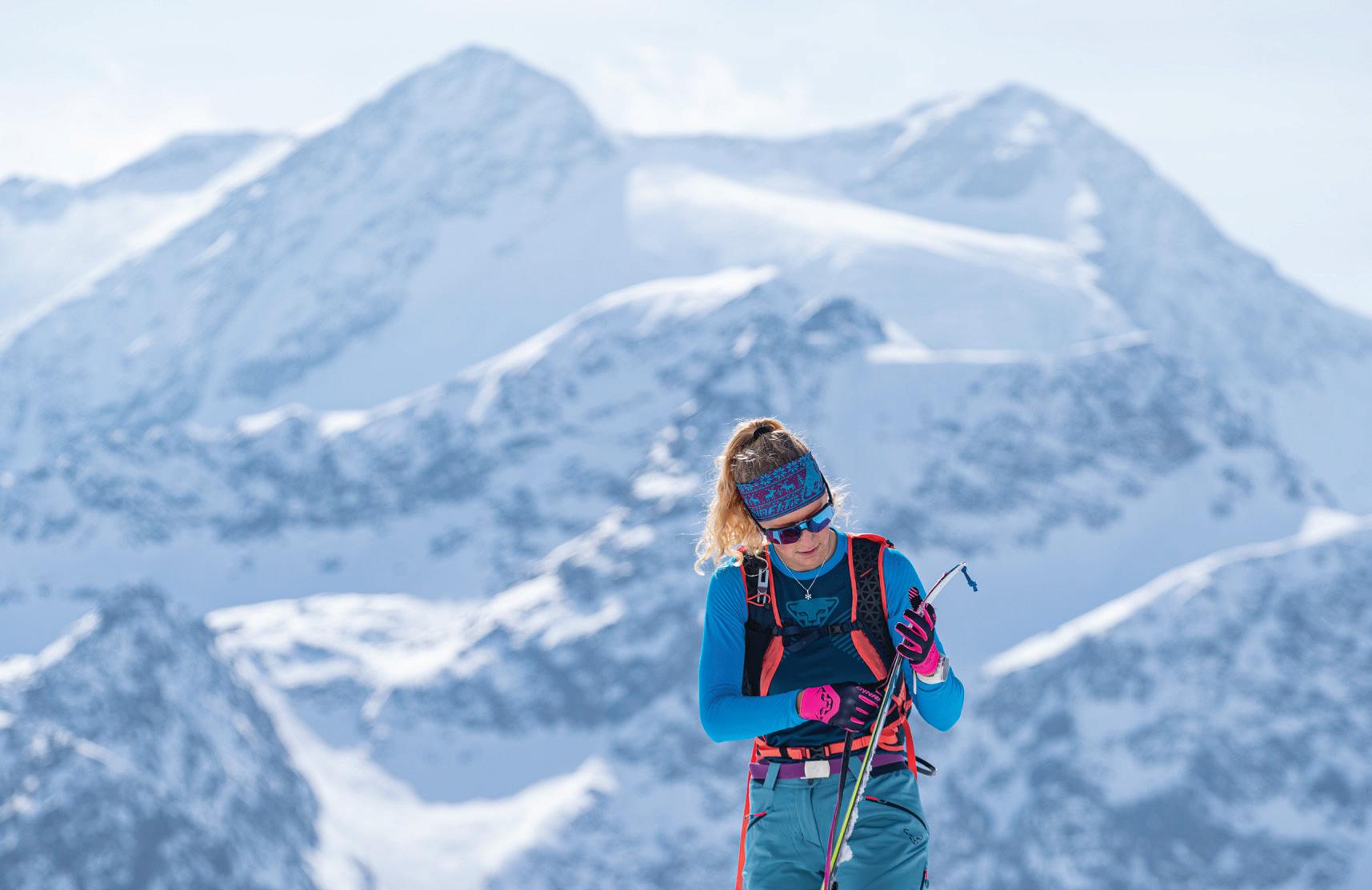
110
Is there an athlete or figure who is a source of inspiration for you?
Of course, my favorite athlete is Robert Antonioli. I've always appreciated him because even if he's a top level athlete he's always ready to give advice and help us youngsters in the group, and thanks to his pre-race words he always manages to give me the right grit.
What are your goals for the summer and next season? The goal for the summer season is definitely to be able to train at my best. I would also like to take part in a mountain running competition, so that I can also compete in another sport. For next winter it would be great to be able to match the past two seasons.
Do you dream of the Olympics? Of course yes, like all athletes I would very much like to be able to partici-
pate in the Olympics. Especially since next ones will be held right on the home slopes where I train. What’s you favorite mountain, peak and climb? The mountain that has given me the most emotions up to now has been Königspitze. Maybe for the people I was with, for the great conditions we found, but once we reached the top, the view was spectacular and that's why it's still my favorite mountain.
Since when have you been part of the Dynafit family? It all started thanks to the Alta Valtellina ski club where I grew up since I gave up alpine skiing and embarked on my journey into ski mountaineering. Thanks to them I came into contact with this great brand with which I share a great passion for the mountains and outdoor sports.

111
My favorite athlete is Robert Antonioli.
I've always appreciated him because even if he's a top level athlete he's always ready to give advice and help us youngsters in the group, and thanks to his pre-race words he always manages to give me the right grit.
Caroline & James
that’s how a family (of climbers) should look like in 2023
BY ILARIA CHIAVACCI PHOTOS RAPHAEL FOURAU
Both successful professional climbers, both athletes of The North Face, both parents who equally share childcare. “Baby Steps” is the documentary that tells their story and Caroline's choice that, in an ideal world, should have nothing out of the ordinary.
Caroline Ciavaldini is 37 years old, she is a professional climber who, before devoting herself to adventure climbing, has been a champion of indoor competitions.
James Pearson is her husband, he discovered climbing at 16 and has never taken off his climbing shoes since then. Both are athletes of The North Face and together they decided to become parents and, always together, they established that the foundations on which they would build their family would be the equality between the two parents
and the love for climbing. I met them during the Milano Climbing Expo, an occasion in which Caroline presented "Baby Steps", the docufilm in which she retraces the path that led her to be a mother but at the same time not wanting to give up her life as a sportswoman. Famous, and criticized, for having climbed up to the eighth month of pregnancy, Caroline has made parental equality one of the essential assets around which her life and her family revolve and she decided to tell her story in order to help and inspire other women.
112

Caroline
Were you prepared, before becoming a mother, for what would happen? From the moment you become a parent you realize that that is going to be the hardest thing you'll ever do in your entire life: but you can't really focus on everything that's going to happen until you are in it. I'm the type of person who likes to be prepared, so I had thought a lot about the impact that becoming a mom would have on my life as an athlete, so James and I tried to get ready: we wanted to be parents, but we never thought about giving up being professional climbers too. There are a lot of models in the world from which taking inspiration and we have documented ourselves: there are couples who have traveled the world with a newborn child in a van, or families who do homeschooling, we have tried to find a way to do what we love while having children. Our children go to normal school and kindergarten, but often follow us if we have to travel, like right now. It's all about balance in my opinion. Surely you have to consider making space in your life for the children you want to bring into the world.
What message does "Baby Steps" would like to convey? There are many messages that I would like to share: I've had many friends who have lost their way through parenthood, and I've been there too. The fundamental message, therefore, I believe is that being a parent is not easy, while our society tells us the exact opposite. It's hard and it's okay to feel lost for months, even years if you're a young parent. This doesn't mean it's not worth it, but it's completely normal to feel uncomfortable when you become a parent.
How do you overcome these moments? I have a passion, my husband has a passion: this is what makes us happy, in our opinion not silencing what makes us happy is essential for being good parents. If we are happy, they are happy. In addition, continuing to carry on one's inclinations or one's job is only possible if both parents are aligned, while if there is an inequa
lity in the couple, and one of the two behaves selfishly and does exactly what he or she used to do before, it means that, consequently, the other parent has to think about everything. Do you consider yourself a feminist? I think so, it's just that sometimes I think people hate this word and that's not good. I don't feel like one of those super combative feminists, but I know one thing: I want equality and I fight for it. As a society we have a legacy that is not fair, it wasn't until very recently and in many areas it isn't even now. Society pushes you to think that, if you are a woman, you will have to be a mother and you will have to fulfill this role better than anything else you do in life. I believe that much of this aspect derives from the Christian tradition and in Italy that’s perhaps even more marked than in France, but I have seen many of my friends thinking the same thing, more consciously or not. I myself, when I had my first child, had a moment where I just wanted to be a perfect mom and silence everything else about me: I lived this duality for a long time. Although I believed I had arrived prepared for childbirth, thoughts crossed my mind: "Why don't I let James be a professional climber while I just do the mum?" Then it happened that staying at home all day with the kids just didn't make me happy, while if I had even just an hour to go and train I realized I was better with them too. However, I had to work on myself to convince myself that I wasn't a bad mum just because I was away for an hour: sometimes I wasn't even physically who knows how far away, maybe James took care of the kids while I was in the other room. So it's not even that I wasn't there, but my brain just wasn't 100% focused on them. Ultimately I think this has been good for them too, they have become more independent precisely because it happens that I am not at their complete disposal.
Was it easy to convince James? Not at all, we had a lot of discussions: I had to push him to embrace its role of father in this way, because
114
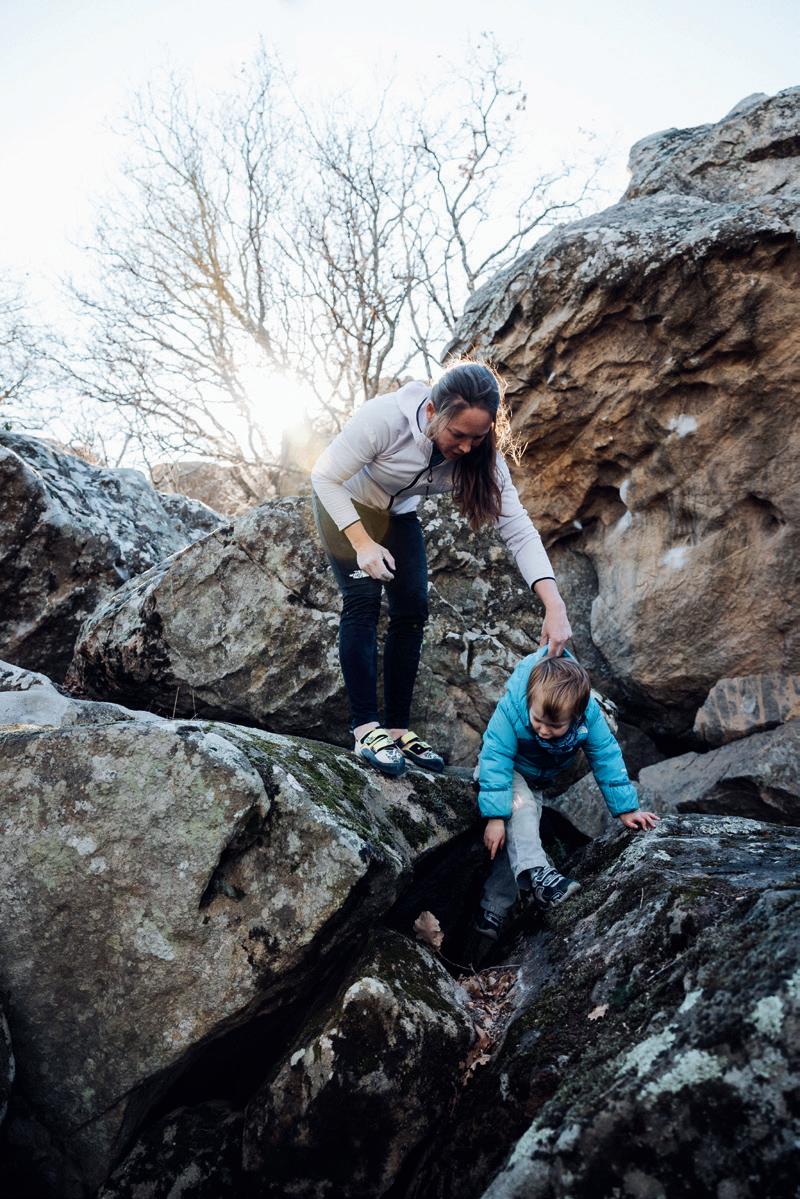

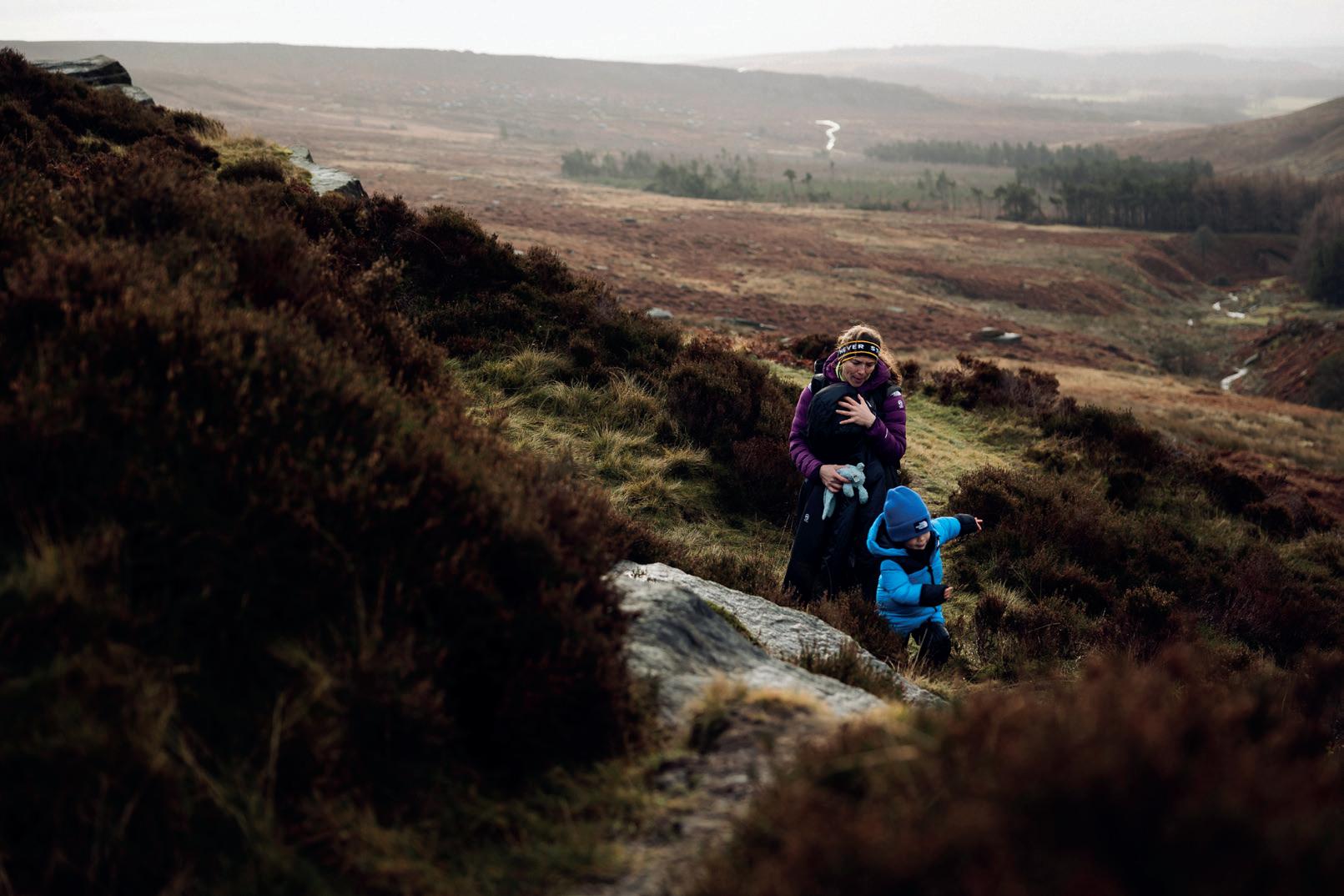
he comes from a very traditional family. According to the model he received, the father worked and the mother looked after the children. His father was also the only one to bring his passion, he was a rugby player, into family life. I had to educate him to behave differently, but I also had to educate myself, because I'm not the image of my parents either: we both had to understand and identify the way we were raised in order to then make our choices and be free to be the parents we wanted to be. It is only when you realize that society is putting so much pressure on you that you become able to decide what is good for you and what is not. I know many women for whom the number one passion is their family: it's the only thing they want out of life, and that's okay. It's different for me: I can't think of being just that. Also because I wonder: if your number one passion is the family, how will this make you happy during your whole life? My mom was a teacher and she was the perfect mom, she did a lot for us: she always encouraged me and my sister to play sports, taking us every day after school to the activities we practiced. But what happened is, once we grew up and her number one passion left home, she became depressed and never recovered. I don't want this for me: my children certainly make me happy, but I also need to be a satisfied person regardless of them.
Have you been criticized for climbing when you were eight month pregnant? Many women have approached me with curiosity, asking me for advice and trying to understand how I could feel or how they could do the same. There hasn't been a man who has come to me to criticize me, but I've had a lot of haters on Instagram, which is a diabolical medium because it allows people who would never have the courage to face you in person to write horrible things to you.
James
Were you prepared, before becoming a father, for what would happen? What I can say about the whole process of becoming a parent is that at some point you realize how the ideas you always had, the beliefs about how the world works, were totally wrong. I was very concerned that I would not have as much free time as when Caroline and I had no children, that we would no longer be able to travel whenever we wanted, as we always did. I was afraid that children would take away all the magic we had, the luxury of being able to decide our lives freely, but the reality is that it is much better than before. Clearly we have much less time, this is undeniable, but what little we have is definitely more precious, so we find ways to be more efficient in everything, we have acquired a lot of skills in this sense.
Do you feel like you're losing ground, as a climber, because of being a father? In a truly bizarre way I never expected, I have instead become more efficient as a climber. Having less time and less opportunity to focus on perfect conditions makes me perform better. Now it's no longer a question of waiting for the best moment, for the sunset or the wind to drop: the only moment I have is when the children are asleep and I don't care about the conditions. Incredibly this leads me to climb much better than before.
116
I've had many friends who have lost their way through parenthood, and I've been there too. The fundamental message, therefore, I believe is that being a parent is not easy, while our society tells us the exact opposite. It's hard and it's okay to feel lost for months, even years if you're a young parent.
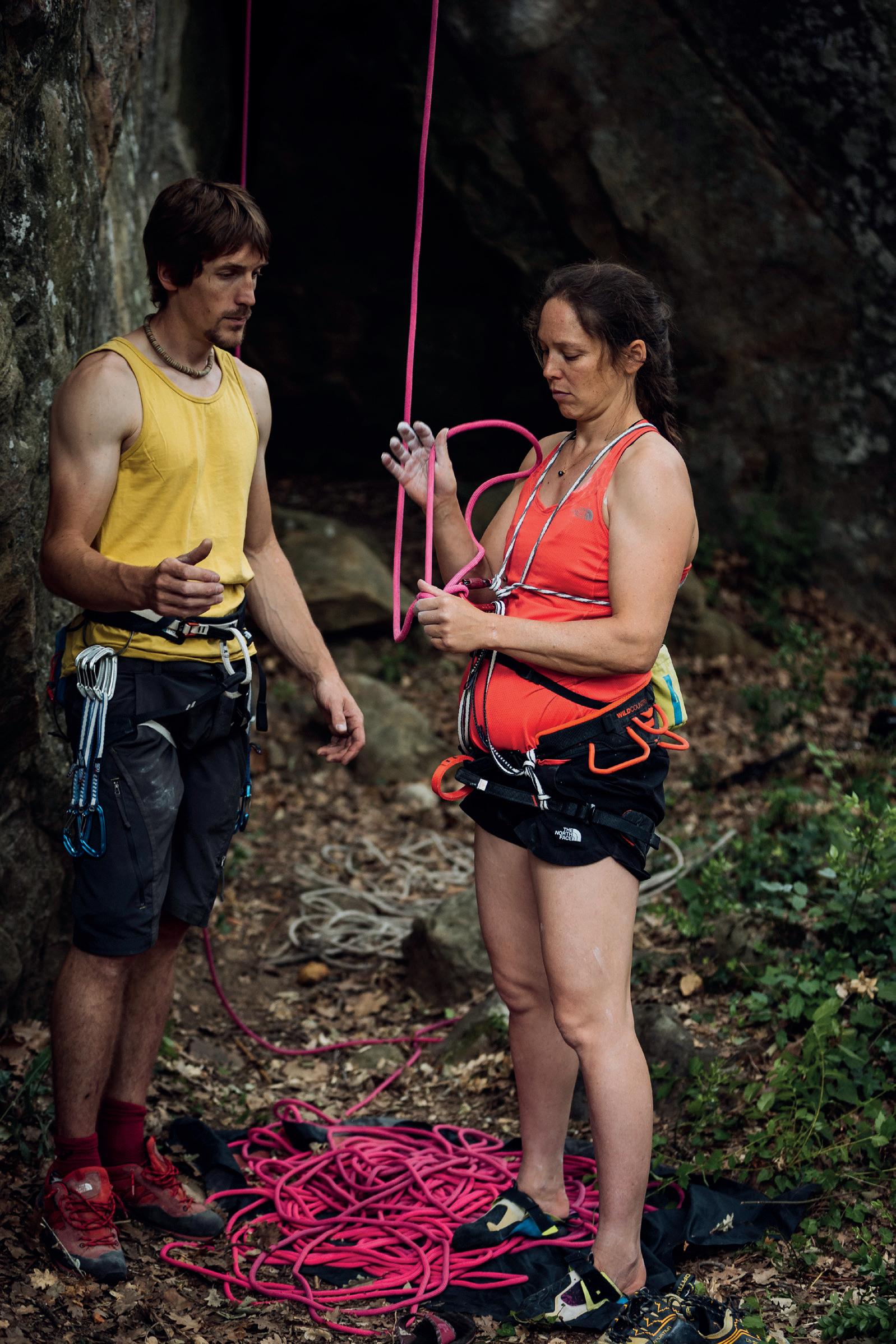
Was it easy for Caroline to convince you to equally split the responsibility of parenting? All Caroline and I have done since the start of our relationship is try to be equal, but I think she really pushed me into that. I realize that I have a tendency to recreate the situation I grew up in, which is definitely more traditional than how we are raising our children. My mum never worked all the time my brothers and I were little: she was the one who cooked, cleaned and did most of the housework, while my father was the one who went to work, earned and used the family free time to practice his favorite sport, rugby. I had to learn to recognize that another model is not only possible, but it is right because it’s equal: each of us has the same responsibility to earn, to look after the children, to cook, to clean, but also the same time to devote to climbing. Sometimes I realize that I have a tendency to want to recreate the pattern of my parents, especially when we spend a lot of time with them, like during the Christmas holidays, but Caroline is the one who always pushes me to the right direction, she is the one who always pushes to look a little further and progress in my thoughts, we support each other, we are a team. Do you consider yourself a feminist? I think the word feminist is our worst enemy when it comes to a man, because it sounds genuinely cringe. I try, as much as I can, to contribute to the definition of a fair world whether it is gender, ethnicity or religion: for me there is no reason to be treated differently. I believe that, in the case of gender equality, it should not be a fight carried on only by women, but by women and men together. Compared to being parents there is a moment related to pregnancy in which there is little to discuss, it is obvious that the weight is necessarily shifted more to the woman and therefore it is normal for me today to want to help Caroline as much as possible.
Have you received criticism or jokes for slowing down a bit in climbing? The really sad thing is that the only one who has received criticism at the moment has been Caroline: society still needs to improve because she is seen as the one who should stay at home with the children. We talk a lot about modern families, but when a family really I modern, it seems strange to many people.
118
What I can say about the whole process of becoming a parent is that at some point you realize how the ideas you always had, the beliefs about how the world works, were totally wrong. I was very concerned that I would not have as much free time as when Caroline and I had no children, that we would no longer be able to travel whenever we wanted, as we always did. I was afraid that children would take away all the magic we had, the luxury of being able to decide our lives freely, but the reality is that it is much better than before.
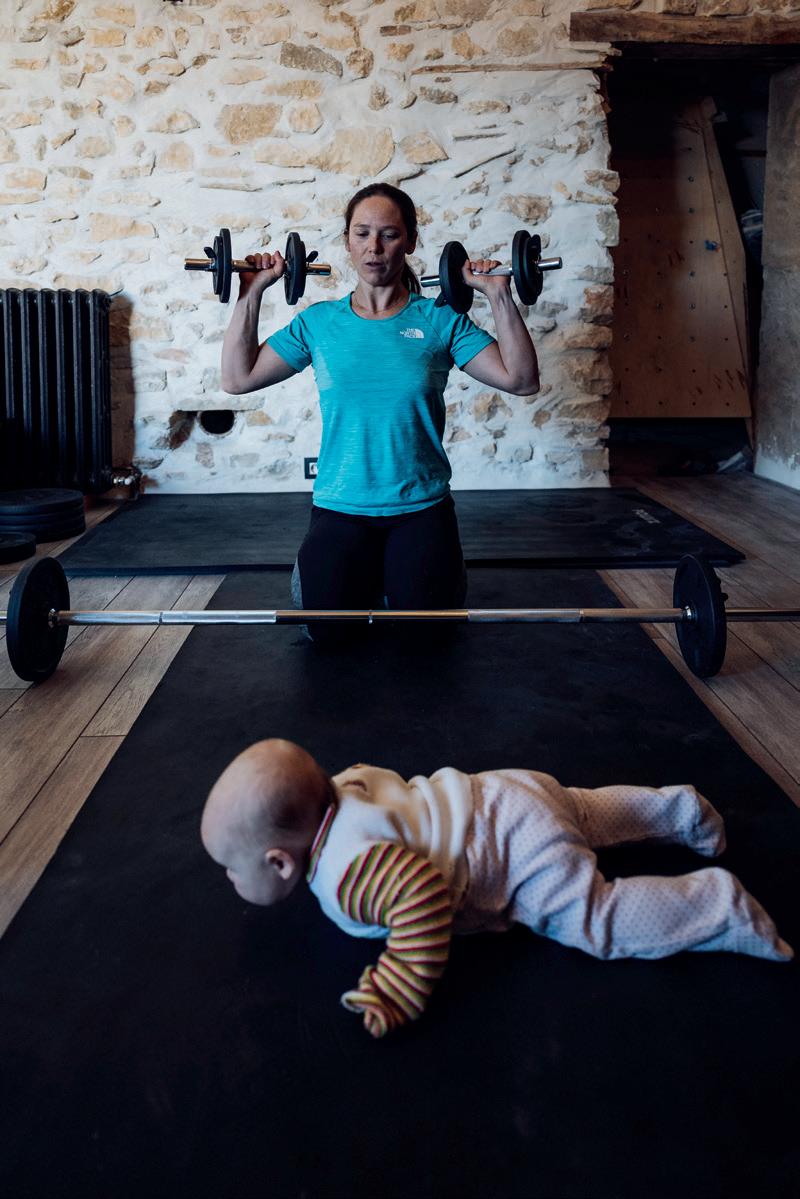
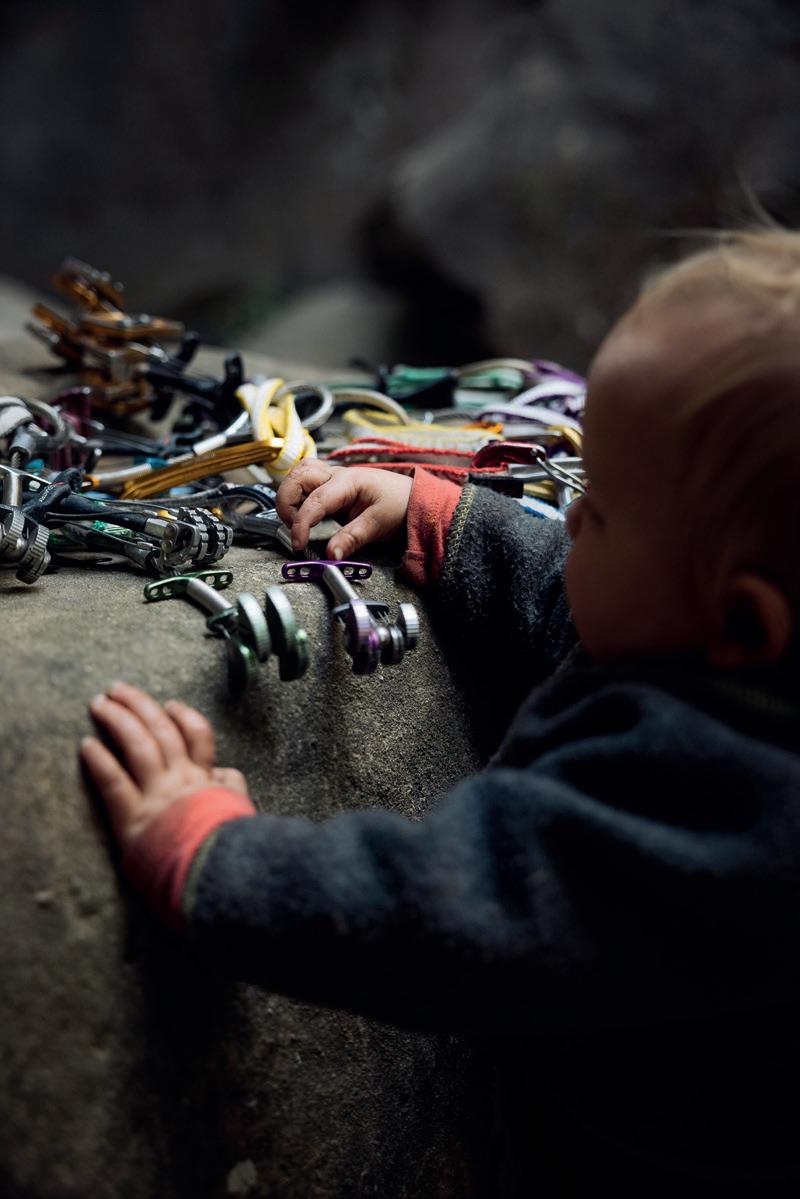
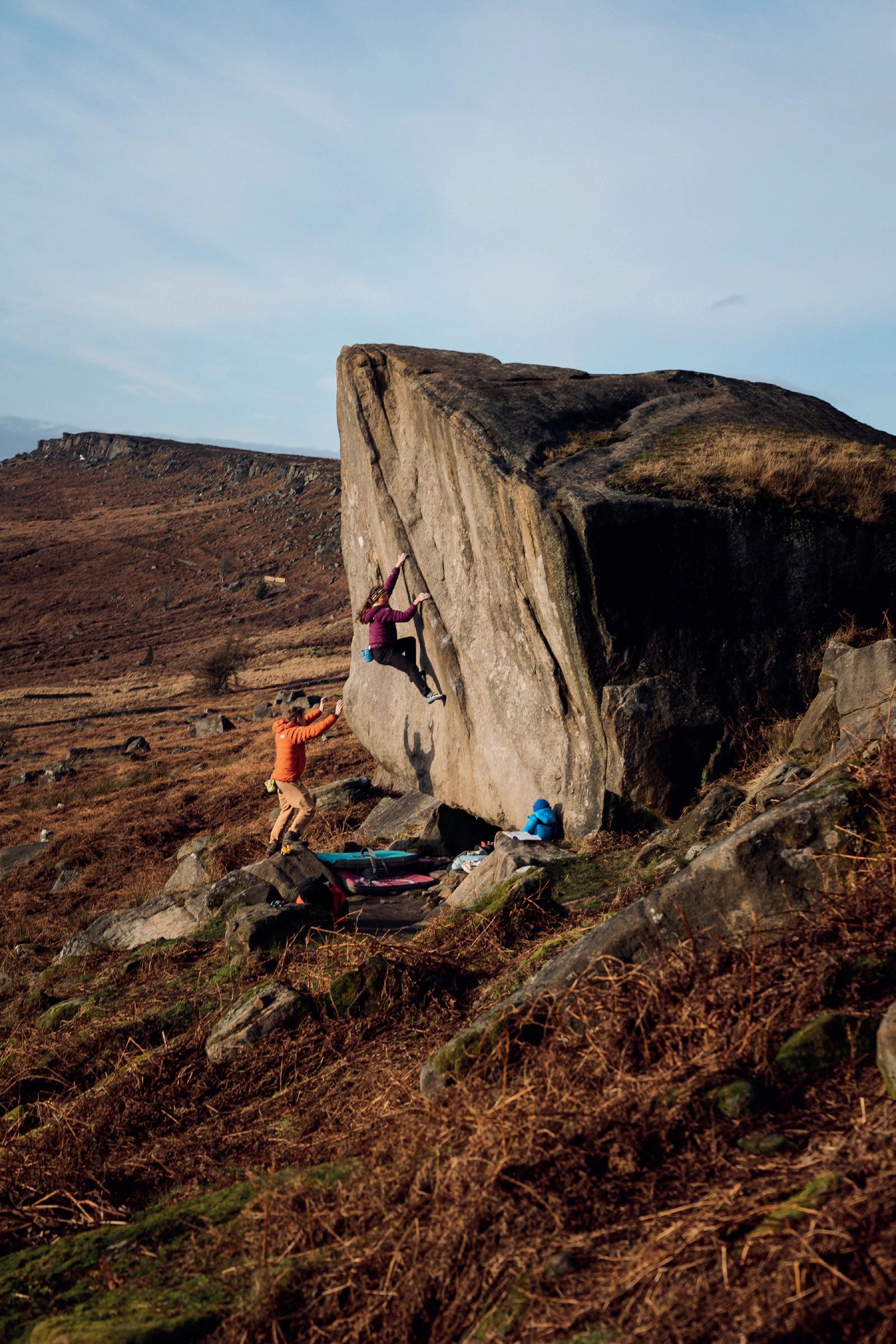
The year of change Barkley Marathons
 BY FILIPPO CAON PHOTOS ALEXIS BERG
BY FILIPPO CAON PHOTOS ALEXIS BERG

There are conflicting opinions about Barkley: there are those who love it and there are those who don't understand it and argue that it is senseless and masochistic and has nothing to do with running. There's not much to do but notice it and move on. We could spend days debating what ultrarunning is or isn't, whether a 100km on road or a 400km in the mountains is more ultrarunning. Why Nolan's is and Barkley isn’t? Why TOR is and the Appalachian Trail isn’t? Why The Speed Project is and Spartathlon isn’t? And why Translagorai is and UTMB isn’t? And why and why. Why do we confuse our interests with the definition of a sport? The only thing we can really say with certainty is that these very different things have coexisted peacefully since the dawn of sport.
With the professionalization of sport, top level athletes are less and less interested in more independent and alternative events, whereas once upon a time there were much more transversal runners. While on the one hand Barkley's finishers are largely outsiders compared to the ultra running scene, others are perfect representatives of it: David Horton, in addition to holding the record on long routes, was an athletics coach and had won JFK 50, Old Dominion, Arkansas Traveler and Hardrock, Blake Wood is one of the founders and winner of Hardrock and one of the creators of Nolan's 14, but he has also competed in very different races such as Rocky Racoon, Javelina, Bear, middle distance and track athletics races. Barkley

122
was attended by Hal Koerner, two-time winner of Western States, Gary Robbins, and Courtney Dauwalter, the versatile athlete par excellence, capable of winning UTMB, a 24h on track and then participating in Barkley. In short, if it is true that Barkley's participants are partly outsiders, but they are also complete runners. From 1986, the first to finish the Barkley Marathons was Mark Williams in 1995. Then no one succeeded for another five years, until 2001 in which two succeeded, David Horton and Blake Wood. Still no one in 2002, then Ted Keizer in 2003, and Mike Tilden and Jim Nelson in 2004. After the second time two runners managed to finish the race, Lazarus Lake hardened the course and nobody finished
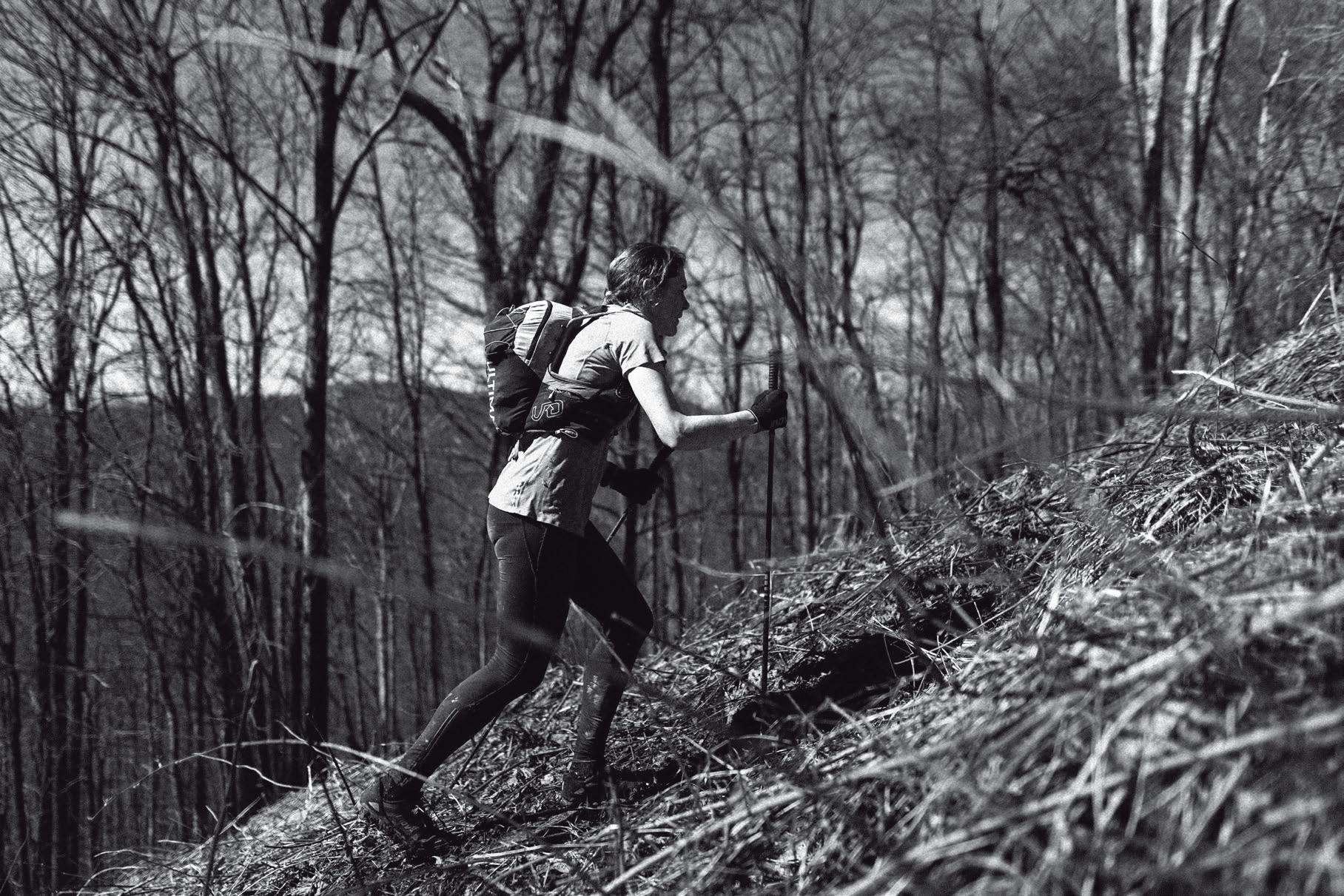

it for another three years. Then began Barkley's best season: 2008 course-record Brian Robinson, 2009 Andrew Thompson, 2010 Jonathan Basham, 2011 Brett Maune. Four of these five in less than 58 hours. 2012 was the year of records: Brett Maune became the first two-time finisher setting the current record of the course, in addition, Jared Campbell and John Fegyveresi also managed to finish it, becoming the first edition with three finishers in history. In 2013 Nick Hollon and Travis Wildeboer, and again Jared Campbell in 2014 and 2016, becoming the first to finish it three times. The last one was John Kelly in 2017. In 10 years, the only year without a finisher was 2015. Then, since 2017 no one has succeeded. Until today.
With this year's edition, many media have started talking about a moment of change for the race. Both from a technical point of view and the hardness of the route, and from a media point of view, seeking, forcibly in some cases, a relationship between the two things. There has been a lot of reading that as the more popular Barkley is becoming easier as well, and in doing so will attract more pro athletes in the coming years.
This is partly a forced reading of the results, which if looked at as a whole instead mark a progressive hardening of the race over the last ten years and this year's times seem to be no exception. We thought we'd ask the only person, or one of the few, qualified to answer this question. John Kelly,
123
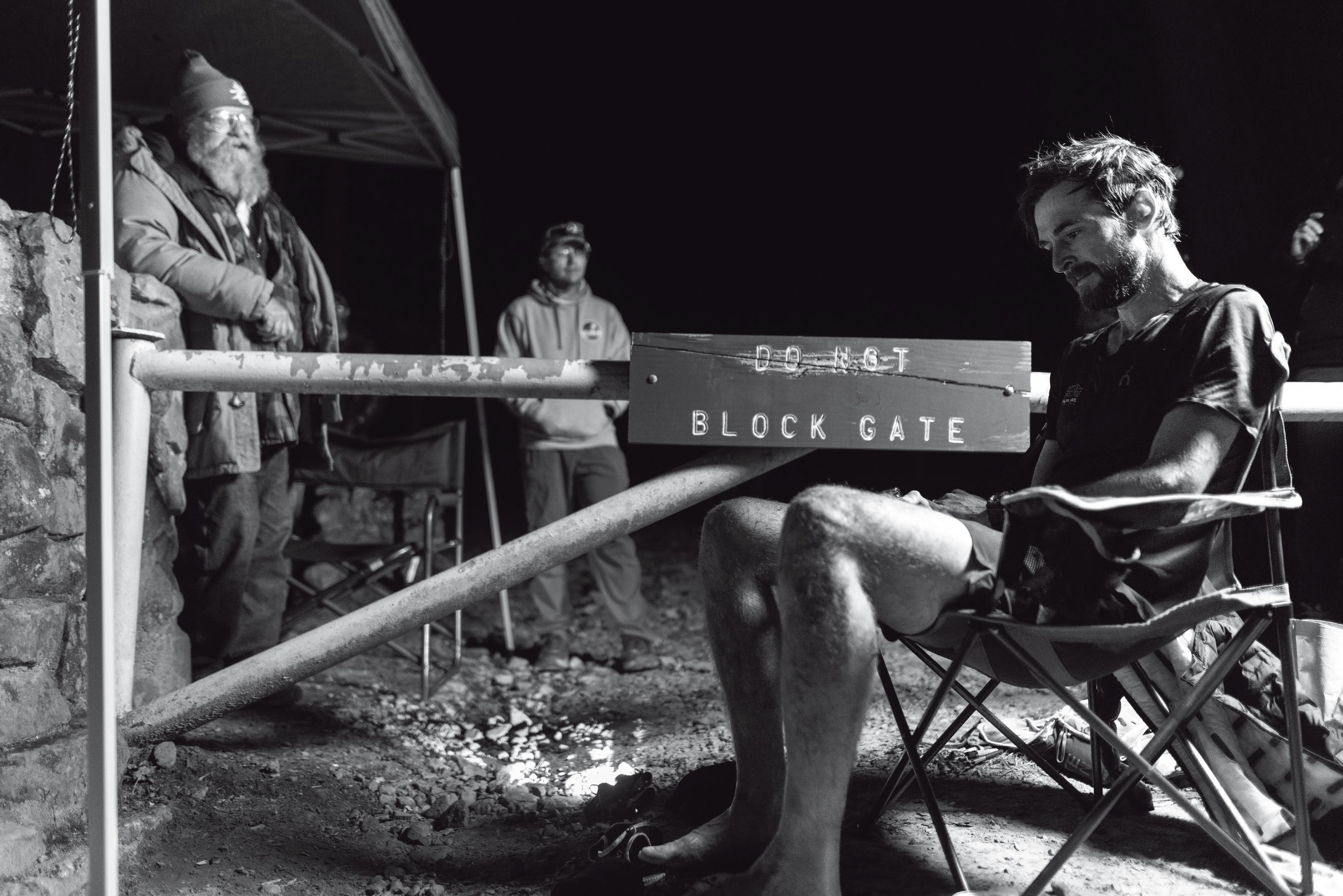

winner of this year's edition and last finisher in 2017, replied as follows: “The race is constantly changing, it has been like this since the beginning. The equipment has changed, the preparation and consequently the racing has become harder to counterbalance this fact and keep the same chances of finishing the race. Maybe this year the run was slightly easier than last year, but not much, and both years there were good conditions. I think I might have finished the run last year if I hadn't lost the pages in the third loop. This year was more balanced, and I think next year will be slightly tougher and more similar to last year.”

We know that the race is constantly changing, and that Laz also increases
or decreases the difficulty depending on the finisher trend, but on the other hand, the statistics clearly divide the last decade into two blocks ranging from 2012 to 2017 and from 2018 to 2022. John confirms, with some corrections, this periodization, but does not attribute the root cause of the results to the route changes:
“There are so many variables that determine this. Some years there are more people who are likely to finish it, some others less. The first change took place after 2013, in 2012 three had finished it, in 2013 two, with very short times. In the following years Jared Campbell's times have risen a lot and from 2014 ups untile today he and I have been the only ones to finish it. 2019 was another watershed,
and I don't want to say it became impossible but Laz had gone a little too far, so in the last two editions he has taken a step back.
In Europe, the popularity of running exploded with the documentary The Race That Eats Its Youngs (2013), and in these ten years it has continued to increase but without significant changes. In recent years it has also been possible to follow the progress of the race through updates on Twitter, which according to many people is one of the causes of the increase in interest in the race, influencing its identity more and more. In this regard, there are those who do not hesitate to define Laz as an opportunist.
John continues: “The popularity of
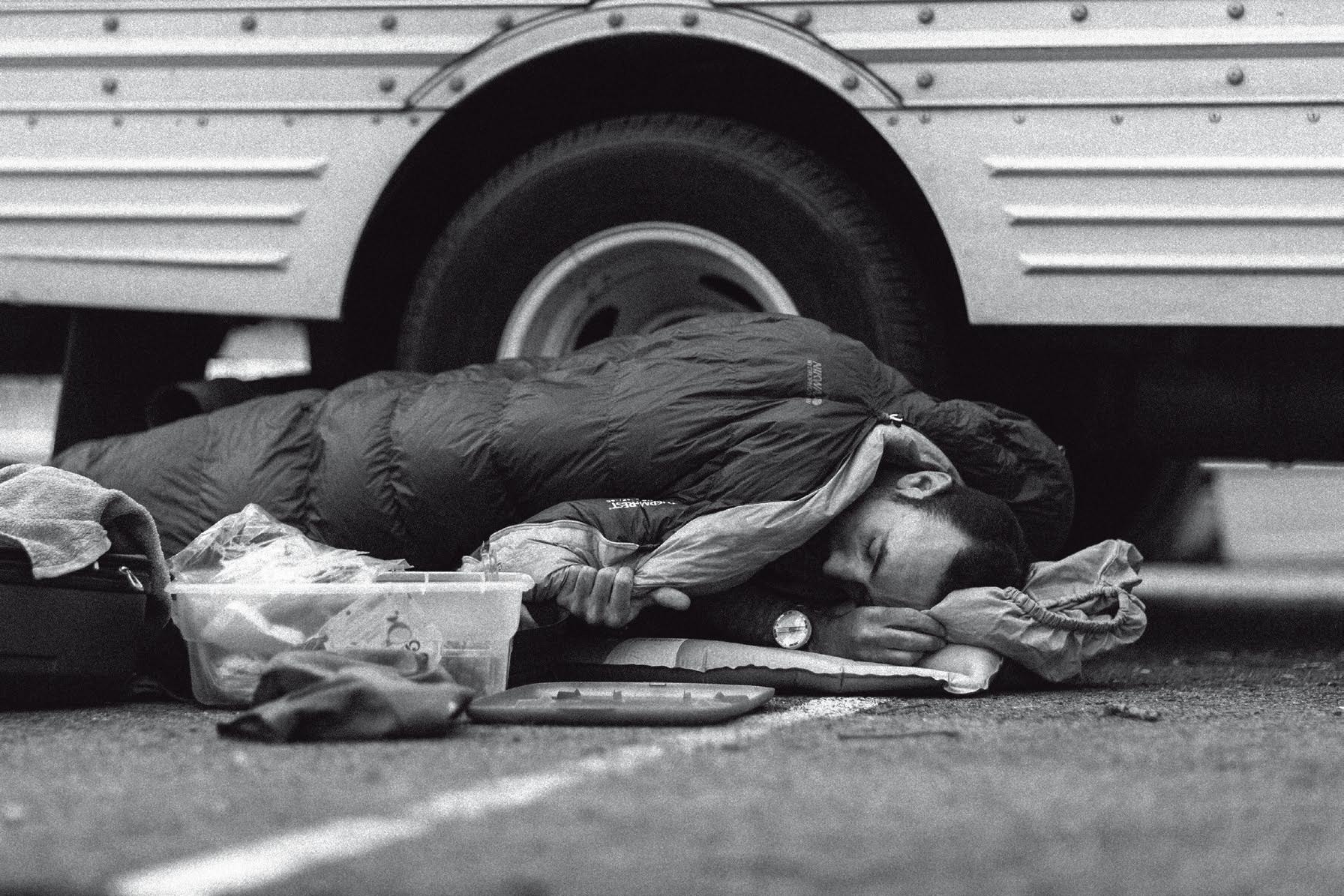
126
running has certainly increased since I first went there, the sport in general and Barkley has grown as a result. I think it's really difficult to balance keeping the event small and out of the spotlight and the environment is inevitably growing but I also think Barkley is doing it very well. I think it's good to share what happens in Frozen Head during the race and giving visibility to it is only good, because it's happening in such a way that it doesn't affect neither the dynamics of the race nor the atmosphere of the event. The camp is still semi-deserted, there are still few people and the atmosphere is still familiar and inclusive.”
The growth of sport is a transversal theme that concerns all independent
events that do not want large participation, and of which Barkley is the most striking case. If ultrarunning is intrinsically inclusive, it is thanks to small events in which the sense of community and sharing is much more perceptible than in large, dispersive media events. To maintain personal contact between people, many organizers have been forced to take measures that limit the number of participants, and although media coverage is increasing, so far this has been the only tool that small events have had to protect their own identity. I think it's an interesting issue to discuss right now: we talk about competitions, professional athletes and how sport in general is becoming professional, neglecting the fact that its more gras

127
The popularity of running has certainly increased since I first went there, the sport in general and Barkley has grown as a result. I think it's really difficult to balance keeping the event small and out of the spotlight and the environment is inevitably growing but I also think Barkley is doing it very well.
sroots face can continue to be such it is necessary for health of sport exactly as much as the growth of major events. They are two necessary aspects that must coexist.
“I think Barkley has been very good at being able to balance these two aspects. In the sense that it manages to maintain its aura of mystery, and what happens on Twitter gives important information, it tells what is happening, but not what happens there remains largely unchanged.” There are other events that are managing to do this very well, and the clearest case is probably the Hardrock 100. Hardrock continues to have one of the highest-rated podiums in the world, it's covered in
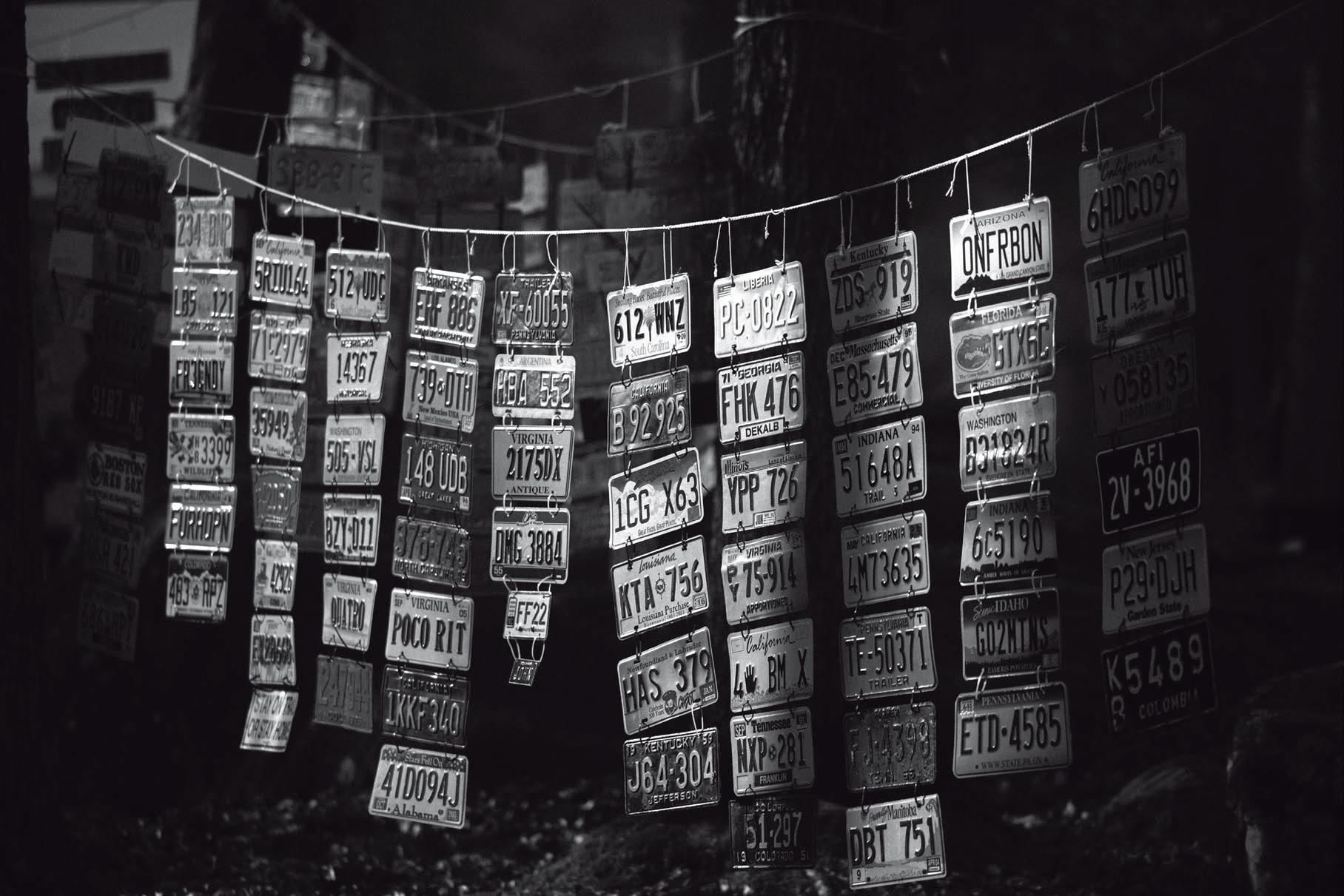
the media, but the atmosphere is the same as ten or twenty years ago, the volunteers are still the same, everyone knows each other and the dimension is familiar.
As counterintuitive as it may be, these examples show that there is a substantial difference between the media coverage of an event and its participation. The fact that an event is highly coveted, desired or followed does not necessarily imply that its atmosphere changes if the goal of its organizers is to keep it that way. As a last example, there is an opposite case that demonstrates this. The Speed Project is an open event that professes itself, in intentions, without rules and without an
audience, recounting a sport that does not need superstructures and external recognition. In reality, in just 12 months this magazine will have published (with the next issue) three articles about this event, while only one about UTMB, the most media-focused ultra in the world and zero about Sierre Zinal, the most followed skyrace in the world. If you look for The Speed Project on YouTube the first seven results are videos produced by Altra, The North Face, Satisfy, ON, TrackSmith, RedBull, Strava. The Speed Project, net of all this, has no audience.
So I ask myself, as an event organizer: if I have to have an audience, do I want it physical or virtual?
128

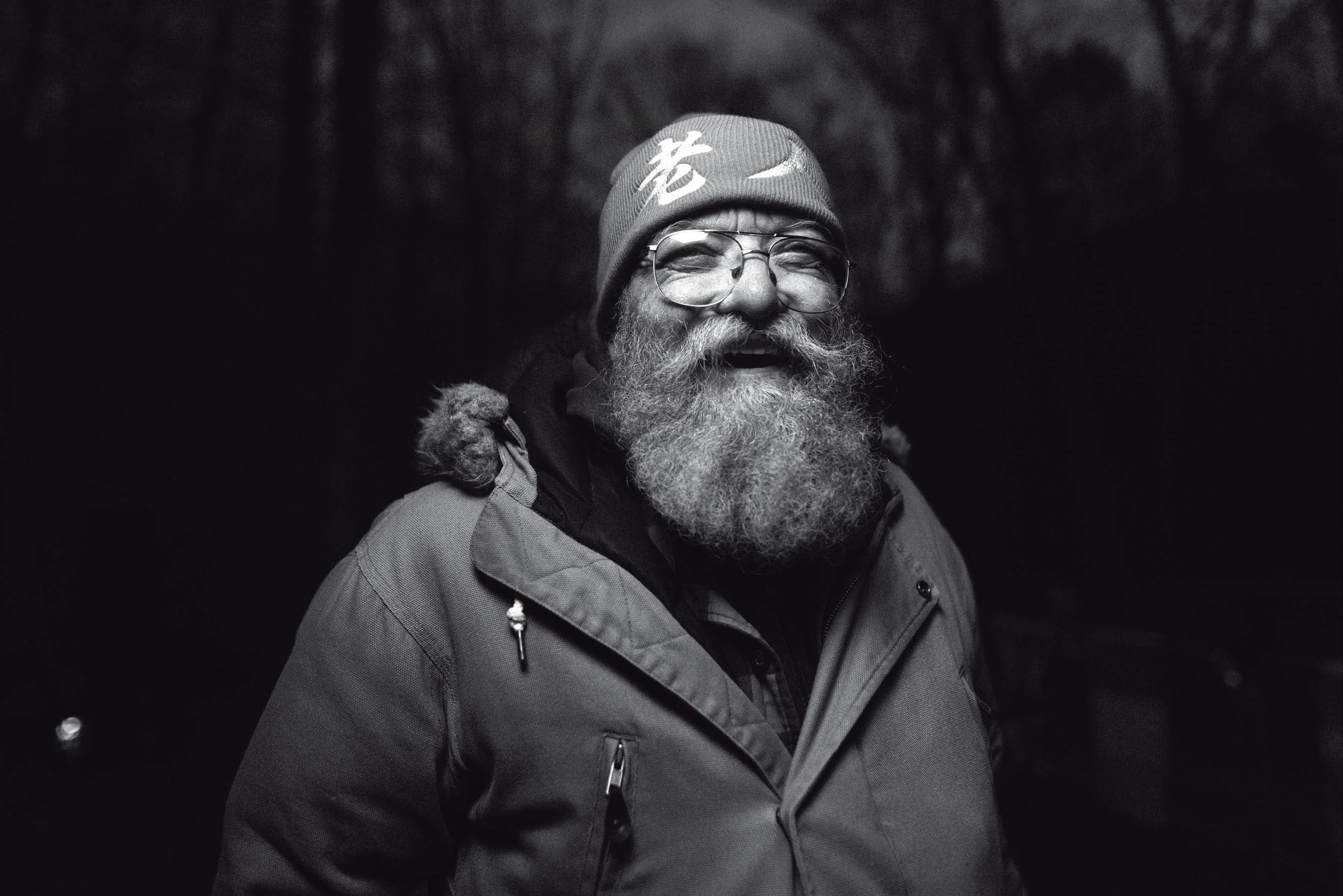
129

Saving Glaciers
 BY ILARIA CHIAVACCI PHOTOS CIRIL JAZBEC
BY ILARIA CHIAVACCI PHOTOS CIRIL JAZBEC
Half of the glaciers in the world today are destined to disappear. It has been said for some time but, now that the world seems to have suddenly become aware of the real threat of climate change, studies are published every few years that inform us about the terrible state of health of our planet. One of the latest reports, coming from the States, leaves no hope for glaciers: half of those present in the world today are destined to disappear. That’s what say scientists from Carnegie Mellon, the University that financed the study then published in the scientific journal Science. This will certainly happen, they say, even if we manage - which is highly unlikely - to keep the increase in global average temperature below 1.5 degrees Celsius compared to pre-industrial levels. Studies aside, those who love mountains and glaciers have noticed this with their own eyes: they are receding visibly. This is a topic particularly felt by the outdoor community and there are many photographers, explorers and athletes who have lent and are lending their voice and work over the years to raise public awareness and to push people to behave more respectfully towards the environment, but there is someone who has decided to do more: Dr. Felix Keller, a Swiss glaciologist, has set to work together with his team to find a practical solution to the inevitable melting of the Alpine glaciers and although it is not considered the solution, it certainly deserves to be told.
Keller therefore set out to develop a complex system of snow cables that
could recycle glacial meltwater in the snow to bring it back up to high altitudes forming a kind of glacier cover. His story was told by Ciril Jazbec in "Saving Glaciers", the documentary produced by Tent Fi and presented at the 2023 edition of the Banff Film Festival. Jazbec, who is a Slovenian photographer famous for his shots for National Geographic and who in 2021 won the World Press Photo Award in the nature category with a story that was once again about raising awareness of melting glaciers, followed closely Keller's work and his mission to save the entire Morteratsch glacier in eastern Switzerland. What prompted Keller to action is the worrying acceleration experienced by the thawing process of glaciers.
“Every time I'm about to go to the glacier I am terribly worried because I know that I will find it changed, in a new phase. Indeed, every year the Morteratsch glacier loses 30 or 40 meters of its length, or the equivalent of 15 million tons of ice per year.”
The one described in "Saving Glaciers" is not the first concrete action undertaken by Keller and his team, who had already tried to cover the ice with geotextile sheets to protect the surface from sunlight, which however can be useful on a glacier small in size, but not on a huge sea ice like Morteratsch. “Morteratsch moves too fast and destroys the entire cover, you need a natural system that can counteract the speed at which the ice is melting” Keller explaines. The documentary also includes
Keller therefore set out to develop a complex system of snow cables that could recycle glacial meltwater in the snow to bring it back up to high altitudes forming a kind of glacier cover. His story was told by Ciril Jazbec in "Saving Glaciers", the documentary produced by Tent Fi and presented at the 2023 edition of the Banff Film Festival.
132
It’s the story of Swiss glaciologist Felix Keller, told by Slovenian photographer Ciril Jazbec in "Saving Glaciers", a documentary presented during the 2023 Banff Film Festival.
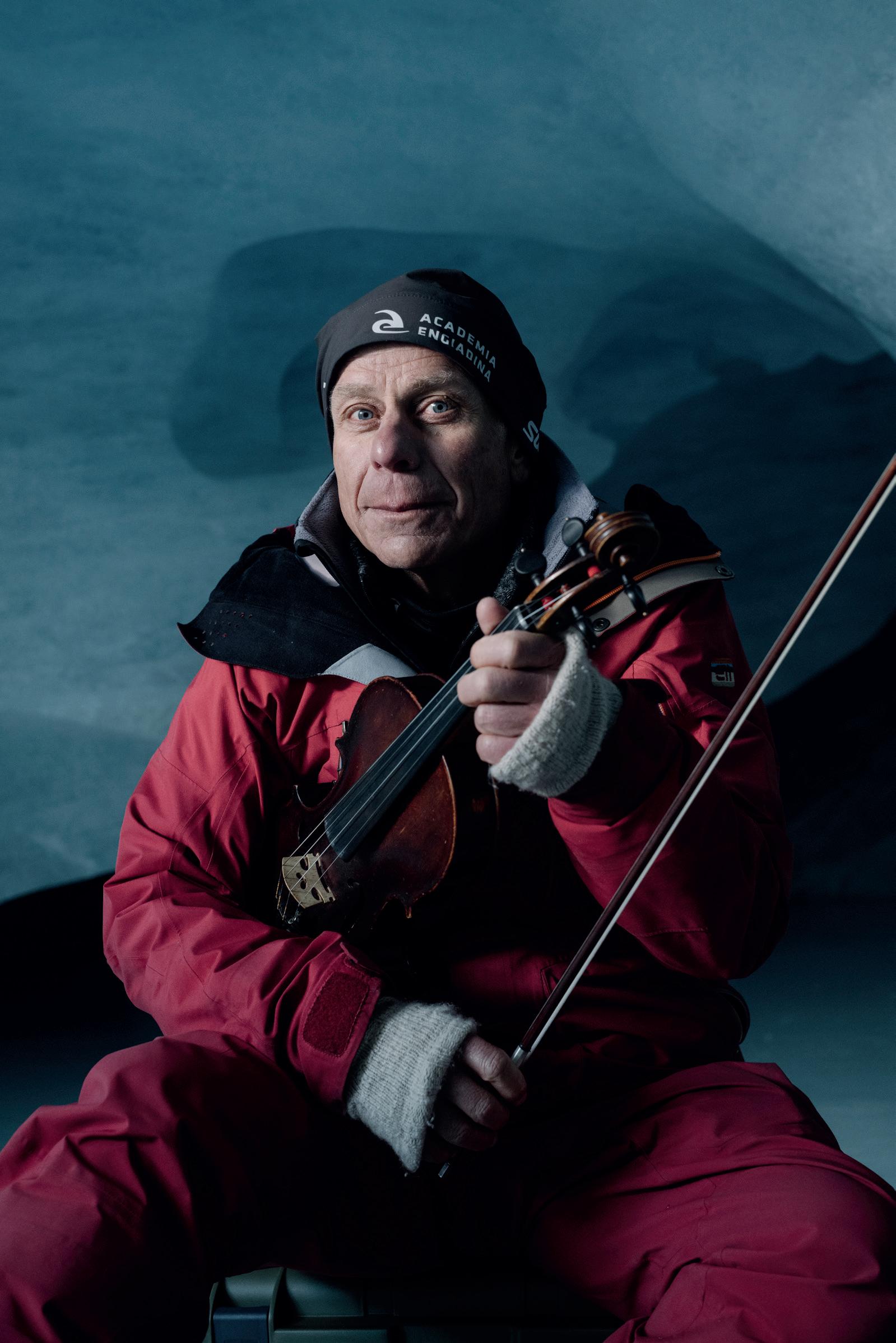


the testimony of Dr. Christine Levy, from Academia Engiadina, who mo nitors the state of health of Morteratsch and other Swiss glaciers flying over them. As a scientist, the focus of her studies today is concentrated on identifying where the next alpine lake will form, or where the next ice avalanche will break off. It's hard to think of this as a phenomenon that can be stopped, but Keller has no intention to stop.
“What can I do for my children, so that they too can enjoy the glacier?” This is the question that beats in the glaciologist's chest and that prompted him to find a practical solution, which arrivedx in the form of illumination during a fishing session: "I was fishing on a river whose water derives from the melting of the glacier, it is that's where I came up with the idea of recycling the meltwater product to make new snow.” The idea, according to Keller, is simple: preserve meltwater in the summer in high altitude regions and then be able to use it to produce snow with which to cover the glacier with the aim of protecting it from the sun. By covering a specific portion of the glacier with snow, important and very extensive results can be obtained throughout the massif. To make it happen, he asked for and obtained the help of Professor Ernesto Ca-
sartelli of the University of Applied Sciences of Lucerne, thanks to whom it was possible to create both the core drilling system to extract the snow and the one for the artificial snowmaking of the glacier. In fact, there are many parts involved in such a project, from the energy used to move the fans, to the compressed air to shoot the snow.
“Our calculation models have shown that, if we cover an area equal to one square kilometer with snow for an entire summer, Morteratsch will start growing again within ten years. To do this, however, would need about 30,000 tons of snow a day. Then there is another fact: the glacier moves, hence the need to make snow from above with a system of ropes, which is very effective because it does not depend on the ground conditions and is capable of producing up to 5 tons of snow per day. When we manage to produce 10 to 12 meters of snow we will be able to cover the glacier for the whole year and protect it from thawing for an entire summer, it would be a truly significant result. I have a special feeling when I'm on this glacier: I want to be part of the solution, not the problem. I want to have a clear conscience knowing that I will leave this world having done something, and not having just talked about the problem.”
Our calculation models have shown that, if we cover an area equal to one square kilometer with snow for an entire summer, Morteratsch will start growing again within ten years. To do this, however, would need about 30,000 tons of snow a day. Then there is another fact: the glacier moves, hence the need to make snow from above with a system of ropes, which is very effective because it does not depend on the ground conditions and is capable of producing up to 5 tons of snow per day.
136
The one described in "Saving Glaciers" is not the first concrete action undertaken by Keller and his team, who had already tried to cover the ice with geotextile sheets to protect the surface from sunlight...


Prosecco dans le wild
 BY OONA SKARI DUROY PHOTOS LAYLA KERLEY
BY OONA SKARI DUROY PHOTOS LAYLA KERLEY


March 15th, 2021. Snow is abundant and temperatures are approaching zero degrees. The streets are stained with a thick white layer. The tires creak on the fresh snowpack. The noises from the small town of Chamonix are muffled by the thick snowflakes. Is it time for a little snow adventure?
Our small team is made up of Clip who defends animals at the ONU, Constance the stylist, Eugénie the gynecologist, Layla the photographer, Louis the queen of fabrics, Mathilde the sommelier and Oona the visual artist. After several discussions especially on a meteorological level, Valgrisenche in Italy imposes itself as our final destination. A place at the end of the world located a few kilometers from the Mont Blanc tunnel, at the crossroads between the second valley and the road to Aosta. The appointment is set by Constance in the morning. But first coffee and backpack. In this month of March the temperatures are low, around -10 degrees. The mind oscillates between warmth and comfort, between optimism and maximum pleasure. Decisions are taken quickly, there is no need to waste time. Most of the clothes end up on the floor, at the foot of the TV stand and under the sofa. Extra pairs of socks and underwear are stacked in a pile that we will only find on our return. We fill the backpack as much as possible but still leave room for food. Bars, candies and other goodies are stuffed into the little space left. We set off at full speed towards Valgrisenche as the snow began to fall. Once in Italy we quickly stop in a small roadside café to eat a sandwich with a slightly too strong espresso. The road that remains
for us to take is winding and steep and, after passing the village of Valgrisenche, we find a slender-looking Italian near a large electric blue pick-up that waves at us, he is the owner of the accommodation we have booked for the night. We park our cars and put our backpacks in his pick-up. Lightened of the weight of the next 7 days, we pass by Lake Beauregard in a wintry atmosphere. The few kilometers before arriving to Arolla's dormitory are regenerating. The ruins on the right immerse us in another era, not even a soul can be glimpsed on the horizon. The silence is total. We cross the small village of Uselière on skis where the old brick buildings and the obsolete creaking "telephone box" sign play with our imagination. We go up a large field without human traces, passing close to a few trees planted here and there, finally we cross a group of old farmhou
141
Snow is abundant and temperatures are approaching zero degrees. The streets are stained with a thick white layer. The tires creak on the fresh snowpack. The noises from the small town of Chamonix are muffled by the thick snowflakes. Is it time for a little snow adventure?
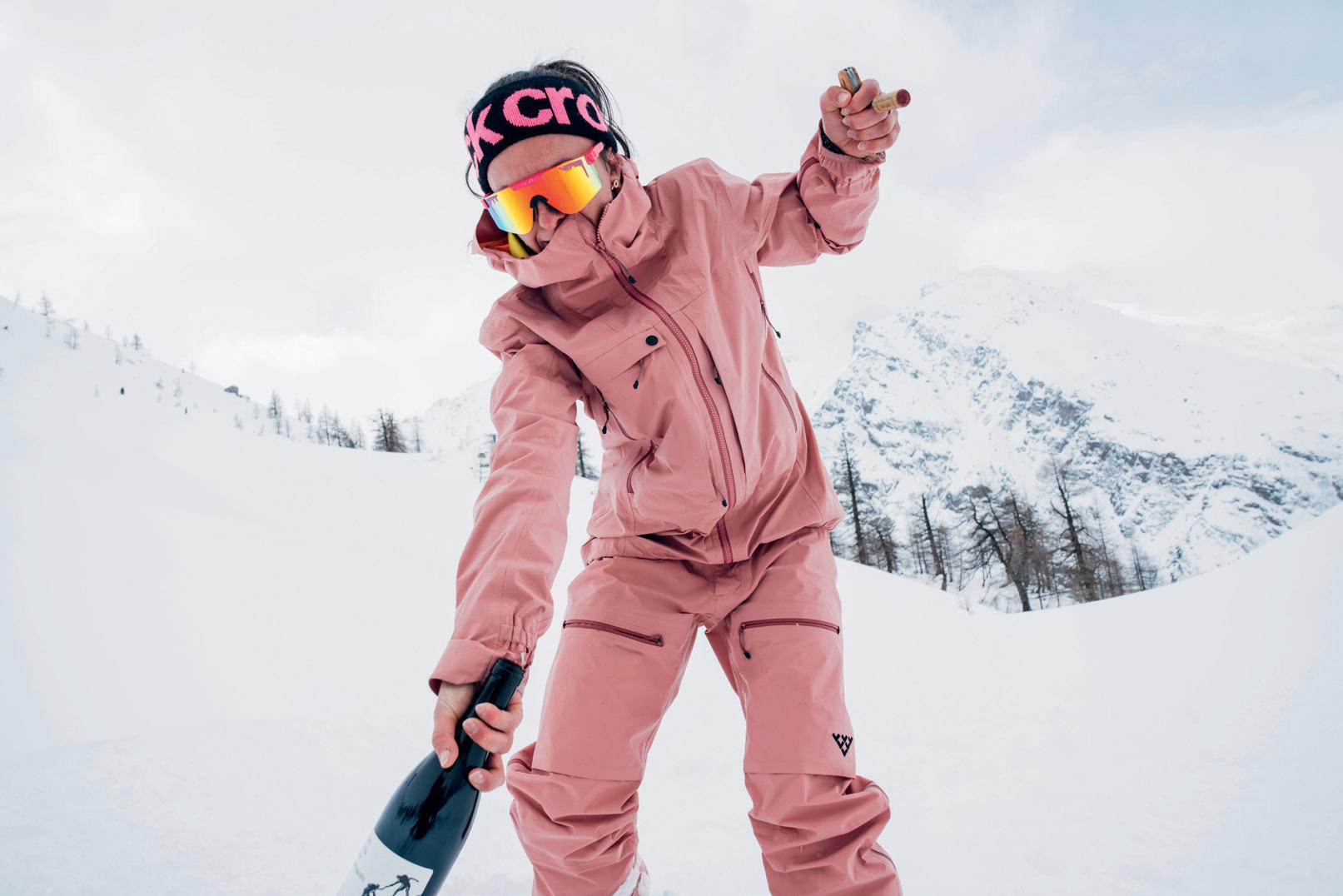
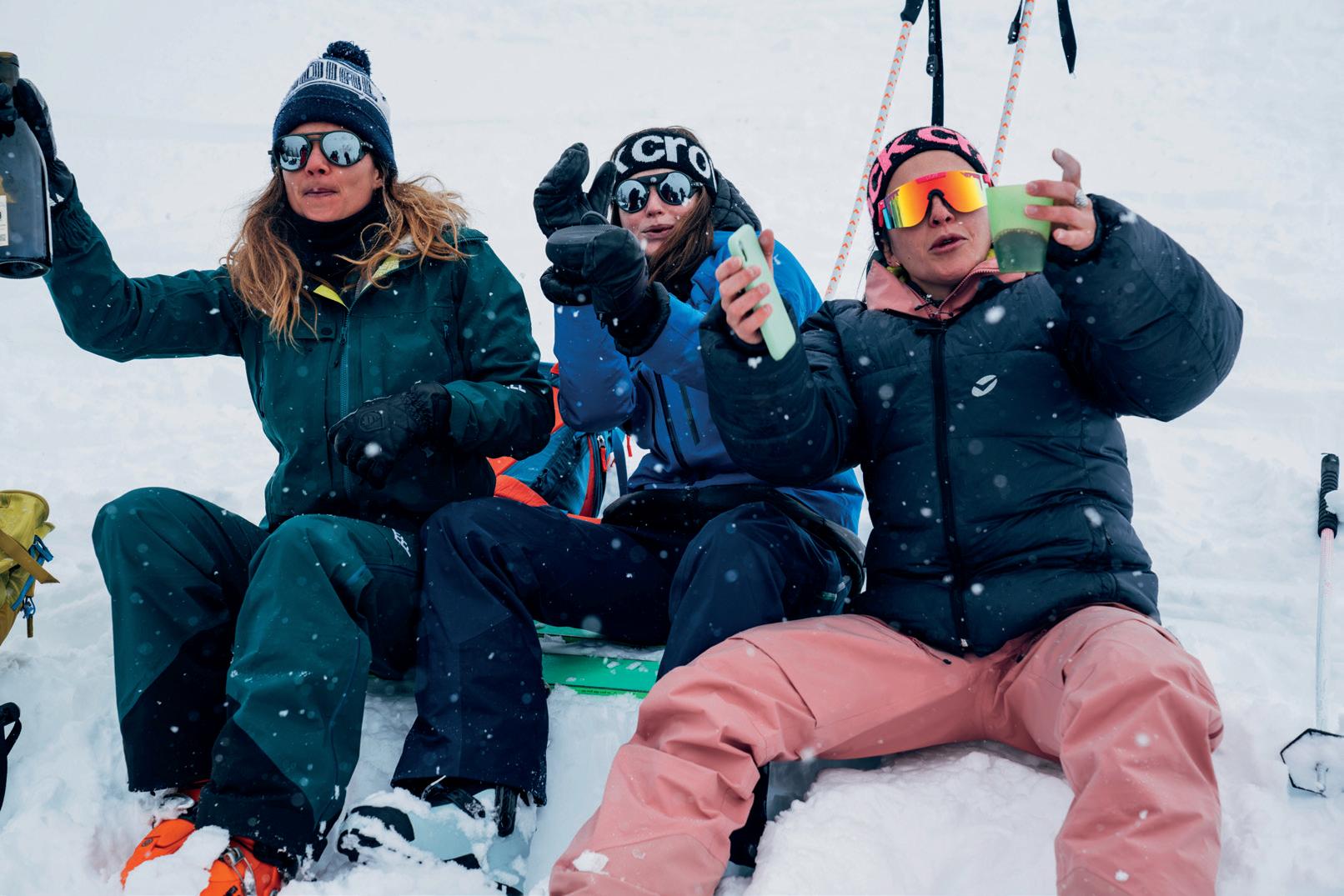
ses, almost ruins, with broken glass. The winter walk through the past continues until the reappearance of the electric blue pick-up. The arrival is imminent. The entrance to the small village looks like that of a Far West ranch. The cottage is made up of old buildings assembled by our Italian friend and mayor of Valgrisenche. Riccardo hosts us in the first barn which consists of four sleeping areas, an attic, a large kitchen and a bathroom that looks like the one you could see on a home decor magazine. All for less than €20. We inaugurate our arrival with an aristocratic gesture by sabering the champagne with the help of a sharp ski. There is nothing more satisfying than going to bed surrounded by a white blanket and waking up to a blue sky. It is 2021, a year that fluctuates between isolation and the closure of borders. The mountains are deserted and helicopters don't fly in this month of March. Silence and white powder are served to us on a silver platter. It's time to leave our oasis of peace. Riccardo confirms that a pile of old woolen blankets awaits us at the Bezzi bivouac. On the programme, Bec di Giasson, two nights at the Bezzi bivouac, amazing ski runs, Grande Traversiere, two nights at the Benevolo refuge, more skiing, return home. Four nights and five days with no one on the horizon.
The first day is long, we go up towards the Bec di Giasson through a thick and soft forest. No traces on the trees. The backpacks are heavy but our euphoria is so high that they seem to weigh a gram. It's -10 degrees, the snow is cold and light and the sky is of a piercing blue. Despite this idyllic setting, we re -
main vigilant. After a long climb and a quick sandwich we finally arrive at Bec di Giasson. We bring out the bottle of white wine to celebrate our first sunset. The Bezzi bivouac is not far away and the sun's rays keep us warm for a while longer. It's 5pm and it's still -10 degrees. We begin the descent towards the Bezzi, at the foot of the valley, on the other side of the Grande Sassière, the -10 turns into -15 in this small stone village. There are some buildings covered in snow, closed due to Covid pandemic. It takes us a while to find the bivouac. Once reached, we go up the few steps that separate us from the dormitory. We open the door, the beds are there but there are no blankets and there are only 2 logs of wood. It's still -15 degrees. A quick tour of the house confirms that the blankets will not appear and that a decision must be taken quickly. In twenty minutes we are back on skis. We have to travel across the valley to reach Arolla's dormitory. Night falls but despite the cold, our good mood does not give way. The day ends at 8pm with a warm and comforting welcome by Riccardo and his wife who bring us the leftovers of the legume soup and 7 small portions of crème caramel. After this quick return to childhood, we have to rethink the week's schedule. The following day is worthy of Japan, we continue our climb in the forest, the storm is coming but we don't care. Only 300 meters separate us from our base camp to the dormitory. The hours go by and the skis run fast. We laugh, dance, enjoy red wine, alone in the midst of this treasure chest of all-Italian beauty. The evening is dedicated to the preparation of the following
143
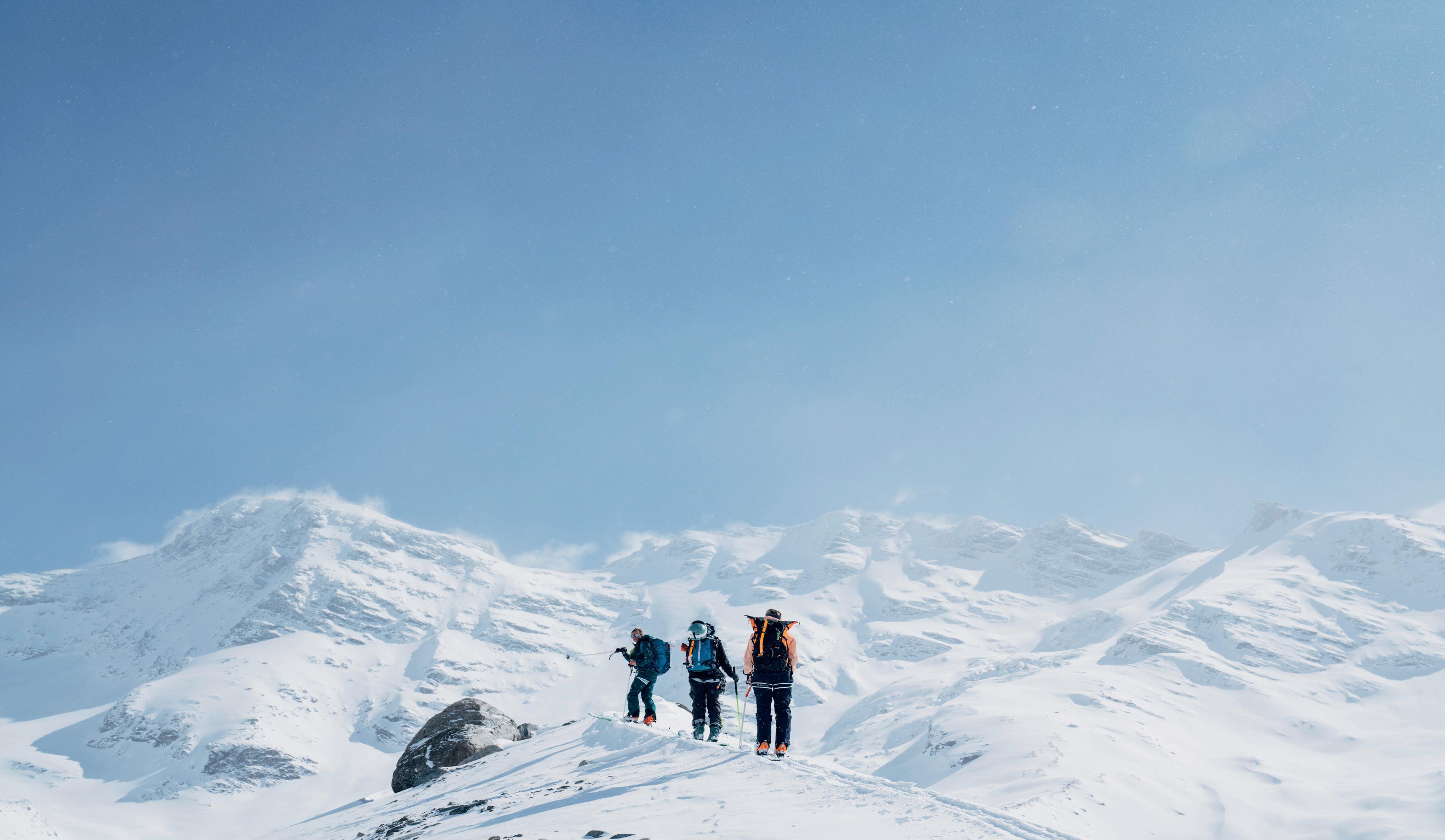


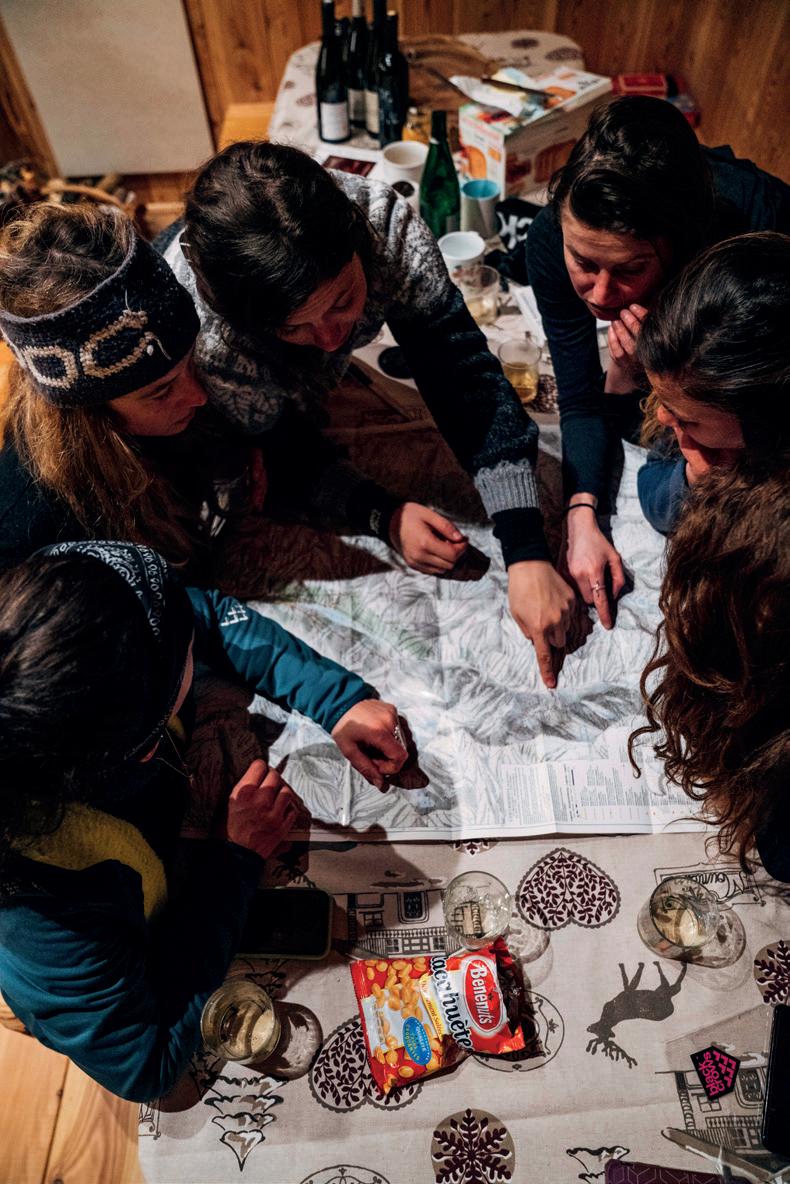
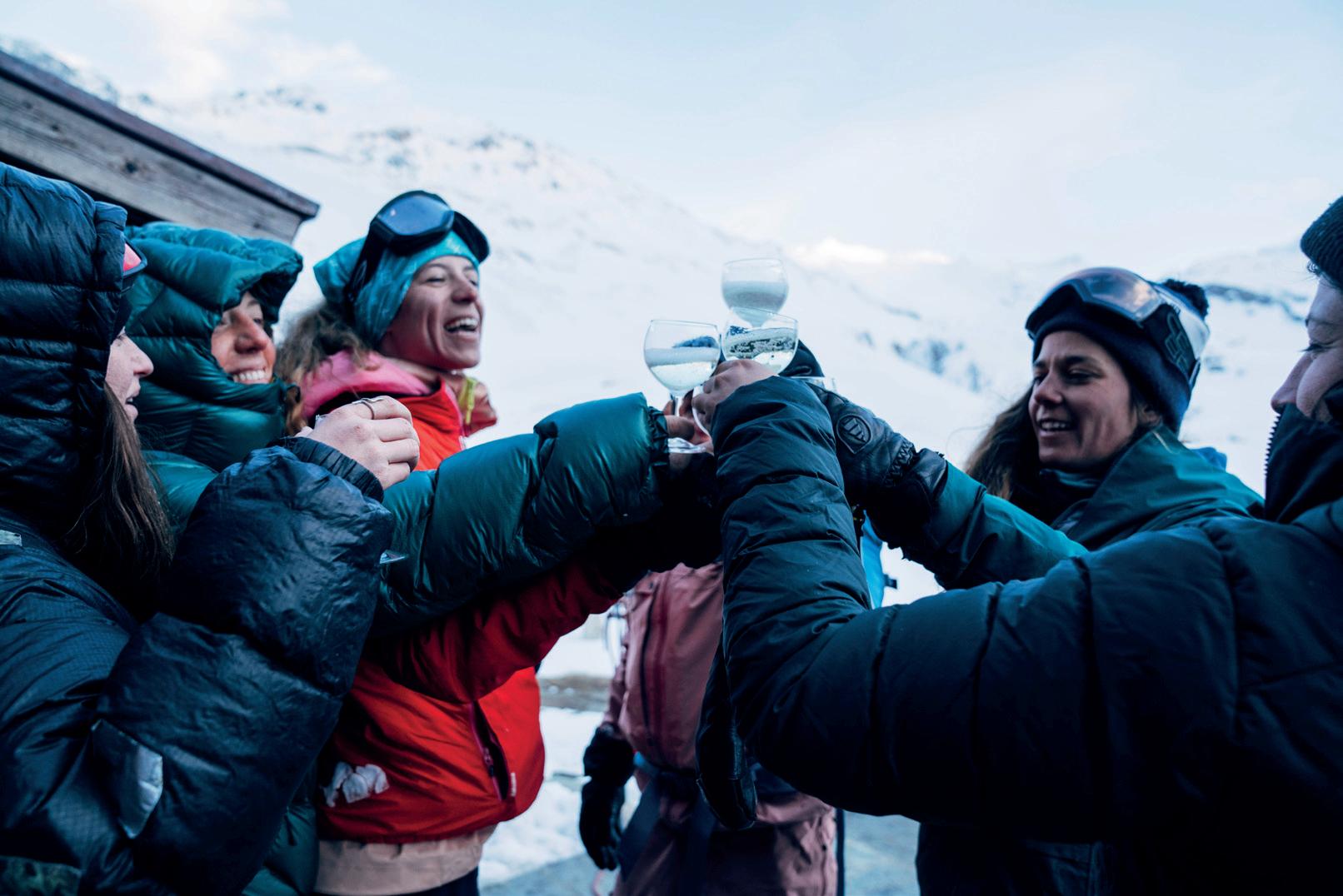
days. Dishes on the table and breadsticks in abundance, interspersed with a few dance steps. Red wine does its job, and it colors our cheeks. We stop in Sigaro after the dormitory, before taking the cars back to Val di Rheme. The hours in the car allow our numb bodies to rest. Getting out of the car is tiring, we have to leave our nest to face the low temperatures that await us on the way to the Benevolo refuge, but the spirits are joyful and the transition takes place at the rhythm of music. There is a nice climb that awaits us, with small paths and large rocks. We imagine the river flowing there in the summer. After two hours of climbing, we see a flag fluttering. We have arrived at our destination. A sumptuous range of mountains presents itself before us. Despite the multitude of exciting routes, it is hunger that accompanies our spirits. The fourteen feet under the table tremble with anticipation, stimulated by the sweet smell of soup and pasta. Burdened with the weight of Italian delicacies, we go to sleep in the 3-level bunk beds. Despite the low temperatures our feet had time to sweat. We let our socks dry on the rungs of the ladder while sleep kidnaps us and we fall asleep crushed by the weight of the blanket. The following day is blue, very blue. The sun is shining. It's almost time to go home but it's 11.30 and today we are lazy. We order prosecco and ravioli. Sun shining on the refuge, we settle down on the wooden terrace. Despite our relaxed attitude, our eyes scan the vertical couloir in front of us. The party continues. The loudspeaker echoes, the bubbles fizz and the coffees are consumed. It's 3pm. Time to go explore the couloir. A slight descent of fog immerses us in a dreamlike univer -
se. The sky is overcast and the sun continues to pierce the tops of the clouds with its last rays. The atmosphere is sacred. The couloir is easily accessible. We go around the hill that bears the name of “Truc de Tsanteleina” on the left, slightly uphill. The descent is short and efficient. Two hours later we're back, the dance of soups, pastries and fruit tarts resumes. Our last day will be long, the crossing that separates us from the last descent is windy. Skis and crampons bite into the snow with their sharp teeth. Despite the IGN map and Fatmap app, we take a wrong turn. The error is compensated for by a few ski traverses and a small climb. There is an anecdote that I will not tell you here, the one of "the parking lot, the parking lot!” If you're curious and you happen to come across one of the protagonists in a Chamonix cafe, don't hesitate to ask him. He will be happy to tell you about it!
147
The descent is short and efficient. Two hours later we're back, the dance of soups, pastries and fruit tarts resumes. Our last day will be long, the crossing that separates us from the last descent is windy. Skis and crampons bite into the snow with their sharp teeth.
Lise Billon Is #notherefortheglory
BY LISA MISCONEL
PHOTOS TAD MCCREA AND JAN NOVAK
Lise Billon is in Valence, in the south of France, and apart from chatting with me, the goal of the day is to have a nice coffee with her grandmother: luckily, I caught her in a quiet time after returning from her last trip to Patagonia, her fifth one. Messy hair and bright eyes longing for adventure. Adventurous is exactly the adjective Lise would like to be associated with. Not “cute” not “crazy”. But adventurous... and dreamy.
148
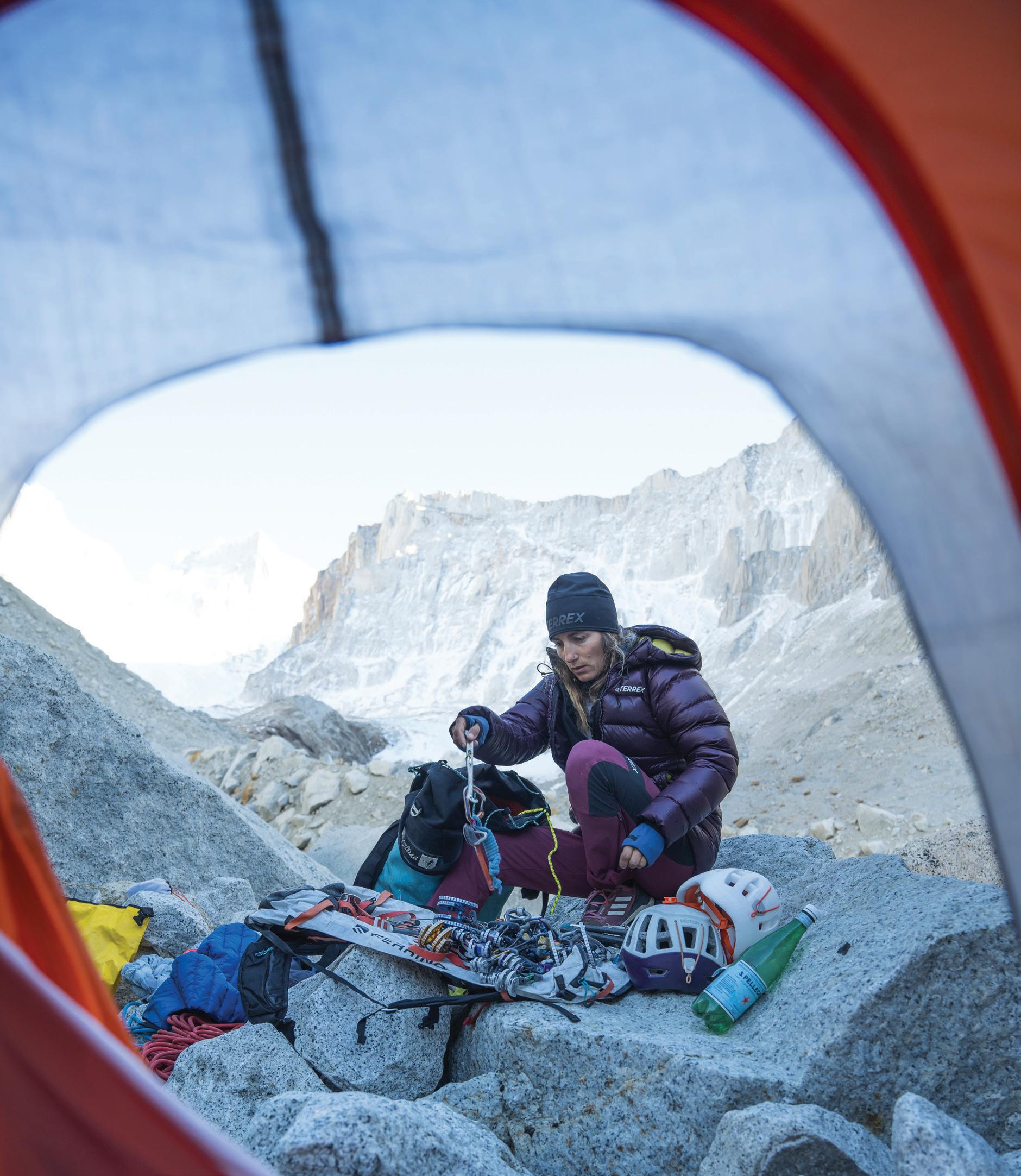
Despite the dreamy spirit, Lise gets things done... it's not like she's just sitting there dreaming. Mountains have always been a "family affair" to her: her father is a mountain guide, and despite she wasn't born in the mountains, she has always spent family weekends there hiking and climbing. In fact, when she was a teenager and wanted to rebel against her parents like teenagers do, her way was to reject climbing by taking up handball. This sounds like a funny story and who knows, maybe if it wasn’t for her strong attraction to the mountaineering community now she would hold few titles at the Handball World Cup instead of the Piolet D'Or. Like we were saying... from an early age she was close to what the mountaineering community and environment was all about, and while her friends were watching Barbie, she was dreaming of expeditions, storms, and portaledges on the walls of Patagonia.
Just like it happens in some movies, we can see her some years later as she climbs those same walls she used to dream of as a child. Long hair, easy laugh, determination. How did this expedition go? This is the fifth time I've come back from an expedition in Patagonia, the first times it was always about exploring very remote areas, whereas this time going to El Chaltén for me didn't really mean going on an expedition. You have all the services downtown, society, health services... Maybe 20 years ago it could have been called an expedition but not anymore, now you just go there and climb. This is because in the last few years I re-want to enjoy even the places where we have a guide book, we know the route and we don't have to do anything extraordinary or go unexplored places. During this project we had bad luck with the weather, it snowed a lot but the spirit of uncertainty was in a way a source of fun. We climbed known and non-extreme routes, nothing crazy but extremely beautiful.
Is that perhaps why on your socials you and Federica Mingolla have recently used the hashtag #notherefortheglory? You need to know that when you are in El Chaltén you have a lot of time to talk. So we have been philosophizing a little bit and... this is the fact: there is a lot of drama in El Chaltén, people go there and never come back. Sometimes because of unpredictable accidents, many others because of stupid mistakes and lack of experience or misjudgment, avoidable accidents. The fact that it has become a very popular destination has somehow made everyone forget that we are talking about high mountains, despite the fact that there is civilization downtown. Plus there is the topic, as always, of the reason why. Each of us practices mountaineering for different reasons, each pursuing his or her own goal. So some do it for recognition, some for a sense of freedom, some for pleasure, and some for fun. It is easy to lose one's focus in favor of glory and success, which today as never before - especially for us as women - is overwhelming. However, sometimes it is useful to remind oneself why we are here. We are here, at least I am here... to play. To me, mountaineering is a game and I want to have fun. There was a moment while climbing a route where we realized we were not having fun, the risk was considerable, and I said to myself, "Cmon! We're not here for glory and we're not having fun, let's go back down." Reaching a summit and glorifying myself without having fun doesn't matter to me at the moment. That doesn't mean I don't have ambition, don't get me wrong. I have great ambitions and plans but these are not necessarily aimed at success and glory. Instead, at other times in my career I was climbing to achieve success and the same led me to where I am now so I kind of contradict myself, but it's natural that over time motivations evolve along with you.
150
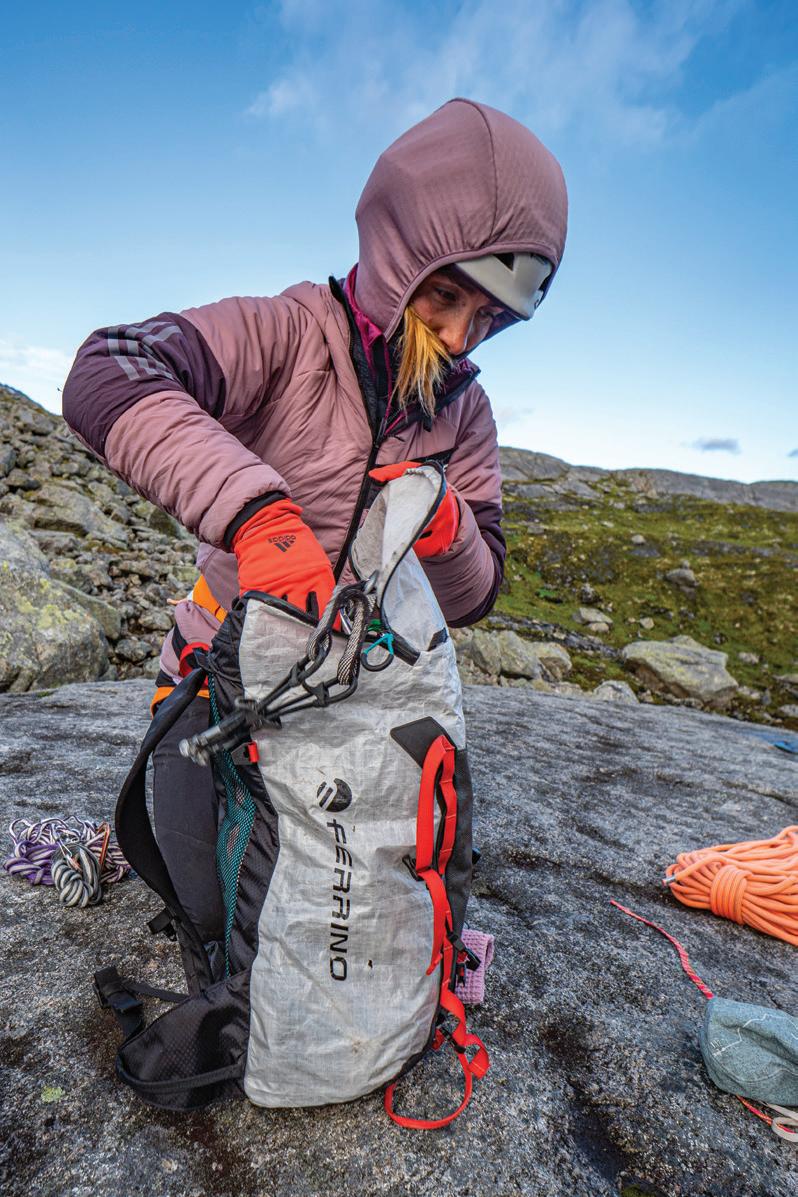
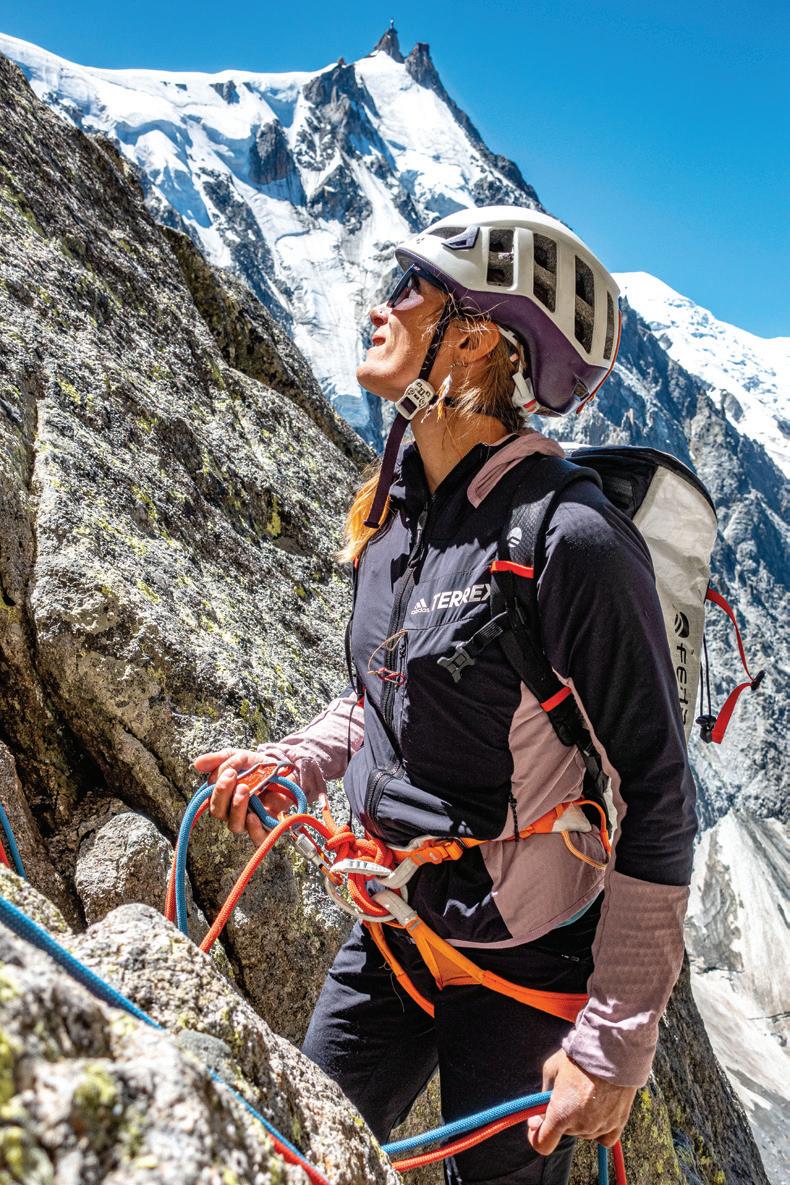

It's nice to see on your social page the smooth way you talk about the "failure" of a project or a route.... The simplicity with which you say, "whatever, it will be for the next one." I'm glad that this comes out! I want to spread the the message that there is no need to justify or blame yourself. Sometimes conditions do not allow us to succeed in a climb, sometimes we are tired, others we are not having fun and it is totally okay to go down and say, "This time it didn't work out, it will be for the next one."
You have also often addressed the subject of difficulty in finding partners.... Yes! And I speak for both men and women. You need someone who (especially in El Chaltén) you can get along with in the life downtown, who is a good friend who you love and with whom you share motivations and ambitions. Finding someone who meets all the points is difficult and for us women being few in the mountaineering world (excluding of course the 8000s, which is another story) the challenge is even more difficult. And it's not because I don't want to have male partners, but over the years I've realized that as a social matter, everything is easier with women. With a man you have to make sure that the relationship between you is clear and there are no misunderstandings, that the girlfriend is not jealous... this is the reason as simple as it is fundamental why I prefer to climb with other women, because it's easy, it's about personality and feeling. With Fede (Federica Mingolla, ed.) , although she is much stronger than me, the ambitions and motivation is the same and we understand each other great, even if she is even more hyperactive than me!
Speaking of your career, what events have made you who you are now? Obviously, the Piolet D'Or is the most important award I became known for, in 2016. But I think some of the success is almost more due to the fact that, I mean, I'm a woman and I'm a mountain guide and I
think there are not that many female mountain guides right now. Gradually the number is increasing but it didn't used to be that way. I'm not a performer, I'm certainly not the strongest mountaineer in the world even among women, but I'm very motivated and I'm constantly looking for new expeditions and projects. And it's not like I started I stopped after 5 years, I have been dedicating my life to the mountains for more than 10 years now. Maybe it's because I've always had a chaotic relationship with boys! Hahaha.
What do you consider to have been your greatest mountaineering achievement? 100% Cerro Murallón in Patagonia, it was my real first expedition and also the most important. I was very naïve and didn't even realize what I was actually doing. We spent thirty-two days in total autonomy, five of us carrying ten 20-30kg bags for up to 12 hours. No Sherpas or support, everything was in our hands. We also found ourselves in the middle of a storm and stayed eleven days on the wall without weather information because we had no availability of a good satellite or efficient devices.
And how did your mountaineering journey begin? What would you recommend to a child who, like you, dreams of big walls? Until I was eighteen I was struggling to close a 6b, I then started with ice climbing and taking part in courses organized by the French federation for young climbers. I never took part in competitions
152
I want to spread the the message that there is no need to justify or blame yourself. Sometimes conditions do not allow us to succeed in a climb, sometimes we are tired, others we are not having fun and it is totally okay to go down and say, "This time it didn't work out, it will be for the next one."

nor was I a strong climber. I went through associations, met people and made friends who shared my same passion and goals. You can also approach the world of mountaineering through ski mountaineering, and participating in courses and classes is important to gain knowledge and be able to go to the mountains on your own.
You are also a mountain guide, do you do this as a job at the moment or not anymore?
I used to work a lot, recently thanks to sponsors I can focus on my projects. However, I have continued to train a group of young girls: there are six of them and in a three-year course we teach them everything they need and then finish with an expedition. Over the years I have observed that it is not so much about teaching them technical skills as it is giving them confidence and teaching them that on their own they can succeed in what they aspire to. I would like to bring the concept of collectivity to the world of mountaineering, where success is often made up of individuals instead.
How do you see the role of women in the mountaineering scene? If years ago we had to demonstrate more to make our impact, what is happening today is a little different. The industry realized that there were not many women in this industry and for different reasons started working to change this by pushing young girls with no skills and putting them on stage as super heroines when in the end there was nothing crazy or heroic. For me what needs to come first is mountain education, I believe that to come to the surface you need to start from the core. It's not about putting a pair of pants and a jacket on a girl to make her a mountaineer and tell about adventures that are not true and who knows maybe even put her in danger. I feel very connected to that and that's why I work to give importance to values and passion first. It is not important that there is a large community of wo -
men, what is important is that there are female mountaineers who do it for their sake and passion within their possibilities. How do you choose your projects? I really like steep mountains. I don't care if they are the highest as much as they are unexplored. I am very curious and always try to find something I don't know just for the sake of exploration. When we went to Nepal, the idea was actually to go to Pakistan but we had problems with the visa and within a week we had to look for another destination, so if anyone ever wonders...yes, you can organize an expedition in less than a week and that's where being aligned with your team becomes essential.
What is your relationship like with Ferrino? I have been together with them since last year, and if there is one thing I like, it is when a brand contacts me and enthusiastically lets me know that they value having me on board. Communication is always effective and smooth, not to mention the time when, before I left for Patagonia, I found out that Anna, a woman, was holding the reins of the whole company. And I really thought to myself, "How cool is that?" Sponsors in the end are kind of like rope partners, you have to have the same vision and be able to work well together, it’s about human connection.
Plans for 2023? If everything works out, we'd like to try Pakistan again, but we'll see if we can put all the pieces together. And again Patagonia, my special place.
You can also approach the world of mountaineering through ski mountaineering, and participating in courses and classes is important to gain knowledge and be able to go to the mountains on your own.
154



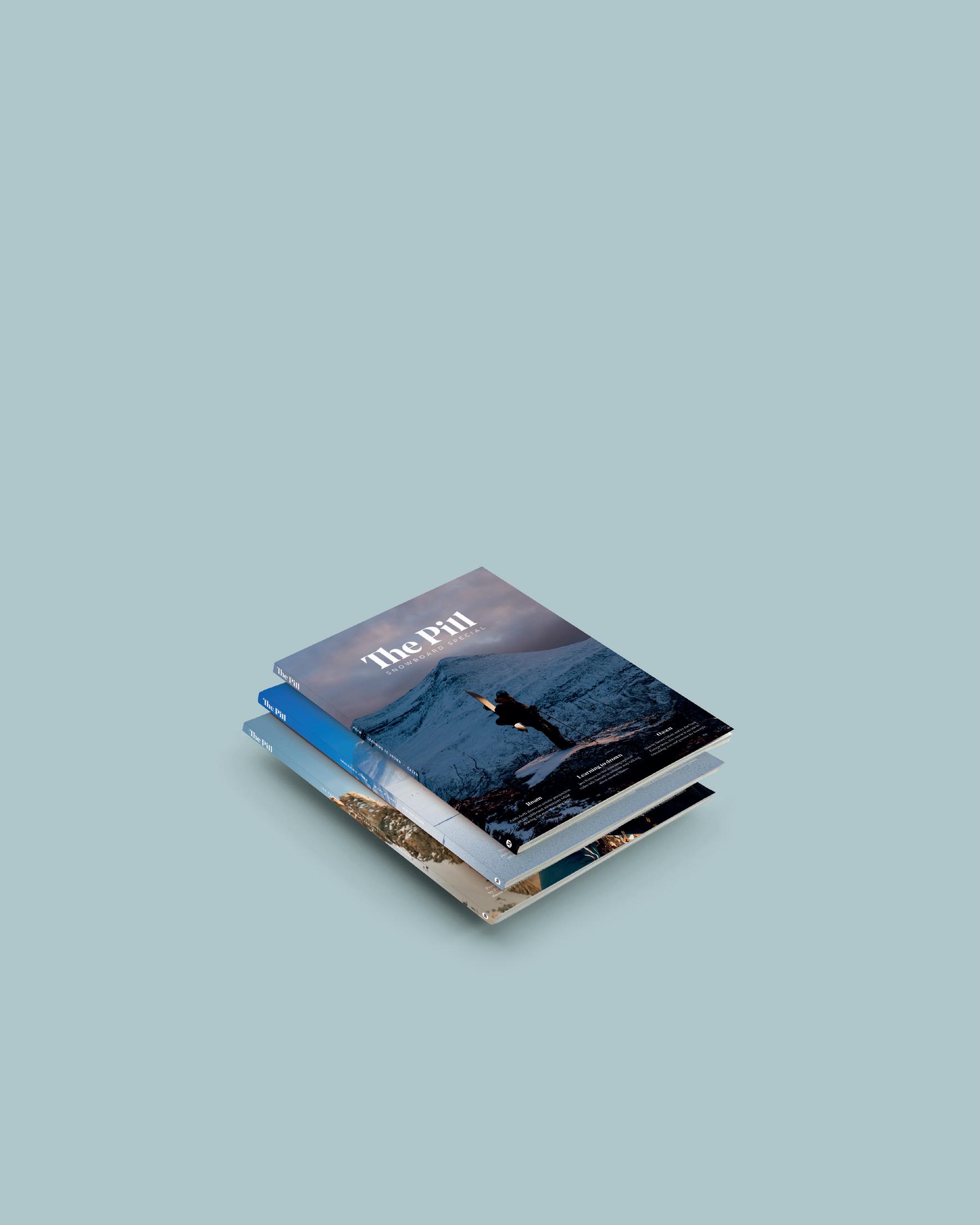
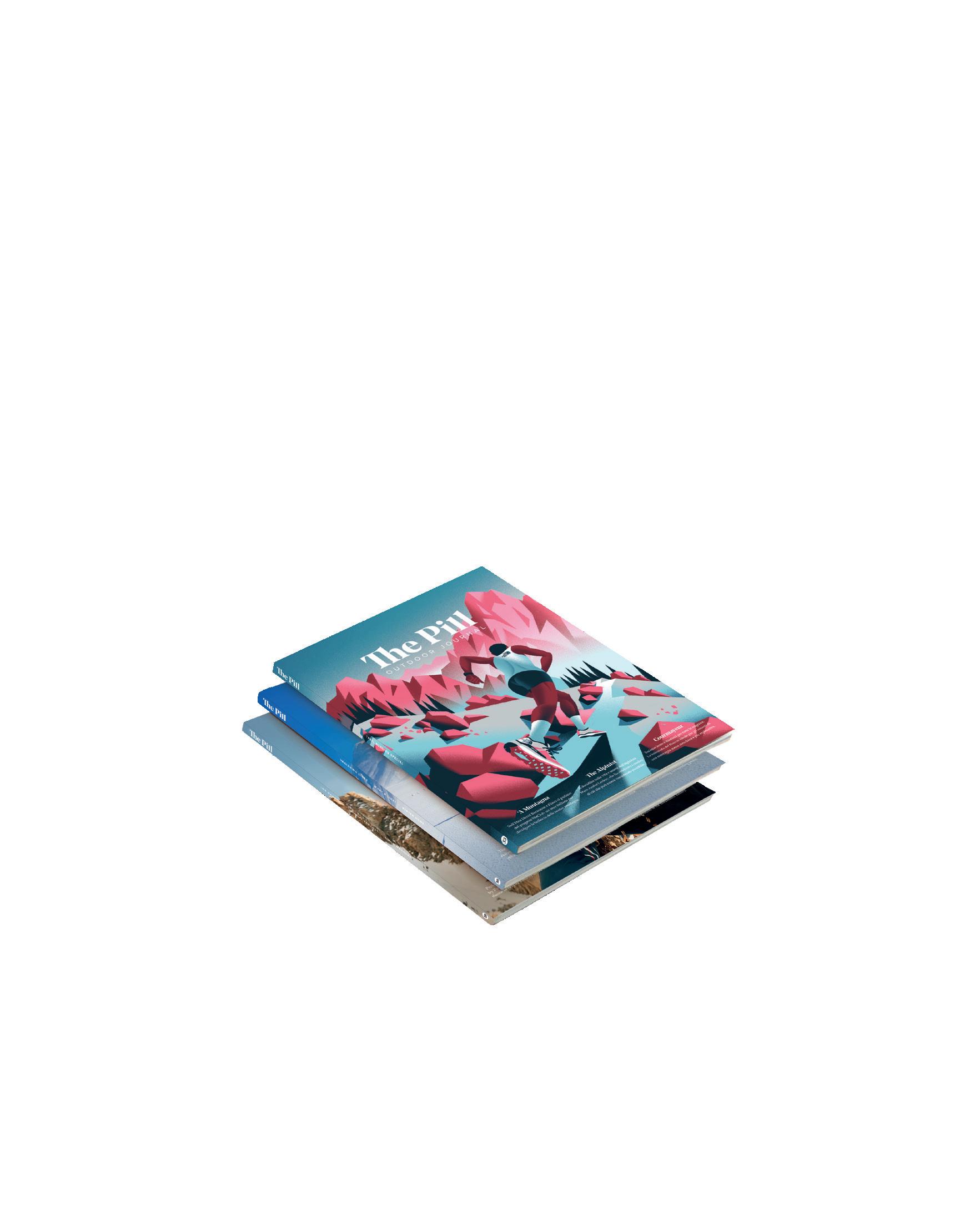
1607. LEADING RELAX HOTEL MARIA 1608. RESIDENCE LASTÈ 1609. RESORT DOLCE CASA 1610. HOTEL BELLAVISTA 1611. WINE HOTEL SAN GIACOMO 1612. HOTEL ALPECHIARA 1613. HOTEL PIANDINEVE 1614. SPORT HOTEL VITTORIA 1615. ALPIN HOTEL SONNBLICK 1616. HOTEL WALDHOF 1617. HOTEL BARRAGE 1618. HOTEL VILLA GLICINI 1619. HOTEL EUROPEO 1620. BEVERLY HOTEL 1621. DOLOMEET BOUTIQUE HOTEL 1622. HOTEL CRISTINA 1623. LEFAY RESORT&SPA DOLOMITI 1624. OLYMPIC PALACE 1625. BLU HOTEL ACQUASERIA 1626. GRAND HOTEL PARADISO 1627. HOTEL GARNI SORRISO 1628. HOTEL MIRELLA 1629. JOLLY RESORT&SPA 1630. RESIDENCE CLUB 1631. CHALET LA CIASETA 1632. FAMILY HOTEL GRAN BAITA 1633. HOTEL ANDA 1634. HOTEL TERME ANTICO BAGNO 1635. WELLNESS FASSA 1636. HOTEL CASTEL PIETRA 1637. FALKENSTEINER HOTEL 1638. HOTEL RUDOLF 1639. K1 MOUNTAIN CHALET 1640. MAJESTIC HOTEL & SPA RESORT 1641. PARKHOTEL SCHÖNBLICK 1642. ROYAL HOTEL HINTERHUBER 1643. GRAND HOTEL LIBERTY 1644. GRAND HOTEL RIVA 1645. HOTEL ANTICO BORGO 1646. HOTEL EUROPA 1647. HOTEL LIDO PALACE 1648. HOTEL LUISE 1649. HOTEL PORTICI 1650. HOTEL SOLE RELAX 1651. VILLA NICOLLI 1652. HOTEL LEON D’ORO 1653. HOTEL BELLERIVE 1654. HOTEL LAURIN 1655. HOTEL SALÒ DU PARC 1656. RIVALTA LIFE STYLE HOTEL 1657. HOTEL ORSO GRIGIO 1658. HOTEL VILLA STEFANIA 1659. NATURHOTEL LEITLHOF 1660. PARKHOTEL SOLE PARADISO 1661. POST HOTEL 1662. RESIDENCE SILVIA 1663. SPORTHOTEL TYROL 1664. ZIN SENFTER RESIDENCE 1665. HOTEL LA VETTA 1666. HOTEL LADINIA 1667. RENÈ DOLOMITES BOUTIQUE 1668. X ALP HOTEL 1669. HOTEL MONTE SELLA 1670. CHRISTOPHORUS MOUNTAIN 1671. HOTEL AL SONNENHOF 1672. HOTEL CHALET CORSO 1673. HOTEL CONDOR 1674. HOTEL MAREO DOLOMITES 1675. HOTEL TERESA 1676. RESIDENCE PLAN DE CORONES 1677. SPORTHOTEL EXCLUSIVE 1678. HOTEL BAITA FIORITA 1679. HOTEL RESIDENCE 3 SIGNORI 1680. HOTEL VEDIG 1681. CHABERTON LODGE 1682. HOTEL LA TORRE 1683. RELAIS DES ALPES 1684. AGRITURISMO MASO LARCIUNEI 1685. APARTMENTS SUNELA 1686. ARTHOTEL ANTERLEGHES 1687. ASTOR SUITES B&B 1688. BIANCANEVE FAMILY HOTEL 1689. BOUTIQUE HOTEL NIVES 1690. CHALET ELISABETH 1691. GRANBAITA DOLOMITES 1692. HOTEL AARITZ 1693. HOTEL ACADIA 1694. HOTEL ALPENROYAL 1695. HOTEL ANTARES 1696. HOTEL CHALET S 1697. HOTEL CONTINENTAL 1698. HOTEL DORFER 1699. HOTEL FANES 1700. HOTEL FREINA 1701. HOTEL GARNI DOLOMIEU 1702. HOTEL GENZIANA 1703. HOTEL MIRAVALLE 1704. HOTEL OSWALD 1705. HOTEL PORTILLO DOLOMITES 1706. HOTEL SOMONT 1707. HOTEL SUN VALLEY 1708. HOTEL TYROL 1709. HOTEL WELPONER 1710. LUXURY CHALET PLAZOLA 1711. MOUNTAIN DESIGN HOTEL 1712. MOUNTAIN HOME VILLA ANNA 1713. RESIDENCE ISABELL 1714. RESIDENCE VILLA FUNTANES 1715. RESIDENCE VILLA GRAN BAITA 1716. THE LAURIN SMALL&CHARMING 1717. WELLNESS RESIDENCE VILLA 1718. RESIDENCE VILLA AL SOLE 1719. HOTEL TRE CIME SESTO 1720. ALPENWELLNESSHOTEL ST.VEIT 1721. APARTMENTS RIEGA 1722. BERGHOTEL SEXTEN 1723. CIMA DODICI B&B 1724. FAMILY RESORT RAINER 1725. HOTEL ALPENBLICK 1726. HOTEL DOLOMITENHOF 1727. HOTEL MONIKA 1728. HOTEL MONTE CROCE 1729. BAD MOOS 1730. GRAND HOTEL SESTRIERE 1731. HOTEL CRISTALLO 1732. HOTEL IL FRAITEVINO 1733. HOTEL SHACKLETON MOUNTAIN 1734. PRINCIPI DI PIEMONTE 1735. ACTIVEHOTEL DIANA 1736. ARTNATUR DOLOMITES HOTEL 1737. HOTEL WALDRAST DOLOMITI 1738. MIRABELL ALPINE GARDEN 1739. NATUR RESIDENCE 1740. SCHWARZER ADLER 1741. SENSORIA DOLOMITES 1742. DOLMITES NATURE 1743. BAD RATZES 1744. HOTEL CEVEDALE 1745. PARADIES MOUNTAIN RESORT 1746. GRAND HOTEL DELLA POSTA 1747. GRAND HOTEL BRISTOL 1748. GRAND HOTEL DES ILES 1749. HOTEL ASTORIA 1750. HOTEL LA PALMA 1751. HOTEL MILAN SPERANZA 1752. HOTEL REGINA PALACE 1753. HOTEL EDELHOF 1754. HOTEL IL CERVO 1755. CURT DI CLEMENT ECO 1756. HOTEL CENTRALE 1757. HOTEL DOSSES 1758. ALPINHOTEL VAJOLET 1759. GRAND HOTEL TREMEZZO 1760. HOTEL LENNO 1761. ALBERGO ACCADEMIA 1762. BOUTIQUE EXCLUSIVE B&B 1763. GRAND HOTEL TRENTO 1764. HOTEL AMERICA 1765. HOTEL BUONCONSIGLIO 1766. BÄRENHOTEL 1767. BERGHOTEL HOTEL 1768. HOTEL CHRISTOPH 1769. KRONPLATZ-RESORT 1770. HOTEL DU LAC 1771. HOTEL ROYAL VICTORIA 1772. HOTEL VILLA CIPRESSI 1773. GRAND HOTEL MAJESTIC 1774. HOTEL ANCORA 1775. HOTEL BELVEDERE 1776. HOTEL PALLANZA 1777. GRAND HOTEL MIRAMONTI 1778. HOTEL DELLE ALPI 1779. HOTEL RESTAURANT LILIE 1780. WELLNESS PARADISE MOENA MOENA MOENA MONTEBELLUNA ITA ITA ITA ITA
BY DAVIDE FIORASO PHOTO SOPHIE ODELBERG

“You are the sum total of everything you’ve ever seen, heard, eaten, smelled, been told, forgot - it’s all there. Everything influences each of us, and because of that I try to make sure that my experiences are positive.”
– Maya Angelou
Poet and writer, Maya Angelou is considered one of the most influential African-American intellectuals ever, as well as an important advocate for civil rights. In the space of half a century she has published essays, collections of poetry, plays and screenplays. She has received do -
zens of awards and more than fifty honorary degrees. She is best known for the seven autobiographies focused on her adolescent experiences, a stronghold of African-American culture.
The quotation with which we want to close this issue is very clear: between our interiority and the outside world there is a continuous exchange of information that we receive in the form of impressions and feelings. Even in what we believe we don't pay importance to, but we involuntarily absorb and that influen -
ces us: music, images, smells that are imprinted in our unconscious.
We cannot think of isolating ourselves from the rest of the world, deluding ourselves that we can exclude what we don't want on command. However, we can select the contents we want to absorb, making conscious choices. Mindfulness, being vigilant while carrying out any daily action, is essential in order not to be contaminated by what is of low quality. From that psychological "garbage" that is increasingly affecting our lives.
160
LAST WORD
INTRODUCING VAPORLITE ™
The Perfect Choice for Your Next Run
Ultralightweight, with UPF 50+ sun protection for peak-summer sun

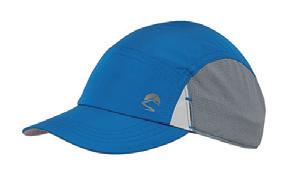


100% recycled bluesign® main body fabric (solid colors only)
Crushable design, with integrated Sunglass Lock™
VaporLite™ Rush Visor VaporLite™ Stride Cap VaporLite™ Tempo Bucket Learn more at sundayafternoons.com | Italy Inquiries: info@asagency.it | Europe Inquiries: c.bonollo@sundayafternoons.com







































































































































































 BY DAVIDE FIORASO
BY DAVIDE FIORASO







































 BY SILVIA GALLIANI
BY SILVIA GALLIANI




 BY LISA MISCONEL PHOTOS LUCA MORANDINI
BY LISA MISCONEL PHOTOS LUCA MORANDINI


 BY EVA TOSCHI PHOTOS PAOLO SARTORI
BY EVA TOSCHI PHOTOS PAOLO SARTORI
 BY EVA TOSCHI PHOTOS PAOLO SARTORI
BY EVA TOSCHI PHOTOS PAOLO SARTORI


















 BY SILVIA GALLIANI
BY SILVIA GALLIANI














 BY MARTA MANZONI PHOTOS CAMILLA PIZZINI
BY MARTA MANZONI PHOTOS CAMILLA PIZZINI














 BY ILARIA CHIAVACCI
PHOTOS DANIELE CUOGHI
BY ILARIA CHIAVACCI
PHOTOS DANIELE CUOGHI


























 BY FILIPPO CAON PHOTOS ALEXIS BERG
BY FILIPPO CAON PHOTOS ALEXIS BERG












 BY OONA SKARI DUROY PHOTOS LAYLA KERLEY
BY OONA SKARI DUROY PHOTOS LAYLA KERLEY






















